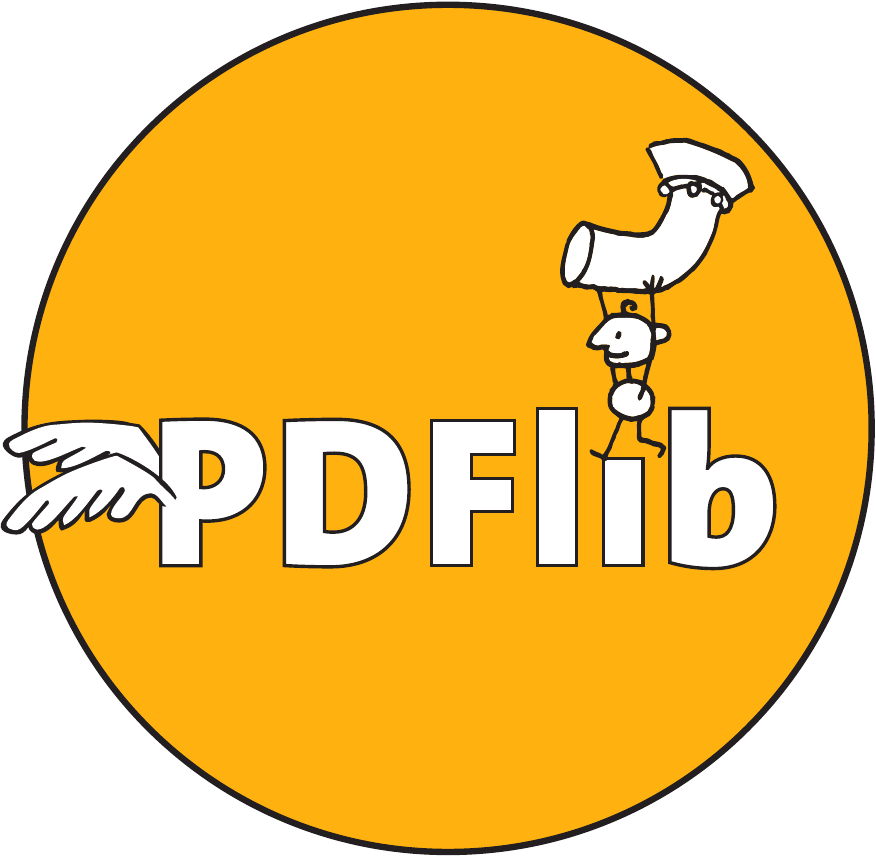PDFlib 6 Reference Manual
User Manual:
Open the PDF directly: View PDF ![]() .
.
Page Count: 312 [warning: Documents this large are best viewed by clicking the View PDF Link!]
- Contents
- 0 Applying the PDFlib License Key
- 1 Introduction
- 2 PDFlib Language Bindings
- 3 PDFlib Programming
- 3.1 General Programming
- 3.1.1 PDFlib Program Structure and Function Scopes
- 3.1.2 Parameters
- 3.1.3 Exception Handling
- 3.1.4 Option Lists
- 3.1.5 The PDFlib Virtual File System (PVF)
- 3.1.6 Resource Configuration and File Searching
- 3.1.7 Generating PDF Documents in Memory
- 3.1.8 Using PDFlib on EBCDIC-based Platforms
- 3.1.9 Large File Support
- 3.2 Page Descriptions
- 3.3 Working with Color
- 3.4 Hypertext Elements
- 3.1 General Programming
- 4 Text Handling
- 4.1 Overview of Fonts and Encodings
- 4.2 Font Format Details
- 4.3 Font Embedding and Subsetting
- 4.4 Encoding Details
- 4.5 Unicode Support
- 4.6 Text Metrics and Text Variations
- 4.7 Chinese, Japanese, and Korean Text
- 4.8 Placing and Fitting Single-Line Text
- 4.9 Multi-Line Textflows
- 4.9.1 Placing Textflows in the Fitbox
- 4.9.2 Paragraph Formatting Options
- 4.9.3 Inline Option Lists and Macros
- 4.9.4 Tab Stops
- 4.9.5 Numbered Lists
- 4.9.6 Control Characters, Character Mapping, and Symbol Fonts
- 4.9.7 Hyphenation
- 4.9.8 Controlling the Linebreak Algorithm
- 4.9.9 Formatting CJK Text with Textflow
- 5 Importing and Placing Objects
- 6 Variable Data and Blocks
- 7 Generating various PDF Flavors
- 8 API Reference for PDFlib, PDI, and PPS
- A Literature
- B PDFlib Quick Reference
- C Revision History
- Index

Copyright © 1997–2004 PDFlib GmbH and Thomas Merz. All rights reserved.
PDFlib GmbH
Tal 40, 80331 München, Germany
www.pdflib.com
phone +49 • 89 • 29 16 46 87
fax +49 • 89 • 29 16 46 86
If you have questions check the PDFlib mailing list and archive at groups.yahoo.com/group/pdflib
Licensing contact: sales@pdflib.com
Support for commercial PDFlib licensees: support@pdflib.com (please include your license number)
This publication and the information herein is furnished as is, is subject to change without notice, and
should not be construed as a commitment by PDFlib GmbH. PDFlib GmbH assumes no responsibility or lia-
bility for any errors or inaccuracies, makes no warranty of any kind (express, implied or statutory) with re-
spect to this publication, and expressly disclaims any and all warranties of merchantability, fitness for par-
ticular purposes and noninfringement of third party rights.
PDFlib and the PDFlib logo are registered trademarks of PDFlib GmbH. PDFlib licensees are granted the
right to use the PDFlib name and logo in their product documentation. However, this is not required.
Adobe, Acrobat, and PostScript are trademarks of Adobe Systems Inc. AIX, IBM, OS/390, WebSphere, iSeries,
and zSeries are trademarks of International Business Machines Corporation. ActiveX, Microsoft, Windows,
and Windows NT are trademarks of Microsoft Corporation. Apple, Macintosh and TrueType are trademarks
of Apple Computer, Inc. Unicode and the Unicode logo are trademarks of Unicode, Inc. Unix is a trademark
of The Open Group. Java and Solaris are trademarks of Sun Microsystems, Inc. HKS is a registered trade-
mark of the HKS brand association: Hostmann-Steinberg, K+E Printing Inks, Schmincke. Other company
product and service names may be trademarks or service marks of others.
PANTONE® colors displayed in the software application or in the user documentation may not match
PANTONE-identified standards. Consult current PANTONE Color Publications for accurate color. PANTONE®
and other Pantone, Inc. trademarks are the property of Pantone, Inc. © Pantone, Inc., 2003.
Pantone, Inc. is the copyright owner of color data and/or software which are licensed to PDFlib GmbH to
distribute for use only in combination with PDFlib Software. PANTONE Color Data and/or Software shall
not be copied onto another disk or into memory unless as part of the execution of PDFlib Software.
PDFlib contains modified parts of the following third-party software:
ICClib, Copyright © 1997-2002 Graeme W. Gill
GIF image decoder, Copyright © 1990-1994 David Koblas
PNG image reference library (libpng), Copyright © 1998-2004 Glenn Randers-Pehrson
Zlib compression library, Copyright © 1995-2002 Jean-loup Gailly and Mark Adler
TIFFlib image library, Copyright © 1988-1997 Sam Leffler, Copyright © 1991-1997 Silicon Graphics, Inc.
Cryptographic software written by Eric Young, Copyright © 1995-1998 Eric Young (eay@cryptsoft.com)
Independent JPEG Group’s JPEG software, Copyright © 1991-1998, Thomas G. Lane
PDFlib contains the RSA Security, Inc. MD5 message digest algorithm.
Viva Software GmbH contributed improvements to the font handling for Mac OS.
Author: Thomas Merz
Design and illustrations: Alessio Leonardi
Quality control (manual): Katja Schnelle Romaus, Kurt Stützer
Quality control (software): a cast of thousands

Contents 3
Contents
0 Applying the PDFlib License Key 9
1 Introduction 11
1.1 PDFlib Programming 11
1.2 Major new Features in PDFlib 6 13
1.3 PDFlib Features 15
1.4 Availability of Features in different Products 17
2 PDFlib Language Bindings 19
2.1 Overview 19
2.2 Cobol Binding 20
2.2.1 Special Considerations for Cobol 20
2.2.2 The »Hello world« Example in Cobol 20
2.3 COM Binding 24
2.4 C Binding 24
2.4.1 Availability and Special Considerations for C 24
2.4.2 The »Hello world« Example in C 24
2.4.3 Using PDFlib as a DLL loaded at Runtime 25
2.4.4 Error Handling in C 26
2.4.5 Memory Management in C 27
2.4.6 Unicode in the C language binding 28
2.5 C++ Binding 28
2.5.1 Availability and Special Considerations for C++ 28
2.5.2 The »Hello world« Example in C++ 28
2.5.3 Error Handling in C++ 29
2.5.4 Memory Management in C++ 29
2.5.5 Unicode in the C++ language binding 29
2.6 Java Binding 30
2.6.1 Installing the PDFlib Java Edition 30
2.6.2 The »Hello world« Example in Java 31
2.6.3 Error Handling in Java 32
2.7 .NET Binding 33
2.8 Perl Binding 33
2.8.1 Installing the PDFlib Perl Edition 33
2.8.2 The »Hello world« Example in Perl 33
2.8.3 Error Handling in Perl 34
2.9 PHP Binding 34
2.9.1 Installing the PDFlib PHP Edition 34
2.9.2 The »Hello world« Example in PHP 35

4Contents
2.9.3 Error Handling in PHP 37
2.10 Python Binding 38
2.10.1 Installing the PDFlib Python Edition 38
2.10.2 The »Hello world« Example in Python 38
2.10.3 Error Handling in Python 38
2.11 REALbasic Binding 39
2.12 RPG Binding 39
2.12.1 Compiling and Binding RPG Programs for PDFlib 39
2.12.2 The »Hello world« Example in RPG 39
2.12.3 Error Handling in RPG 41
2.13 Tcl Binding 43
2.13.1 Installing the PDFlib Tcl Edition 43
2.13.2 The »Hello world« Example in Tcl 43
2.13.3 Error Handling in Tcl 44
3 PDFlib Programming 45
3.1 General Programming 45
3.1.1 PDFlib Program Structure and Function Scopes 45
3.1.2 Parameters 45
3.1.3 Exception Handling 46
3.1.4 Option Lists 48
3.1.5 The PDFlib Virtual File System (PVF) 50
3.1.6 Resource Configuration and File Searching 51
3.1.7 Generating PDF Documents in Memory 55
3.1.8 Using PDFlib on EBCDIC-based Platforms 55
3.1.9 Large File Support 56
3.2 Page Descriptions 57
3.2.1 Coordinate Systems 57
3.2.2 Page Sizes and Coordinate Limits 59
3.2.3 Paths 60
3.2.4 Templates 61
3.3 Working with Color 63
3.3.1 Color and Color Spaces 63
3.3.2 Patterns and Smooth Shadings 63
3.3.3 Spot Colors 64
3.3.4 Color Management and ICC Profiles 67
3.4 Hypertext Elements 71
3.4.1 Examples for Creating Hypertext Elements 71
3.4.2 Formatting Options for Text Fields 74
4 Text Handling 77
4.1 Overview of Fonts and Encodings 77
4.1.1 Supported Font Formats 77
4.1.2 Encodings 78

Contents 5
4.1.3 Support for the Unicode Standard 79
4.2 Font Format Details 80
4.2.1 PostScript Fonts 80
4.2.2 TrueType and OpenType Fonts 81
4.2.3 User-Defined (Type 3) Fonts 83
4.3 Font Embedding and Subsetting 84
4.3.1 How PDFlib Searches for Fonts 84
4.3.2 Font Embedding 85
4.3.3 Font Subsetting 87
4.4 Encoding Details 89
4.4.1 8-Bit Encodings 89
4.4.2 Symbol Fonts and Font-specific Encodings 92
4.4.3 Glyph ID Addressing for TrueType and OpenType Fonts 93
4.4.4 The Euro Glyph 93
4.5 Unicode Support 95
4.5.1 Unicode for Page Content and Hypertext 95
4.5.2 Content Strings, Hypertext Strings, and Name Strings 96
4.5.3 String Handling in Unicode-capable Languages 97
4.5.4 String Handling in non-Unicode-capable Languages 98
4.5.5 Character References 100
4.5.6 Unicode-compatible Fonts 102
4.6 Text Metrics and Text Variations 104
4.6.1 Font and Character Metrics 104
4.6.2 Kerning 105
4.6.3 Text Variations 106
4.7 Chinese, Japanese, and Korean Text 108
4.7.1 CJK support in Acrobat and PDF 108
4.7.2 Standard CJK Fonts and CMaps 108
4.7.3 Custom CJK Fonts 112
4.7.4 Forcing monospaced Fonts 114
4.8 Placing and Fitting Single-Line Text 115
4.8.1 Simple Text Placement 115
4.8.2 Placing Text in a Box 116
4.8.3 Aligning Text 117
4.9 Multi-Line Textflows 118
4.9.1 Placing Textflows in the Fitbox 119
4.9.2 Paragraph Formatting Options 120
4.9.3 Inline Option Lists and Macros 121
4.9.4 Tab Stops 123
4.9.5 Numbered Lists 124
4.9.6 Control Characters, Character Mapping, and Symbol Fonts 125
4.9.7 Hyphenation 127
4.9.8 Controlling the Linebreak Algorithm 129
4.9.9 Formatting CJK Text with Textflow 132

6Contents
5 Importing and Placing Objects 133
5.1 Importing Raster Images 133
5.1.1 Basic Image Handling 133
5.1.2 Supported Image File Formats 134
5.1.3 Image Masks and Transparency 136
5.1.4 Colorizing Images 138
5.1.5 Multi-Page Image Files 139
5.1.6 OPI Support 139
5.2 Importing PDF Pages with PDI (PDF Import Library) 140
5.2.1 PDI Features and Applications 140
5.2.2 Using PDI Functions with PDFlib 140
5.2.3 Acceptable PDF Documents 142
5.3 Placing Images and Imported PDF Pages 144
5.3.1 Scaling, Orientation, and Rotation 144
5.3.2 Adjusting the Page Size 146
6 Variable Data and Blocks 149
6.1 Installing the PDFlib Block Plugin 149
6.2 Overview of the PDFlib Block Concept 150
6.2.1 Complete Separation of Document Design and Program Code 150
6.2.2 Block Properties 151
6.2.3 Why not use PDF Form Fields? 152
6.3 Creating PDFlib Blocks 154
6.3.1 Creating Blocks interactively with the PDFlib Block Plugin 154
6.3.2 Editing Block Properties 156
6.3.3 Copying Blocks between Pages and Documents 157
6.3.4 Converting PDF Form Fields to PDFlib Blocks 159
6.4 Standard Properties for Automated Processing 161
6.4.1 General Properties 161
6.4.2 Text Properties 163
6.4.3 Image Properties 167
6.4.4 PDF Properties 167
6.4.5 Custom Properties 168
6.5 Querying Block Names and Properties 169
6.6 PDFlib Block Specification 171
6.6.1 PDF Object Structure for PDFlib Blocks 171
6.6.2 Generating PDFlib Blocks with pdfmarks 173
7 Generating various PDF Flavors 175
7.1 Acrobat and PDF Versions 175
7.2 Encrypted PDF 176
7.2.1 Strengths and Weaknesses of PDF Security 176
7.2.2 Protecting Documents with PDFlib 177

Contents 7
7.3 Web-Optimized (Linearized) PDF 179
7.4 PDF/X 180
7.4.1 The PDF/X Family of Standards 180
7.4.2 Generating PDF/X-conforming Output 181
7.4.3 Importing PDF/X Documents with PDI 183
7.5 Tagged PDF 185
7.5.1 Generating Tagged PDF with PDFlib 185
7.5.2 Creating Tagged PDF with direct Text Output and Textflows 187
7.5.3 Activating Items for complex Layouts 188
7.5.1 Using Tagged PDF in Acrobat 191
8 API Reference for PDFlib, PDI, and PPS 193
8.1 Data Types and Naming Conventions 193
8.2 General Functions 195
8.2.1 Setup 195
8.2.2 Document and Page 197
8.2.3 Parameter Handling 207
8.2.4 PDFlib Virtual File System (PVF) Functions 208
8.2.5 Exception Handling 209
8.2.6 Utility Functions 211
8.3 Text Functions 213
8.3.1 Font Handling 213
8.3.2 User-defined (Type 3) Fonts 217
8.3.3 Encoding Definition 219
8.3.4 Simple Text Output 219
8.3.5 Multi-Line Text Output with Textflows 227
8.4 Graphics Functions 236
8.4.1 Graphics State Functions 236
8.4.2 Saving and Restoring Graphics States 239
8.4.3 Coordinate System Transformation Functions 240
8.4.4 Explicit Graphics States 242
8.4.5 Path Construction 243
8.4.6 Path Painting and Clipping 246
8.4.7 Layer Functions 248
8.5 Color Functions 251
8.5.1 Setting Color and Color Space 251
8.5.2 Patterns and Shadings 255
8.6 Image and Template Functions 258
8.6.1 Images 258
8.6.2 Templates 264
8.6.3 Thumbnails 265
8.7 PDF Import Functions (PDI) 266
8.7.1 Document and Page 266
8.7.2 Other PDI Processing 270

8Contents
8.7.3 PDI Parameter Handling 271
8.8 Block Filling Functions (PPS) 274
8.9 Hypertext Functions 278
8.9.1 Actions 278
8.9.2 Named Destinations 281
8.9.3 Annotations 283
8.9.4 Form Fields 286
8.9.5 Bookmarks 292
8.9.6 Document Information Fields 293
8.9.7 Deprecated Hypertext Parameters and Functions 294
8.10 Structure Functions for Tagged PDF 296
ALiterature299
B PDFlib Quick Reference 301
C Revision History 306
Index 307

9
0 Applying the PDFlib License Key
All binary versions of PDFlib, PDFlib+PDI, and PPS supplied by PDFlib GmbH can be used
as fully functional evaluation versions regardless of whether or not you obtained a
commercial license. However, unlicensed versions will display a www.pdflib.com demo
stamp (the »nagger«) cross all generated pages. Companies which are seriously interest-
ed in PDFlib licensing and wish to get rid of the nagger during the evaluation phase or
for prototype demos can submit their company and project details with a brief explana-
tion to sales@pdflib.com, and apply for a temporary license key (we reserve the right to
refuse evaluation keys, e.g. for anonymous requests).
Once you purchased a license key you must apply it in order to get rid of the demo
stamp. There are several methods available:
>Add a line to your script or program which sets the license key at runtime:
PDF_set_parameter(p, "license", "...your license key...");
The license parameter must be set only once, immediately after instantiating the
PDFlib object (i.e., after PDF_new( ) or equivalent call).
>Enter the license key in a text file according to the following format (you can use the
license file template licensekeys.txt which is contained in all PDFlib distributions):
PDFlib license file 1.0
# Licensing information for PDFlib GmbH products
PDFlib 6.0.1 ...your license key...
The license file may contain license keys for multiple PDFlib GmbH products on sep-
arate lines. Next, you must inform PDFlib about the license file, either by setting the
licensefile parameter immediately after instantiating the PDFlib object (i.e., after PDF_
new( ) or equivalent call) as follows:
PDF_set_parameter(p, "licensefile", "/path/to/license/file");
or by setting the environment variable PDFLIBLICENSEFILE with a command similar to
the following:
export PDFLIBLICENSEFILE=/path/to/license/file
Note that PDFlib, PDFlib+PDI, and PDFlib Personalization Server (PPS) are different prod-
ucts which require different license keys although they are delivered in a single pack-
age. PDFlib+PDI license keys will also be valid for PDFlib, but not vice versa, and PPS
license keys will be valid for PDFlib+PDI and PDFlib. All license keys are platform-depen-
dent, and can only be used on the platform for which they have been purchased.
Accumulating individual CPU keys. If you purchased multiple CPU licenses with more
than one orders (as opposed to a single order for all of these CPU licenses), you can accu-
mulate all keys in the license file by entering one after the other. The function PDF_set_
parameter( ) also be called multiply for individual license keys. However, the Windows
registry cannot be used to accumulate license keys.
Evaluating features which are not yet licensed. You can fully evaluate all feature by
using the software without any license key applied. However, once you applied a valid

10 Chapter 0: Applying the PDFlib License Key
license key for a particular product using features of a higher category will no longer be
available. For example, if you installed a valid PDFlib license key the PDI functionality
will no longer be available for testing. Similarly, after installing a PDFlib+PDI license key
the personalization features (block functions) will no longer be available.
When a license key for a product has already been installed set a 0 dummy license
key to enable functionality of a higher product class for evaluation:
PDF_set_parameter(p, "license", "0");
This will enable the previously disabled functions, and re-activate the demo stamp
across all pages.
Licensing options. Different licensing options are available for PDFlib use on one or
more servers, and for redistributing PDFlib with your own products. We also offer sup-
port and source code contracts. Licensing details and the PDFlib purchase order form
can be found in the PDFlib distribution. Please contact us if you are interested in obtain-
ing a commercial PDFlib license, or have any questions:
PDFlib GmbH, Licensing Department
Tal 40, 80331 München, Germany
www.pdflib.com
phone +49 • 89 • 29 16 46 87, fax +49 • 89 • 29 16 46 86
Licensing contact: sales@pdflib.com
Support for PDFlib licensees: support@pdflib.com

1.1 PDFlib Programming 11
1 Introduction
1.1 PDFlib Programming
What is PDFlib? PDFlib is a library which allows you to generate files in Adobe’s Porta-
ble Document Format (PDF). PDFlib acts as a backend to your own programs. While you
(the programmer) are responsible for retrieving the data to be processed, PDFlib takes
over the task of generating the PDF code which graphically represents your data. While
you must still format and arrange your text and graphical objects, PDFlib frees you
from the internal details of PDF. Our binary packages contain different products in a
single library:
>PDFlib contains all functions required to create PDF output containing text, vector
graphics and images plus hypertext elements.
>PDFlib+PDI includes all PDFlib functions, plus the PDF Import Library (PDI) for in-
cluding pages from existing PDF documents in the generated output.
>PDFlib Personalization Server (PPS) includes PDFlib+PDI, plus additional functions
for automatically filling PDFlib blocks. Blocks are placeholders on the page which
can be filled with text, images, or PDF pages. They can be created interactively with
the PDFlib Block Plugin for Adobe Acrobat (Mac or Windows), and will be filled auto-
matically with PPS. The plugin is included in PPS.
How can I use PDFlib? PDFlib is available on a variety of platforms, including Unix,
Windows, Mac, and EBCDIC-based systems such as IBM eServer iSeries and zSeries.
PDFlib itself is written in the C language, but it can be also accessed from several other
languages and programming environments which are called language bindings. These
language bindings cover all current Web and stand-alone application environments.
The Application Programming Interface (API) is easy to learn, and is identical for all
bindings. Currently the following bindings are supported:
>COM for use with Visual Basic, Active Server Pages with VBScript or JScript, Borland
Delphi, Windows Script Host, and other environments
>ANSI C
>ANSI C++
>Cobol (IBM eServer zSeries)
>Java, including servlets
>.NET for use with C#, VB.NET, ASP.NET, and other environments
>PHP hypertext processor
>Perl
>Python
>REALbasic
>RPG (IBM eServer iSeries)
>Tcl
What can I use PDFlib for? PDFlib’s primary target is dynamic PDF creation within
your own software, or on the World Wide Web. Similar to HTML pages dynamically gen-
erated on the Web server, you can use a PDFlib program for dynamically generating PDF

12 Chapter 1: Introduction
reflecting user input or some other dynamic data, e.g. data retrieved from the Web ser-
ver’s database. The PDFlib approach offers several advantages:
>PDFlib can be integrated directly in the application generating the data, eliminating
the convoluted creation path application–PostScript–Acrobat Distiller–PDF.
>As an implication of this straightforward process, PDFlib is the fastest PDF-generat-
ing method, making it perfectly suited for the Web.
>PDFlib’s thread-safety as well as its robust memory and error handling support the
implementation of high-performance server applications.
>PDFlib is available for a variety of operating systems and development environ-
ments.
Requirements for using PDFlib. PDFlib makes PDF generation possible without wading
through the PDF specification. While PDFlib tries to hide technical PDF details from the
user, a general understanding of PDF is useful. In order to make the best use of PDFlib,
application programmers should ideally be familiar with the basic graphics model of
PostScript (and therefore PDF). However, a reasonably experienced application pro-
grammer who has dealt with any graphics API for screen display or printing shouldn’t
have much trouble adapting to the PDFlib API as described in this manual.
About this manual. This manual describes the API provided by PDFlib. It does not de-
scribe the process of building the library binaries. Functions not described in this manu-
al are unsupported, and should not be used. This manual does not attempt to explain
Acrobat features. Please refer to the Acrobat product literature, and the material cited at
the end of this manual for further reference. The PDFlib distribution contains addition-
al examples for calling PDFlib functions.

1.2 Major new Features in PDFlib 6 13
1.2 Major new Features in PDFlib 6
The following list discusses the most important new or improved features in PDFlib 6.
Programming improvements. Many restrictions in previous versions have been lifted.
For example, pages can be created in arbitrary order, new pages can be inserted between
existing ones, and more content can be added later to an existing page.
Layers. PDF’s layer functionality (introduced in Acrobat 6) is important for CAD and
engineering applications, but can also be used for impressive interactive documents,
multi-lingual documentation, etc. PDFlib supports all layer control features available in
PDF 1.5, including various controls which are not accessible in Acrobat.
Unicode. PDFlib 6 improves support for the Unicode standard by allowing Unicode
strings in all relevant areas, such as file names, page content, hypertext, form fields, etc.
This is especially important for users outside of Europe and North America.
Text formatting. The new textflow formatter offers a powerful, yet simple to use facil-
ity for formatting text according to a variety of options. Unicode text, ragged or justi-
fied text, arbitrary font changes, multi-line body text or large tables in an invoice – the
new textflow features handles all common formatting tasks.
Image handling. TIFF image processing has been extended to cover TIFF flavors which
were previously not supported, such as JPEG-compressed TIFFs or Lab and YCbCr color
spaces. Since PDF 1.5 supports 16 bit color depth TIFF and PNG images with 16 bit per col-
or component can now be converted to 16-bit color in PDF.
Tagged PDF. Tagged PDF is the key for accessible PDF according to section 508 in the
USA and similar regulations in other countries. PDFlib is the first PDF library for general
use which supports Tagged PDF generation. Using the new features it is very easy to cre-
ate Tagged PDF from dynamic data. The generated output can leverage all Acrobat fea-
tures for Tagged PDF, such as page reflow, read aloud, and improved export to other for-
mats such as RTF, HTML, or XML. In combination with the new textflow formatter large
amounts of text can quickly be transformed to Tagged PDF. For the first time ever, PDF
generated dynamically on the Web server can satisfy accessibility regulations.
PDF/X for Prepress. PDFlib 6 is the first software on the market to support generating
and processing PDF documents according to the latest 2003 editions of the PDF/X stan-
dards for prepress (PDF/X-1a:2003, PDF/X-2:2003, and PDF/X-3:2003). PDF/X plays an im-
portant role for file exchange in the prepress world. More and more publishers world-
wide standardize on PDF/X for data exchange in order to implement reliable data
exchange in the graphics arts industry. The new 2003 editions update, enhance, and
unify the PDF/X family of standards.
OPI for Prepress. Some workflows in the graphics arts industry still rely on the OPI
standard from the PostScript age, and use OPI information embedded in PDF docu-
ments. PDFlib 6 supports this by offering options for adding OPI information to import-
ed images.

14 Chapter 1: Introduction
Linearized PDF. PDFlib 6 generates linearized PDF, also known as web-optimized PDF.
This enables page-at-a-time download (also known as byteserving) when viewing PDFs
in the Web browser, and significantly enhances the user experience.
PDFlib Blocks for variable data processing. The user interface of the PDFlib block plug-
in for creating PDF templates has been extended and streamlined. Blocks can now be
filled with multi-line text, using the new textflow formatter. As a result, the PDFlib Per-
sonalization Server (PPS) is no longer restricted to simple mail-merge pieces with small
amounts of text, but can also be used for complex applications with advanced text for-
matting requirements.
Form fields. All types of PDF form fields can be generated and enhanced with Java-
Script and other actions. This can be used to create PDF forms dynamically subject to
user input or database information.
Hypertext. PDFlib’s hypertext features have been extended to fully support all PDF
options for bookmarks, actions, and annotations. Page labels can be created to attach a
symbolic name or roman numerals to a page, such as i, ii, iii... or A-1, A-2, etc.
REALbasic. As a new member in the large family of supported programming environ-
ments PDFlib 6 introduces a new language binding for REALbasic on Mac and Windows.
REALbasic is a language for developing applications for multiple platforms. PDFlib 6 for
REALbasic smoothly integrates into RB’s object model, supports Unicode strings, and
gives the developer access to all PDFlib features from within REALbasic.

1.3 PDFlib Features 15
1.3 PDFlib Features
Table 1.1 lists the major PDFlib features for generating and importing PDF. New or im-
proved features in PDFlib 6 are marked.
Table 1.1 Feature list for PDFlib, PDFlib+PDI, and the PDFlib Personalization Server (PPS)
topic features
PDF output PDF documents of arbitrary length, directly in memory (for Web servers) or on disk file
compression for text, vector graphics, image data, and file attachments
suspend/resume1 and insert page1 features to create pages out of order
PDF flavors PDF 1.3, 1.4, 1.5, and 1.6 (Acrobat 4, 5, 6, and 7)
Linearized (web-optimized) PDF for byteserving over the Web1
PDF input import pages from existing PDF documents (only PDFlib+PDI and PPS)
Blocks PDF personalization with PDFlib blocks for text, image, and PDF data (only PPS)
PDFlib Block plugin for Acrobat to create PDFlib blocks (only PPS), redesigned user interface1
Graphics common vector graphics primitives: lines, curves, arcs, rectangles, etc.
smooth shadings (color blends), pattern fills and strokes
efficiently re-use text or vector graphics with templates
explicit graphics state parameters for text knockout, overprinting etc.
transparency (opacity) and blend modes
layers1: optional page content which can selectively be enabled or disabled
Fonts TrueType (ttf and ttc) and PostScript Type 1 fonts (pfb and pfa, plus lwfn on the Mac)
OpenType fonts (ttf, otf) with PostScript or TrueType outlines
AFM and PFM PostScript font metrics files
font embedding
directly use fonts which are installed on the Windows or Mac host system
subsetting for TrueType and OpenType fonts
user-defined (Type 3) fonts for bitmap fonts or custom logos
Text output text output in different fonts; underlined, overlined, and strikeout text
kerning for PostScript, TrueType, and OpenType fonts
TrueType and OpenType glyph id addressing for advanced typesetting applications
proportional widths for standard CJK fonts
Internatio-
nalization
Unicode for page content, hypertext1, and file names1; UTF-8 and UCS-2 formats, little- and big-
endian
fully integrated handling of Unicode strings in COM, Java, .NET, REALbasic, Tcl
support for a variety of encodings (international standards and vendor-specific code pages)
fetch code pages from the system (Windows, IBM eServer iSeries and zSeries)
standard CJK font and CMap support for Chinese, Japanese, and Korean text
custom CJK fonts in the TrueType and OpenType formats with Unicode encoding
embed Unicode information in PDF for correct text extraction in Acrobat
Images embed BMP, GIF, PNG, TIFF1, JPEG, and CCITT raster images
automatic detection of image file formats (file format sniffing)
transparent (masked) images including soft masks
image masks (transparent images with a color applied)
colorize images with a spot color
image interpolation (smooth images with low resolution)

16 Chapter 1: Introduction
Color grayscale, RGB, CMYK, CIE L*a*b* color
built-in PANTONE® and HKS® spot color tables
user-defined spot colors
Color
management
ICC-based color with ICC color profiles: honor embedded profiles in images, or apply external
profiles to images
rendering intent for text, graphics, and raster images
default gray, RGB, and CMYK color spaces to remap device-dependent colors
Prepress generate output conforming to PDF/X-1, PDF/X-1a, PDF/X-21, and PDF/X-3, including 2003 flavors1
embed output intent ICC profile or reference standard output intent
copy output intent from imported PDF documents (only PDFlib+PDI and PPS)
create OPI 1.3 and OPI 2.0 information for imported images1
separation information (PlateColor)1
Formatting Textflow formatting1: format arbitrary amounts of text into one or more rectangular areas, using
hyphenation, font and color changes, various justification methods, control commands
text line placement and formatting
flexible image placement and formatting
Security generate output with 40-bit or 128-bit encryption
generate output with permission settings
import encrypted documents (master password required; only PDFlib+PDI and PPS)
Hypertext create form fields1 with all field options and JavaScript1
create actions1 for bookmarks, annotations, page open/close and other events
create bookmarks1 with a variety of options and controls
page transition effects, such as shades and mosaic
create all PDF annotation types1, such as PDF links, launch links (other document types), Web links
document information: standard fields (Title, Subject, Author, Keywords) plus unlimited number
of user-defined info fields
named destinations for links, bookmarks, and document open action
viewer preferences (hide menu bar, etc.)1
create page labels (symbolic names for pages)1
Tagged PDF create Tagged PDF1 and structure information for accessibility, page reflow, and improved
content repurposing
easily format large amounts of text for Tagged PDF1
Programming
language bindings for Cobol, COM, C, C++, Java, .NET, Perl, PHP1, Python, REALbasic1, RPG, Tcl
thread-safe and robust for deployment in multi-threaded server applications
virtual file system for supplying data in memory, e.g., images from a database
1. New or considerably improved in PDFlib 6
Table 1.1 Feature list for PDFlib, PDFlib+PDI, and the PDFlib Personalization Server (PPS)
topic features

1.4 Availability of Features in different Products 17
1.4 Availability of Features in different Products
Table 1.2 details the availability of features in the open source edition PDFlib Lite and
different commercial products.
Table 1.2 Availability of features in different products
Feature API functions and parameters
PDFlib Lite
(open source)
PDFlib
PDFlib+PDI
PDFlib Personalization
Server (PPS)
basic PDF generation (all except those listed below) XXXX
language bindings C, C++, Java, Perl, Tcl, PHP, Python XXXX
language bindings Cobol, COM, .NET, REALbasic, RPG – X X X
works on EBCDIC systems – X X X
password protection and
permission settings
PDF_begin_document( ) with userpassword,
masterpassword, permissions options
–XXX
linearized PDF PDF_begin_document( ) with linearize option – X X X
font subsetting PDF_load_font( ) with subsetting option – X X X
kerning PDF_load_font( ) with kerning option – X X X
access Mac and Windows
host fonts
PDF_load_font( ) – X X X
access system encodings on
Windows, iSeries, zSeries
PDF_load_font( ) – X X X
Unicode encoding and
ToUnicode CMaps
PDF_load_font( ) with encoding = unicode,
autocidfont, unicodemap parameters
–XXX
numeric and character
entity references
charref option in PDF_fit_textline( ),
charref parameter
– X X X
proportional glyph widths
for standard CJK fonts with
Unicode CMaps
PDF_load_font( ) with a UCS2-compatible CMap – X X X
glyph ID addressing PDF_load_font( ) with encoding = glyphid – X X X
extended encoding for Post-
Script-based OpenType fonts
PDF_load_font( ) – X X X
Textflow PDF_create_textflow( ), PDF_delete_textflow( ),
PDF_fit_textflow( ), PDF_info_textflow( )
– X X X
spot color PDF_makespotcolor( ) – X X X
color separations PDF_begin_page_ext( ) with separationinfo option – X X X
form fields PDF_create_field( ), PDF_create_fieldgroup( ), PDF_
create_action( ) with type=SetOCGState
–XXX
JavaScript actions PDF_create_action( ) with type=JavaScript – X X X
layers PDF_define_layer( ), PDF_begin_layer( ), PDF_end_
layer( ), PDF_set_layer_dependency( ), PDF_create_
action( ) with type=SetOCGState
–XXX
Tagged PDF PDF_begin_item( ), PDF_end_item( ), PDF_
activate_item( ), PDF_begin_document( ) with
tagged and lang options
– X X X

18 Chapter 1: Introduction
PDF/X support PDF_process_pdi( ), PDF_begin_document( ) with
pdfx option
–XXX
ICC profile support PDF_load_iccprofile( ), PDF_setcolor( ) with icc-
basedgray/rgb/cmyk, PDF_load_image( ) with
honoriccprofile option, honoriccprofile parameter,
PDF_begin/end_page_ext( ) with defaultgray/rgb/
cmyk option
– X X X
CIE L*a*b* color PDF_setcolor( ) with type = lab; Lab TIFF images – X X X
OPI support PDF_load_image( ) with OPI-1.3/OPI-2.0 options – X X X
PDF import (PDI) PDF_open_pdi( ), PDF_open_pdi_callback( ), PDF_
open_pdi_page( ), PDF_fit_pdi_page( ), PDF_
process_pdi( )
––XX
Query information from
existing PDF
PDF_get_pdi_value( ),
PDF_get_pdi_parameter( )
– – X X
variable data processing
and personalization with
blocks
PDF_fill_textblock( ),
PDF_fill_imageblock( ),
PDF_fill_pdfblock( )
–––X
query standard and custom
block properties
PDF_get_pdi_value( ), PDF_get_pdi_parameter( )
with vdp/Blocks keys
– – – X
PDFlib Block plugin for
Acrobat
interactively create PDFlib blocks for use with PPS – – – X
Table 1.2 Availability of features in different products
Feature API functions and parameters
PDFlib Lite
(open source)
PDFlib
PDFlib+PDI
PDFlib Personalization
Server (PPS)

2.1 Overview 19
2 PDFlib Language Bindings
2.1 Overview
Availability and platforms. All PDFlib features are available on all platforms and in all
language bindings (with a few minor exceptions which are noted in the manual). Table
2.1 lists the language/platform combinations we used for testing.
PDFlib on embedded systems. It shall be noted that PDFlib can also be used on embed-
ded systems, and has been ported to the Windows CE, QNX, and EPOC environments as
well as custom embedded systems. For use with restricted environments certain fea-
tures are configurable in order to reduce PDFlib’s resource requirements. If you are in-
terested in details please contact us via sales@pdflib.com.
Table 2.1 Tested language and platform combinations
language
Unix (Linux, Solaris, HP-UX,
Mac OS X, AIX, IRIX a.o.) Windows NT4SP2 or above
IBM eServer
iSeries and zSeries
Cobol––ILE Cobol
COM –ASP (PWS, IIS 4, 5, 6)
WSH (VBScript 5, JScript 5)
Visual Basic 6.0, Borland Delphi 5 – 7
–
ISO/ANSI C gcc 3, HP C, IBM C 6, Sun Workshop
6, and other ISO C compilers
Microsoft Visual C++ 6, VS .NET
Metrowerks CodeWarrior 8
Borland C++ Builder 6
IBM c89
SAS C for MVS
ISO C++ gcc 3 and other ISO C++ compilers Microsoft Visual C++ 6, VS .NET
Metrowerks CodeWarrior 8
IBM c89
Java JDK 1.1.8, 1.2.2, 1.3, 1.4, 1.5 Sun JDK 1.1.8, 1.2.2, 1.3, 1.4, 1.5
ColdFusion MX
JDK 1.3.1
.NET –.NET Framework 1.0, 1.1:
C#, VB.NET, ASP.NET
–
Perl Perl 5.6 – 5.8 Perl 5.6 – 5.8 –
PHP PHP 4.3.x, 5.0.x PHP 4.3.x, 5.0.x –
Python Python 1.6, 2.0 – 2.3 Python 1.6, 2.0 – 2.3 –
REALbasic REALbasic 5.5 or above for Mac OS Classic, Mac OS X, and Windows –
RPG – – ILE RPG
Tcl Tcl 8.3.2 and 8.4.4 Tcl 8.3.2 and 8.4.4 –

20 Chapter 2: PDFlib Language Bindings
2.2 Cobol Binding
2.2.1 Special Considerations for Cobol
The PDFlib API functions for Cobol are not available under the names documented in
Chapter 8, but use abbreviated function names instead. The short function names are
not documented here, but can be found in a separate cross-reference listing (xref.txt).
For example, instead of using PDF_load_font( ) the short form PDLODFNT must be used.
PDFlib clients written in Cobol are statically linked to the PDFLBCOB object. It in turn
dynamically loads the PDLBDLCB Load Module (DLL), which in turn dynamically loads
the PDFlib Load Module (DLL) upon the first call to PDNEW (which corresponds to PDF_
new( )). The instance handle of the newly allocated PDFlib internal structure is stored in
the P parameter which must be provided to each call that follows.
The PDLBDLCB load module provides the interfaces between the 8-character Cobol
functions and the core PDFlib routines. It also provides the mapping between PDFlib’s
asynchronous exception handling and the monolithic »check each function’s return
code« method that Cobol expects.
Note PDLBDLCB and PDFLIB must be made available to the COBOL program through the use of a
STEPLIB.
Data types. The data types used in the PDFlib API reference must be mapped to Cobol
data types as in the following samples (taken from the hello example below):
05 PDFLIB-A4-WIDTH USAGE COMP-1 VALUE 5.95E+2. // float
05 WS-INT PIC S9(9) BINARY. // int
05 WS-FLOAT COMP-1. // float
05 WS-STRING PIC X(128). // const char *
05 P PIC S9(9) BINARY. // long *
05 RETURN-RC PIC S9(9) BINARY. // int *
All Cobol strings passed to the PDFlib API should be defined with one extra byte of stor-
age for the expected LOW-VALUES (NULL) terminator.
Return values. The return value of PDFlib API functions will be supplied in an addi-
tional ret parameter which is passed by reference. It will be filled with the result of the
respective function call. A zero return value means the function call executed just fine;
other values signal an error, and PDF generation cannot be continued.
Functions which do not return any result (C functions with a void return type) don’t
use this additional parameter.
Error handling. PDFlib exception handling is not available in the Cobol language bind-
ing. Instead, all API functions support an additional return code (rc) parameter which
signals errors. The rc parameter is passed by reference, and will be used to report prob-
lems. A non-zero value indicates that the function call failed.
2.2.2 The »Hello world« Example in Cobol
The following example shows a simple Cobol program which links against PDFlib. Note
that it does not do any error checking:

2.2 Cobol Binding 21
IDENTIFICATION DIVISION.
PROGRAM-ID. HELLO.
ENVIRONMENT DIVISION.
DATA DIVISION.
WORKING-STORAGE SECTION.
01 PDFLIB-PAGE-SIZE-CONSTANTS.
05 PDFLIB-A4-WIDTH USAGE COMP-1 VALUE 5.95E+2.
05 PDFLIB-A4-HEIGHT USAGE COMP-1 VALUE 8.42E+2.
01 PDFLIB-CALL-AREA.
05 P PIC S9(9) BINARY.
05 RC PIC S9(9) BINARY.
05 PDFLIB-RETURN-LONG PIC S9(9) BINARY.
05 PDFLIB-RETURN-CHAR PIC X(64) VALUE SPACES.
05 PDFLIB-ERR-STRING PIC X(128).
01 WS-WORK-FIELDS.
05 WS-INT PIC S9(9) BINARY.
05 WS-FONT PIC S9(9) BINARY.
05 WS-FLOAT COMP-1.
05 WS-FLOAT2 COMP-1.
05 WS-STRING PIC X(128).
05 WS-STRING2 PIC X(128).
05 WS-NULL PIC X(1) VALUE LOW-VALUES.
PROCEDURE DIVISION.
* * * * * * * * * * * * * * * * * * * * * * * * * * * * * * * *
* CREATE A PDF OBJECT *
* * * * * * * * * * * * * * * * * * * * * * * * * * * * * * * *
CALL "PDNEW" USING P,
RC.
* * * * * * * * * * * * * * * * * * * * * * * * * * * * * * * *
* OPEN NEW PDF DOCUMENT *
* * * * * * * * * * * * * * * * * * * * * * * * * * * * * * * *
MOVE 0 TO WS-INT.
STRING Z'HELLO.PDF'
DELIMITED BY SIZE INTO WS-STRING.
CALL "PDBEGDOC" USING P,
WS-STRING,
WS-INT,
WS-NULL,
PDFLIB-RETURN-LONG,
RC.
IF PDFLIB-RETURN-LONG = -1
CALL "PDERRMSG" USING P,
PDFLIB-ERR-STRING,
RC
DISPLAY PDFLIB-ERR-STRING
MOVE +8 TO RETURN-CODE
GOBACK.
* * * * * * * * * * * * * * * * * * * * * * * * * * * * * * * *
* SET PDF INFORMATION *

22 Chapter 2: PDFlib Language Bindings
* * * * * * * * * * * * * * * * * * * * * * * * * * * * * * * *
STRING Z'Creator'
DELIMITED BY SIZE INTO WS-STRING.
STRING Z'Hello.cbl'
DELIMITED BY SIZE INTO WS-STRING2.
CALL "PDSETINF" USING P,
WS-STRING,
WS-STRING2,
RC.
STRING Z'Author'
DELIMITED BY SIZE INTO WS-STRING.
STRING Z'Thomas Merz'
DELIMITED BY SIZE INTO WS-STRING2.
CALL "PDSETINF" USING P,
WS-STRING
WS-STRING2,
RC.
STRING Z'Title'
DELIMITED BY SIZE INTO WS-STRING.
STRING Z'Hello, world (COBOL)!'
DELIMITED BY SIZE INTO WS-STRING2.
CALL "PDSETINF" USING P,
WS-STRING
WS-STRING2,
RC.
* * * * * * * * * * * * * * * * * * * * * * * * * * * * * * * *
* BEGIN A NEW PAGE *
* * * * * * * * * * * * * * * * * * * * * * * * * * * * * * * *
CALL "PDBEGPAG" USING P,
PDFLIB-A4-WIDTH,
PDFLIB-A4-HEIGHT,
WS-NULL,
RC.
* * * * * * * * * * * * * * * * * * * * * * * * * * * * * * * *
* LOAD & SET THE CURRENT FONT *
* * * * * * * * * * * * * * * * * * * * * * * * * * * * * * * *
MOVE 0 TO WS-INT.
STRING Z'Helvetica-Bold'
DELIMITED BY SIZE INTO WS-STRING.
STRING Z'ebcdic'
DELIMITED BY SIZE INTO WS-STRING2.
CALL "PDLODFNT" USING P,
WS-STRING
WS-INT,
WS-STRING2,
WS-NULL,
PDFLIB-RETURN-LONG,
RC.
MOVE PDFLIB-RETURN-LONG TO WS-FONT.

2.2 Cobol Binding 23
MOVE 24 TO WS-FLOAT.
CALL "PDSETFNT" USING P,
WS-FONT,
WS-FLOAT,
RC.
* * * * * * * * * * * * * * * * * * * * * * * * * * * * * * * *
* WRITE TO THE CURRENT PAGE OF THE PDF DOCUMENT *
* * * * * * * * * * * * * * * * * * * * * * * * * * * * * * * *
MOVE 50 TO WS-FLOAT.
MOVE 700 TO WS-FLOAT2.
CALL "PDSETTP" USING P,
WS-FLOAT,
WS-FLOAT2,
RC.
STRING Z'Hello, World!'
DELIMITED BY SIZE INTO WS-STRING.
CALL "PDSHOW" USING P,
WS-STRING,
RC.
STRING Z'(says COBOL)'
DELIMITED BY SIZE INTO WS-STRING.
CALL "PDCONT" USING P,
WS-STRING,
RC.
* * * * * * * * * * * * * * * * * * * * * * * * * * * * * * * *
* END THIS PAGE *
* * * * * * * * * * * * * * * * * * * * * * * * * * * * * * * *
CALL "PDENDPAG" USING P,
WS-NULL,
RC.
* * * * * * * * * * * * * * * * * * * * * * * * * * * * * * * *
* END THE PDF DOCUMENT *
* * * * * * * * * * * * * * * * * * * * * * * * * * * * * * * *
CALL "PDENDDOC" USING P,
WS-NULL,
RC.
* * * * * * * * * * * * * * * * * * * * * * * * * * * * * * * *
* DELETE THE PDF OBJECT *
* * * * * * * * * * * * * * * * * * * * * * * * * * * * * * * *
CALL "PDDELETE" USING P,
RC.
* * * * * * * * * * * * * * * * * * * * * * * * * * * * * * * *
* END THE PROGRAM *
* * * * * * * * * * * * * * * * * * * * * * * * * * * * * * * *
MOVE ZERO TO RETURN-CODE.
GOBACK.
END PROGRAM HELLO.

24 Chapter 2: PDFlib Language Bindings
2.3 COM Binding
(This section is only included in the COM/.NET/REALbasic edition of the PDFlib manual.)
2.4 C Binding
2.4.1 Availability and Special Considerations for C
PDFlib itself is written in the ANSI C language. In order to use the PDFlib C binding, you
can use a static or shared library (DLL on Windows and MVS), and you need the central
PDFlib include file pdflib.h for inclusion in your PDFlib client source modules. Alterna-
tively, pdflibdl.h can be used for dynamically loading the PDFlib DLL at runtime (see Sec-
tion 2.4.3, »Using PDFlib as a DLL loaded at Runtime«, page 25).
2.4.2 The »Hello world« Example in C
The following example shows a simple C program which links against a static or shared/
dynamic PDFlib library:
#include <stdio.h>
#include <stdlib.h>
#include "pdflib.h"
int
main(void)
{
PDF *p;
int font;
if ((p = PDF_new()) == (PDF *) 0)
{
printf("Couldn't create PDFlib object (out of memory)!\n");
return(2);
}
PDF_TRY(p) {
if (PDF_begin_document(p, "hello.pdf", 0, "") == -1) {
printf("Error: %s\n", PDF_get_errmsg(p));
return(2);
}
PDF_set_info(p, "Creator", "hello.c");
PDF_set_info(p, "Author", "Thomas Merz");
PDF_set_info(p, "Title", "Hello, world (C)!");
PDF_begin_page_ext(p, a4_width, a4_height, "");
/* Change "host" encoding to "winansi" or whatever you need! */
font = PDF_load_font(p, "Helvetica-Bold", 0, "host", "");
PDF_setfont(p, font, 24);
PDF_set_text_pos(p, 50, 700);
PDF_show(p, "Hello, world!");
PDF_continue_text(p, "(says C)");
PDF_end_page_ext(p, "");

2.4 C Binding 25
PDF_end_document(p, "");
}
PDF_CATCH(p) {
printf("PDFlib exception occurred in hello sample:\n");
printf("[%d] %s: %s\n",
PDF_get_errnum(p), PDF_get_apiname(p), PDF_get_errmsg(p));
PDF_delete(p);
return(2);
}
PDF_delete(p);
return 0;
}
2.4.3 Using PDFlib as a DLL loaded at Runtime
While most clients will use PDFlib as a statically bound library or a dynamic library
which is bound at link time, you can also load the PDFlib DLL at runtime and dynamical-
ly fetch pointers to all API functions. This is especially useful to load the PDFlib DLL only
on demand, and on MVS where the library is customarily loaded as a DLL at runtime
without explicitly linking against PDFlib. PDFlib supports a special mechanism to facili-
tate this dynamic usage. It works according to the following rules:
>Include pdflibdl.h instead of pdflib.h.
>Use PDF_new_dl( ) and PDF_delete_dl( ) instead of PDF_new( ) and PDF_delete( ).
>Use PDF_TRY_DL( ) and PDF_CATCH_DL( ) instead of PDF_TRY( ) and PDF_CATCH( ).
>Use function pointers for all other PDFlib calls.
>PDF_get_opaque( ) must not be used.
>Compile the auxiliary module pdflibdl.c and link your application against it.
Note Loading the PDFlib DLL at runtime is supported on selected platforms only.
The following example loads the PDFlib DLL at runtime using this technique:
#include <stdio.h>
#include <stdlib.h>
#include "pdflibdl.h"
int
main(void)
{
PDF *p;
int font;
PDFlib_api *PDFlib;
/* load the PDFlib dynamic library and create a new PDFlib object*/
if ((PDFlib = PDF_new_dl(&p)) == (PDFlib_api *) NULL)
{
printf("Couldn't create PDFlib object (DLL not found?)\n");
return(2);
}
PDF_TRY_DL(PDFlib, p) {
if (PDFlib->PDF_begin_document(p, "hellodl.pdf", 0, "") == -1) {

26 Chapter 2: PDFlib Language Bindings
printf("Error: %s\n", PDFlib->PDF_get_errmsg(p));
return(2);
}
PDFlib->PDF_set_info(p, "Creator", "hello.c");
PDFlib->PDF_set_info(p, "Author", "Thomas Merz");
PDFlib->PDF_set_info(p, "Title", "Hello, world (C DLL)!");
PDFlib->PDF_begin_page_ext(p, a4_width, a4_height, "");
/* Change "host" encoding to "winansi" or whatever you need! */
font = PDFlib->PDF_load_font(p, "Helvetica-Bold", 0, "host", "");
PDFlib->PDF_setfont(p, font, 24);
PDFlib->PDF_set_text_pos(p, 50, 700);
PDFlib->PDF_show(p, "Hello, world!");
PDFlib->PDF_continue_text(p, "(says C DLL)");
PDFlib->PDF_end_page_ext(p, "");
PDFlib->PDF_end_document(p, "");
}
PDF_CATCH_DL(PDFlib, p) {
printf("PDFlib exception occurred in hellodl sample:\n");
printf("[%d] %s: %s\n",
PDFlib->PDF_get_errnum(p), PDFlib->PDF_get_apiname(p),
PDFlib->PDF_get_errmsg(p));
PDF_delete_dl(PDFlib, p);
return(2);
}
/* delete the PDFlib object and unload the library */
PDF_delete_dl(PDFlib, p);
return 0;
}
2.4.4 Error Handling in C
PDFlib supports structured exception handling with try/catch clauses. This allows C and
C++ clients to catch exceptions which are thrown by PDFlib, and react on the exception
in an adequate way. In the catch clause the client will have access to a string describing
the exact nature of the problem, a unique exception number, and the name of the
PDFlib API function which threw the exception. The general structure of a PDFlib C cli-
ent program with exception handling looks as follows:
PDF_TRY(p)
{
...some PDFlib instructions...
}
PDF_CATCH(p)
{
printf("PDFlib exception occurred in hello sample:\n");
printf("[%d] %s: %s\n",
PDF_get_errnum(p), PDF_get_apiname(p), PDF_get_errmsg(p));
PDF_delete(p);
return(2);
}

2.4 C Binding 27
PDF_delete(p);
Note PDF_TRY/PDF_CATCH are implemented as tricky preprocessor macros. Accidentally omitting
one of these will result in compiler error messages which may be difficult to comprehend. Make
sure to use the macros exactly as shown above, with no additional code between the TRY and
CATCH clauses (except PDF_CATCH( )).
If you want to leave a try clause before its end you must inform the exception machin-
ery before, using the PDF_EXIT_TRY( ) macro. No other PDFlib function must be called
between this macro and the end of the try block.
An important task of the catch clause is to clean up PDFlib internals using PDF_
delete( ) and the pointer to the PDFlib object. PDF_delete( ) will also close the output file if
necessary. PDFlib functions other than PDF_delete( ), PDF_get_opaque( ) and the excep-
tion functions PDF_get_errnum( ), PDF_get_apiname( ), and PDF_get_errmsg( ) must not be
called from within a client-supplied error handler. After fatal exceptions the PDF docu-
ment cannot be used, and will be left in an incomplete and inconsistent state. Obvious-
ly, the appropriate action when an exception occurs is completely application specific.
For C and C++ clients which do not catch exceptions, the default action upon excep-
tions is to issue an appropriate message on the standard error channel, and exit on fatal
errors. The PDF output file will be left in an incomplete state! Since this may not be ade-
quate for a library routine, for serious PDFlib projects it is strongly advised to leverage
PDFlib’s exception handling facilities. A user-defined catch clause may, for example,
present the error message in a GUI dialog box, and take other measures instead of abort-
ing.
Old-style error handlers. In addition to structured exception handling PDFlib also
supports the notion of a client-supplied callback function which be called when an ex-
ception occurs. However, this method is considered obsolete and supported for compat-
ibility reasons only. Error handlers will be ignored in PDF_TRY blocks.
2.4.5 Memory Management in C
In order to allow for maximum flexibility, PDFlib’s internal memory management rou-
tines (which are based on standard C malloc/free) can be replaced by external procedures
provided by the client. These procedures will be called for all PDFlib-internal memory
allocation or deallocation. Memory management routines can be installed with a call to
PDF_new2( ), and will be used in lieu of PDFlib’s internal routines. Either all or none of
the following routines must be supplied:
>an allocation routine
>a deallocation (free) routine
>a reallocation routine for enlarging memory blocks previously allocated with the al-
location routine.
The signatures of the memory routines can be found in Section 8.2, »General Func-
tions«, page 195. These routines must adhere to the standard C malloc/free/realloc se-
mantics, but may choose an arbitrary implementation. All routines will be supplied
with a pointer to the calling PDFlib object. The only exception to this rule is that the
very first call to the allocation routine will supply a PDF pointer of NULL. Client-provid-
ed memory allocation routines must therefore be prepared to deal with a NULL PDF
pointer.

28 Chapter 2: PDFlib Language Bindings
Using the PDF_get_opaque( ) function, an opaque application specific pointer can be
retrieved from the PDFlib object. The opaque pointer itself is supplied by the client in
the PDF_new2( ) call. The opaque pointer is useful for multi-threaded applications which
may want to keep a pointer to thread- or class specific data inside the PDFlib object, for
use in memory management or error handling.
2.4.6 Unicode in the C language binding
Clients of the C language binding must take care not to use the standard text output
functions (PDF_show( ), PDF_show_xy( ), and PDF_continue_text( )) when the text may con-
tain embedded null characters. In such cases the alternate functions PDF_show2( ) etc.
must be used, and the length of the string must be supplied separately. This is not a
concern for all other language bindings since the PDFlib language wrappers internally
call PDF_show2( ) etc. in the first place.
2.5 C++ Binding
2.5.1 Availability and Special Considerations for C++
In addition to the pdflib.h C header file, an object-oriented wrapper for C++ is supplied
for PDFlib clients. It requires the pdflib.hpp header file, which in turn includes pdflib.h.
The corresponding pdflib.cpp module should be linked against the application which in
turn should be linked against the generic PDFlib C library.
Using the C++ object wrapper replaces the PDF_ prefix in all PDFlib function names
with a more object-oriented approach. Keep this in mind when reading the PDFlib API
descriptions in this manual which are documented in C style.
2.5.2 The »Hello world« Example in C++
#include <iostream>
#include "pdflib.hpp"
int
main(void)
{
try {
int font;
PDFlib p;
if (p.begin_document("hello.pdf", "") == -1) {
cerr << "Error: " << p.get_errmsg() << endl;
return 2;
}
p.set_info("Creator", "hello.cpp");
p.set_info("Author", "Thomas Merz");
p.set_info("Title", "Hello, world (C++)!");
p.begin_page_ext((float) a4_width, (float) a4_height, "");
// Change "host" encoding to "winansi" or whatever you need!
font = p.load_font("Helvetica-Bold", "host", "");

2.5 C++ Binding 29
p.setfont(font, 24);
p.set_text_pos(50, 700);
p.show("Hello, world!");
p.continue_text("(says C++)");
p.end_page_ext("");
p.end_document("");
}
catch (PDFlib::Exception &ex) {
cerr << "PDFlib exception occurred in hello sample: " << endl;
cerr << "[" << ex.get_errnum() << "] " << ex.get_apiname()
<< ": " << ex.get_errmsg() << endl;
return 2;
}
return 0;
}
2.5.3 Error Handling in C++
PDFlib API functions will throw a C++ exception in case of an error. These exceptions
must be caught in the client code by using C++ try/catch clauses. In order to provide ex-
tended error information the PDFlib class provides a public PDFlib::Exception class which
exposes methods for retrieving the detailed error message, the exception number, and
the name of the PDFlib API function which threw the exception.
Native C++ exceptions thrown by PDFlib routines will behave as expected. The fol-
lowing code fragment will catch exceptions thrown by PDFlib:
try {
...some PDFlib instructions...
catch (PDFlib::Exception &ex) {
cerr << "PDFlib exception occurred in hello sample: " << endl;
cerr << "[" << ex.get_errnum() << "] " << ex.get_apiname()
<< ": " << ex.get_errmsg() << endl;
return 2;
}
2.5.4 Memory Management in C++
Client-supplied memory management for the C++ binding works the same as with the C
language binding.
The PDFlib constructor accepts an optional error handler, optional memory manage-
ment procedures, and an optional opaque pointer argument. Default NULL arguments
are supplied in pdflib.hpp which will result in PDFlib’s internal error and memory man-
agement routines becoming active. All memory management functions must be »C«
functions, not C++ methods.
2.5.5 Unicode in the C++ language binding
C++ users must be aware of a pitfall related to the compiler automatically converting
literal strings to the C++ string type which is expected by the PDFlib API functions: this
conversion supports embedded null characters only if an explicit length parameter is

30 Chapter 2: PDFlib Language Bindings
supplied. For example, the following will not work since the string will be truncated at
the first null character:
p.show("\x00\x41\x96\x7B\x8C\xEA"); // Wrong!
To fix this problem apply the string constructor with an explicit length parameter:
p.show(string("\x00\x41\x96\x7B\x8C\xEA", 6)); // Correct
2.6 Java Binding
Java supports a portable mechanism for attaching native language code to Java pro-
grams, the Java Native Interface (JNI). The JNI provides programming conventions for
calling native C or C++ routines from within Java code, and vice versa. Each C routine
has to be wrapped with the appropriate code in order to be available to the Java VM, and
the resulting library has to be generated as a shared or dynamic object in order to be
loaded into the Java VM.
PDFlib supplies JNI wrapper code for using the library from Java. This technique al-
lows us to attach PDFlib to Java by loading the shared library from the Java VM. The ac-
tual loading of the library is accomplished via a static member function in the pdflib
Java class. Therefore, the Java client doesn’t have to bother with the specifics of shared
library handling.
Taking into account PDFlib’s stability and maturity, attaching the native PDFlib li-
brary to the Java VM doesn’t impose any stability or security restrictions on your Java
application, while at the same time offering the performance benefits of a native imple-
mentation. Regarding portability remember that PDFlib is available for all platforms
where there is a Java VM!
2.6.1 Installing the PDFlib Java Edition
For the PDFlib binding to work, the Java VM must have access to the PDFlib Java wrapper
and the PDFlib Java package.
The PDFlib Java package. PDFlib is organized as a Java package with the following
package name:
com.pdflib.pdflib
This package is available in the pdflib.jar file and contains a single class called pdflib. Us-
ing the source files provided in the PDFlib Lite distribution you can generate an abbrevi-
ated HTML version of the PDFlib API reference (this manual) using the javadoc utility
since the PDFlib class contains the necessary javadoc comments. Comments and restric-
tions for using PDFlib with specific Java environments may be found in text files in the
distribution set.
In order to supply this package to your application, you must add pdflib.jar to your
CLASSPATH environment variable, add the option -classpath pdflib.jar in your calls to the
Java compiler and runtime, or perform equivalent steps in your Java IDE. In the JDK you
can configure the Java VM to search for native libraries in a given directory by setting
the java.library.path property to the name of the directory, e.g.
java -Djava.library.path=. pdfclock

2.6 Java Binding 31
You can check the value of this property as follows:
System.out.println(System.getProperty("java.library.path"));
In addition, the following platform-dependent steps must be performed:
Unix. The library libpdf_java.so (on Mac OS X: libpdf_java.jnilib) must be placed in one of
the default locations for shared libraries, or in an appropriately configured directory.
Windows. The library pdf_java.dll must be placed in the Windows system directory, or
a directory which is listed in the PATH environment variable.
PDFlib servlets and Java application servers. PDFlib is perfectly suited for server-side
Java applications, especially servlets. The PDFlib distribution contains examples of
PDFlib Java servlets which demonstrate the basic use. When using PDFlib with a specific
servlet engine the following configuration issues must be observed:
>The directory where the servlet engine looks for native libraries varies among ven-
dors. Common candidate locations are system directories, directories specific to the
underlying Java VM, and local directories of the servlet engine. Please check the doc-
umentation supplied by the vendor of your servlet engine.
>Servlets are often loaded by a special class loader which may be restricted, or use a
dedicated classpath. For some servlet engines it is required to define a special engine
classpath to make sure that the PDFlib package will be found.
More detailed notes on using PDFlib with specific servlet engines and Java application
servers can be found in additional documentation in the PDFlib distribution.
Note Since the EJB (Enterprise Java Beans) specification disallows the use of native libraries, PDFlib
cannot be used within EJBs.
2.6.2 The »Hello world« Example in Java
import java.io.*;
import com.pdflib.pdflib;
import com.pdflib.PDFlibException;
public class hello
{
public static void main (String argv[])
{
int font;
pdflib p = null;
try{
p = new pdflib();
if (p.begin_document("hello.pdf", "") == -1) {
throw new Exception("Error: " + p.get_errmsg());
}
p.set_info("Creator", "hello.java");
p.set_info("Author", "Thomas Merz");
p.set_info("Title", "Hello world (Java)!");
p.begin_page_ext(595, 842, "");

32 Chapter 2: PDFlib Language Bindings
font = p.load_font("Helvetica-Bold", "unicode", "");
p.setfont(font, 18);
p.set_text_pos(50, 700);
p.show("Hello world!");
p.continue_text("(says Java)");
p.end_page_ext("");
p.end_document("");
} catch (PDFlibException e) {
System.err.print("PDFlib exception occurred in hello sample:\n");
System.err.print("[" + e.get_errnum() + "] " + e.get_apiname() +
": " + e.get_errmsg() + "\n");
} catch (Exception e) {
System.err.println(e.getMessage());
} finally {
if (p != null) {
p.delete();
}
}
}
}
2.6.3 Error Handling in Java
The Java binding installs a special error handler which translates PDFlib errors to native
Java exceptions. In case of an exception PDFlib will throw a native Java exception of the
following class:
PDFlibException
The Java exceptions can be dealt with by the usual try/catch technique:
try {
...some PDFlib instructions...
} catch (PDFlibException e) {
System.err.print("PDFlib exception occurred in hello sample:\n");
System.err.print("[" + e.get_errnum() + "] " + e.get_apiname() +
": " + e.get_errmsg() + "\n");
} catch (Exception e) {
System.err.println(e.getMessage());
} finally {
if (p != null) {
p.delete(); /* delete the PDFlib object */
}
}
Since PDFlib declares appropriate throws clauses, client code must either catch all possi-
ble PDFlib exceptions, or declare those itself.

2.7 .NET Binding 33
2.7 .NET Binding
(This section is only included in the COM/.NET/REALbasic edition of the PDFlib manual.)
2.8 Perl Binding
Perl1 supports a mechanism for extending the language interpreter via native C librar-
ies. The PDFlib wrapper for Perl consists of a C wrapper file and a Perl package module.
The C module is used to build a shared library which the Perl interpreter loads at run-
time, with some help from the package file. Perl scripts refer to the shared library mod-
ule via a use statement.
2.8.1 Installing the PDFlib Perl Edition
The Perl extension mechanism loads shared libraries at runtime through the DynaLoad-
er module. The Perl executable must have been compiled with support for shared librar-
ies (this is true for the majority of Perl configurations).
For the PDFlib binding to work, the Perl interpreter must access the PDFlib Perl wrap-
per and the module file pdflib_pl.pm. In addition to the platform-specific methods de-
scribed below you can add a directory to Perl’s @INC module search path using the -I
command line option:
perl -I/path/to/pdflib hello.pl
Unix. Perl will search both pdflib_pl.so (on Mac OS X: pdflib_pl.dylib) and pdflib_pl.pm in
the current directory, or the directory printed by the following Perl command:
perl -e 'use Config; print $Config{sitearchexp};'
Perl will also search the subdirectory auto/pdflib_pl. Typical output of the above com-
mand looks like
/usr/lib/perl5/site_perl/5.8/i686-linux
Windows. PDFlib supports the ActiveState port of Perl 5 to Windows, also known as
ActivePerl.2 Both pdflib_pl.dll and pdflib_pl.pm will be searched in the current directory,
or the directory printed by the following Perl command:
perl -e "use Config; print $Config{sitearchexp};"
Typical output of the above command looks like
C:\Program Files\Perl5.8\site\lib
2.8.2 The »Hello world« Example in Perl
use pdflib_pl 6.0;
$p = PDF_new();
eval {
1. See www.perl.com
2. See www.activestate.com

34 Chapter 2: PDFlib Language Bindings
if (PDF_begin_document($p, "hello.pdf", "") == -1) {
printf("Error: %s\n", PDF_get_errmsg($p));
exit;
}
PDF_set_info($p, "Creator", "hello.pl");
PDF_set_info($p, "Author", "Thomas Merz");
PDF_set_info($p, "Title", "Hello world (Perl)!");
PDF_begin_page_ext($p, 595, 842, "");
$font = PDF_load_font($p, "Helvetica-Bold", "winansi", "");
PDF_setfont($p, $font, 24.0);
PDF_set_text_pos($p, 50, 700);
PDF_show($p, "Hello world!");
PDF_continue_text($p, "(says Perl)");
PDF_end_page_ext($p, "");
PDF_end_document($p, "");
};
if ($@) {
printf("hello: PDFlib Exception occurred:\n");
printf(" $@\n");
exit;
}
PDF_delete($p);
2.8.3 Error Handling in Perl
The Perl binding installs a special error handler which translates PDFlib errors to native
Perl exceptions. The Perl exceptions can be dealt with by applying the appropriate lan-
guage constructs, i.e., by bracketing critical sections:
eval {
...some PDFlib instructions...
};
die "Exception caught" if $@;
2.9 PHP Binding
2.9.1 Installing the PDFlib PHP Edition
Detailed information about the various flavors and options for using PDFlib with PHP1,
including the question of whether or not to use a loadable PDFlib module for PHP, can
be found in the PDFlib-in-PHP-HowTo.pdf document which can be found on the PDFlib
Web site.
You must configure PHP so that it knows about the external PDFlib library. You have
two choices:
>Add one of the following lines in php.ini:
extension=libpdf_php.so ; for Unix
1. See www.php.net

2.9 PHP Binding 35
extension=libpdf_php.dll ; for Windows
PHP will search the library in the directory specified in the extension_dir variable in
php.ini on Unix, and in the standard system directories on Windows. You can test
which version of the PHP PDFlib binding you have installed with the following one-
line PHP script:
<?phpinfo()?>
This will display a long info page about your current PHP configuration. On this page
check the section titled pdf. If this section contains PDFlib GmbH Binary Version (and
the PDFlib version number) you are using the supported new PDFlib wrapper. The
unsupported old wrapper will display PDFlib GmbH Version instead.
>Load PDFlib at runtime with one of the following lines at the start of your script:
dl("libpdf_php.so"); # for Unix
dl("libpdf_php.dll"); # for Windows
PHP 5 features. PDFlib takes advantage of the following new features in PHP 5:
>New object model: the PDFlib functions are encapsulated within a PDFlib object.
>Exceptions: PDFlib exceptions will be propagated as PHP 5 exceptions, and can be
caught with the usual try/catch technique. New-style exception handling can be
used with both the new object-oriented approach and the old API functions.
See below for more details on these PHP 5 features.
Modified error return for PDFlib functions in PHP. Since PHP uses the convention of re-
turning the value 0 (FALSE) when an error occurs within a function, all PDFlib functions
have been adjusted to return 0 instead of -1 in case of an error. This difference is noted
in the function descriptions in Chapter 8. However, take care when reading the code
fragment examples in Section 3, »PDFlib Programming«, page 45 since these use the
usual PDFlib convention of returning -1 in case of an error.
File name handling in PHP. Unqualified file names (without any path component) and
relative file names for PDF, image, font and other disk files are handled differently in
Unix and Windows versions of PHP:
>PHP on Unix systems will find files without any path component in the directory
where the script is located.
>PHP on Windows will find files without any path component only in the directory
where the PHP DLL is located.
In order to provide platform-independent file name handling use of PDFlib’s Search-
Path facility (see Section 3.1.6, »Resource Configuration and File Searching«, page 51) is
strongly recommended.
2.9.2 The »Hello world« Example in PHP
Example for PHP 4. The following sample works with PHP 4:
<?php
$p = PDF_new();
/* open new PDF file; insert a file name to create the PDF on disk */
if (PDF_begin_document($p, "", "") == 0) {

36 Chapter 2: PDFlib Language Bindings
die("Error: " . PDF_get_errmsg($p));
}
PDF_set_info($p, "Creator", "hello.php");
PDF_set_info($p, "Author", "Rainer Schaaf");
PDF_set_info($p, "Title", "Hello world (PHP)!");
PDF_begin_page_ext($p, 595, 842, "");
$font = PDF_load_font($p, "Helvetica-Bold", "winansi", "");
PDF_setfont($p, $font, 24.0);
PDF_set_text_pos($p, 50, 700);
PDF_show($p, "Hello world!");
PDF_continue_text($p, "(says PHP)");
PDF_end_page_ext($p, "");
PDF_end_document($p, "");
$buf = PDF_get_buffer($p);
$len = strlen($buf);
header("Content-type: application/pdf");
header("Content-Length: $len");
header("Content-Disposition: inline; filename=hello.pdf");
print $buf;
PDF_delete($p);
?>
Example for PHP 5. The following sample uses the new exception handling and object
encapsulation features available in PHP 5:
<?php
try {
$p = new PDFlib();
/* open new PDF file; insert a file name to create the PDF on disk */
if ($p->begin_document("", "") == 0) {
die("Error: " . $p->get_errmsg());
}
$p->set_info("Creator", "hello.php");
$p->set_info("Author", "Rainer Schaaf");
$p->set_info("Title", "Hello world (PHP)!");
$p->begin_page_ext(595, 842, "");
$font = $p->load_font("Helvetica-Bold", "winansi", "");
$p->setfont($font, 24.0);
$p->set_text_pos(50, 700);
$p->show("Hello world!");
$p->continue_text("(says PHP)");
$p->end_page_ext("");
$p->end_document("");

2.9 PHP Binding 37
$buf = $p->get_buffer();
$len = strlen($buf);
header("Content-type: application/pdf");
header("Content-Length: $len");
header("Content-Disposition: inline; filename=hello.pdf");
print $buf;
}
catch (PDFlibException $e) {
die("PDFlib exception occurred in hello sample:\n" .
"[" . $e->get_errnum() . "] " . $e->get_apiname() . ": " .
$e->get_errmsg() . "\n");
}
catch (Exception $e) {
die($e);
}
$p = 0;
?>
2.9.3 Error Handling in PHP
Error handling in PHP 4. When a PDFlib exception occurs, a PHP exception is thrown.
Since PHP 4 does not support structured exception handling there is no way to catch ex-
ceptions and act appropriately. Do not disable PHP warnings when using PDFlib, or you
will run into serious trouble.
PDFlib warnings (nonfatal errors) are mapped to PHP warnings, which can be dis-
abled in php.ini. Alternatively, warnings can be disabled at runtime with a PDFlib func-
tion call like in any other language binding:
PDF_set_parameter($p, "warning", "false");
Exception handling in PHP 5. Since PHP 5 supports structured exception handling,
PDFlib exceptions will be propagated as PHP exceptions. PDFlib will throw an exception
of the class PDFlibException, which is derived from PHP’s standard Exception class. You
can use the standard try/catch technique to deal with PDFlib exceptions:
try {
...some PDFlib instructions...
} catch (PDFlibException $e) {
print "PDFlib exception occurred:\n";
print "[" . $e->get_errnum() . "] " . $e->get_apiname() . ": "
$e->get_errmsg() . "\n";
}
catch (Exception $e) {
print $e;
}
Note that you can use PHP 5-style exception handling regardless of whether you work
with the old function-based PDFlib interface, or the new object-oriented one.

38 Chapter 2: PDFlib Language Bindings
2.10 Python Binding
2.10.1 Installing the PDFlib Python Edition
The Python1 extension mechanism works by loading shared libraries at runtime. For the
PDFlib binding to work, the Python interpreter must have access to the PDFlib Python
wrapper:
Unix. The library pdflib_py.so (on Mac OS X: pdflib_py.dylib) will be searched in the direc-
tories listed in the PYTHONPATH environment variable.
Windows. The library pdflib_py.dll will be searched in the directories listed in the
PYTHONPATH environment variable.
2.10.2 The »Hello world« Example in Python
from sys import *
from pdflib_py import *
p = PDF_new()
if PDF_begin_document(p, "hello.pdf", "") == -1:
print "Error: " + PDF_get_errmsg(p) + "\n"
exit(2)
PDF_set_info(p, "Author", "Thomas Merz")
PDF_set_info(p, "Creator", "hello.py")
PDF_set_info(p, "Title", "Hello world (Python)")
PDF_begin_page_ext(p, 595, 842, "")
font = PDF_load_font(p, "Helvetica-Bold", "winansi", "")
PDF_setfont(p, font, 24)
PDF_set_text_pos(p, 50, 700)
PDF_show(p, "Hello world!")
PDF_continue_text(p, "(says Python)")
PDF_end_page_ext(p, "")
PDF_end_document(p, "")
PDF_delete(p)
2.10.3 Error Handling in Python
The Python binding installs a special error handler which translates PDFlib errors to na-
tive Python exceptions. The Python exceptions can be dealt with by the usual try/catch
technique:
try:
...some PDFlib instructions...
except:
print 'Exception caught!'
1. See www.python.org

2.11 REALbasic Binding 39
2.11 REALbasic Binding1
(This section is only included in the COM/.NET/REALbasic edition of the PDFlib manual.)
2.12 RPG Binding
PDFlib provides a /copy module that defines all prototypes and some useful constants
needed to compile ILE-RPG programs with embedded PDFlib functions.
Since all functions provided by PDFlib are implemented in the C language, you have
to add x'00' at the end of each string value passed to a PDFlib function. All strings re-
turned from PDFlib will have this terminating x'00' as well.
2.12.1 Compiling and Binding RPG Programs for PDFlib
Using PDFlib functions from RPG requires the compiled PDFlib service program. To in-
clude the PDFlib definitions at compile time you have to specify the name in the D
specs of your ILE-RPG program:
d/copy QRPGLESRC,PDFLIB
If the PDFlib source file library is not on top of your library list you have to specify the li-
brary as well:
d/copy PDFsrclib/QRPGLESRC,PDFLIB
Before you start compiling your ILE-RPG program you have to create a binding directory
that includes the PDFLIB service program shipped with PDFlib. The following example
assumes that you want to create a binding directory called PDFLIB in the library PDFLIB:
CRTBNDDIR BNDDIR(PDFLIB/PDFLIB) TEXT('PDFlib Binding Directory')
After creating the binding directory you need to add the PDFLIB service program to your
binding directory. The following example assumes that you want to add the service pro-
gram PDFLIB in the library PDFLIB to the binding directory created earlier.
ADDBNDDIRE BNDDIR(PDFLIB/PDFLIB) OBJ((PDFLIB/PDFLIB *SRVPGM))
Now you can compile your program using the CRTBNDRPG command (or option 14 in
PDM):
CRTBNDRPG PGM(PDFLIB/HELLO) SRCFILE(PDFLIB/QRPGLESRC) SRCMBR(*PGM) DFTACTGRP(*NO)
BNDDIR(PDFLIB/PDFLIB)
2.12.2 The »Hello world« Example in RPG
*****************************************************************************************
d/copy QRPGLESRC,PDFLIB
*****************************************************************************************
d p S *
d font s 10i 0
*
d error s 50
d errmsg_p s *
1. See www.realbasic.com

40 Chapter 2: PDFlib Language Bindings
d errmsg s 200 based(errmsg_p)
*
d filename s 256
d fontname s 50
d fontenc s 50
d infokey s 50
d infoval s 200
d text s 200
d n s 1 inz(x'00')
d empty s 1 inz(x'00')
*****************************************************************************************
c clear error
*
* Init on PDFlib
c eval p=pdf_new
c if p=*null
c eval error='Couldn''t create PDFlib object '+
c '(out of memory)!'
c exsr exit
c endif
*
* Open new pdf file
c eval filename='hello.pdf'+x'00'
c if PDF_begin_document(p:filename:0:empty) = -1
c exsr geterrmsg
c exsr exit
c endif
* This is required to avoid problems on Japanese systems
c eval infokey='hypertextencoding'+x'00'
c eval infoval='ebcdic'+x'00'
c callp PDF_set_parameter(p:infokey:infoval)
* Set info "Creator"
c eval infokey='Creator'+x'00'
c eval infoval='hello.rpg'+x'00'
c callp PDF_set_info(p:infokey:infoval)
* Set info "Author"
c eval infokey='Author'+x'00'
c eval infoval='Thomas Merz'+x'00'
c callp PDF_set_info(p:infokey:infoval)
* Set info "Title"
c eval infokey='Title'+x'00'
c eval infoval='Hello, world (RPG)!'+x'00'
c callp PDF_set_info(p:infokey:infoval)
c callp PDF_begin_page_ext(p:a4_width:a4_height:
c empty)
*
c eval fontname='Helvetica-Bold'+x'00'
c eval fontenc='ebcdic'+x'00'
c eval font=PDF_load_font(p:fontname:0:fontenc:n)
*
c callp PDF_setfont(p:font:24)
c callp PDF_set_text_pos(p:50:700)
*
c eval text='Hello world!'+x'00'
c callp PDF_show(p:text)
c eval text='(says ILE RPG)'+x'00'
c callp PDF_continue_text(p:text)
c callp PDF_end_page_ext(p:empty)

2.12 RPG Binding 41
c callp PDF_end_document(p:empty)
c callp PDF_delete(p)
*
c exsr exit
*****************************************************************************************
c geterrmsg begsr
c eval errmsg_p=PDF_get_errmsg(p)
c if errmsg_p<>*NULL
c eval error=%subst(errmsg:1:%scan(x'00':errmsg)-1)
c endif
c endsr
*****************************************************************************************
c exit begsr
c if error<>*blanks
c eval error='Error: '+error
c error dsply
c endif
c seton lr
c return
c endsr
You can compile this program as follows:
CRTBNDDIR BNDDIR(PDFLIB/PDFLIB) TEXT('PDFlib Binding Directory')
ADDBNDDIRE BNDDIR(PDFLIB/PDFLIB) OBJ((PDFLIB/PDFLIB *SRVPGM))
CRTBNDRPG PGM(PDFLIB/HELLO) SRCFILE(PDFLIB/QRPGLESRC) SRCMBR(*PGM) DFTACTGRP(*NO) +
BNDDIR(PDFLIB/PDFLIB)
2.12.3 Error Handling in RPG
PDFlib clients written in ILE-RPG can install an error handler in PDFlib which will be ac-
tivated when an exception occurs. Since ILE-RPG translates all procedure names to up-
percase, the name of the error handler procedure should be specified in uppercase. The
following skeleton demonstrates this technique:
*****************************************************************************************
d/copy QRPGLESRC,PDFLIB
*****************************************************************************************
d p S *
d font s 10i 0
*
d error s 50
*
d errhdl s * procptr
*
* Prototype for exception handling procedure
*
d errhandler PR
d p * value
d type 10i 0 value
d shortmsg 2048
*****************************************************************************************
c clear error
*
* Set the procedure pointer to the ERRHANDLER procedure.
*
c eval errhdl=%paddr('ERRHANDLER')
*

42 Chapter 2: PDFlib Language Bindings
c eval p=pdf_new2(errhdl:*null:*null:*null:*null)
...PDFlib instructions...
c callp PDF_delete(p)
*
c exsr exit
*****************************************************************************************
c exit begsr
c if error<>*blanks
c error dsply
c endif
c seton lr
c return
c endsr
*****************************************************************************************
* If any of the PDFlib functions will cause an exception, first the error handler
* will be called and after that we will get a regular RPG exception.
c *pssr begsr
c exsr exit
c endsr
*****************************************************************************************
* Exception Handler Procedure
* This procedure will be linked to PDFlib by passing the procedure pointer to
* PDF_new2. This procedure will be called when a PDFlib exception occurs.
*
*****************************************************************************************
p errhandler B
d errhandler PI
d p * value
d type 10i 0 value
d c_message 2048
*
d length s 10i 0
*
* Chop off the trailing x'00' (we are called by a C program)
* and set the error (global) string
c clear error
c x'00' scan c_message length 50
c sub 1 length
c if *in50 and length>0
c if length>%size(error)
c eval error=c_message
c else
c eval error=%subst(c_message:1:length)
c endif
c endif
*
* Always call PDF_delete to clean up PDFlib
c callp PDF_delete(p)
*
c return
*
p errhandler E

2.13 Tcl Binding 43
2.13 Tcl Binding
2.13.1 Installing the PDFlib Tcl Edition
The Tcl 1extension mechanism works by loading shared libraries at runtime. For the
PDFlib binding to work, the Tcl shell must have access to the PDFlib Tcl wrapper shared
library and the package index file pkgIndex.tcl. You can use the following idiom in your
script to make the library available from a certain directory (this may be useful if you
want to deploy PDFlib on a machine where you don’t have root privilege for installing
PDFlib):
lappend auto_path /path/to/pdflib
Unix. The library pdflib_tcl.so (on Mac OS X: pdflib_tcl.dylib) must be placed in one of
the default locations for shared libraries, or in an appropriately configured directory.
Usually both pkgIndex.tcl and pdflib_tcl.so will be placed in the directory
/usr/lib/tcl8.3/pdflib
Windows. The files pkgIndex.tcl and pdflib_tcl.dll will be searched for in the directories
C:\Program Files\Tcl\lib\pdflib
C:\Program Files\Tcl\lib\tcl8.3\pdflib
2.13.2 The »Hello world« Example in Tcl
package require pdflib 6.0
set p [PDF_new]
if {[PDF_begin_document $p "hello.pdf" ""] == -1} {
puts stderr "Error: [PDF_get_errmsg $p]"
exit
}
PDF_set_info $p "Creator" "hello.tcl"
PDF_set_info $p "Author" "Thomas Merz"
PDF_set_info $p "Title" "Hello world (Tcl)"
PDF_begin_page_ext $p 595 842 ""
set font [PDF_load_font $p "Helvetica-Bold" "unicode" ""]
PDF_setfont $p $font 24.0
PDF_set_text_pos $p 50 700
PDF_show $p "Hello world!"
PDF_continue_text $p "(says Tcl)"
PDF_end_page_ext $p ""
PDF_end_document $p ""
PDF_delete $p
1. See www.tcl.tk

44 Chapter 2: PDFlib Language Bindings
2.13.3 Error Handling in Tcl
The Tcl binding installs a special error handler which translates PDFlib errors to native
Tcl exceptions. The Tcl exceptions can be dealt with by the usual try/catch technique:
if [ catch { ...some PDFlib instructions... } result ] {
puts stderr "Exception caught!"
puts stderr $result
}

3.1 General Programming 45
3 PDFlib Programming
3.1 General Programming
3.1.1 PDFlib Program Structure and Function Scopes
PDFlib applications must obey certain structural rules which are very easy to under-
stand. Writing applications according to these restrictions is straightforward. For exam-
ple, you don’t have to think about opening a document first before closing it. Since the
PDFlib API is very closely modelled after the document/page paradigm, generating doc-
uments the »natural« way usually leads to well-formed PDFlib client programs.
PDFlib enforces correct ordering of function calls with a strict scoping system. The
function descriptions specify the allowed scope for a particular function. Calling a func-
tion from a different scope will trigger a PDFlib exception. PDFlib will also throw an ex-
ception if bad parameters are supplied by a library client.
The function descriptions in Chapter 8 reference these scopes; the scope definitions
can be found in Table 3.1. Figure 3.1 depicts the nesting of scopes. PDFlib will throw an
exception if a function is called outside the allowed scope. You can query the current
scope with the scope parameter.
3.1.2 Parameters
PDFlib’s operation can be controlled by a variety of global parameters. These will retain
their settings across the life span of the PDFlib object, or until they are explicitly
changed by the client. The following functions can be used for dealing with parameters:
>PDF_set_parameter( ) can be used to set parameters of type string.
>PDF_set_value( ) can be used to set parameters with numerical values.
>PDF_get_parameter( ) can be used to query parameters of type string.
>PDF_get_value( ) can be used to query the values of numerical parameters.
Details of parameter names and possible values can be found in Chapter 8.
Table 3.1 Function scope definitions
scope name definition
path started by one of PDF_moveto( ), PDF_circle( ), PDF_arc( ), PDF_arcn( ), or PDF_rect( );
terminated by any of the functions in Section 8.4.6, »Path Painting and Clipping«, page 246
page between PDF_begin_page( ) and PDF_end_page( ), but outside of path scope
template between PDF_begin_template( ) and PDF_end_template( ), but outside of path scope
pattern between PDF_begin_pattern( ) and PDF_end_pattern( ), but outside of path scope
font between PDF_begin_font( ) and PDF_end_font( ), but outside of glyph scope
glyph between PDF_begin_glyph( ) and PDF_end_glyph( ), but outside of path scope
document between PDF_begin_document( ) and PDF_end_document( ), but outside of page, template,
pattern, and font scope
object in Java: the lifetime of the pdflib object, but outside of document scope;
in other bindings between PDF_new( ) and PDF_delete( ), but outside of document scope
null outside of object scope
any when a function description mentions »any« scope it actually means any except null, since a
PDFlib object doesn’t even exist in null scope.
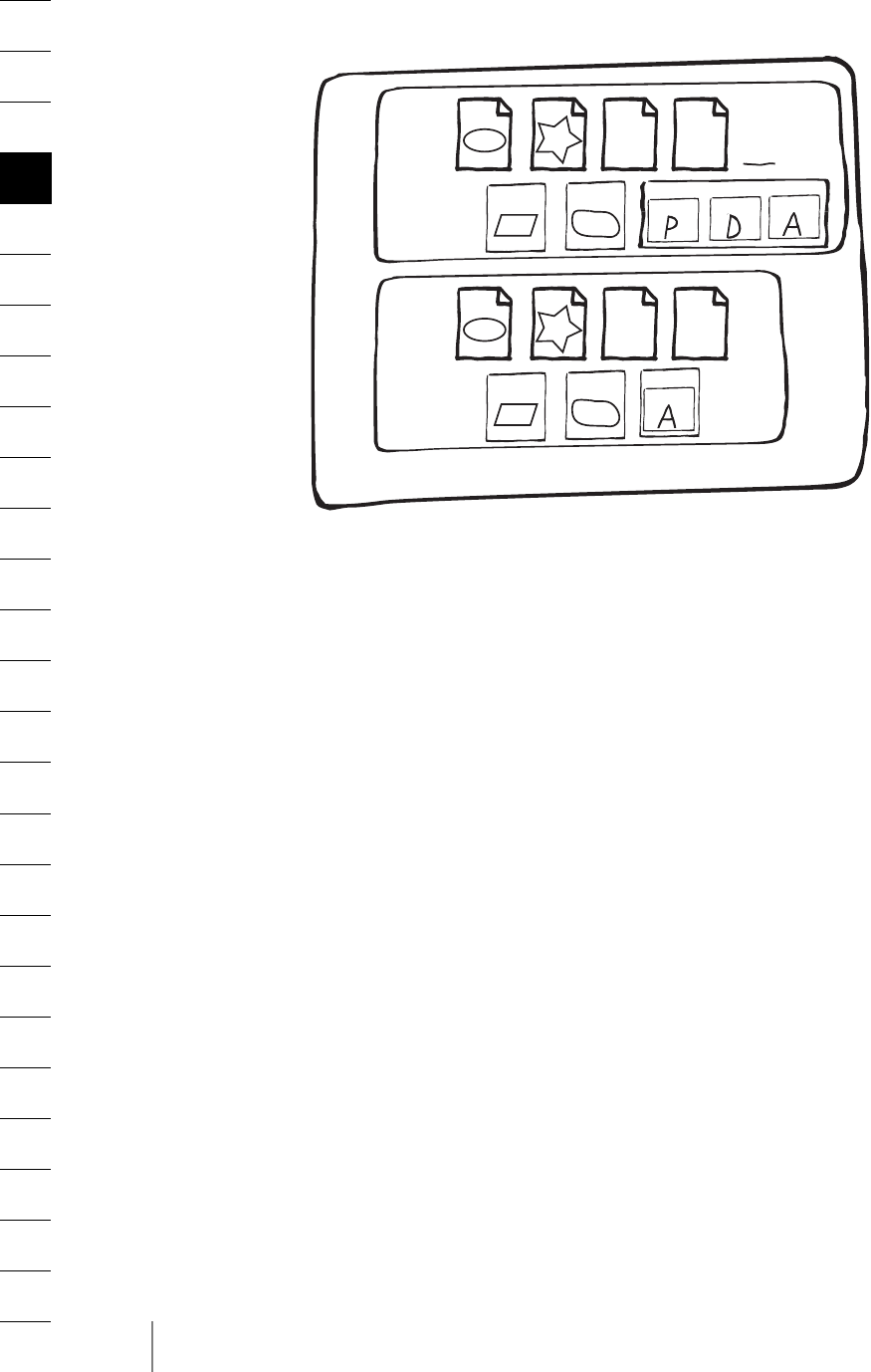
46 Chapter 3: PDFlib Programming
3.1.3 Exception Handling
Errors of a certain kind are called exceptions in many languages for good reasons – they
are mere exceptions, and are not expected to occur very often during the lifetime of a
program. The general strategy is to use conventional error reporting mechanisms (read:
special error return codes) for function calls which may go wrong often times, and use a
special exception mechanism for those rare occasions which don’t warrant cluttering
the code with conditionals. This is exactly the path that PDFlib goes: Some operations
can be expected to go wrong rather frequently, for example:
>Trying to open an output file for which one doesn’t have permission
>Trying to open an input PDF with a wrong file name
>Trying to open a corrupt image file
PDFlib signals such errors by returning a special value (usually – 1, but 0 in the PHP
binding) as documented in the API reference. Other events may be considered harmful,
but will occur rather infrequently, e.g.
>running out of virtual memory
>scope violations (e.g., closing a document before opening it)
>supplying wrong parameters to PDFlib API functions (e.g., trying to draw a circle with
negative radius)
When PDFlib detects such a situation, an exception will be thrown instead of passing a
special error return value to the caller. In the C programming language, which doesn’t
natively support exceptions, the client can install a custom routine (called an error han-
dler) which will be called in case of an exception. However, the recommended method is
to make use of PDF_TRY( )/PDF_CATCH( ) blocks as detailed in Section 2.4.4, »Error Hand-
ling in C«, page 26.
page page page page
pathpath
template pattern
document
. . .
. . .
object
null
path path
font
page page page page
pathpath
template pattern
document
. . .
path path
font
glyph
glyph glyph glyph
Fig. 3.1
Nesting of scopes

3.1 General Programming 47
It is important to understand that the generated PDF document cannot be finished
after an exception occurred. The only methods which can safely be called after an ex-
ception are PDF_delete( ), PDF_get_apiname( ), PDF_get_errnum( ), and PDF_get_errmsg( ).
Calling any other PDFlib method after an exception may lead to unexpected results. The
exception (or data passed to the C error handler) will contain the following information:
>A unique error number (see Table 3.2);
>The name of the PDFlib API function which caused the exception;
>A descriptive text containing details of the problem;
Disabling exceptions. Some exceptions can be disabled. These fall into two categories:
non-fatal errors (warnings) and errors which may or may not justify an exception de-
pending on client preferences.
Warnings generally indicate some problem in your PDFlib code which you should in-
vestigate more closely. However, processing may continue in case of non-fatal errors.
For this reason, you can suppress warnings using the following function call:
PDF_set_parameter(p, "warning", "false");
In addition to the global warning parameter, some functions also support dedicated op-
tions for enabling or disabling warnings for individual function calls. The suggested
strategy is to enable warnings during the development cycle (and closely examine pos-
sible warnings), and disable warnings in a production system.
Certain operations may be considered fatal for some clients, while others are pre-
pared to deal with the situation. In these cases the behavior of the respective PDFlib API
function changes according to a parameter. This distinction is implemented for loading
fonts, images, imported PDF documents, and ICC profiles. For example, if a font cannot
be loaded due to some configuration problem, one client may simply give up, while an-
other may choose another font instead. When the parameter or option fontwarning is
set to true, an exception will be thrown when the font cannot be loaded. Otherwise the
function will return an error code instead. The parameter can be set as follows:
PDF_set_parameter(p, "fontwarning", "false");
Querying the reason of a failed function call. As noted above, the generated PDF out-
put document must always be abandoned when an exception occurs. Some clients,
however, may prefer to continue the document by adjusting some parameters. For ex-
ample, when a particular font cannot be loaded most clients will give up the document,
while others may prefer to work with a different font. This distinction can be achieved
with the fontwarning etc. parameters. In this case it may be desirable to retrieve the er-
ror message that would have been part of the exception. In this situation the functions
PDF_get_errnum( ), PDF_get_errmsg( ), and PDF_get_apiname( ) may be called immediately
Table 3.2 Ranges of PDFlib exception numbers
error ranges reasons
1000 – 1999 (PDCORE library): memory, I/O, arguments, parameters/values, options
2000 – 3999 (PDFlib library): configuration, scoping, graphics and text, color, images, fonts, encodings, PDF/X,
hypertext, Tagged PDF, layers
4000 – 4999 (PDF import library PDI): configuration and parameter, corrupt PDF (file, object, or stream level)

48 Chapter 3: PDFlib Programming
after a failed function call, i.e., a function call which returned with a -1 (in PHP: 0) error
value.
The following code fragments summarize different strategies with respect to excep-
tion handling. The examples try to load and embed a font, assuming that this font is not
available.
If the fontwarning parameter or option is true (which is the default) the document
must be abandoned:
font = PDF_load_font(p, "MyFontName", 0, "winansi", "fontwarning=true");
/* unless an exception was thrown the font handle is valid;
* when an exception occurred the PDF output cannot be continued
*/
If the fontwarning parameter or option is false the return value must be checked for va-
lidity. If it indicates failure, the reason of the failure can be queried in order to properly
deal with the situation:
font = PDF_load_font(p, "MyFontName", 0, "winansi", "fontwarning=false";
if (font == -1) {
/* font handle is invalid; find out what happened. */
errmsg = PDF_get_errmsg(p);
/* Log error message */
/* Try a different font or give up */
...
}
/* font handle is valid; continue as usual */
3.1.4 Option Lists
Option lists are a powerful yet easy method to control PDFlib operations. Instead of
requiring a multitude of function parameters, many PDFlib API methods support op-
tion lists, or optlists for short. These are strings which may contain an arbitrary number
of options. Since option lists will be evaluated from left to right an option can be sup-
plied multiply within the same list; in this case the last occurrence will overwrite earlier
ones. Optlists support various data types and composite data like arrays. In most lan-
guages optlists can easily be constructed by concatenating the required keywords and
values. C programmers may want to use the sprintf( ) function in order to construct
optlists.
An optlist is a string containing one or more pairs of the form
name value
Names and values, as well as multiple name/value pairs can be separated by arbitrary
whitespace characters (space, tab, carriage return, newline). The value may consist of a
list of multiple values. You can also use an equal sign ’=’ between name and value:
name=value
Simple values. Simple values may use any of the following data types:
>Boolean: true or false; if the value of a boolean option is omitted, the value true is as-
sumed. As a shorthand notation noname can be used instead of name=false.
>String: these are plain ASCII strings which are generally used for non-localizable key-
words. Strings containing whitespace or ’=’ characters must be bracketed with { and }.

3.1 General Programming 49
An empty string can be constructed with {}. The characters {, }, and \ must be preced-
ed by an additional \character if they are supposed to be part of the string.
>Content strings, hypertext strings and name strings: these can hold Unicode content
in various formats; for details on these string types see Section 4.5, »Unicode Sup-
port«, page 95).
>Unichar: these are single Unicode characters, where several syntax variants are sup-
ported: decimal values (e.g. 173), hexadecimal values prefixed with x, X, 0x, 0X, or U+
(xAD, 0xAD, U+00AD), numerical or character references according to Section 4.5.5,
»Character References«, page 100, but without the ’&’ and ’;’ decoration (shy, #xAD,
#173). Unichars must be in the range 0-65535 (0-xFFFF).
>Keyword: one of a predefined list of fixed keywords
>Float and integer: decimal floating point or integer numbers; point and comma can
be used as decimal separators for floating point values. Integer values can start with
x, X, 0x, or 0X to specify hexadecimal values. Some options (this is stated in the re-
spective documentation) support percentages by adding a % character directly after
the value.
>Handle: several PDFlib-internal object handles, e.g., font, image, or action handles.
Technically these are integer values.
Depending on the type and interpretation of an option additional restrictions may ap-
ply. For example, integer or float options may be restricted to a certain range of values;
handles must be valid for the corresponding type of object, etc. Conditions for options
are documented in their respective function descriptions in Chapter 8. Some examples
for simple values (the first line shows a password string containing a blank character):
PDF_open_pdi( ): password {secret string}
PDF_create_gstate( ): linewidth 0.5 blendmode overlay opacityfill 0.75
PDF_load_font( ): embedding=true subsetting=true subsetlimit=50 kerning=false
PDF_load_font( ): embedding subsetting subsetlimit=50 nokerning
PDF_create_textflow( ) leading=150%
PDF_create_textflow( ) charmapping={ 0x0A 0x20 }
List values. List values consist of multiple values, which may be simple values or list
values in turn. Lists are bracketed with { and }. Some examples for list values:
PDF_fit_image( ): boxsize={500 600} position={50 0}
PDF_create_gstate( ): dasharray={11 22 33}
Rectangles. A rectangle is a list of four float values specifying the coordinates of the
lower left and upper right corners of a rectangle. The coordinate system for interpreting
the rectangle coordinates (standard or user coordinate system) varies depending on the
option, and is documented separately. Example:
PDF_begin_document( ): cropbox {0 0 500 600}
Action lists. An action list specifies one or more actions. Each entry in the list consists
of an event keyword (trigger) and a list of action handles which must have been created
with PDF_create_action( ). Actions will be performed in the listed order. The set of al-
lowed events (e.g. docopen) and the type of actions (e.g. JavaScript) are documented sep-
arately for the respective option. Examples (assuming the values 0, 1, and 2 have been
returned by earlier calls to PDF_create_action( ):

50 Chapter 3: PDFlib Programming
PDF_begin_document( ): action {open 0}
PDF_create_bookmark( ): action {activate {0 1 2}}
PDF_create_field( ): action {keystroke 0 format 1 validate 2}
Color values. Color values are lists consisting of a color space keyword and a list with a
variable number of float values depending on the particular color space. Color space
keywords are the same as for PDF_setcolor( ) (see Section 8.5.1, »Setting Color and Color
Space«, page 251), the possible values are explained in Section 3.3.1, »Color and Color
Spaces«, page 63:
>The color space keywords gray, rgb, and cmyk can be supplied along with one, three, or
four float values.
>The color space keyword lab can be supplied along with three float values.
>The color space keyword spot can be supplied along with a spot color handle. Alterna-
tively, the color space keyword spotname can be supplied along with a spot color
name and a float value containing the color tint.
>The color space keywords iccbasedgray, iccbasedrgb, and iccbasedcmyk can be supplied
along with one, three, or four float values.
>The color space keyword none can be supplied to specify the absence of color.
As detailed in the respective function descriptions in Chapter 8, a particular option list
may only supply a subset of the keywords presented above. Some examples for color
values:
PDF_fill_textblock( ): strokecolor={ rgb 1 0 0 }
PDF_fill_textblock( ): bordercolor=none
PDF_fill_textblock( ): fillcolor={ spotname {PANTONE 281 U} 0.5 }
3.1.5 The PDFlib Virtual File System (PVF)
In addition to disk files a facility called PDFlib Virtual File System (PVF) allows clients to di-
rectly supply data in memory without any disk files involved. This offers performance
benefits and can be used for data fetched from a database which does not even exist on
an isolated disk file, as well as other situations where the client already has the required
data available in memory as a result of some processing.
PVF is based on the concept of named virtual read-only files which can be used just
like regular file names with any API function. They can even be used in UPR configura-
tion files. Virtual file names can be generated in an arbitrary way by the client. Obvious-
ly, virtual file names must be chosen such that name clashes with regular disk files are
avoided. For this reason a hierarchical naming convention for virtual file names is rec-
ommended as follows (filename refers to a name chosen by the client which is unique in
the respective category). It is also recommended to keep standard file name suffixes:
>Raster image files: /pvf/image/filename
>font outline and metrics files (it is recommended to use the actual font name as the
base portion of the file name): /pvf/font/filename
>ICC profiles: /pvf/iccprofile/filename
>Encodings and codepages: /pvf/codepage/filename
>PDF documents: /pvf/pdf/filename
When searching for a named file PDFlib will first check whether the supplied file name
refers to a known virtual file, and then try to open the named file on disk.

3.1 General Programming 51
Lifetime of virtual files. Some functions will immediately consume the data supplied
in a virtual file, while others will read only parts of the file, with other fragments being
used at a later point in time. For this reason close attention must be paid to the lifetime
of virtual files. PDFlib will place an internal lock on every virtual file, and remove the
lock only when the contents are no longer needed. Unless the client requested PDFlib to
make an immediate copy of the data (using the copy option in PDF_create_pvf( )), the vir-
tual file’s contents must only be modified, deleted, or freed by the client when it is no
longer locked by PDFlib. PDFlib will automatically delete all virtual files in PDF_delete( ).
However, the actual file contents (the data comprising a virtual file) must always be
freed by the client.
Different strategies. PVF supports different approaches with respect to managing the
memory required for virtual files. These are governed by the fact that PDFlib may need
access to a virtual file’s contents after the API call which accepted the virtual file name,
but never needs access to the contents after PDF_close( ). Remember that calling PDF_
delete_pvf( ) does not free the actual file contents (unless the copy option has been sup-
plied), but only the corresponding data structures used for PVF file name administra-
tion. This gives rise to the following strategies:
>Minimize memory usage: it is recommended to call PDF_delete_pvf( ) immediately af-
ter the API call which accepted the virtual file name, and another time after PDF_
close( ). The second call is required because PDFlib may still need access to the data so
that the first call refuses to unlock the virtual file. However, in some cases the first
call will already free the data, and the second call doesn’t do any harm. The client
may free the file contents only when PDF_delete_pvf( ) succeeded.
>Optimize performance by reusing virtual files: some clients may wish to reuse some
data (e.g., font definitions) within various output documents, and avoid multiple
create/delete cycles for the same file contents. In this case it is recommended not to
call PDF_delete_pvf( ) as long as more PDF output documents using the virtual file
will be generated.
>Lazy programming: if memory usage is not a concern the client may elect not to call
PDF_delete_pvf( ) at all. In this case PDFlib will internally delete all pending virtual
files in PDF_delete( ).
In all cases the client may free the corresponding data only when PDF_delete_pvf( ) re-
turned successfully, or after PDF_delete( ).
3.1.6 Resource Configuration and File Searching
In most advanced applications PDFlib needs access to resources such as font file, encod-
ing definition, ICC color profiles, etc. In order to make PDFlib’s resource handling plat-
form-independent and customizable, a configuration file can be supplied for describing
the available resources along with the names of their corresponding disk files. In addi-
tion to a static configuration file, dynamic configuration can be accomplished at run-
time by adding resources with PDF_set_parameter( ). For the configuration file we dug
out a simple text format called Unix PostScript Resource (UPR) which came to life in the
era of Display PostScript, and is still in use on several systems. However, we extended
the original UPR format for our purposes. The UPR file format as used by PDFlib will be
described below. There is a utility called makepsres (often distributed as part of the X
Window System) which can be used to automatically generate UPR files from PostScript
font outline and metrics files.

52 Chapter 3: PDFlib Programming
Resource categories. The resource categories supported by PDFlib are listed in Table
3.3. Other resource categories may be present in the UPR file for compatibility with Dis-
play PostScript installations, but they will silently be ignored.
Redundant resource entries should be avoided. For example, do not include multiple
entries for a certain font’s metrics data. Also, the font name as configured in the UPR file
should exactly match the actual font name in order to avoid confusion (although
PDFlib does not enforce this restriction).
In Mac OS Classic the colon character ’:’ must be used as a directory separator. The
font names of resource-based PostScript Type 1 fonts (LWFN fonts) must be specified us-
ing the full path including volume name, for example:
Foo-Italic=Classic:Data:Fonts:FooIta
The UPR file format. UPR files are text files with a very simple structure that can easily
be written in a text editor or generated automatically. To start with, let’s take a look at
some syntactical issues:
>Lines can have a maximum of 255 characters.
>A backslash ’\’ escapes newline characters. This may be used to extend lines.
>An isolated period character ’ . ’ serves as a section terminator.
>All entries are case-sensitive.
>Comment lines may be introduced with a percent ’%’ character, and terminated by
the end of the line.
>Whitespace is ignored everywhere except in resource names and file names.
UPR files consist of the following components:
>A magic line for identifying the file. It has the following form:
PS-Resources-1.0
>A section listing all resource categories described in the file. Each line describes one
resource category. The list is terminated by a line with a single period character.
Available resource categories are described below.
>A section for each of the resource categories listed at the beginning of the file. Each
section starts with a line showing the resource category, followed by an arbitrary
number of lines describing available resources. The list is terminated by a line with a
single period character. Each resource data line contains the name of the resource
(equal signs have to be quoted). If the resource requires a file name, this name has to
Table 3.3 Resource categories supported in PDFlib
resource category name explanation
SearchPath Relative or absolute path name of directories containing data files
FontAFM PostScript font metrics file in AFM format
FontPFM PostScript font metrics file in PFM format
FontOutline PostScript, TrueType or OpenType font outline file
Encoding text file containing an 8-bit encoding or code page table
HostFont Name of a font installed on the system. The value can be encoded in ASCII or UTF-
8 with initial BOM. The latter can be useful for localized host font names.
ICCProfile name of an ICC color profile
StandardOutputIntent name of a standard output condition for PDF/X

3.1 General Programming 53
be added after an equal sign. The SearchPath (see below) will be applied when PDFlib
searches for files listed in resource entries.
File searching and the SearchPath resource category. PDFlib reads a variety of data
items, such as raster images, font outline and metrics information, encoding defini-
tions, PDF documents, and ICC color profiles from disk files. In addition to relative or ab-
solute path names you can also use file names without any path specification. The
SearchPath resource category can be used to specify a list of path names for directories
containing the required data files. When PDFlib must open a file it will first use the file
name exactly as supplied and try to open the file. If this attempt fails PDFlib will try to
open the file in the directories specified in the SearchPath resource category one after
another until it succeeds. SearchPath entries can be accumulated, and will be searched in
reverse order (paths set at a later point in time will searched before earlier ones). This
feature can be used to separate the PDFlib application from platform-specific file sys-
tem schemes. In order to disable the search you can use a fully specified path name in
the PDFlib functions.
On Windows PDFlib will initialize the SearchPath resource category with an entry
read from the following registry entry:
HKLM\SOFTWARE\PDFlib\PDFlib\6.0.1\SearchPath
This registry entry may contain a list of path names separated by a semicolon ’;’ char-
acter.
On IBM iSeries the SearchPath resource category will be initialized with the following
values:
/pdflib/6.0.1/fonts
/pdflib/6.0.1/bind/data
On MVS the SearchPath feature is not supported.
Sample UPR file. The following listing gives an example of a UPR configuration file as
used by PDFlib. It describes some font metrics and outline files plus a custom encoding:
PS-Resources-1.0
SearchPath
FontAFM
FontPFM
FontOutline
Encoding
ICCProfile
.
SearchPath
/usr/local/lib/fonts
Classic:Data:Fonts
C:/psfonts/pfm
C:/psfonts
/users/kurt/my_images
.
FontAFM
Code-128=Code_128.afm
.
FontPFM
Foobar-Bold=foobb___.pfm

54 Chapter 3: PDFlib Programming
Mistral=c:/psfonts/pfm/mist____.pfm
.
FontOutline
Code-128=Code_128.pfa
ArialMT=Arial.ttf
.
Encoding
myencoding=myencoding.enc
.
ICCProfile
highspeedprinter=cmykhighspeed.icc
.
Searching for the UPR resource file. If only the built-in resources (e.g., PDF core font,
built-in encodings, sRGB ICC profile) or system resources (host fonts) are to be used, a
UPR configuration file is not required, since PDFlib will find all necessary resources
without any additional configuration.
If other resources are to be used you can specify such resources via calls to PDF_set_
parameter( ) (see below) or in a UPR resource file. PDFlib reads this file automatically
when the first resource is requested. The detailed process is as follows:
>If the environment variable PDFLIBRESOURCE is defined PDFlib takes its value as the
name of the UPR file to be read. If this file cannot be read an exception will be
thrown.
>If the environment variable PDFLIBRESOURCE is not defined PDFlib tries to open a file
with the following name:
upr (on MVS; a dataset is expected)
pdflib/<version>/fonts/pdflib.upr (on IBM eServer iSeries)
pdflib.upr (Windows, Unix, and all other systems)
If this file cannot be read no exception will be thrown.
>On Windows PDFlib will additionally try to read the registry entry
HKLM\SOFTWARE\PDFlib\PDFlib\6.0.1\resourcefile
The value of this entry (which will be created by the PDFlib installer, but can also be
created by other means) will be taken as the name of the resource file to be used. If
this file cannot be read an exception will be thrown.
>The client can force PDFlib to read a resource file at runtime by explicitly setting the
resourcefile parameter:
PDF_set_parameter(p, "resourcefile", "/path/to/pdflib.upr");
This call can be repeated arbitrarily often; the resource entries will be accumulated.
Configuring resources at runtime. In addition to using a UPR file for the configuration,
it is also possible to directly configure individual resources within the source code via
the PDF_set_parameter( ) function. This function takes a category name and a corre-
sponding resource entry as it would appear in the respective section of this category in
a UPR resource file, for example:
PDF_set_parameter(p, "FontAFM", "Foobar-Bold=foobb___.afm")
PDF_set_parameter(p, "FontOutline", "Foobar-Bold=foobb___.pfa")

3.1 General Programming 55
3.1.7 Generating PDF Documents in Memory
In addition to generating PDF documents on a file, PDFlib can also be instructed to gen-
erate the PDF directly in memory (in-core). This technique offers performance benefits
since no disk-based I/O is involved, and the PDF document can, for example, directly be
streamed via HTTP. Webmasters will be especially happy to hear that their server will
not be cluttered with temporary PDF files.
You may, at your option, periodically collect partial data (e.g., every time a page has
been finished), or fetch the complete PDF document in one big chunk at the end (after
PDF_end_document( )). Interleaving production and consumption of the PDF data has
several advantages. Firstly, since not all data must be kept in memory, the memory re-
quirements are reduced. Secondly, such a scheme can boost performance since the first
chunk of data can be transmitted over a slow link while the next chunk is still being
generated. However, the total length of the generated data will only be known when the
complete document is finished.
The active in-core PDF generation interface. In order to generate PDF data in memory,
simply supply an empty filename to PDF_begin_document( ), and retrieve the data with
PDF_get_buffer( ):
PDF_begin_document(p, "", 0, "")
...create document...
PDF_end_document(p);
buf = PDF_get_buffer(p, &size);
... use the PDF data contained in the buffer ...
PDF_delete(p);
Note The PDF data in the buffer must be treated as binary data.
This is considered »active« mode since the client decides when he wishes to fetch the
buffer contents. Active mode is available for all supported language bindings.
Note C and C++ clients must not free the returned buffer.
The passive in-core PDF generation interface. In »passive« mode, which is only avail-
able in the C and C++ language bindings, the user installs (via PDF_open_document_
callback( )) a callback function which will be called at unpredictable times by PDFlib
whenever PDF data is waiting to be consumed. Timing and buffer size constraints relat-
ed to flushing (transferring the PDF data from the library to the client) can be config-
ured by the client in order to provide for maximum flexibility. Depending on the envi-
ronment, it may be advantageous to fetch the complete PDF document at once, in
multiple chunks, or in many small segments in order to prevent PDFlib from increasing
the internal document buffer. The flushing strategy can be set using the flush option of
PDF_open_document_callback( )).
3.1.8 Using PDFlib on EBCDIC-based Platforms
The operators and structure elements in the PDF file format are based on ASCII, making
it difficult to mix text output and PDF operators on EBCDIC-based platforms such as
IBM eServer iSeries 400 and zSeries S/390. However, a special mainframe version of

56 Chapter 3: PDFlib Programming
PDFlib has been carefully crafted in order to allow mixing of ASCII-based PDF operators
and EBCDIC (or other) text output. The EBCDIC-safe version of PDFlib is available for
various operating systems and machine architectures.
In order to leverage PDFlib’s features on EBCDIC-based platforms the following items
are expected to be supplied in EBCDIC text format (more specifically, in code page 037
on iSeries, and code page 1047 on zSeries):
>PFA font files, UPR configuration files, AFM font metrics files
>encoding and code page files
>string parameters to PDFlib functions
>input and output file names
>environment variables (if supported by the runtime environment)
>PDFlib error messages will also be generated in EBCDIC format (except in Java).
If you prefer to use input text files (PFA, UPR, AFM, encodings) in ASCII format you can
set the asciifile parameter to true (default is false). PDFlib will then expect these files in
ASCII encoding. String parameters will still be expected in EBCDIC encoding, however.
In contrast, the following items must always be treated in binary mode (i.e., any con-
version must be avoided):
>PDF input and output files
>PFB font outline and PFM font metrics files
>TrueType and OpenType font files
>image files and ICC profiles
3.1.9 Large File Support
In this section the term »large file« is used for files with a size of more than 2 GB. Al-
though there doesn’t seem to be any need for such large files for the average user, there
are actually enterprise application which create or process single large files containing
large numbers of, say, invoices or statements. In such a scenario the file size may exceed
the limit of 2 GB.
PDFlib supports large output files, i.e. it can create PDF output with more than 2 GB.
PDI supports processing of large input files as well. However, large file support is only
available on platforms where the underlying operating system supports large files na-
tively. Obviously, the file system in use must also support large files. Note that Acrobat
6 and older versions are unable to process large files. However, Acrobat 7 properly deals
with large files.
Note Imported files other than PDF, such as fonts and images, can not exceed the 2 GB limit. PDF
output fragments fetched with the PDF_get_buffer( ) interface are also subject to this limit. Fi-
nally, PDF output files are generally limited to 1010 bytes, which is roughly 9.3 GB.

3.2 Page Descriptions 57
3.2 Page Descriptions
3.2.1 Coordinate Systems
PDF’s default coordinate system is used within PDFlib. The default coordinate system
(or default user space) has the origin in the lower left corner of the page, and uses the
DTP point as unit:
1 pt = 1/72 inch = 25.4/72 mm = 0.3528 mm
The first coordinate increases to the right, the second coordinate increases upwards.
PDFlib client programs may change the default user space by rotating, scaling, translat-
ing, or skewing, resulting in new user coordinates. The respective functions for these
transformations are PDF_rotate( ), PDF_scale( ), PDF_translate( ), and PDF_skew( ). If the
user space has been transformed, all coordinates in graphics and text functions must be
supplied according to the new coordinate system. The coordinate system is reset to the
default coordinate system at the start of each page.
Using metric coordinates. Metric coordinates can easily be used by scaling the coor-
dinate system. The scaling factor is derived from the definition of the DTP point given
above:
PDF_scale(p, 28.3465, 28.3465);
After this call PDFlib will interpret all coordinates (except for hypertext features, see be-
low) in centimeters since 72/2.54 = 28.3465.
Coordinates for hypertext elements. PDF always expects coordinates for hypertext
functions, such as the rectangle coordinates for creating text annotations, links, and file
annotations in the default coordinate system, and not in the (possibly transformed)
user coordinate system. Since this is very cumbersome PDFlib offers automatic conver-
sion of user coordinates to the format expected by PDF. This automatic conversion is ac-
tivated by setting the usercoordinates parameter to true:
PDF_set_parameter(p, "usercoordinates", "true");
Since PDF supports only hypertext rectangles with edges parallel to the page edges, the
supplied rectangles must be modified when the coordinate system has been trans-
formed by scaling, rotating, translating, or skewing it. In this case PDFlib will calculate
the smallest enclosing rectangle with edges parallel to the page edges, transform it to
default coordinates, and use the resulting values instead of the supplied coordinates.
The overall effect is that you can use the same coordinate systems for both page con-
tent and hypertext elements when the usercoordinates parameter has been set to true.
Visualizing coordinates. In order to assist PDFlib users in working with PDF’s coordi-
nate system, the PDFlib distribution contains the PDF file grid.pdf which visualizes the
coordinates for several common page sizes. Printing the appropriately sized page on
transparent material may provide a useful tool for preparing PDFlib development.
Acrobat 5/6 (full version only, not the free Reader) also has a helpful facility. Simply
choose Window, Info to display a measurement palette which uses points as units. Note

58 Chapter 3: PDFlib Programming
that the coordinates displayed refer to an origin in the top left corner of the page, and
not PDF’s default origin in the lower left corner.
Don’t be mislead by PDF printouts which seem to experience wrong page dimen-
sions. These may be wrong because of some common reasons:
>The Shrink oversized pages to paper size option has been checked in Acrobat’s print dia-
log, resulting in scaled print output.
>Non-PostScript printer drivers are not always able to retain the exact size of printed
objects.
Rotating objects. It is important to understand that objects cannot be modified once
they have been drawn on the page. Although there are PDFlib functions for rotating,
translating, scaling, and skewing the coordinate system, these do not affect existing ob-
jects on the page but only subsequently drawn objects. Rotating text, images, and im-
ported PDF pages by multiples of 90 degrees is easily accomplished with the orientate
option in PDF_fit_textline( ), PDF_fit_image( ), and PDF_fit_pdi_page( ) functions.
Arbitrary rotation angles can be achieved by applying the general coordinate trans-
formation functions. The following example generates some horizontal text, and ro-
tates the coordinate system in order to show rotated text. The save/restore nesting
makes it easy to continue with horizontal text in the original coordinate system after
the vertical text is done:
PDF_set_text_pos(p, 50, 600);
PDF_show(p, "This is horizontal text");
textx = PDF_get_value(p, "textx", 0); /* determine text position*/
texty = PDF_get_value(p, "texty", 0); /* determine text position */
PDF_save(p);
PDF_translate(p, textx, texty); /* move origin to end of text */
PDF_rotate(p, 45); /* rotate coordinates */
PDF_set_text_pos(p, 18, 0); /* provide for distance from horiz. text */
PDF_show(p, "rotated text");
PDF_restore(p);
PDF_continue_text(p, "horizontal text continues");
Using top-down coordinates. Unlike PDF’s bottom-up coordinate system some graph-
ics environments use top-down coordinates which may be preferred by some develop-
ers. Such a coordinate system can easily be established using PDFlib’s transformation
functions. However, since the transformations will also affect text output additional
calls are required in order to avoid text being displayed in a mirrored sense.
In order to facilitate the use of top-down coordinates PDFlib supports a special mode
in which all relevant coordinates will be interpreted differently: instead of working with
the default PDF coordinate system, with the origin (0, 0) at the lower left corner of the
page and y coordinates increasing upwards, a modified coordinate system will be used
which has its origin at the upper left corner of the page with y coordinates increasing
downwards. This top-down coordinate system can be activated with the topdown pa-
rameter:
PDF_set_parameter(p, "topdown", "true")
A different coordinate system can be established for each page, but the topdown para-
meter must not be set within a page description (but only between pages). The topdown
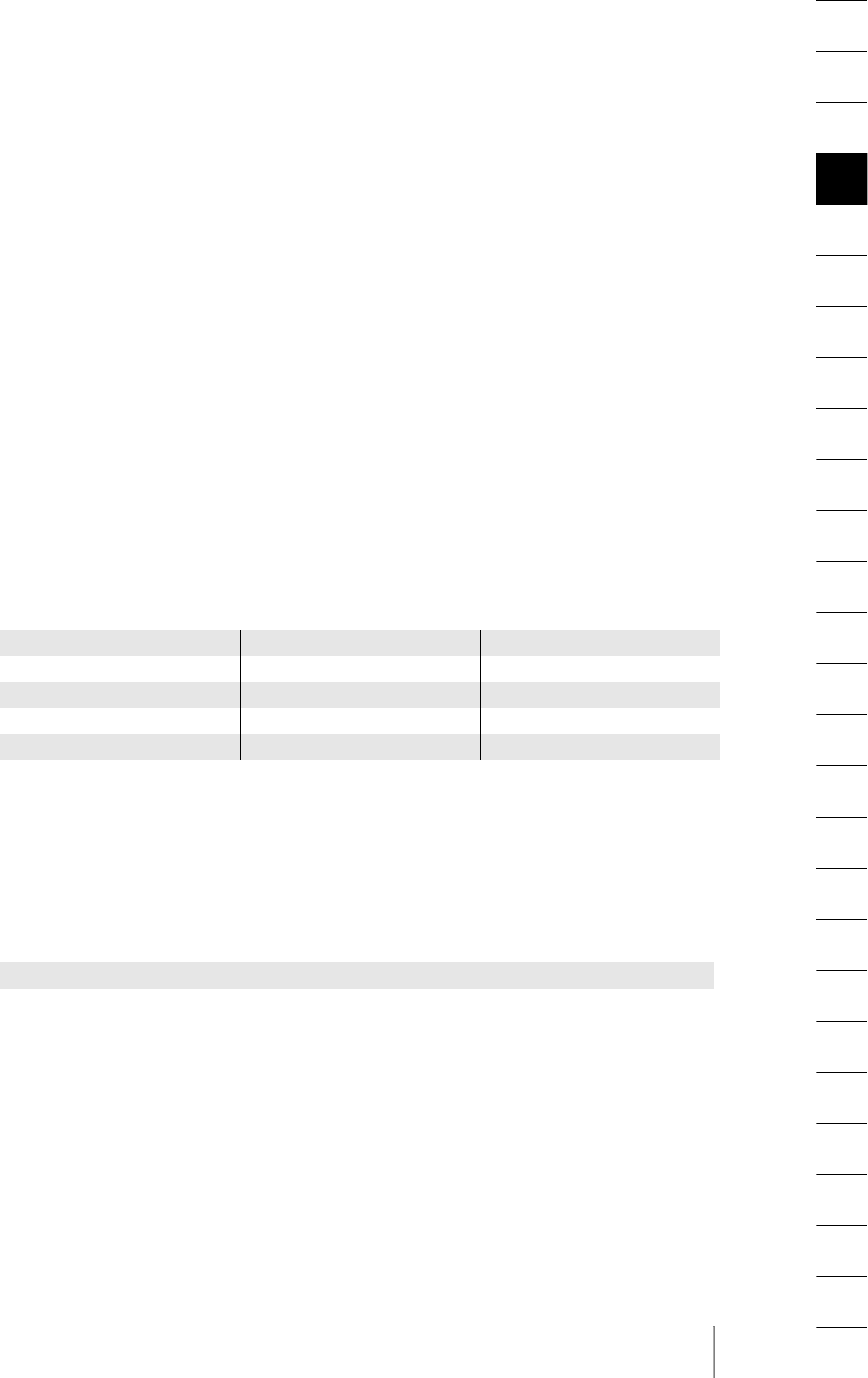
3.2 Page Descriptions 59
feature has been designed to make it quite natural for PDFlib users to work in a top-
down coordinate system. For the sake of completeness we’ll list the detailed conse-
quences of establishing a top-down coordinate system below.
»Absolute« coordinates will be interpreted in the user coordinate system without
any modification:
>All function parameters which are designated as »coordinates« in the function de-
scriptions. Some examples: x, y in PDF_moveto( ); x, y in PDF_circle( ), x, y (but not width
and height!) in PDF_rect( ); llx, lly, urx, ury in PDF_create_annotation( )).
»Relative« coordinate values will be modified internally to match the top-down system:
>Text (with positive font size) will be oriented towards the top of the page;
>When the manual talks about »lower left« corner of a rectangle, box etc. this will be
interpreted as you see it on the page;
>When a rotation angle is specified the center of the rotation is still the origin (0, 0) of
the user coordinate system. The visual result of a clockwise rotation will still be
clockwise.
3.2.2 Page Sizes and Coordinate Limits
Standard page formats. For the convenience of PDFlib users, Table 3.4 lists common
standard page sizes1. Symbolic page size names may be used for the width and height op-
tions in PDF_begin/end_page_ext( ). They are called <format>.width and <format>.height,
where <format> is one of the formats in Table 3.4 (in lowercase, e.g. a4.width).
Page size limits. Although PDF and PDFlib don’t impose any restrictions on the usable
page size, Acrobat implementations suffer from architectural limits regarding the page
size. Note that other PDF interpreters may well be able to deal with larger or smaller doc-
ument formats. PDFlib will throw a non-fatal exception if Acrobat’s page size limits are
exceeded. The page size limits for Acrobat are shown in Table 3.5.
Different page size boxes. While many PDFlib developers only specify the width and
height of a page, some advanced applications (especially for prepress work) may want
to specify one or more of PDF’s additional box entries. PDFlib supports all of PDF’s box
entries. The following entries, which may be useful in certain environments, can be
specified by PDFlib clients (definitions taken from the PDF reference):
1. More information about ISO, Japanese, and U.S. standard formats can be found at the following URLs:
home.inter.net/eds/paper/papersize.html, www.cl.cam.ac.uk/~mgk25/iso-paper.html
Table 3.4 Common standard page size dimensions in points
format width height format width height format width height
a0 2380 3368 a4 595 842 letter 612 792
a1 1684 2380 a5 421 595 legal 612 1008
a2 1190 1684 a6 297 421 ledger 1224 792
a3 842 1190 a5 501 709 11x17 792 1224
Table 3.5 Minimum and maximum page size of Acrobat
PDF viewer minimum page size maximum page size
Acrobat 4 and above 1/24" = 3 pt = 0.106 cm 200" = 14400 pt = 508 cm

60 Chapter 3: PDFlib Programming
>MediaBox: this is used to specify the width and height of a page, and describes what
we usually consider the page size.
>CropBox: the region to which the page contents are to be clipped; Acrobat uses this
size for screen display and printing.
>TrimBox: the intended dimensions of the finished (possibly cropped) page;
>ArtBox: extent of the page’s meaningful content. It is rarely used by application soft-
ware;
>BleedBox: the region to which the page contents are to be clipped when output in a
production environment. It may encompass additional bleed areas to account for in-
accuracies in the production process.
PDFlib will not use any of these values apart from recording it in the output file. By de-
fault PDFlib generates a MediaBox according to the specified width and height of the
page, but does not generate any of the other entries. The following code fragment will
start a new page and set the four values of the CropBox:
/* start a new page with custom CropBox */
PDF_begin_page_ext(p, 595, 842, "cropbox {10 10 500 800}");
Number of pages in a document. There is no limit in PDFlib regarding the number of
generated pages in a document. PDFlib generates PDF structures which allow Acrobat to
efficiently navigate documents with hundreds of thousands of pages.
Output accuracy and coordinate range. PDFlib’s numerical output accuracy has been
carefully chosen to match the requirements of PDF and the supported environments,
while at the same time minimizing output file size. As detailed in Table 3.6 PDFlib’s ac-
curacy depends on the absolute value of coordinates. While most developers may safely
ignore this issue, demanding applications should take care in their scaling operations
in order to not exceed PDF’s built-in coordinate limits.
3.2.3 Paths
A path is a shape made of an arbitrary number of straight lines, rectangles, or curves. A
path may consist of several disconnected sections, called subpaths. There are several
operations which can be applied to a path (see Section 8.4.6, »Path Painting and Clip-
ping«, page 246):
>Stroking draws a line along the path, using client-supplied parameters (e.g., color,
line width) for drawing.
>Filling paints the entire region enclosed by the path, using client-supplied parame-
ters for filling.
>Clipping reduces the imageable area for subsequent drawing operations by replacing
the current clipping area (which is the page size by default) with the intersection of
the current clipping area and the area enclosed by the path.
Table 3.6 Output accuracy and coordinate range
absolute value output
0 ... 0.000015 0
0.000015 ... 32767.999999 rounded to four decimal digits
32768 ... 231- 1 rounded to next integer
>= 231 an exception will be raised

3.2 Page Descriptions 61
>Merely terminating the path results in an invisible path, which will nevertheless be
present in the PDF file. This will only rarely be required.
It is an error to construct a path without applying any of the above operations to it.
PDFlib’s scoping system ensures that clients obey to this restriction. These rules may
easily be summarized as »don’t change the appearance within a path description«.
Merely constructing a path doesn’t result in anything showing up on the page; you
must either fill or stroke the path in order to get visible results:
PDF_moveto(p, 100, 100);
PDF_lineto(p, 200, 100);
PDF_stroke(p);
Most graphics functions make use of the concept of a current point, which can be
thought of as the location of the pen used for drawing.
3.2.4 Templates
Templates in PDF. PDFlib supports a PDF feature with the technical name form
XObjects. However, since this term conflicts with interactive forms we refer to this fea-
ture as templates. A PDFlib template can be thought of as an off-page buffer into which
text, vector, and image operations are redirected (instead of acting on a regular page).
After the template is finished it can be used much like a raster image, and placed an ar-
bitrary number of times on arbitrary pages. Like images, templates can be subjected to
geometrical transformations such as scaling or skewing. When a template is used on
multiple pages (or multiply on the same page), the actual PDF operators for construct-
ing the template are only included once in the PDF file, thereby saving PDF output file
size. Templates suggest themselves for elements which appear repeatedly on several
pages, such as a constant background, a company logo, or graphical elements emitted
by CAD and geographical mapping software. Other typical examples for template usage
include crop and registration marks or custom Asian glyphs.
Using templates with PDFlib. Templates can only be defined outside of a page descrip-
tion, and can be used within a page description. However, templates may also contain
other templates. Obviously, using a template within its own definition is not possible.
Referring to an already defined template on a page is achieved with the PDF_fit_image( )
function just like images are placed on the page (see Section 5.3, »Placing Images and
Imported PDF Pages«, page 144). The general template idiom in PDFlib looks as follows:
/* define the template */
template = PDF_begin_template(p, template_width, template_height);
...place marks on the template using text, vector, and image functions...
PDF_end_template(p);
...
PDF_begin_page(p, page_width, page_height);
/* use the template */
PDF_fit_image(p, template, (float) 0.0, (float) 0.0, "");
...more page marking operations...
PDF_end_page(p);
...
PDF_close_image(p, template);

62 Chapter 3: PDFlib Programming
All text, graphics, and color functions can be used on a template. However, the follow-
ing functions must not be used while constructing a template:
>The functions in Section 8.6, »Image and Template Functions«, page 258, except PDF_
fit_image( ), and PDF_close_image( ). This is not a big restriction since images can be
opened outside of a template definition, and freely be used within a template (but
not opened).
>The functions in Section 8.9.7, »Deprecated Hypertext Parameters and Functions«,
page 294. Hypertext elements must always be defined on the page where they
should appear in the document, and cannot be generated as part of a template.
Template support in third-party software. Templates (form XObjects) are an integral
part of the PDF specification, and can be perfectly viewed and printed with Acrobat.
However, not all PDF consumers are prepared to deal with this construct. For example,
the Acrobat plugin Enfocus PitStop 5.0 can only move templates, but cannot access indi-
vidual elements within a template. On the other hand, Adobe Illustrator 9 and 10 fully
support templates.

3.3 Working with Color 63
3.3 Working with Color
3.3.1 Color and Color Spaces
PDFlib clients may specify the colors used for filling and stroking the interior of paths
and text characters. Colors may be specified in several color spaces:
>Gray values between 0=black and 1=white;
>RGB triples, i.e., three values between 0 and 1 specifying the percentage of red, green,
and blue; (0, 0, 0)=black, (1, 1, 1)=white;
>Four CMYK values between 0=no color and 1=full color, representing cyan, magenta,
yellow, and black values; (0, 0, 0, 0)=white, (0, 0, 0, 1)=black. Note that this is different
from the RGB specification.
>Device-independent colors in the CIE L*a*b* color space are specified by a luminance
value in the range 0-100 and two color values in the range -127 to 128 (see Section
3.3.4, »Color Management and ICC Profiles«, page 67).
>ICC-based colors are specified with the help of an ICC profile (see Section 3.3.4, »Color
Management and ICC Profiles«, page 67).
>Spot color (separation color space): a predefined or arbitrarily named custom color
with an alternate representation in one of the other color spaces above; this is gener-
ally used for preparing documents which are intended to be printed on an offset
printing machine with one or more custom colors. The tint value (percentage) rang-
es from 0=no color to 1=maximum intensity of the spot color. See Section 3.3.3, »Spot
Colors«, page 64, for a list of spot color names.
>Patterns: tiling with an object composed of arbitrary text, vector, or image graphics
(see Section 3.3.2, »Patterns and Smooth Shadings«, page 63).
>Shadings (smooth blends) provide a gradual transition between two colors, and are
based on another color space (see Section 3.3.2, »Patterns and Smooth Shadings«,
page 63).
>The indexed color space is a not really a color space on its own, but rather an efficient
coding of another color space. It will automatically be generated when an indexed
(palette-based) image is imported.
The default color for stroke and fill operations is black.
3.3.2 Patterns and Smooth Shadings
As an alternative to solid colors, patterns and shadings are special kinds of colors which
can be used to fill or stroke arbitrary objects.
Patterns. A pattern is defined by an arbitrary number of painting operations which
are grouped into a single entity. This group of objects can be used to fill or stroke arbi-
trary other objects by replicating (or tiling) the group over the entire area to be filled or
the path to be stroked. Working with patterns involves the following steps:
>First, the pattern must be defined between PDF_begin_pattern( ) and PDF_end_
pattern( ). Most graphics operators can be used to define a pattern.
>The pattern handle returned by PDF_begin_pattern( ) can be used to set the pattern as
the current color using PDF_setcolor( ).
Depending on the painttype parameter of PDF_begin_pattern( ) the pattern definition
may or may not include its own color specification. If painttype is 1, the pattern defini-

64 Chapter 3: PDFlib Programming
tion must contain its own color specification and will always look the same; if painttype
is 2, the pattern definition must not include any color specification. Instead, the current
fill or stroke color will be applied when the pattern is used for filling or stroking.
Note Patterns can also be defined based on a smooth shading (see below).
Smooth shadings. Smooth shadings, also called color blends or gradients, provide a
continuous transition from one color to another. Both colors must be specified in the
same color space. PDFlib supports two different kinds of geometry for smooth shadings:
>axial shadings are defined along a line;
>radial shadings are defined between two circles.
Shadings are defined as a transition between two colors. The first color is always taken
to be the current fill color; the second color is provided in the c1, c2, c3, and c4 parameters
of PDF_shading( ). These numerical values will be interpreted in the first color’s color
space according to the description of PDF_setcolor( ).
Calling PDF_shading( ) will return a handle to a shading object which can be used in
two ways:
>Fill an area with PDF_shfill( ). This method can be used when the geometry of the ob-
ject to be filled is the same as the geometry of the shading. Contrary to its name this
function will not only fill the interior of the object, but also affects the exterior. This
behavior can be modified with PDF_clip( ).
>Define a shading pattern to be used for filling more complex objects. This involves
calling PDF_shading_pattern( ) to create a pattern based on the shading, and using this
pattern to fill or stroke arbitrary objects.
3.3.3 Spot Colors
PDFlib supports spot colors (technically known as Separation color space in PDF, al-
though the term separation is generally used with process colors, too) which can be
used to print custom colors outside the range of colors mixed from process colors. Spot
colors are specified by name, and in PDF are always accompanied by an alternate color
which closely, but not exactly, resembles the spot color. Acrobat will use the alternate
color for screen display and printing to devices which do not support spot colors (such
as office printers). On the printing press the requested spot color will be applied in addi-
tion to any process colors which may be used in the document. This requires the PDF
files to be post-processed by a process called color separation.
Note Color separation is outside the scope of PDFlib. Acrobat 6, additional software for Acrobat 5
(such as the ARTS PDF Crackerjack1 plugin), or in-RIP separation is required to separate PDFs.
Note Some spot colors do not display correctly on screen in Acrobat 5 when Overprint Preview is
turned on. They can be separated and printed correctly, though.
PDFlib supports various built-in spot color libraries as well as custom (user-defined)
spot colors. When a spot color name is requested with PDF_makespotcolor( ) PDFlib will
first check whether the requested spot color can be found in one of its built-in libraries.
If so, PDFlib will use built-in values for the alternate color. Otherwise the spot color is as-
sumed to be a user-defined color, and the client must supply appropriate alternate col-
1. See www.artspdf.com

3.3 Working with Color 65
or values (via the current color). Spot colors can be tinted, i.e., they can be used with a
percentage between 0 and 1.
By default, built-in spot colors can not be redefined with custom alternate values.
However, this behavior can be changed with the spotcolorlookup parameter. This can be
useful to achieve compatibility with older applications which may use different color
definitions.
PDFlib will automatically generate suitable alternate colors for built-in spot colors
when a PDF/X conformance level has been selected (see Section 7.4, »PDF/X«, page 180).
For custom spot colors it is the user’s responsibility to provide alternate colors which
are compatible with the selected PDF/X conformance level.
Note Built-in spot color data and the corresponding trademarks have been licensed by PDFlib GmbH
from the respective trademark owners for use in PDFlib software.
PANTONE® colors. PANTONE Colors are well-known and
widely used on a world-wide basis. PDFlib fully supports the
PANTONE MATCHING SYSTEM®, totalling ca. 20 000 swatches.
All color swatch names from the following digital color li-
braries can be used (sample swatch names are provided in
parentheses):
>PANTONE solid coated (PANTONE 185 C)
>PANTONE solid uncoated (PANTONE 185 U)
>PANTONE solid matte (PANTONE 185 M)
>PANTONE process coated (PANTONE DS 35-1 C)
>PANTONE process uncoated (PANTONE DS 35-1 U)
>PANTONE process coated EURO (PANTONE DE 35-1 C)
>PANTONE pastel coated (PANTONE 9461 C)
>PANTONE pastel uncoated (PANTONE 9461 U)
>PANTONE metallic coated (PANTONE 871 C)
>PANTONE solid to process coated (PANTONE 185 PC)
>PANTONE solid to process coated EURO (PANTONE 185 EC)
>PANTONE hexachrome® coated (PANTONE H 305-1 C)
>PANTONE hexachrome® uncoated (PANTONE H 305-1 U)
>PANTONE solid in hexachrome coated (PANTONE 185 HC)
Spot color names are case-sensitive; use uppercase as shown in the examples. Old color
name prefixes CV, CVV, CVU, CVC, and CVP will also be accepted, and changed to the cor-
responding new color names unless the preserveoldpantonenames parameter is true. The
PANTONE prefix must always be provided in the swatch name as shown in the exam-
ples. Generally, PANTONE Color names must be constructed according to the following
scheme:
PANTONE <id> <paperstock>
where <id> is the identifier of the color (e.g., 185) and <paperstock> the abbreviation of the
paper stock in use (e.g., C for coated). A single space character must be provided between
all components constituting the swatch name. Requesting a spot color name starting
with the PANTONE prefix where the name does not represent a valid PANTONE Color will
results in a non-fatal exception (which can be disabled by setting the warning parameter

66 Chapter 3: PDFlib Programming
to false). The following code snippet demonstrates the use of a PANTONE Color with a
tint value of 70 percent:
spot = PDF_makespotcolor(p, "PANTONE 281 U", 0);
PDF_setcolor(p, "fill", "spot", spot, 0.7, 0, 0);
Note PANTONE® Colors displayed here may not match PANTONE-identified standards. Consult cur-
rent PANTONE Color Publications for accurate color. PANTONE® and other Pantone, Inc. trade-
marks are the property of Pantone, Inc. © Pantone, Inc., 2003.
Note PANTONE® Colors are not supported in the PDF/X-1:2001, PDF/X-1a:2001, and PDF/X-1a:2003
modes.
HKS® colors. The HKS color system is widely used in Germa-
ny and other European countries. PDFlib fully supports HKS
colors, including those from the new HKS 3000 plus palettes.
All color swatch names from the following digital color librar-
ies (Farbfächer) can be used (sample swatch names are provid-
ed in parentheses):
>HKS K (Kunstdruckpapier) for gloss art paper, 88 colors (HKS 43 K)
>HKS N (Naturpapier) for natural paper, 88 colors (HKS 43 N)
>HKS E (Endlospapier) for continuous stationary/coated, 90 colors (HKS 43 E)
>HKS Ek (Endlospapier) for continuous stationary/uncoated, 88 colors (HKS 43 E)
>HKS En: identical to HKS E (HKS 43 En)
>HKS Z (Zeitungspapier) for newsprint, 50 colors (HKS 43 Z)
Spot color names are case-sensitive; use uppercase as shown in the examples. The HKS
prefix must always be provided in the swatch name as shown in the examples. General-
ly, HKS color names must be constructed according to one of the following schemes:
HKS <id> <paperstock>
where <id> is the identifier of the color (e.g., 43) and <paperstock> the abbreviation of the
paper stock in use (e.g., N for natural paper). A single space character must be provided
between the HKS, <id>, and <paperstock> components constituting the swatch name. Re-
questing a spot color name starting with the HKS prefix where the name does not repre-
sent a valid HKS color results in a non-fatal exception (which can be disabled by setting
the warning parameter to false). The following code snippet demonstrates the use of an
HKS color with a tint value of 70 percent:
spot = PDF_makespotcolor(p, "HKS 38 E", 0);
PDF_setcolor(p, "fill", "spot", spot, 0.7, 0, 0);
User-defined spot colors. In addition to built-in spot colors as detailed above, PDFlib
supports custom spot colors. These can be assigned an arbitrary name (which must not
conflict with the name of any built-in color, however) and an alternate color which will
be used for screen preview or low-quality printing, but not for high-quality color sepa-
rations. The client is responsible for providing suitable alternate colors for custom spot
colors.
There is no separate PDFlib function for setting the alternate color for a new spot col-
or; instead, the current fill color will be used. Except for an additional call to set the al-

3.3 Working with Color 67
ternate color, defining and using custom spot colors works similarly to using built-in
spot colors:
PDF_setcolor(p, "fill", "cmyk", 0.2, 1.0, 0.2, 0); /* define alternate CMYK values */
spot = PDF_makespotcolor(p, "CompanyLogo", 0); /* derive a spot color from it */
PDF_setcolor(p, "fill", "spot", spot, 1, 0, 0); /* set the spot color */
3.3.4 Color Management and ICC Profiles
PDFlib supports several color management concepts including device-independent col-
or, rendering intents, and ICC profiles.
Device-Independent CIE L*a*b* Color. Device-independent color values can be speci-
fied in the CIE 1976 L*a*b* color space by supplying the color space name lab to PDF_
setcolor( ). Colors in the L*a*b* color space are specified by a luminance value in the
range 0-100, and two color values in the range -127 to 128. The illuminant used for the
lab color space will be D50 (daylight 5000K, 2˚ observer)
Rendering Intents. Although PDFlib clients can specify device-independent color val-
ues, a particular output device is not necessarily capable of accurately reproducing the
required colors. In this situation some compromises have to be made regarding the
trade-offs in a process called gamut compression, i.e., reducing the range of colors to a
smaller range which can be reproduced by a particular device. The rendering intent can
be used to control this process. Rendering intents can be specified for individual images
by supplying the renderingintent parameter or option to PDF_load_image( ). In addition,
rendering intents can be specified for text and vector graphics by supplying the
renderingintent option to PDF_create_gstate( ). Table 3.7 lists the available rendering in-
tents and their meanings.
ICC profiles. The International Color Consortium (ICC)1 defined a file format for speci-
fying color characteristics of input and output devices. These ICC color profiles are con-
sidered an industry standard, and are supported by all major color management system
Table 3.7 Rendering intents
rendering intent explanation typical use
Auto Do not specify any rendering intent in the PDF file, but use
the device’s default intent instead. This is the default.
unknown or unspecific uses
AbsoluteColorimetric
No correction for the device’s white point (such as paper
white) is made. Colors which are out of gamut are mapped
to nearest value within the device’s gamut.
exact reproduction of solid
colors; not recommended
for other uses.
RelativeColorimetric The color data is scaled into the device’s gamut, mapping
the white points onto one another while slightly shifting
colors.
vector graphics
Saturation Saturation of the colors will be preserved while the color
values may be shifted.
business graphics
Perceptual Color relationships are preserved by modifying both in-
gamut and out-of-gamut colors in order to provide a
pleasing appearance.
scanned images
1. See www.color.org

68 Chapter 3: PDFlib Programming
and application vendors. PDFlib supports color management with ICC profiles in the
following areas:
>Define ICC-based color spaces for text and vector graphics on the page.
>Process ICC profiles embedded in imported image files.
>Apply an ICC profile to an imported image (possibly overriding an ICC profile em-
bedded in the image).
>Define default color spaces for mapping grayscale, RGB, or CMYK data to ICC-based
color spaces.
>Define a PDF/X output intent by means of an external ICC profile.
Color management does not change the number of components in a color specification
(e.g., from RGB to CMYK).
Searching for ICC profiles. PDFlib will search for ICC profiles according to the following
steps, using the profilename parameter supplied to PDF_load_iccprofile( ):
>If profilename = sRGB, PDFlib will use its internal sRGB profile (see below), and termi-
nate the search.
>Check whether there is a resource named profilename in the ICCProfile resource cate-
gory. If so, use its value as file name in the following steps. If there is no such re-
source, use profilename as a file name directly.
>Use the file name determined in the previous step to locate a disk file by trying the
following combinations one after another:
<filename>
<filename>.icc
<filename>.icm
<colordir>/<filename>
<colordir>/<filename>.icc
<colordir>/<filename>.icm
On Windows 2000/XP colordir designates the directory where device-specific ICC pro-
files are stored by the operating system (typically C:\WINNT\system32\spool\drivers\
color). On Mac OS X the following paths will be tried for colordir:
/System/Library/ColorSync/Profiles
/Library/ColorSync/Profiles
/Network/Library/ColorSync/Profiles
~/Library/ColorSync/Profiles
On other systems the steps involving colordir will be omitted.
Acceptable ICC profiles. The type of acceptable ICC profiles depends on the usage pa-
rameter supplied to PDF_load_iccprofile( ):
>If usage = outputintent, only output device (printer) profiles will be accepted.
>If usage = iccbased, input, display and output device (scanner, monitor, and printer)
profiles plus color space conversion profiles will be accepted. They may be specified
in the gray, RGB, CMYK, or Lab color spaces.
The sRGB color space and sRGB ICC profile. PDFlib supports the industry-standard
RGB color space called sRGB (formally IEC 61966-2-1). sRGB is supported by a variety of
software and hardware vendors and is widely used for simplified color management for
consumer RGB devices such as digital still cameras, office equipment such as color

3.3 Working with Color 69
printers, and monitors. PDFlib supports the sRGB color space and includes the required
ICC profile data internally. Therefore an sRGB profile must not be configured explicitly
by the client, but it is always available without any additional configuration. It can be
requested by calling PDF_load_iccprofile( ) with profilename = sRGB.
Using embedded profiles in images (ICC-tagged images). Some images may contain
embedded ICC profiles describing the nature of the image’s color values. For example,
an embedded ICC profile can describe the color characteristics of the scanner used to
produce the image data. PDFlib can handle embedded ICC profiles in the PNG, JPEG, and
TIFF image file formats. If the honoriccprofile option or parameter is set to true (which is
the default) the ICC profile embedded in an image will be extracted from the image, and
embedded in the PDF output such that Acrobat will apply it to the image. This process is
sometimes referred to as tagging an image with an ICC profile. PDFlib will not alter the
image’s pixel values.
The image:iccprofile parameter can be used to obtain an ICC profile handle for the
profile embedded in an image. This may be useful when the same profile shall be ap-
plied to multiple images.
In order to check the number of color components in an unknown ICC profile use the
icccomponents parameter.
Applying external ICC profiles to images (tagging). As an alternative to using ICC pro-
files embedded in an image, an external profile may be applied to an individual image
by supplying a profile handle along with the iccprofile option to PDF_load_image( ).
In order to apply certain ICC profiles to all images, the image:iccprofile parameter can
be used. As opposed to setting default color spaces (see below) these parameters affect
only images, but not text and vector graphics.
ICC-based color spaces for page descriptions. The color values for text and vector
graphics can directly be specified in the ICC-based color space specified by a profile. The
color space must first be set by supplying the ICC profile handle as value to one of the
setcolor:iccprofilegray, setcolor:iccprofilergb, setcolor:iccprofilecmyk parameters. Subse-
quently ICC-based color values can be supplied to PDF_setcolor( ) along with one of the
color space keywords iccbasedgray, iccbasedrgb, or iccbasedcmyk:
icchandle = PDF_load_iccprofile(...)
if (icchandle == -1) {
return;
}
PDF_set_value(p, "setcolor:iccprofilecmyk", icchandle);
PDF_setcolor(p, "fill", "iccbasedcmyk", 0, 1, 0, 0);
Mapping device colors to ICC-based default color spaces. PDF provides a feature for
mapping device-dependent gray, RGB, or CMYK colors in a page description to device-
independent colors. This can be used to attach a precise colorimetric specification to
color values which otherwise would be device-dependent. Mapping color values this
way is accomplished by supplying a DefaultGray, DefaultRGB, or DefaultCMYK color
space definition. In PDFlib it can be achieved by setting the defaultgray, defaultrgb, or
defaultcmyk parameters and supplying an ICC profile handle as the corresponding val-
ue. The following examples will set the sRGB color space as the default RGB color space
for text, images, and vector graphics:

70 Chapter 3: PDFlib Programming
icchandle = PDF_load_iccprofile(p, "sRGB", 0, "usage=iccbased");
if (icchandle == -1) {
return;
}
PDF_set_value(p, "defaultrgb", icchandle);
Defining PDF/X output intents. An output device (printer) profile can be used to speci-
fy an output condition for PDF/X. This is done by supplying usage = outputintent in the
call to PDF_load_iccprofile( ). For details see Section 7.4.2, »Generating PDF/X-conforming
Output«, page 181.

3.4 Hypertext Elements 71
3.4 Hypertext Elements
3.4.1 Examples for Creating Hypertext Elements
This section explains how to create hypertext elements such as bookmarks, form fields,
and annotations. Figure 3.2 shows the resulting document with all hypertext elements
that we will create in this section. The document contains the following hypertext ele-
ments:
>At the top right there is an invisible Web link at the text www.pdflib.com. Clicking this
area will bring up the corresponding Web page.
>A gray form field of type text is located below the Web link. Using JavaScript code it
will automatically be filled with the current date.
>The red pushpin contains an annotation with an attachment. Clicking it will open
the attached file.
>At the bottom left there is a form field of type button with a printer symbol. Clicking
this button will execute Acrobat’s menu item File, Print.
>The navigation page contains the bookmark »Our Paper Planes Catalog«. Clicking
this bookmark will bring up a page of another PDF document.
In the next paragraphs we will show in detail how to create these hypertext elements
with PDFlib.
Web link. Let’s start with a link to the Web site www.pdflib.com. This is accomplished in
two steps. First we create an action of type URI (in Acrobat: Open a web link). This will pro-
vide us with an action handle which subsequently can be assigned to one or more hy-
pertext elements:
web_action = PDF_create_action(p, "URI", "url http://www.pdflib.com");
In the second step we create the actual link. A link in PDF is an annotation of type Link.
The action option for the link contains the event name activate which will trigger the ac-
tion, plus the web_action handle created above for the action itself:
sprintf(optlist, "linewidth=0 action {activate %d}", web_action);
PDF_create_annotation (p, left_x, left_y, right_x, right_y, "Link", optlist);
Fig. 3.2
Document with hypertext
elements

72 Chapter 3: PDFlib Programming
By default the link will be displayed with a thin black border. Initially this is convenient
for precise positioning, but we disable the border with linewidth=0.
Bookmark for jumping to another file. Now let’s create the bookmark »Our Paper
Planes Catalog« which jumps to another PDF file called paper_planes_catalog.pdf. First
we create an action of Type GoToR (in Acrobat: Go to a page in another document). In the
option list for this action we define the name of the target document with the filename
option; the destination option specifies a certain part of the page which will be enlarged.
More precisely, the document will be displayed on the second page (page 2) with a fixed
view (type fixed), where the middle of the page is visible (left 50 top 200) and the zoom
factor is 200% (zoom 2):
char optlist[256] =
"filename paper_planes_catalog.pdf "
"destination {page 2 type fixed left 50 top 200 zoom 2}"
goto_action = PDF_create_action(p, "GoToR", optlist);
In the next step we create the actual bookmark. The action option for the bookmark con-
tains the activate event which will trigger the action, plus the goto_action handle created
above for the desired action. The option fontstyle bold specifies bold text, and textcolor
{rgb 0 0 1} makes the bookmark blue. The bookmark text »Our Paper Planes Catalog« is
provided as a function parameter:
sprintf(optlist, "action {activate %d} fontstyle bold textcolor {rgb 0 0 1}",
goto_action);
catalog_bookmark = PDF_create_bookmark(p, "Our Paper Planes Catalog", 0, optlist);
Clicking the bookmark will display the specified part of the page in the target docu-
ment.
Annotation with file attachment. In the next example we create a file attachment. We
start by creating an annotation of type FileAttachment. The filename option specifies the
name of the attachment, the option mimetype image/gif specifies its type (MIME is a
common convention for classifying file contents). The annotation will be displayed as a
pushpin (iconname pushpin) in red (annotcolor {rgb 1 0 0}) and has a tooltip (contents {Get
the Kraxi Paper Plane!}). It will not be printed (display noprint):
char optlist[256] =
"filename kraxi_logo.gif mimetype image/gif iconname pushpin "
"annotcolor {rgb 1 0 0} contents {Get the Kraxi Paper Plane!} display noprint"
PDF_create_annotation(p, left_x, left_y, right_x, right_y, "FileAttachment", optlist);
Note that the size of the symbol defined with iconname does not vary; the icon will be
displayed in its standard size in the top left corner of the specified rectangle.
Button form field for printing. The next example creates a button form field which
can be used for printing the document. In the first version we add a caption to the but-
ton; later we will use a printer symbol instead of the caption. We start by creating an ac-
tion of type Named (in Acrobat: Execute a menu item). Also, we must specify the font for
the caption:

3.4 Hypertext Elements 73
print_action = PDF_create_action(p, "Named", "menuname Print");
button_font = PDF_load_font(p, "Helvetica-Bold", 0, "winansi", "");
The action option for the button form field contains the up event (in Acrobat: Mouse Up)
as a trigger for executing the action, plus the print_action handle created above for the
action itself. The backgroundcolor {rgb 1 1 0} option specifies yellow background, while
bordercolor {rgb 0 0 0} specifies black border. The option caption Print adds the text Print
to the button, and tooltip {Print the document} creates an additional explanation for the
user. The font option specifies the font using the button_font handle created above. By
default, the size of the caption will be adjusted so that it completely fits into the but-
ton’s area. Finally, the actual button form field is created with proper coordinates, the
name print_button, the type pushbutton and the appropriate options:
sprintf(optlist, "action {up %d} backgroundcolor {rgb 1 1 0} bordercolor {rgb 0 0 0} "
"caption Print tooltip {Print the document} font %d",
print_action, button_font);
PDF_create_field(p, left_x, left_y, right_x, right_y, "print_button", 0,
"pushbutton", optlist);
Now we extend the first version of the button by replacing the text Print with a little
printer icon. To achieve this we load the corresponding image file print_icon.jpg as a
template before creating the page. Using the icon option we assign the template handle
print_icon to the button field, and create the form field similarly to the code above:
print_icon = PDF_load_image(p, "auto", "print_icon.jpg", "template");
if (print_icon == -1)
{
/* Error handling */
return;
}
PDF_begin_page_ext(p, pagewidth, pageheight, "");
...
sprintf(optlist, "action {up %d} icon %d tooltip {Print the document} font %d",
print_action, print_icon, button_font);
PDF_create_field(p, left_x, left_y, right_x, right_y, "print_button", 0,
"pushbutton", optlist);
Simple text field. Now we create a text field near the upper right corner of the page.
The user will be able to enter the current date in this field. We acquire a font handle and
create a form field of type textfield which is called date, and has a gray background:
textfield_font = PDF_load_font(p, "Helvetica-Bold", "winansi", "");
sprintf(optlist, "backgroundcolor {gray 0.8} font %d", textfield_font);
PDF_create_field(p, left_x, left_y, right_x, right_y, "date", 0, "textfield", optlist);
By default the font size is auto, which means that initally the field height is used as the
font size. When the input reaches the end of the field the font size is decreased so that
the text always fits into the field.
Text field with JavaScript. In order to improve the text form field created above we au-
tomatically fill it with the current date when the page is opened. First we create an ac-
tion of type JavaScript (in Acrobat: Run a JavaScript). The script option in the action’s op-

74 Chapter 3: PDFlib Programming
tion list defines a JavaScript snippet which displays the current date in the date text
field in the format month-day-year:
char optlist[256] =
"script {var d = util.printd('mmm dd yyyy', new Date()); "
"var date = this.getField('date'); date.value = d;}"
show_date = PDF_create_action(p, "JavaScript", optlist);
In the second step we create the page. In the option list we supply the action option
which attaches the show_date action created above to the trigger event open (in Acrobat:
Page Open):
sprintf(optlist, "action {open %d}", show_date);
PDF_begin_page_ext(p, pagewidth, pageheight, optlist);
Finally we create the text field as we did above. It will automatically be filled with the
current date whenever the page is opened:
textfield_font = PDF_load_font(p, "Helvetica-Bold", "winansi", "");
sprintf(optlist, "backgroundcolor {gray 0.8} font %d", textfield_font);
PDF_create_field(p, left_x, left_y, right_x, right_y, "date", 0, "textfield", optlist);
3.4.2 Formatting Options for Text Fields
In Acrobat it is possible to specify various options for formatting the contents of a text
field, such as monetary amounts, dates, or percentages. This is implemented via custom
JavaScript code used by Acrobat. PDFlib does not directly support these formatting fea-
tures since they are not specified in the PDF reference. However, for the benefit of
PDFlib users we present some information below which will allow you to realize format-
ting options for text fields by supplying simple JavaScript code fragements with the
action option of PDF_create_field( ).
In order to apply formatting to a text field JavaScript snippets are attached to a text
field as keystroke and format actions. The JavaScript code calls some internal Acrobat
function where the parameters control details of the formatting.
The following sample creates two keystroke and format actions, and attaches them to
a form field so that the field contents will be formatted with two decimal places and the
EUR currency identifier:
keystroke_action = PDF_create_action(p, "JavaScript",
"script {AFNumber_Keystroke(2, 0, 3, 0, \"EUR \", true); }");
format_action = PDF_create_action(p, "JavaScript",
"script {AFNumber_Format(2, 0, 0, 0, \"EUR \", true); }");
sprintf(optlist, "font = %d action = {keystroke %d format %d}",
font, keystroke_action, format_action);
PDF_create_field(p, 50, 500, 250, 600, "price", 0, "textfield", optlist);
In order to specify the various formats which are supported in Acrobat you must use ap-
propriate functions in the JavaScript code. Table 3.8 lists the JavaScript function names
for the keystroke and format actions for all supported formats; the function parameters
are described in Table 3.9. These functions must be used similarly to the example above.

3.4 Hypertext Elements 75
Table 3.8 JavaScript formatting functions for text fields
format JavaScript functions to be used for keystroke and format actions
number AFNumber_Keystroke(nDec, sepStyle, negStyle, currStyle, strCurrency, bCurrencyPrepend)
AFNumber_Format(nDec, sepStyle, negStyle, currStyle, strCurrency, bCurrencyPrepend)
percentage AFPercent_Keystroke(ndec, sepStyle)
AFPercent_Format(ndec, sepStyle)
date AFDate_KeystrokeEx(cFormat)
AFDate_FormatEx(cFormat)
time AFTime_Keystroke(tFormat)
AFTime_FormatEx(cFormat)
special AFSpecial_Keystroke(psf)
AFSpecial_Format(psf)
Table 3.9 Parameters for the JavaScript formatting functions
parameters explanation and possible values
nDec Number of decimal places
sepStyle The decimal separator style:
0 1,234.56
11234.56
2 1.234,56
31234,56
negStyle Emphasis used for negative numbers:
0Normal
1Use red text
2 Show parenthesis
3both
strCurrency Currency string to use, e.g. "\u20AC" for the Euro sign
bCurrency-
Prepend
false do not prepend currency symbol
true prepend currency symbol
cFormat A date format string. It may contain the following format placeholders, or any of the time
formats listed below for tFormat:
d day of month
dd day of month with leading zero
ddd abbreviated day of the week
m month as number
mm month as number with leading zero
mmm abbreviated month name
mmmm full month name
yyyy year with four digits
yy last two digits of year
tFormat A time format string. It may contain the following format placeholders:
hhour (0-12)
hh hour with leading zero (0-12)
Hhour (0-24)
HH hour with leading zero (0-24)
M minutes
MM minutes with leading zero
sseconds
ss seconds with leading zero
t 'a' or 'p'
tt 'am' or 'pm'

76 Chapter 3: PDFlib Programming
Form fields activate the document’s dirty flag. When a PDF document containing
form fields is closed in Acrobat, it will ask whether you want to save the file, even if you
didn’t touch any fields. In technical terms, opening a PDFlib-generated PDF with form
fields will cause the document’s dirty flag to be set, i.e. Acrobat considers it as changed.
While usually this doesn’t really matter since the user will want to fill the form fields
anyway, some users may consider this behavior inelegant and annoying. You can work
around it with a small JavaScript which resets the document’s dirty flag after loading
the file. Use the following idiom to achieve this:
/* ...create some form fields... */
PDF_create_field(p, "100, 500, 300, 600, "field1", 0, "textfield", "..."
/* Create a JavaScript action which will be hooked up in the document */
action = PDF_create_action(p, "JavaScript", "script={this.dirty=false;}");
...
sprintf(optlist, "action={open %d}", action);
PDF_end_document(p, optlist);
psf Describes a few additional formats:
0 Zip Code
1 Zip Code + 4
2 Phone Number
3 Social Security Number
Table 3.9 Parameters for the JavaScript formatting functions
parameters explanation and possible values

4.1 Overview of Fonts and Encodings 77
4 Text Handling
4.1 Overview of Fonts and Encodings
Font handling is one of the most complex aspects of page descriptions and document
formats like PDF. In this section we will summarize PDFlib’s main characteristics with
regard to font and encoding handling (encoding refers to the mapping between individ-
ual bytes or byte combinations to the characters which they actually represent). Except
where noted otherwise, PDFlib supports the same font formats on all platforms.
4.1.1 Supported Font Formats
PDFlib supports a variety of font types. This section summarizes the supported font
types and notes some of the most important aspects of these formats.
PostScript Type 1 fonts. PostScript fonts can be packaged in various file formats, and
are usually accompanied by a separate file containing metrics and other font-related in-
formation. PDFlib supports Mac and Windows PostScript fonts, and all common file for-
mats for PostScript font outline and metrics data.
TrueType fonts. PDFlib supports vector-based TrueType fonts, but not those based on
bitmaps. The TrueType font file must be supplied in Windows TTF or TTC format, or
must be installed in the Mac or Windows operating system. Contrary to PostScript
Type 1 fonts, TrueType and OpenType fonts do not require any additional metrics file
since the metrics information is included in the font file itself.
OpenType fonts. OpenType is a modern font format which combines PostScript and
TrueType technology, and uses a platform-independent file format. OpenType is na-
tively supported on Windows 2000/XP, and Mac OS X. There are two flavors of Open-
Type fonts, both of which are supported by PDFlib:
>OpenType fonts with TrueType outlines (*.ttf) look and feel like usual TrueType
fonts.
>OpenType fonts with PostScript outlines (*.otf) contain PostScript data in a True-
Type-like file format. This flavor is also called CFF (Compact Font Format).
Chinese, Japanese, and Korean (CJK) fonts. In addition to Acrobat’s standard CJK fonts
(see Section 4.7, »Chinese, Japanese, and Korean Text«, page 108), PDFlib supports cus-
tom CJK fonts in the TrueType and OpenType formats. Generally these fonts are treated
similarly to Western fonts. However, certain restrictions apply.
Type 3 fonts. In addition to PostScript, TrueType, and OpenType fonts, PDFlib also
supports the concept of user-defined (Type 3) PDF fonts. Unlike the common font for-
mats, user-defined fonts are not fetched from an external source (font file or operating
system services), but must be completely defined by the client by means of PDFlib’s na-
tive text, graphics, and image functions. Type 3 fonts are useful for the following pur-
poses:
>bitmap fonts,
>custom graphics, such as logos can easily be printed using simple text operators,

78 Chapter 4: Text Handling
>Japanese gaiji (user-defined characters) which are not available in any predefined
font or encoding.
4.1.2 Encodings
An encoding defines how the actual bytes in a string will be interpreted by PDFlib and
Acrobat, and how they translate into text on a page. PDFlib supports a variety of encod-
ing methods.
All supported encodings can be arbitrarily mixed in one document. You may even
use different encodings for a single font, although the need to do so will only rarely
arise.
Note Not all encodings can be used with a given font. The user is responsible for making sure that
the font contains all characters required by a particular encoding. This can even be problematic
with Acrobat’s core fonts (see Table 4.2).
Identifying glyphs. There are three fundamentally different methods for identifying
individual glyphs (representations of a character) in a font:
>PostScript Type 1 fonts are based on the concept of glyph names: each glyph is la-
belled with a unique name which can be used to identify the character, and con-
struct code mappings which are suitable for a certain environment. While glyph
names have served their purpose for quite some time they impose severe restric-
tions on modern computing because of their space requirements and because they
do not really meet the requirements of international use (in particular CJK fonts).
>TrueType and OpenType fonts identify individual glyphs based on their Unicode
values. This makes it easy to add clear semantics to all glyphs in a text font. However,
there are no standard Unicode assignments for pi or symbol fonts. This implies some
difficulties when using symbol fonts in a Unicode environment.
>Chinese, Japanese, and Korean OpenType fonts are based on the concept of Character
IDs (CIDs). These are basically numbers which refer to a standard repository (called
character complement) for the respective language.
There is considerable overlap among these concepts. For example, TrueType fonts may
contain an auxiliary table of PostScript glyph names for compatibility reasons. On the
other hand, Unicode semantics for many standard PostScript glyph names are available
in the Adobe Glyph List (AGL). PDFlib supports all three methods (name-based, Unicode,
CID).
8-Bit encodings. 8-bit encodings (also called single-byte encodings) map each byte in a
text string to a single character, and are thus limited to 256 different characters at a
time. 8-bit encodings used in PDFlib are based on glyph names or Unicode values, and
can be drawn from various sources:
>A large number of predefined encodings according to Table 4.2. These cover the most
important encodings currently in use on a variety of systems, and in a variety of lo-
cales.
>User-defined encodings which can be supplied in an external file or constructed dy-
namically at runtime with PDF_encoding_set_char( ). These encodings can be based on
glyph names or Unicode values.
>Encodings pulled from the operating system, also known as system encoding. This
feature is only available on Windows, IBM eServer iSeries, and zSeries.

4.1 Overview of Fonts and Encodings 79
>Abbreviated Unicode-based encodings which can be used to conveniently address
any Unicode range of 256 consecutive characters with 8-bit values.
>Encodings specific to a particular font. These are also called font-specific or builtin en-
codings.
Wide-character addressing. In addition to 8-bit encodings, various other addressing
schemes are supported which are much more powerful, and not subject to the 256 char-
acter limit.
>Purely Unicode-based addressing via the unicode encoding keyword. In this case the
client directly supplies Unicode strings to PDFlib. The Unicode strings may be for-
matted according to one of several standard methods (such as UTF-16, UTF-8) and
byte orderings (little-endian or big-endian).
>CMap-based addressing for a variety of Chinese, Japanese, and Korean standards. In
combination with standard CJK fonts PDFlib supports all CMaps supported by Acro-
bat. This includes both Unicode-based CMaps and others (see Section 4.7, »Chinese,
Japanese, and Korean Text«, page 108).
>Glyph id addressing for TrueType and OpenType fonts via the glyphid encoding key-
word. This is useful for advanced text processing applications which need access to
individual glyphs in a font without reference to any particular encoding scheme, or
must address glyphs which do not have any Unicode mapping. The number of valid
glyph ids in a font can be queried with the fontmaxcode parameter.
4.1.3 Support for the Unicode Standard
Unicode is a large character set which covers all current and many ancient languages
and scripts in the world, and has significant support in many applications, operating
systems, and programming languages. PDFlib supports the Unicode standard to a large
extent. The following features in PDFlib are Unicode-enabled:
>Unicode can be supplied directly in page descriptions.
>Unicode can be supplied for various hypertext elements.
>Unicode strings for text on a page or hypertext elements can be supplied in UTF-8 or
UTF-16 formats with any byte ordering.
>PDFlib will include additional information (a ToUnicode CMap) in the PDF output
which helps Acrobat in assigning proper Unicode values for exporting text (e.g., via
the clipboard) and searching for Unicode text.

80 Chapter 4: Text Handling
4.2 Font Format Details
4.2.1 PostScript Fonts
PostScript font file formats. PDFlib supports the following file formats for PostScript
Type 1 metrics and outline data on all platforms:
>The platform-independent AFM (Adobe Font Metrics) and the Windows-specific PFM
(Printer Font Metrics) format for metrics information. While AFM-based font metrics
can be rearranged to any encoding supported by the font, PFM font metrics can only
be used with the following encodings: winansi, iso8859-1, unicode, ebcdic, and builtin
(the latter only for symbol fonts).
>The platform-independent PFA (Printer Font ASCII) and the Windows-specific PFB
(Printer Font Binary) format for font outline information in the PostScript Type 1 for-
mat, (sometimes also called »ATM fonts«).
>On the Mac, resource-based PostScript Type 1 fonts, sometimes called LWFN (Laser-
Writer Font) fonts, are also supported.
>OpenType fonts with PostScript outlines (*.otf).
If you can get hold of a PostScript font file, but not the corresponding metrics file, you
can try to generate the missing metrics using one of several freely available utilities.
However, be warned that such conversions often result in font or encoding problems.
For this reason it is recommended to use the font outline and metrics data as supplied
by the font vendor.
PostScript font names. When working with host fonts it is important to use the exact
(case-sensitive) PostScript font name. If you are working with disk-based font files you
can use arbitrary alias names (see Section 4.3.1, »How PDFlib Searches for Fonts«, page
84). There are several possibilities to find a PostScript font’s exact name:
>Open the font outline file (*.pfa or *.pfb), and look for the string after the entry
/FontName. Omit the leading / character from this entry, and use the remainder as
the font name.
>If you have ATM (Adobe Type Manager) installed or are working with Windows
2000/XP, you can double-click the font (*.pfb) or metrics (*.pfm) file, and will see a
font sample along with the PostScript name of the font.
>Open the AFM metrics file and look for the string after the entry FontName.
Note The PostScript font name may differ substantially from the Windows font menu name, e.g.
»AvantGarde-Demi« (PostScript name) vs. »AvantGarde, Bold« (Windows font menu name).
Also, the font name as given in any Windows .inf file is not relevant for use with PDF.
PostScript glyph names. In order to write a custom encoding file or find fonts which
can be used with one of the supplied encodings you will have to find information about
the exact definition of the character set to be defined by the encoding, as well as the ex-
act glyph names used in the font files. You must also ensure that a chosen font provides
all necessary characters for the encoding. For example, the core fonts supplied with Ac-
robat 4/5 do not support ISO 8859-2 (Latin 2) nor Windows code page 1250. If you happen
to have the FontLab1 font editor (by the way, a great tool for dealing with all kinds of
1. See www.fontlab.com

4.2 Font Format Details 81
font and encoding issues), you may use it to find out about the encodings supported by
a given font (look for »code pages« in the FontLab documentation).1
For the convenience of PDFlib users, the PostScript program print_glyphs.ps in the dis-
tribution fileset can be used to find the names of all characters contained in a PostScript
font. In order to use it, enter the name of the font at the end of the PostScript file and
send it (along with the font) to a PostScript Level 2 or 3 printer, convert it with Acrobat
Distiller, or view it with a Level-2-compatible PostScript viewer. The program will print
all glyphs in the font, sorted alphabetically by glyph name.
If a font does not contain a glyph required for a custom encoding, it will be missing
from the PDF document.
4.2.2 TrueType and OpenType Fonts
TrueType and OpenType file formats. PDFlib supports the following file formats for
TrueType and OpenType fonts:
>Windows TrueType fonts (*.ttf), including CJK fonts
>Platform-independent OpenType fonts with TrueType (*.ttf) or PostScript outlines
(*.otf), including CJK fonts.
>TrueType collections (*.ttc) with multiple fonts in a single file (mostly used for CJK
fonts)
>End-user defined character (EUDC) fonts (*.tte) created with Microsoft’s eudcedit.exe
tool.
>On Mac OS any TrueType font installed on the system (including .dfont) can also be
used in PDFlib.
TrueType and OpenType font names. When working with host fonts it is important to
use the exact (case-sensitive) TrueType font name (on Windows you can also use the
base name of the font plus a style name suffix, see below). If you are working with disk-
based font files you can use arbitrary alias names (see Section 4.3.1, »How PDFlib Search-
es for Fonts«, page 84). In the generated PDF the name of a TrueType font may differ
from the name used in PDFlib (or Windows). This is normal, and results from the fact
that PDF uses the PostScript name of a TrueType font, which differs from its genuine
TrueType name (e.g., TimesNewRomanPSMT vs. Times New Roman).
Note Contrary to PostScript fonts, TrueType and OpenType font names may contain blank characters.
Finding TrueType font names on Windows. You can easily find the name of an in-
stalled font by double-clicking the TrueType font file, and taking note of the full font
name which will be displayed in the first line of the resulting window (without the
TrueType or OpenType term in parentheses, of course). Do not use the entry in the second
line after the label Typeface name! Also, some fonts may have parts of their name local-
ized according to the respective Windows version in use. For example, the common font
name portion Bold may appear as the translated word Fett on a German system. In order
to retrieve the font data from the Windows system (host fonts) you must use the trans-
lated form of the font name in PDFlib, or use font style names (see below). However, in
order to retrieve the font data directly from file you must use the generic (non-local-
ized) form of the font name.
1. Information about the glyph names used in PostScript fonts can be found at partners.adobe.com/asn/tech/type/
unicodegn.jsp (although font vendors are not required to follow these glyph naming recommendations).

82 Chapter 4: Text Handling
If you want to examine TrueType fonts in more detail take a look at Microsoft’s free
»font properties extension«1 which will display many entries of the font’s TrueType ta-
bles in human-readable form.
Windows font style names. When querying host fonts from the Windows operating
system PDFlib users have access to a feature provided by the Windows font selection
machinery: style names can be provided for the weight and slant of a TrueType or
OpenType font, for example
Georgia,Bold
This will instruct Windows to search for a particular bold, italic, or other variation of the
base font. Depending on the available fonts Windows will select a font which most
closely resembles the requested style (it will not create a new font variation). The font
found by Windows may be different from the requested font, and the font name in the
generated PDF may be different from the requested name; PDFlib does not have any
control over Windows’ font selection. Also, font style names only work with TrueType
and OpenType host fonts, but not for PostScript fonts or fonts configured via a disk-
based font file.
The following keywords (separated from the font name with a comma) can be at-
tached to the base font name supplied to PDF_load_font( ) to specify the font weight:
none, thin, extralight, ultralight, light, normal, regular, medium,
semibold, demibold, bold, extrabold, ultrabold, heavy, black
The following keyword can be specified alternatively or in addition to the above:
italic
The keywords are case-insensitive. If two style names are used both must be separated
with a comma, for example:
Georgia,Bold,Italic
Note Windows style names for fonts may be useful if you have to deal with localized font names
since they provide a universal method to access font variations regardless of their localized
names.
Finding host font names on the Mac. Generally, you can find the name of an installed
font in the font menu of applications such as TextEdit on Mac OS X. However, this
method does not always result in the proper font name as expected by PDFlib. For this
reason we recommend Apple’s freely available Font Tools2. This suite of command-line
utilities contains a program called ftxinstalledfonts which is useful for determining the
exact name of all installed fonts. In order to determine the font name expected by
PDFlib, install Font Tools and issue the following statement in a terminal window:
ftxinstalledfonts -q
1. See www.microsoft.com/typography/property/property.htm
2. See developer.apple.com/fonts/OSXTools.html

4.2 Font Format Details 83
4.2.3 User-Defined (Type 3) Fonts
Type 3 fonts in PDF (as opposed to PostScript Type 3 fonts) are not actually a file format.
Instead, the glyphs in a Type 3 font must be defined at runtime with standard PDFlib
graphics functions. Since all PDFlib features for vector graphics, raster images, and even
text output can be used in Type 3 font definitions, there are no restrictions regarding
the contents of the characters in a Type 3 font. Combined with the PDF import library
PDI you can even import complex drawings as a PDF page, and use those for defining a
character in a Type 3 font.
Note PostScript Type 3 fonts are not supported.
Type 3 fonts must completely be defined outside of any page (more precisely, the font
definition must take place in document scope). The following example demonstrates the
definition of a simple Type 3 font:
PDF_begin_font(p, "Fuzzyfont", 0, 0.001, 0.0, 0.0, 0.001, 0.0, 0.0, "");
PDF_begin_glyph(p, "circle", 1000, 0, 0, 1000, 1000);
PDF_arc(p, 500, 500, 500, 0, 360);
PDF_fill(p);
PDF_end_glyph(p);
PDF_begin_glyph(p, "ring", 400, 0, 0, 400, 400);
PDF_arc(p, 200, 200, 200, 0, 360);
PDF_stroke(p);
PDF_end_glyph(p);
PDF_end_font(p);
The font will be registered in PDFlib, and its name can be supplied to PDF_load_font( )
along with an encoding which contains the names of the glyphs in the Type 3 font.
Please note the following when working with Type 3 fonts:
>Similar to patterns and templates, images cannot be opened within a glyph descrip-
tion. However, they can be opened before starting a glyph description, and placed
within the glyph description. Alternatively, inline images may be used for small bit-
maps to overcome this restriction.
>Due to restrictions in PDF consumers all characters used with text output operators
must actually be defined in the font: if character code x is to be displayed with PDF_
show( ) or a similar function, and the encoding contains glyphname at position x,
then glyphname must have been defined via PDF_begin_glyph( ). This restriction af-
fects only Type 3 fonts; missing glyphs in PostScript Type 1, TrueType, or OpenType
fonts will simply be ignored.
>Some PDF consumers (this is not true for Acrobat) require a glyph named .notdef if
codes will be used for which the corresponding glyph names are not defined in the
font. The .notdef glyph must be present, but it may simply contain an empty glyph
description.
>When normal bitmap data is used to define characters, unused pixels in the bitmap
will print as white, regardless of the background. In order to avoid this and have the
original background color shine through, use the mask parameter for constructing
the bitmap image.
>The interpolate option for images may be useful for enhancing the screen and print
appearance of Type 3 bitmap fonts.

84 Chapter 4: Text Handling
4.3 Font Embedding and Subsetting
4.3.1 How PDFlib Searches for Fonts
Sources of font data. PDFlib can access font data from various sources:
>Disk-based font files which have been statically configured via a UPR configuration
file (see Section 3.1.6, »Resource Configuration and File Searching«, page 51) or dy-
namically via PDF_set_parameter( ) and the FontOutline resource category.
>Fonts which have been installed in the operating system. We refer to such fonts as
host fonts. Instead of fiddling with font and configuration files simply install the font
in the operating system (read: drop it into the appropriate fonts directory), and
PDFlib will happily use it. Host fonts are available on Mac (only TrueType and Open-
Type, but not PostScript fonts) and Windows systems. They can explicitly be config-
ured with the HostFont UPR resource category in order to control the search order.
This feature can be used, for example, to prefer host fonts over the built-in core
fonts.
>Font data passed by the client directly in memory by means of a PDFlib virtual file
(PVF). This is useful for advanced applications which have the font data already load-
ed into memory and want to avoid unnecessary disk access by PDFlib (see Section
3.1.5, »The PDFlib Virtual File System (PVF)«, page 50 for details on virtual files).
Potential problem with Windows fonts. We’d like to alert users to a potential problem
with font installation on Windows systems. If you install fonts via the File, Install new
font... menu item (as opposed to dragging fonts to the Windows Fonts directory) there’s
a check box Copy fonts to Fonts folder. If this box is unchecked, Windows will only place a
shortcut (link) to the original font file in the fonts folder. In this case the original font
file must live in a directory which is accessible to the application using PDFlib. In partic-
ular, font files outside of the Windows Fonts directory may not be accessible to IIS with
default security settings. Solution: either copy font files to the Fonts directory, or place
the original font file in a directory where IIS has read permission.
Similar problems may arise with Adobe Type Manager (ATM) if the Add without
copying fonts option is checked while installing fonts.
Font name aliasing. Since it can be difficult to find the exact internal name of a font,
PDFlib supports font name aliasing for PostScript, TrueType, and OpenType fonts. With
font name aliasing you can specify an arbitrary name as an alias for some font. The alias
can be specified as a resource of type HostFont, FontOutline, FontAFM, and FontPFM, both
in a UPR file or at runtime. The following sample defines an alias for a disk-based font:
PDF_set_parameter(p, "FontOutline", "x=DFHSMincho-W3.ttf");
font = PDF_load_font(p, "x", 0, "winansi", "");
Searching for fonts. The font name supplied to PDF_load_font( ) can be encoded in
ASCII, UTF-8, or UTF-16. However, not all encodings are supported for all font sources.
The font is searched according to the following scheme:
>If the name is an alias (configured via a UPR file or a call to PDF_set_parameter( )) it
can be encoded in ASCII or UTF-8. The name to which the alias refers will be used in
the next steps to locate a font file (for disk-based fonts) or host font.

4.3 Font Embedding and Subsetting 85
>If the name specifies a host font, it can be encoded in ASCII. On Windows UTF-8 and
UTF-16 can also be used.
>If the font was not found as a (possibly localized) host font, and was not encoded in
UTF-8 or UTF-16, a corresponding font file will be searched by applying the exten-
sion-based search described below.
>For TTC (TrueType Collection) fonts the name can be encoded in ASCII, UTF-8, or
UTF-16, and will be matched against all names of all fonts in the TTC file.
Extension-based search for disk-based font files. When PDFlib searches for a font out-
line or metrics file on disk (as opposed to fetching host fonts directly from the operat-
ing system) it applies the following search algorithm if the font name consists of plain
ASCII characters:
>When the font has been configured as a FontAFM, FontPFM, or FontOutline resource via
UPR file or at runtime the configured file name will be used.
>If no file could be found, the following suffixes will be added to the font name, and
the resulting file names tried one after the other to find the font metrics (and outline
in the case of TrueType and OpenType fonts):
.ttf .otf .afm .pfm .ttc .tte
.TTF .OTF .AFM .PFM .TTC .TTE
>If embedding is requested for a PostScript font, the following suffixes will be added
to the font name and tried one after the other to find the font outline file:
.pfa .pfb
.PFA .PFB
>All trial file names above will be searched for »as is«, and then by prepending all di-
rectory names configured in the SearchPath resource category.
This means that PDFlib will find a font without any manual configuration provided the
corresponding font file consists of the font name plus the standard file name suffix ac-
cording to the font type, and is located in one of the SearchPath directories.
4.3.2 Font Embedding
The PDF core fonts. PDF viewers support a core set of 14 fonts which are assumed to be
always available. Full metrics information for the core fonts is already built into the
PDFlib binary so that no additional font files are required (unless the font is to be em-
bedded). The core fonts are the following:
Courier, Courier-Bold, Courier-Oblique, Courier-BoldOblique,
Helvetica, Helvetica-Bold, Helvetica-Oblique, Helvetica-BoldOblique,
Times-Roman, Times-Bold, Times-Italic, Times-BoldItalic,
Symbol, ZapfDingbats
In order to replace one of the core fonts with a font installed on the system (host font)
you must configure the font in the HostFont resource category. For example, the follow-
ing line makes sure that instead of using the built-in core font data, the Symbol font
will be taken from the host system:
PDF_set_parameter(p, "HostFont", "Symbol=Symbol");

86 Chapter 4: Text Handling
PDF supports fonts outside the set of 14 core fonts in several ways. PDFlib is capable of
embedding font outlines into the generated PDF output. Font embedding is controlled
via the embedding option of PDF_load_font( ), although in some cases PDFlib will en-
force font embedding (see below).
Alternatively, a font descriptor containing only the character metrics and some gen-
eral information about the font (without the actual glyph outlines) can be embedded. If
a font is not embedded in a PDF document, Acrobat will take it from the target system if
available, or construct a substitute font according to the font descriptor. Table 4.1 lists
different situations with respect to font usage, each of which poses different require-
ments on the font and metrics files required by PDFlib.
When a font with font-specific encoding (a symbol font) or one containing glyphs
outside Adobe’s Standard Latin character set is used, but not embedded in the PDF out-
put, the resulting PDF will be unusable unless the font is already natively installed on
the target system (since Acrobat can only simulate Latin text fonts). Such PDF files are
inherently nonportable, although they may be of use in controlled environments, such
as intra-corporate document exchange.
Forced font embedding. PDF requires font embedding for certain combinations of
font and encoding. PDFlib will therefore force font embedding (regardless of the embed-
ding option) in the following cases:
>Using glyphid or unicode encoding with a TrueType or OpenType font with TT out-
lines.
>Using a TrueType font or an OpenType font with TrueType outlines with an encod-
ing different from winansi, macroman, and ebcdic.
Note that font embedding will not be enforced for OpenType fonts with PostScript out-
lines. The requirement for font embedding is caused by the internal conversion to a CID
font, which can be disabled by setting the autocidfont parameter to false. Doing so will
also disable forced embedding. Note that in this case not all Latin characters will be ac-
cessible, and characters outside the Adobe Glyph List (AGL) won’t work at all.
Legal aspects of font embedding. It’s important to note that mere possession of a font
file may not justify embedding the font in PDF, even for holders of a legal font license.
Many font vendors restrict embedding of their fonts. Some type foundries completely
Table 4.1 Different font usage situations and required metrics and outline files
font usage font metrics file required? font outline file required?
one of the 14 core fonts no no1
1. Font outlines may be supplied if embedding is desired
TrueType or OpenType font installed on the Mac, or
TrueType, OpenType, or PostScript fonts installed on
the Windows system (host fonts)
no no
non-core PostScript fonts PFM or AFM PFB or PFA
(only for font embedding)
TrueType fonts no TTF, TTE
OpenType fonts with TrueType or PS outlines,
including CJK TrueType and OpenType fonts
no TTF, OTF
standard CJK fonts2
2. See Section 4.7, »Chinese, Japanese, and Korean Text«, page 108, for more information on CJK fonts.
no no

4.3 Font Embedding and Subsetting 87
forbid PDF font embedding, others offer special online or embedding licenses for their
fonts, while still others allow font embedding provided subsetting is applied to the font.
Please check the legal implications of font embedding before attempting to embed
fonts with PDFlib. PDFlib will honor embedding restrictions which may be specified in a
TrueType or OpenType font. If the embedding flag in a TrueType font is set to no
embedding1, PDFlib will honor the font vendor’s request, and reject any attempt at em-
bedding the font.
4.3.3 Font Subsetting
In order to decrease the size of the PDF output, PDFlib can embed only those characters
from a font which are actually used in the document. This process is called font subset-
ting. It creates a new font which contains fewer glyphs than the original font, and omits
font information which is not required for PDF viewing. Note, however, that Acrobat’s
TouchUp tool will refuse to work with text in subset fonts. Font subsetting is particular-
ly important for CJK fonts. PDFlib supports subsetting for the following types of fonts:
>TrueType fonts,
>OpenType fonts with PostScript or TrueType outlines.
When a font for which subsetting has been requested is used in a document, PDFlib will
keep track of the characters actually used for text output. There are several controls for
the subsetting behavior:
>The default subsetting behavior is controlled by the autosubsetting parameter. If it is
true, subsetting will be enabled for all fonts where subsetting is possible. The default
value is true.
>If the autosubsetting parameter is false, but subsetting is desired for a particular font
nevertheless, the subsetting option must be supplied to PDF_load_font( ).
>The subsetlimit parameter contains a percentage value. If a document uses more than
this percentage of glyphs in a font, subsetting will be disabled for this particular
font, and the complete font will be embedded instead. This saves some processing
time at the expense of larger output files:
PDF_set_value(p, "subsetlimit", 75); /* set subset limit to 75% */
The default value of subsetlimit is 100 percent. In other words, the subsetting option
requested at PDF_load_font( ) will be honored unless the client explicitly requests a
lower limit than 100 percent.
>The subsetminsize parameter can be used to completely disable subsetting for small
fonts. If the original font file is smaller than the value of subsetminsize in KB, font
subsetting will be disabled for this font. The default value is 100 KB.
Embedding and subsetting TrueType fonts. The dependencies for TrueType handling
are a bit confusing due to certain requirements in PDF. The following is a summary of
the information in previous paragraphs.
If a TrueType font is used with an encoding different from winansi and macroman it
will be converted to a CID font for PDF output by default. For encodings which contain
only characters from the Adobe Glyph List (AGL) this can be prevented by setting the
autocidfont parameter to false. If the font is converted to a CID font, it will always be em-
bedded. Subsetting will be applied by default, unless the autosubsetting parameter is set
1. More specifically: if the fsType flag in the OS/2 table of the font has a value of 2.

88 Chapter 4: Text Handling
to false, or the percentage of used glyphs is higher than the subsetlimit parameter, or the
font file size is in KB smaller than the value of the subsetminsize parameter.

4.4 Encoding Details 89
4.4 Encoding Details
4.4.1 8-Bit Encodings
Table 4.2 lists the predefined encodings in PDFlib, and details their use with several im-
portant classes of fonts. It is important to realize that certain scripts or languages have
requirements which cannot be met by common fonts. For example, Acrobat’s core fonts
do not contain all characters required for ISO 8859-2 (e.g. Polish), while PostScript 3,
OpenType Pro, and TrueType »big fonts« do.
Note The »chartab« example contained in the PDFlib distribution can be used to easily print charac-
ter tables for arbitrary font/encoding combinations.
Notes on the macroman encoding. This encoding reflects the Mac OS character set, al-
beit with the old currency symbol at position 219 = 0xDB, and not the Euro glyph as re-
defined by Apple (this incompatibility is dictated by the PDF specification). The
macroman_euro encoding is identical to macroman except that position 219 = 0xDB
holds the Euro glyph instead of the currency symbol. Also, the macroman and mac-
roman_euro encodings don’t include the Apple glyph and the mathematical symbols as
defined in the Mac OS character set. These are available in the macroman_apple encod-
ing, but the required glyphs are contained only in few fonts.
Host encoding. The special encoding host does not have any fixed meaning, but will be
mapped to another 8-bit encoding depending on the current platform as follows:
>on Mac OS Classic it will be mapped to macroman;
>on IBM eServer zSeries with MVS or USS it will be mapped to ebcdic;
>on IBM eServer iSeries it will be mapped to ebcdic_37;
>on Windows it will be mapped to winansi;
>on all other systems (including Mac OS X) it will be mapped to iso8859-1;
Host encoding is primarily useful for writing platform-independent test programs (like
those contained in the PDFlib distribution and other simple applications. Host encod-
ing is not recommended for production use, but should be replaced by whatever encod-
ing is appropriate.
Automatic encoding. PDFlib supports a mechanism which can be used to specify the
most natural encoding for certain environments without further ado. Supplying the
keyword auto as an encoding name specifies a platform- and environment-specific 8-bit
encoding for text fonts as follows:
>On Windows: the current system code page (see below for details)
>On Unix and Mac OS X: iso8859-1
>On Mac OS Classic: macroman
>On IBM eServer iSeries: the current job’s encoding (IBMCCSID000000000000)
>On IBM eServer zSeries: ebcdic (=code page 1047).
For symbol fonts the keyword auto will be mapped to builtin encoding. While automatic
encoding is convenient in many circumstances, using this method will make your
PDFlib client programs inherently non-portable.
Tapping system code pages. PDFlib can be instructed to fetch code page definitions
from the system and transform it appropriately for internal use. This is very convenient

90 Chapter 4: Text Handling
Table 4.2 Availability of glyphs for predefined encodings in several classes of fonts: some languages cannot be
represented with Acrobat’s core fonts.
code page supported languages
PS Level 1/2,
Acrobat 4/51
Acrobat 62
core fonts
PostScript 3
fonts3
OpenType
Pro Fonts4
TrueType
»Big Fonts«5
winansi identical to cp1252 (superset of iso8859-1) yes yes yes yes yes
macroman Mac Roman encoding, the original Macintosh character set yes yes yes yes yes
macroman_
euro
similar to macroman, but includes the Euro glyph instead
of currency
yes yes yes yes yes
macroman_
apple
similar to macroman_euro, but includes additional mathe-
matical symbols
–––yes yes
ebcdic EBCDIC code page 1047 yes yes yes yes yes
ebcdic_37 EBCDIC code page 037 yes yes yes yes yes
pdfdoc PDFDocEncoding yes yes yes yes yes
iso8859-1 (Latin-1) Western European languages yes yes yes yes yes
iso8859-2 (Latin-2) Slavic languages of Central Europe – – yes yes yes
iso8859-3 (Latin-3) Esperanto, Maltese –––yes yes
iso8859-4(Latin-4) Estonian, the Baltic languages, Greenlandic –––yesyes
iso8859-5 Bulgarian, Russian, Serbian –––yes yes
iso8859-6Arabic ––––yes
iso8859-7 Modern Greek –––
1 miss.
yes
iso8859-8Hebrew and Yiddish ––––yes
iso8859-9 (Latin-5) Western European, Turkish
5 miss. 5 miss.
yes yes yes
iso8859-10 (Latin-6) Nordic languages – – –
1 miss.
yes
iso8859-13 (Latin-7) Baltic languages ––yes yes yes
iso8859-14(Latin-8) Celtic –––––
iso8859-15 (Latin-9) Adds Euro as well as French and Finnish
characters to Latin-1
Euro
miss.
yes yes yes yes
iso8859-16 (Latin-10) Hungarian, Polish, Romanian, Slovenian – – yes yes yes
cp1250 Central European ––yes yes yes
cp1251 Cyrillic –––yesyes
cp1252 Western European (same as winansi) yes yes yes yes yes
cp1253 Greek –––
1 miss.
yes
cp1254 Turkish
5 miss. –
yes yes yes
cp1255 Hebrew ––––yes
cp1256 Arabic ––––
5 miss.
cp1257 Baltic – – yes yes yes
cp1258 Viet Nam ––––yes
1. Core fonts shipped with Acrobat 4/5 (original Adobe Latin character set; generally Type 1 Fonts since 1982)
2. Acrobat 6 relies on the fonts which are available with the system in order to display Times and Helvetica. Therefore the results vary
widely depending on the number and kind of installed fonts. For example, the system fonts shipped with Windows XP contain more
glyphs than those available in older versions of Windows.
3. Extended Adobe Latin character set (CE-Fonts), generally Type 1 Fonts shipped with PostScript 3 devices
4. Adobe OpenType Pro fonts contain more glyphs than regular OpenType fonts.
5. Windows TrueType fonts containing large glyph complements, e.g. Tahoma

4.4 Encoding Details 91
since it frees you from implementing the code page definition yourself. Instead of sup-
plying the name of a built-in or user-defined encoding for PDF_load_font( ), simply use
an encoding name which is known to the system. This feature is only available on se-
lected platforms, and the syntax for the encoding string is platform-specific:
>On Windows the encoding name is cp<number>, where <number> is the number of
any single-byte code page installed on the system (see Section 4.7.3, »Custom CJK
Fonts«, page 112, for information on multi-byte Windows code pages):
PDF_load_font(p, "Helvetica", 0, "cp1250", "");
Single-byte code pages will be transformed into an internal 8-bit encoding, while
multi-byte code pages will be mapped to unicode. The text must be supplied in a for-
mat which is compatible with the chosen code page (e.g. SJIS for cp932).
>On IBM eServer iSeries any Coded Character Set Identifier (CCSID) can be used. The
CCSID must be supplied as a string, and PDFlib will apply the prefix IBMCCSID to the
supplied code page number. PDFlib will also add leading 0 characters if the code page
number uses fewer than 5 characters. Supplying 0 (zero) as the code page number
will result in the current job’s encoding to be used:
PDF_load_font(p, "Helvetica", 0, "273", "");
>On IBM eServer zSeries with USS or MVS any Coded Character Set Identifier (CCSID) can
be used. The CCSID must be supplied as a string, and PDFlib will pass the supplied
code page name to the system literally without applying any change:
PDF_load_font(p, "Helvetica", 0, "IBM-273", "");
User-defined 8-bit encodings. In addition to predefined encodings PDFlib supports
user-defined 8-bit encodings. These are the way to go if you want to deal with some
character set which is not internally available in PDFlib, such as EBCDIC character sets
different from the one supported internally in PDFlib. PDFlib supports encoding tables
defined by PostScript glyph names, as well as tables defined by Unicode values.
The following tasks must be done before a user-defined encoding can be used in a
PDFlib program (alternatively the encoding can also be constructed at runtime using
PDF_encoding_set_char( )):
>Generate a description of the encoding in a simple text format.
>Configure the encoding in the PDFlib resource file (see Section 3.1.6, »Resource Con-
figuration and File Searching«, page 51) or via PDF_set_parameter( ).
>Provide a font (metrics and possibly outline file) that supports all characters used in
the encoding.
The encoding file simply lists glyph names and numbers line by line. The following ex-
cerpt shows the start of an encoding definition:
% Encoding definition for PDFlib, based on glyph names
% name code Unicode (optional)
space 32 0x0020
exclam 33 0x0021
...
The next example shows a snippet from a Unicode code page:
% Code page definition for PDFlib, based on Unicode values
% Unicode code

92 Chapter 4: Text Handling
0x0020 32
0x0021 33
...
More formally, the contents of an encoding or code page file are governed by the follow-
ing rules:
>Comments are introduced by a percent ’%’ character, and terminated by the end of
the line.
>The first entry in each line is either a PostScript glyph name or a hexadecimal Uni-
code value composed of a 0x prefix and four hex digits (upper or lower case). This is
followed by whitespace and a hexadecimal (0xoo–0xFF) or decimal (0–255) character
code. Optionally, name-based encoding files may contain a third column with the
corresponding Unicode value.
>Character codes which are not mentioned in the encoding file are assumed to be un-
defined. Alternatively, a Unicode value of 0x0000 or the character name .notdef can
be provided for unused slots.
As a naming convention we refer to name-based tables as encoding files (*.enc), and Uni-
code-based tables as code page files (*.cpg), although PDFlib treats both kinds in the
same way, and doesn’t care about file names. In fact, PDFlib will automatically convert
between name-based encoding files and Unicode-based code page files whenever it is
necessary. This conversion is based on Adobe’s standard list of PostScript glyph names
(the Adobe Glyph List, or AGL1), but non-AGL names can also be used. PDFlib will assign
free Unicode values to these non-AGL names, and adjusts the values when reading an
OpenType font file which includes a mapping from glyph names to Unicode values.
The AGL is built into PDFlib, and contains more than 1000 glyph names. Encoding
files are required for PostScript fonts with non-standard glyph names, while code pages
are more convenient when dealing with Unicode-based TrueType or OpenType fonts.
4.4.2 Symbol Fonts and Font-specific Encodings
Since Symbol or logo fonts (also called pi fonts) do not usually contain standard charac-
ters they must use a different encoding scheme compared to text fonts.
The builtin encoding for PostScript fonts. The encoding name builtin doesn’t describe a
particular character ordering but rather means »take this font as it is, and don’t mess
with the character set«. This concept is sometimes called a »font-specific« encoding and
is very important when it comes to non-text fonts (such as logo and symbol fonts). It is
also widely used (somewhat inappropriately) for non-Latin text fonts (such as Greek
and Cyrillic). Such fonts cannot be reencoded using one of the standard encodings since
their character names don’t match those in these encodings. Therefore builtin must be
used for all symbolic or non-text PostScript fonts. Non-text fonts can be recognized by
the following entry in their AFM file:
EncodingScheme FontSpecific
Text fonts can be reencoded (adjusted to a certain code page or character set), while
symbolic fonts can’t, and must use builtin encoding instead. However, the widely used
Symbol and ZapfDingbats fonts can also be used with unicode encoding.
1. The AGL can be found at partners.adobe.com/asn/tech/type/glyphlist.txt

4.4 Encoding Details 93
The builtin encoding can not be used for user-defined (Type 3) fonts since these do
not include any default encoding.
Note Unfortunately, many typographers and font vendors didn’t fully grasp the concept of font spe-
cific encodings (this may be due to less-than-perfect production tools). For this reason, there
are many Latin text fonts labeled as FontSpecific encoding, and many symbol fonts incorrectly
labeled as text fonts.
Builtin encoding for TrueType fonts. TrueType fonts with non-text characters, such as
the Wingdings font, must be used with builtin encoding. If a font requires builtin encod-
ing but the client requested a different encoding PDFlib will enforce builtin encoding
nevertheless.
Builtin encoding for OpenType fonts with PostScript outlines (*.otf). OTF fonts with
non-text characters must be used with builtin encoding. Some OTF fonts contain an in-
ternal default encoding. PDFlib will detect this case, and dynamically construct an en-
coding which is suited for this particular font. The encoding name builtin will be modi-
fied to builtin_<fontname>. Although this new encoding name can be used in future calls
to PDF_load_font( ) it is only reasonable for use with the same font.
4.4.3 Glyph ID Addressing for TrueType and OpenType Fonts
In addition to 8-bit encodings, Unicode, and CMaps PDFlib supports a method of ad-
dressing individual characters within a font called glyph id addressing. In order to use
this technique all of the following requirements must be met:
>The font is available in the TrueType or OpenType format.
>The font must be embedded in the PDF document (with or without subsetting).
>The developer is familiar with the internal numbering of glyphs within the font.
Glyph ids (GIDs) are used internally in TrueType and OpenType fonts, and uniquely ad-
dress individual glyphs within a font. GID addressing frees the developer from any re-
striction in a given encoding scheme, and provides access to all glyphs which the font
designer put into the font file. However, there is generally no relationship at all be-
tween GIDs and more common addressing schemes, such as Windows encoding or Uni-
code. The burden of converting application-specific codes to GIDs is placed on the
PDFlib user.
GID addressing is invoked by supplying the keyword glyphid as the encoding parame-
ter of PDF_load_font( ). GIDs are numbered consecutively from 0 to the last glyph id val-
ue, which can be queried with the fontmaxcode parameter.
4.4.4 The Euro Glyph
The symbol denoting the European currency Euro raises a number of is-
sues when it comes to properly displaying and printing it. In this section
we’d like to give some hints so that you can successfully deal with the
Euro character. First of all you’ll have to choose an encoding which in-
cludes the Euro character and check on which position the Euro is located.
Some examples:
>With unicode encoding use the character U+20AC.
>In winansi encoding the location is 0x80 (hexadecimal) or 128 (decimal).

94 Chapter 4: Text Handling
>The common iso8859-1 encoding does not contain the Euro character. However, the
iso8859-15 encoding is an extension of iso8859-1 which adds the Euro character at
0xA4 (hexadecimal) or 164 (decimal).
>The original macroman encoding, which is still the same in PDF, does not contain the
Euro character. However, Apple modified this encoding and replaced the old curren-
cy glyph which the Euro glyph at 0xDB (hexadecimal) or 219 (decimal). In order to
use this modified Mac encoding use macroman_euro instead of macroman.
Next, you must choose a font which contains the Euro glyph. Many modern fonts in-
clude the Euro glyph, but not all do. Again, some examples:
>The built-in fonts in PostScript Level 1 and Level 2 devices do not contain the Euro
character, while those in PostScript 3 devices usually do.
>If a font does not contain the Euro character you can use the Euro from the Symbol
core font instead, which is located at position 0xA0 (hexadecimal) or 160 (decimal). It
is available in the version of the Symbol font shipped with Acrobat 4.0 and above,
and the one built into PostScript 3 devices.

4.5 Unicode Support 95
4.5 Unicode Support
PDFlib supports the Unicode standard1, almost identical to ISO
10646, for a variety of features related to page content and hy-
pertext elements.
4.5.1 Unicode for Page Content and Hypertext
Unicode strings can be supplied directly in page descriptions for
use with the following kinds of fonts:
>PostScript fonts with unicode encoding. Up to 255 distinct Unicode values can be
used. If more are requested they will be replaced with the space character. The encod-
ing unicode will always be mapped to winansi if a font with a PFM metrics file is used.
>TrueType and OpenType fonts with unicode encoding. For TrueType and OpenType
fonts this will force font embedding.
>Standard CJK fonts with a Unicode-based CMap. Unicode-compatible CMaps are easi-
ly identified by the Uni prefix in their name (see Table 4.7).
>Custom CJK fonts with unicode encoding.
>On Windows systems Unicode filenames can be used.
In addition to unicode encoding PDFlib supports several other methods for selecting
Unicode characters.
Unicode code pages for PostScript and TrueType fonts. PDFlib supports Unicode ad-
dressing for characters within the Adobe Glyph List (AGL). This kind of Unicode support
is available for Unicode-based TrueType fonts and PostScript fonts with glyph names in
the AGL.
This feature can be activating by using any of PDFlib’s internal code pages, or supply-
ing a suitable custom encoding or code page file (see Section 4.4.1, »8-Bit Encodings«,
page 89).
8-Bit strings for addressing Unicode segments. PDFlib supports an abbreviated format
which can be used to address up to 256 consecutive Unicode characters starting at an ar-
bitrary offset between U+0000 and U+FFFF. This can be used to easily access a small
range of Unicode characters while still working with 8-bit characters.
This feature can be activated by using the string U+XXXX as the encoding parameter
for PDF_load_font( ), where XXXX denotes a hexadecimal offset. The 8-bit character value
will be added to the supplied offset. For example, using the encoding
U+0400
will select the Cyrillic Unicode section, and 8-bit strings supplied to the text functions
will select the Unicode characters U+0400, U+0401, etc.
Proper Unicode values for cut-and-paste and find operations. PDFlib will include addi-
tional information (a ToUnicode CMap) in the PDF output which helps Acrobat in assign-
ing proper Unicode values for exporting text (e.g., via the clipboard) and searching for
text. By default ToUnicode CMaps will be generated for all supported font types, but
they can only be included if Unicode information is available for a given font/encoding
1. See www.unicode.org
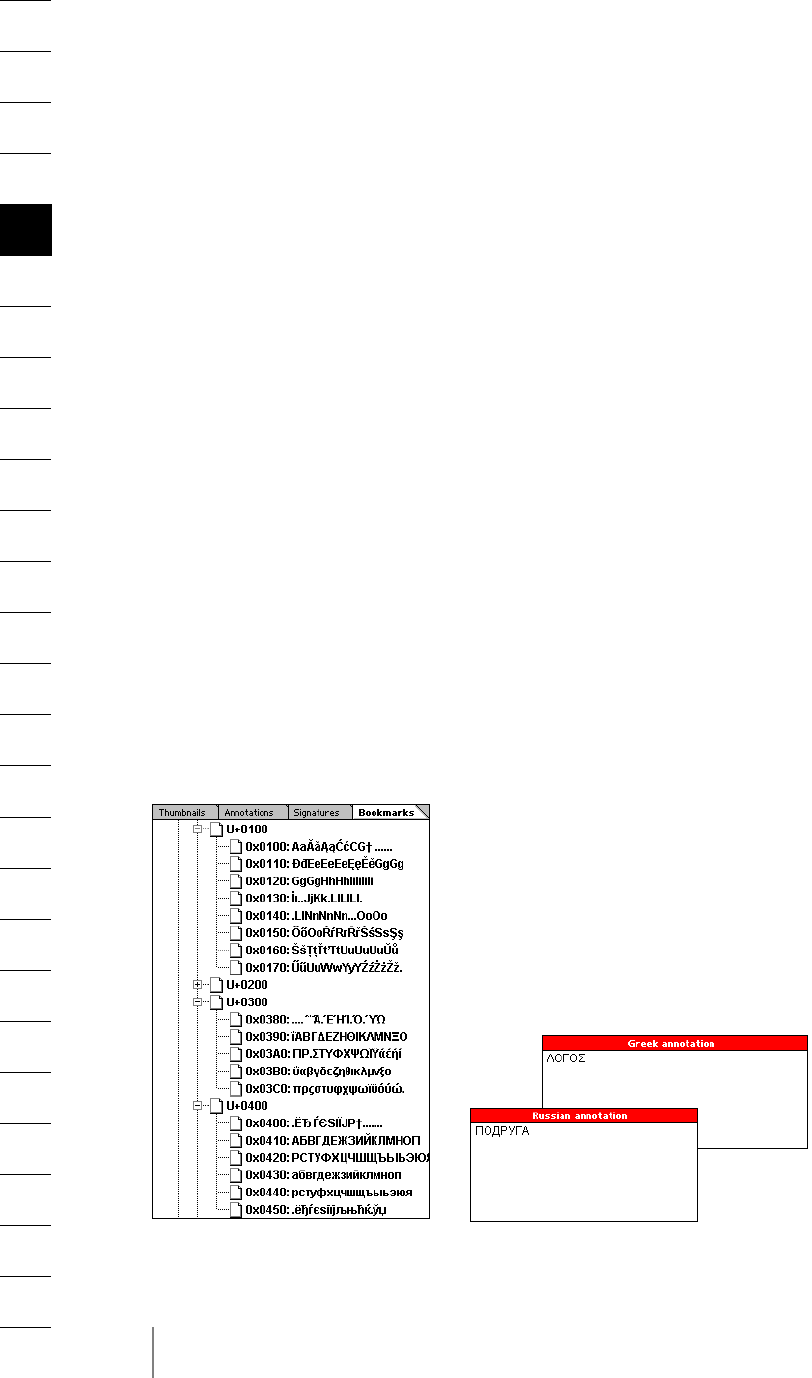
96 Chapter 4: Text Handling
combination. While this is the case for most font/encoding combinations, user-defined
Type 3 fonts, for example, may be missing Unicode information. In this case PDFlib will
not be able to generate a ToUnicode CMap, and text export or searching will not work in
Acrobat.
Generation of a ToUnicode CMap can be globally disabled with the unicodemap pa-
rameter, or on a per-font basis with the PDF_load_font( ) option of the same name. The
default of this parameter/option is true. Setting it to false will decrease the output file
size while potentially disabling proper cut-and-paste support in Acrobat.
Unicode for hypertext strings. Unicode can be supplied for various hypertext ele-
ments, such as bookmarks, contents and title of note annotations (see Figure 4.1), stan-
dard and user-defined document information field contents, description and author of
file attachments.
While PDF supports only Unicode in big-endian UTF-16 format and PDFDocEncoding,
which is a superset of ISO 8859-1 for hypertext elements, PDFlib supports all 8-bit and
Unicode-based encodings as well as system-installed code pages which are allowed for
PDF_load_font( ), and will automatically apply any required conversions.
4.5.2 Content Strings, Hypertext Strings, and Name Strings
There are different string types in the PDFlib API depending on their usage:
>Content strings: these will be used to create genuine page content (page descrip-
tions) according to the encoding chosen by the user for a particular font. All text pa-
rameters of the page content functions in Section 8.3.4, »Simple Text Output«, page
219, and Section 8.3.5, »Multi-Line Text Output with Textflows«, page 227, fall in this
class.
>Hypertext strings: these are mostly used for hypertext functions such as bookmarks
and annotations, and are explicitly labeled Hypertext string in the function descrip-
tions. Many parameters and options of the functions in Section 8.9, »Hypertext
Functions«, page 278, fall in this class, as well as some others.
Fig. 4.1
Unicode bookmarks (left) and Unicode
text annotations (right)

4.5 Unicode Support 97
>Name strings: these are used for external file names, font names, block names, etc.,
and are marked as name string in the function descriptions. They slightly differ from
Hypertext strings, but only in languages which are not Unicode-aware.
Replacement mechanism for Unicode code points with unavailable glyphs. Content
strings will be visualized on the page with a particular font. However, no font contains
all characters contained in the latest Unicode standard. While obtaining suitable fonts is
obviously a task of the PDFlib user, PDFlib tries to work around some common prob-
lems by substituting certain characters with visually similar glyphs if the original glyph
is not available in the font, and the glyphwarning option is set to false. The following (in-
complete) list contains some of these glyph mappings. If the first character in the list is
unavailable in a font, it will automatically be replaced with the second:
U+00A0 (NO-BREAK SPACE) U+0020 (SPACE)
U+00AD (SOFT HYPHEN) U+002D (HYPHEN-MINUS)
U+2010 (HYPHEN) U+002D (HYPHEN-MINUS)
U+03BC (GREEK SMALL LETTER MU) U+00C5 (MICRO SIGN)
U+212B (ANGSTROM SIGN) U+00B5 (LATIN CAPITAL LETTER A WITH RING ABOVE Å)
U+220F (N-ARY PRODUCT) U+03A0 (GREEK CAPITAL LETTER PI)
U+2126 (OHM SIGN) U+03A9 (GREEK CAPITAL LETTER OMEGA)
In addition to the builtin table the fullwidth characters U+FF01 to U+FF5E will be re-
placed with the corresponding ISO 8859-1 characters (i.e. U+0021 to U+007E) if the full-
width variants are not available in a font.
4.5.3 String Handling in Unicode-capable Languages
The following PDFlib language bindings are Unicode-capable:
>COM
>.NET
>Java
>REALbasic
>Tcl
String handling in these environments is straightforward: all strings will automatically
be provided to the PDFlib kernel as Unicode strings in UTF-16 format. The language
wrappers will correctly deal with Unicode strings provided by the client, and automati-
cally set certain PDFlib parameters. This has the following consequences:
>Since the language wrapper automatically sets the textformat, hypertextformat, and
hypertextencoding parameters, these are not accessible by the client, and must not be
used. The PDFlib language wrapper applies all required conversions so that client-
supplied hypertext strings will always arrive in PDFlib in utf16 format and unicode
encoding.
>Since the language environment always passes strings in UTF-16 to PDFlib, UTF-8 can
not be used with Unicode-capable languages. It must be converted to UTF-16 before,
using the native methods provided by the environment.
>Using unicode encoding for page descriptions is the easiest way to deal with encod-
ings in Unicode-aware languages.
>Non-Unicode CMaps for standard CJK fonts on page descriptions must be avoided
since the wrapper will always supply Unicode to the PDFlib core; only Unicode
CMaps can be used.

98 Chapter 4: Text Handling
The overall effect is that clients can provide plain Unicode strings to PDFlib functions
without any additional configuration or parameter settings.
4.5.4 String Handling in non-Unicode-capable Languages
Note This section does not apply to the Unicode-capable languages Java and Tcl.
The following PDFlib language bindings are not Unicode-capable:
>C
>C++
>Cobol
>Perl
>PHP
>Python
>RPG
Although Unicode text can be used in these languages, handling of the various string
types is a bit more complicated:
>Content strings: These are strings used to create genuine page content. Interpretation
of these strings is controlled by the textformat parameter (detailed below) and the
encoding parameter of PDF_load_font( ). If textformat=auto (which is the default) utf16
format will be used for the unicode and glyphid encodings as well as UCS-2 CMaps. For
all other encodings the format will be bytes. The length of UTF-16 strings must be
supplied in a separate length parameter.
>Hypertext strings: string interpretation is controlled by the hypertextformat and hyper-
textencoding parameters (detailed below). If hypertextformat=auto (which is the de-
fault) utf16 format will be used if hypertextencoding=unicode, and bytes otherwise. In
languages which do not support native string objects (Cobol, C, and RPG) the length
of UTF-16 strings must be supplied in a separate length parameter.
>Name strings: these are interpreted slightly differently from page description strings,
depending on the length parameter and the existence of a BOM at the beginning of
the string. In C, if the length parameter is different from 0 the string will be interpret-
ed as UTF-16. Otherwise (i.e., if the length parameter is 0, the function doesn’t provide
one, or a language other than C is used) it will be interpreted as UTF-8 if it starts with
a UTF-8 BOM, or as EBCDIC UTF-8 if it starts with an EBCDIC UTF-8 BOM, or as host if
no BOM is found (or ebcdic on EBCDIC-based platforms).
Strings in option lists. Strings within option lists require special attention since they
cannot be expressed as Unicode strings in UTF-16 format, but only as byte strings. For
this reason UTF-8 is used for Unicode options. By looking for a BOM at the beginning of
an option PDFlib decides how to interpret it. The BOM will be used to determine the for-
mat of the string, and the string type (content string, hypertext string, or name string as
defined above) will be used to determine the appropriate encoding. More precisely, in-
terpreting a string option works as follows:
>If the option starts with a UTF-8 BOM (\xEF\xBB\xBF) it will interpreted as UTF-8.
>If the option starts with an EBCDIC UTF-8 BOM (\x57\x8B\xAB) it will be interpreted as
EBCDIC UTF-8.
>If no BOM is found, the string will be treated as winansi (or ebcdic on EBCDIC-based
platforms).

4.5 Unicode Support 99
Note The PDF_utf16_to_utf8( ) utility function can be used to create UTF-8 strings from UTF-16
strings, which is useful for creating option lists with Unicode values.
Text Format for Unicode Strings. The Unicode standard supports several transforma-
tion formats for storing the actual byte values which comprise a Unicode string. These
vary in the number of bytes per character and the ordering of bytes within a character.
Unicode strings in PDFlib can be supplied in UTF-8 or UTF-16 formats with any byte or-
dering. This can be controlled with the textformat parameter for all text on page descrip-
tions, and the hypertextformat parameter for all hypertext elements. Table 4.3 lists the
values which are supported for both of these parameters.
The default setting for the textformat parameter is utf16 for Unicode-capable languages,
and auto otherwise.
Although the textformat setting is in effect for all encodings, it will be most useful for
unicode encoding. Table 4.4 details the interpretation of text strings for various combi-
nations of font encodings and textformat settings.
Table 4.3 Text formats
textformat explanation
bytes One byte in the string corresponds to one character. This is mainly useful for 8-bit encodings.
utf8 Strings are expected in UTF-8 format.
ebcdicutf8 Strings are expected in EBCDIC-coded UTF-8 format (only on iSeries and zSeries).
utf16 Strings are expected in UTF-16 format. A Unicode Byte Order Mark (BOM) at the start of the string
will be evaluated and then removed. If no BOM is present the string is expected in the machine’s
native byte ordering (on Intel x86 architectures the native byte order is little-endian, while on
Sparc and PowerPC systems it is big-endian).
utf16be Strings are expected in UTF-16 format in big-endian byte ordering. There is no special treatment
for Byte Order Marks.
utf16le Strings are expected in UTF-16 format in little-endian byte ordering. There is no special treatment
for Byte Order Marks.
auto Equivalent to bytes for 8-bit encodings, and utf16 for wide-character addressing (unicode,
glyphid, or a UCS2 or UTF16 CMap). This setting will provide proper text interpretation in most
environments which do not use Unicode natively.
Table 4.4 Relationship of font encodings and text format
font encoding textformat = bytes textformat = utf8, utf16, utf16be, or utf16le
8-bit, or builtin en-
coding for TTF/OTF
8-bit codes convert Unicode values to 8-bit codes according to
the chosen encoding1
builtin encoding for
PostScript
8-bit codes only in Unicode-capable language bindings. PDFlib
will throw an exception otherwise
U+XXXX 8-bit codes will be added to the off-
set XXXX to address Unicode values
convert Unicode values to 8-bit codes according to
the chosen Unicode offset
glyphid 8-bit codes address glyph ids from 0
to 255
Unicode values will be interpreted as glyph ids2
unicode and UCS2-or
UTF16 CMaps
8-bit codes address Unicode values
from U+0000 to U+00FF
any Unicode value, encoded according to the
chosen text format1
any other CMap
(not Unicode-based)
any single- or multibyte codes
according to the chosen CMap
only in Unicode-capable language bindings. PDFlib
will throw an exception otherwise

100 Chapter 4: Text Handling
Hypertext encoding. The hypertextencoding parameter works analogous to the
encoding parameter of PDF_load_font( ), and controls the 8-bit encoding of hypertext
strings. It can attain most encoding names known to PDFlib, including auto (see Section
4.4, »Encoding Details«, page 89). Note that glyphid, builtin, and CMap names are not al-
lowed for this parameter. The default setting for the hypertextencoding parameter is
auto.
Hypertext format. Similarly to the textformat parameter, the format of hypertext
strings can be controlled with the hypertextformat parameter. However, interpretation
of the allowed values is somewhat different for the hypertextformat parameter. While
utf8, utf16, utf16be, and utf16le have the same meaning as for the textformat parameter,
the behavior of bytes and auto is slightly different:
>auto: UTF-16 strings with big-endian BOM will be detected (in C such strings must be
terminated with a double-null), and Unicode output will be generated. If the string
does not start with a big-endian BOM it will be interpreted as an 8-bit encoded string
according to the hypertextencoding parameter (see above). If it contains at least one
character which is not contained in PDFDocEncoding, the complete string will be
converted to a big-endian UTF-16 string, and written to the PDF output as Unicode.
Otherwise it will be written to the PDF output as 8-bit encoded PDFDocEncoding text.
>bytes: one byte in the string corresponds to one character, and the string will be out-
put without any interpretation. This is mainly useful for 8-bit encodings. In addi-
tion, UTF-16 strings with big-endian BOM will automatically be detected. In C, such
strings must be terminated with a double-null unless the length in bytes is explicitly
supplied in the respective function call.
The default setting for the hypertextformat parameter is auto.
4.5.5 Character References
Some environments require the programmer to write source code in 8-bit encodings
(such as winansi, macroman, or ebcdic). This makes it cumbersome to include isolated
Unicode characters in 8-bit encoded text without changing all characters in the text to
multi-byte encoding. In order to aid developers in this situation, PDFlib supports char-
acter references, a method known from markup languages such as SGML and HTML.
HTML-style character references. PDFlib supports all numeric character references and
character entity references defined in HTML 4.01. Numeric character references can be
supplied in decimal or hexadecimal notation for the character’s Unicode value.
Note Code points 128-159 (decimal) or 0x80-0x9F (hexadecimal) do not reference winansi code
points. In Unicode they do not refer to printable characters, but only control characters.
The following are examples for valid character references along with a description of
the resulting character:
1. If the Unicode character is not available in the font PDFlib will issue a warning and replace it with the space character. (this can
be controlled via the glyphwarning parameter).
2. If the glyph id is not available in the font PDFlib will issue a warning and replace it with glyph id 0.
1. See www.w3.org/TR/REC-html40/charset.html#h-5.3

4.5 Unicode Support 101
­ soft hyphen
­ soft hyphen
­ soft hyphen
å letter a with small circle above (decimal)
å letter a with small circle above (hexadecimal, lowercase x)
å letter a with small circle above (hexadecimal, uppercase X)
€ Euro glyph (hexadecimal)
€ Euro glyph (decimal)
€ Euro glyph (entity name)
< less than sign
> greater than sign
& ampersand sign
Α Greek Alpha
Note Although you can reference any Unicode character with character references (e.g. Greek char-
acters and mathematical symbols), the font will not automatically be switched. In order to ac-
tually use such characters you must explicitly select an appropriate font if the current font does
not contain the specified characters.
Additional references for control characters in Textflows. In addition to the HTML-
style references above PDFlib supports custom character entity references which can be
used to specify control characters for textflows. Table 4.5 lists these additional character
references.
Using character references. Character references can be used in all content strings, hy-
pertext strings, and name strings, e.g. in text which will be placed on the page using the
show or textflow functions, as well as in text supplied to the hypertext functions.
Character references will not be converted by default; you must explicitly set the
charref parameter to true if you want to use character references in all content strings:
Table 4.5 Control characters and their meaning in Textflows
Unicode character
entity name equiv. text-
flow option
meaning within textflows in Unicode-compatible
fonts
U+0020 SP, space space align words and break lines
U+00A0 NBSP, nbsp (none) (no-break space) space character which will not
break lines
U+0009 HT, hortab (none) horizontal tab: will be processed according to the
ruler, tabalignchar, and tabalignment options
U+002D HY, hyphen (none) separator character for hyphenated words
U+00AD SHY, shy (none) (soft hyphen) hyphenation opportunity, only visible
at line breaks
U+000B
U+2028
VT, verttab
LS, linesep
nextline (next line) forces a new line
U+000A
U+000D
U+000D and
U+000A
U+0085
U+2029
LF, linefeed
CR, return
CRLF
NEL, newline
PS, parasep
next-
paragraph
(next paragraph) Same effect as »next line«; in
addition, the parindent option will affect the next
line.
U+000C FF, formfeed return end of a paragraph; the function PDF_fit_
textflow( ) will return the string _nextpage.

102 Chapter 4: Text Handling
PDF_set_parameter(p, "charref", "true");
Character references can also be enabled for textflow processing by supplying the
charref option to PDF_create_textflow( ) (either directly or as an inline option), PDF_fit_
textline( ), or PDF_fill_textblock( ).
When character references are enabled you can supply numeric or entity references
in 8-bit-encoded text:
PDF_set_parameter(p, "charref", "true");
PDF_set_parameter(p, "textformat", "bytes");
font = PDF_load_font(p, "Helvetica", 0, "unicode", "");
PDF_setfont(p, font, 24);
PDF_show_xy(p, "Price: 500€", 50, 500);
Character references will not be substituted in option lists, but they will be recognized
in options with the Unichar data type (see Section 3.1.4, »Option Lists«, page 48). This
recognition will always be active; it is not subject to the charref parameter.
4.5.6 Unicode-compatible Fonts
Precise Unicode semantics are important for PDFlib’s internal processing, and crucial
for properly extracting text from a PDF document, or otherwise reusing the document,
e.g., converting the contents to another format. This is especially important when creat-
ing Tagged PDF which has strict requirements regarding Unicode compliance (see Sec-
tion 7.5.1, »Generating Tagged PDF with PDFlib«, page 185). In addition to Tagged PDF
Unicode compatibility is relevant for the textflow feature.
Unicode-compatible fonts. A font loaded with PDF_load_font( ) – more precisely: a
combination of font and encoding – is considered Unicode-compatible if the encoding
used for loading the font complies to all of the following conditions:
>The encoding builtin is only allowed for the Symbol and ZapfDingbats fonts and Post-
Script-based OpenType fonts.
>The encoding is not glyphid.
>If the encoding is one of the predefined CMaps in Table 4.7 it must be one of the UCS2
or UTF16 CMaps.
Unicode-compatible output. If you want to make sure that text can reliably be extract-
ed from the generated PDF, and for generating Tagged PDF the output must be Unicode-
compatible. PDF output created with PDFlib will be Unicode-compatible if all of the fol-
lowing conditions are true:
>All fonts used in the document must be Unicode-compatible as defined above, or use
one of the predefined CMaps in Table 4.7.
>If the encoding has been constructed with PDF_encoding_set_char( ) and glyph names
without corresponding Unicode values, or loaded from an encoding file, all glyph
names must be contained in the Adobe Glyph List or the list of well-known glyph
names in the Symbol font.
>The unicodemap parameter or option is true.
>All text strings must have clearly defined semantics according to the Unicode stan-
dard, i.e. characters from the Private Use Area (PUA) are not allowed.

4.5 Unicode Support 103
>PDF pages imported with PDI must be Unicode-compatible. PDI does not change the
Unicode compatibility status of imported pages: it will neither remove nor add Uni-
code information.
When creating Tagged PDF output, text portions which violate these rules can still be
made Unicode-compatible by supplying proper Unicode text with the ActualText option
in PDF_begin_item( ) .

104 Chapter 4: Text Handling
4.6 Text Metrics and Text Variations
4.6.1 Font and Character Metrics
Text position. PDFlib maintains the text position independently from the current
point for drawing graphics. While the former can be queried via the textx/texty parame-
ters, the latter can be queried via currentx/currenty.
Character metrics. PDFlib uses the character and font metrics system used by Post-
Script and PDF which shall be briefly discussed here.
The font size which must be specified by PDFlib users is the minimum distance be-
tween adjacent text lines which is required to avoid overlapping character parts. The
font size is generally larger than individual characters in a font, since it spans ascender
and descender, plus possibly additional space between lines.
The leading (line spacing) specifies the vertical distance between the baselines of ad-
jacent lines of text. By default it is set to the value of the font size. The capheight is the
height of capital letters such as T or H in most Latin fonts. The ascender is the height of
lowercase letters such as f or d in most Latin fonts. The descender is the distance from the
baseline to the bottom of lowercase letters such as j or p in most Latin fonts. The de-
scender is usually negative. The values of capheight, ascender, and descender are mea-
sured as a fraction of the font size, and must be multiplied with the required font size
before being used.
The values of capheight, ascender, and descender for a specific font can be queried
from PDFlib as follows:
float capheight, ascender, descender, fontsize;
...
font = PDF_load_font(p, "Times-Roman", 0, "winansi", "");
PDF_setfont(p, font, fontsize);
capheight = PDF_get_value(p, "capheight", font) * fontsize;
ascender = PDF_get_value(p, "ascender", font) * fontsize;
descender = PDF_get_value(p, "descender", font) * fontsize;
Note The position and size of superscript and subscript cannot be queried from PDFlib.
CPI calculations. While most fonts have varying character widths, so-called mono-
spaced fonts use the same widths for all characters. In order to relate PDF font metrics to
the characters per inch (CPI) measurements often used in high-speed print environ-
capheight
descender
ascender
font size
baseline
Fig. 4.2 Font and character metrics
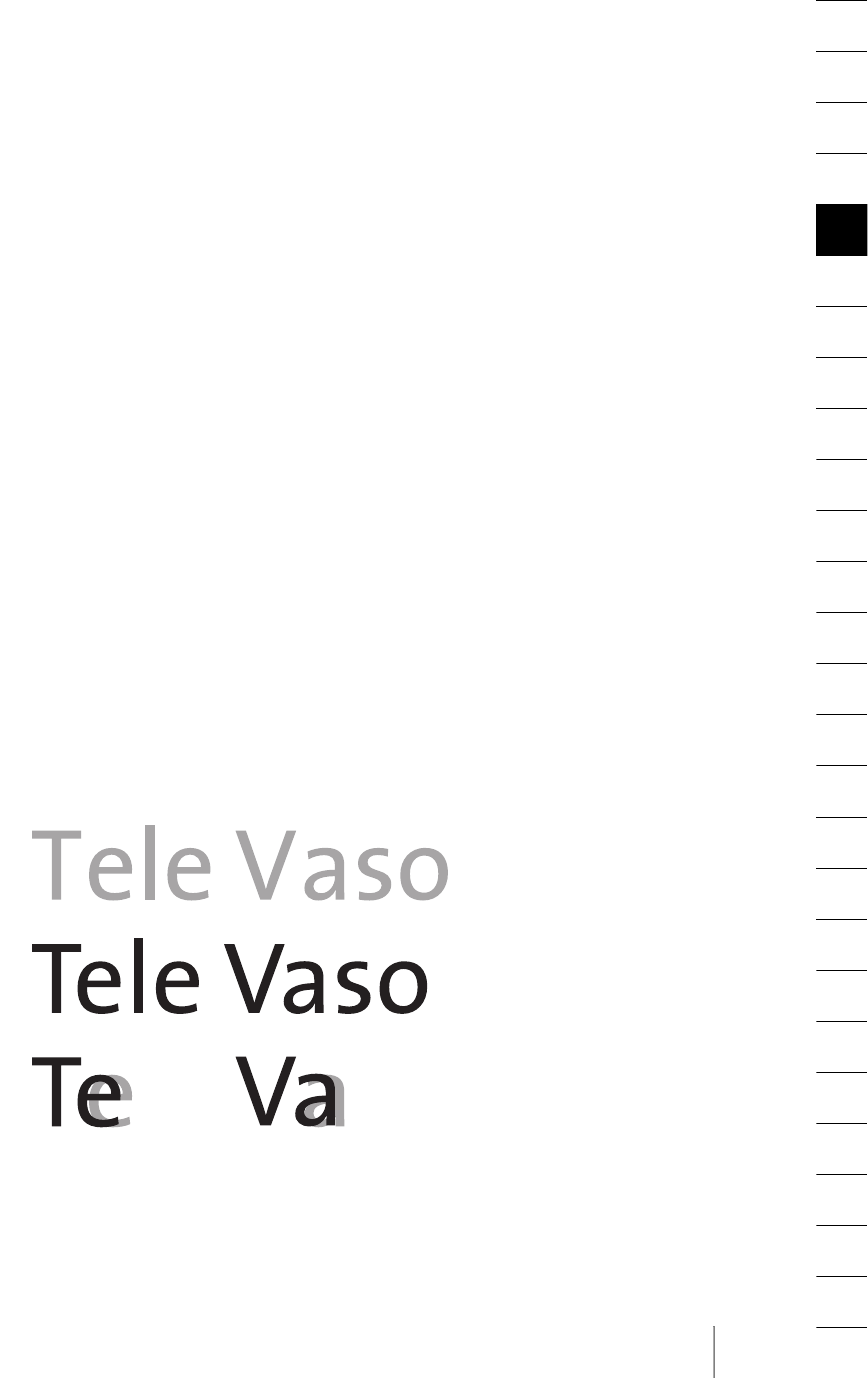
4.6 Text Metrics and Text Variations 105
ments, some calculation examples for the mono-spaced Courier font may be helpful. In
Courier, all characters have a width of 600 units with respect to the full character cell of
1000 units per point (this value can be retrieved from the corresponding AFM metrics
file). For example, with 12 point text all characters will have an absolute width of
12 points * 600/1000 = 7.2 points
with an optimal line spacing of 12 points. Since there are 72 points to an inch, exactly 10
characters of Courier 12 point will fit in an inch. In other words, 12 point Courier is a 10
cpi font. For 10 point text, the character width is 6 points, resulting in a 72/6 = 12 cpi
font. Similarly, 8 point Courier results in 15 cpi.
4.6.2 Kerning
Some character combinations can lead to unpleasant appearance. For example, two Vs
next to each other can look like a W, and the distance between T and e must be reduced
in order to avoid ugly white space. This compensation is referred to as kerning. Many
fonts contain comprehensive kerning tables which contain spacing adjustment values
for certain critical letter pairs.
PDFlib supports kerning for PostScript, TrueType and OpenType fonts, but not for
PostScript host fonts on the Mac (fonts fetched from the operating system). There are
two PDFlib controls for the kerning behavior:
>By default, kerning information in a font is not read when loading a font. If kerning
is desired the kerning option must be set in the respective call to PDF_load_font( ). This
instructs PDFlib to read the font’s kerning data (if available).
>When a font for which kerning data has been read is used with any text output func-
tion, the positional corrections provided by the kerning data will be applied. How-
ever, kerning can also be disabled by setting the kerning parameter to false:
PDF_set_parameter(p, "kerning", "false"); /* disable kerning */
No kerning
Kerning applied
Character movement caused by kerning
Fig. 4.3 Kerning

106 Chapter 4: Text Handling
Temporarily disabling kerning may be useful, for example, for tabular figures when
the kerning data contains pairs of figures, since kerned figures wouldn’t line up in a
table.
Kerning is applied in addition to any character spacing, word spacing, and horizontal
scaling which may be activated. Note, however, that the combination of horizontal
spacing and kerning only works correctly in Acrobat 4.05 and above, but not any older
versions.
PDFlib does not have any limit for the number of kerning pairs in a font.
4.6.3 Text Variations
Artificial font styles. Bold and italic variations of a font should normally be created by
choosing an appropriate font. In addition, PDFlib also supports artificial font styles:
based on a regular font Acrobat will simulate bold, italic, or bold-italic styles by embold-
ening or slanting the base font. The aesthetic quality of artificial font styles does not
match those of real bold or italic fonts which have been fine-tuned by the font designer.
However, in situations where a particular font style is not available directly, artificial
styles can be used as a workaround. In particular, artificial font styles are useful for the
standard CJK fonts which support only normal fonts, but not any bold or italic variants.
Note Using the fontstyle feature for fonts other than the standard CJK fonts is not recommended.
Also note that the fontstyle feature may not work in PDF viewers other than Adobe Acrobat.
Due to restrictions in Adobe Acrobat, artificial font styles work only if all of the follow-
ing conditions are met:
>The base font is a TrueType or OpenType font, including standard and custom CJK
fonts. The base font must not be one of the PDF core fonts (see Section 4.3.2, »Font
Embedding«, page 85).
>The encoding is winansi, macroman, or one of the predefined CJK CMaps listed in Ta-
ble 4.7 (since otherwise PDFlib will force font embedding).
>The embedding option must be set to false.
>The base font must be installed on the target system where the PDF will be viewed.
While PDFlib will check the first three conditions, it is the user’s responsibility to ensure
the last one.
Artificial font styles can be requested by using one of the normal (no change of the
base font), bold, italic, or bolditalic keywords for the fontstyle option of PDF_load_font( ):
PDF_load_font(p, "HeiseiKakuGo-W5", 0, "UniJIS-UCS2-H", "fontstyle bold");
The fontstyle feature should not be confused with the similar concept of Windows font
style names. While fontstyle only works under the conditions above and relies on Acro-
bat for simulating the artificial font style, the Windows style names are entirely based
on the Windows font selection engine and cannot be used to simulate non-existent
styles.
Simulated italic fonts. As an alternative to the fontstyle feature the italicangle parame-
ter or option can be used to simulate italic fonts when only a regular font is available.
This method creates a fake italic font by skewing the regular font by a user-provided an-
gle, and does not suffer from the fontstyle restrictions mentioned above. Negative val-
ues will slant the text clockwise. Be warned that using a real italic or oblique font will re-

4.6 Text Metrics and Text Variations 107
sult in much more pleasing output. However, if an italic font is not available the
italicangle parameter can be used to easily simulate one. This feature may be especially
useful for CJK fonts. Typical values for the italicangle parameter are in the range -12 to -15
degrees:
PDF_set_value(p, "italicangle", -12); /* create fake italic font */
Underline, overline, and strikeout text. PDFlib can be instructed to put lines below,
above, or in the middle of text. The stroke width of the bar and its distance from the
baseline are calculated based on the font’s metrics information. In addition, the current
values of the horizontal scaling factor and the text matrix are taken into account when
calculating the width of the bar. PDF_set_parameter( ) can be used to switch the under-
line, overline, and strikeout feature on or off as follows:
PDF_set_parameter(p, "underline", "true"); /* enable underlines */
The current stroke color is used for drawing the bars. The current linecap and dash pa-
rameters are ignored, however. Aesthetics alert: in most fonts underlining will touch
descenders, and overlining will touch diacritical marks atop ascenders.
Note The underline, overline, and strikeout features are not supported for standard CJK fonts unless
a Unicode CMap is used.
Text rendering modes. PDFlib supports several rendering modes which affect the ap-
pearance of text. This includes outline text and the ability to use text as a clipping path.
Text can also be rendered invisibly which may be useful for placing text on scanned im-
ages in order to make the text accessible to searching and indexing, while at the same
time assuring it will not be visible directly. The rendering modes are described in Table
8.17. They can be set with PDF_set_value( ) and the textrendering parameter.
PDF_set_value(p, "textrendering", 1); /* set stroked text rendering (outline text) */
When stroking text, graphics state parameters such as linewidth and color will be ap-
plied to the glyph outline. The rendering mode has no effect on text displayed using a
Type 3 font.
Text color. Text will usually be display in the current fill color, which can be set using
PDF_setcolor( ). However, if a rendering mode other than 0 has been selected, both stroke
and fill color may affect the text depending on the selected rendering mode.

108 Chapter 4: Text Handling
4.7 Chinese, Japanese, and Korean Text
4.7.1 CJK support in Acrobat and PDF
Acrobat/PDF supports a set of standard CJK fonts without font embedding, as well as
custom embedded CJK fonts. While embedded CJK fonts will work in all versions of
Acrobat without further ado, using any of the standard CJK fonts in Acrobat requires the
user to do one of the following1:
>Use a localized CJK version of Acrobat.
>If you use any non-CJK version of the full Acrobat product, select the Acrobat install-
er’s option »Asian Language Support« (Windows) or »Language Kit« (Mac). The re-
quired support files (fonts and CMaps) will be installed from the Acrobat product
CD-ROM.
>If you use Acrobat Reader, install one of the Asian Font Packs which are available on
the Acrobat product CD-ROM, or on the Web.2
Printing PDF documents with CJK text. Printing CJK documents gives rise to a number
of issues which are outside the scope of this manual. However, we will supply some use-
ful hints for the convenience of PDFlib users. If you have trouble printing CJK docu-
ments (especially those using the standard fonts) with Acrobat, consider the following:
>Acrobat’s CJK support is based on CID fonts. Printing CID fonts does not work on all
PostScript printers. Native CID font support has only been integrated in PostScript
version 2015, i.e., PostScript Level 1 and early Level 2 printers do not natively support
CID fonts. However, for early Level 2 devices the printer driver is supposed to take
care of this by downloading an appropriate set of compatibility routines to pre-2015
Level 2 printers.
>Due to the large number of characters CID fonts consume very much printer memo-
ry unless font subsetting has been applied. Disk files for full CJK fonts typically are 5
to 10 MB in size. Not all printers have enough memory for printing such fonts. For
example, in our testing we found that we had to upgrade a Level 3 laser printer from
16 MB to 48 MB RAM in order to reliably print PDF documents with CID fonts.
>Non-Japanese PostScript printers do not have any Japanese fonts installed. For this
reason, you must check Download Asian Fonts in Acrobat’s print dialog.
>If you can’t successfully print using downloaded fonts, check Print as image in Acro-
bat’s print dialog. This instructs Acrobat to send a bitmapped version of the page to
the printer (300 dpi, though).
4.7.2 Standard CJK Fonts and CMaps
Historically, a wide variety of CJK encoding schemes has been developed by diverse
standards bodies, companies, and other organizations. Fortunately, all prevalent encod-
ings are supported by Acrobat and PDF by default. Since the concept of an encoding is
much more complicated for CJK text than for Latin text, simple 8-bit encodings no long-
er suffice. Instead, PostScript and PDF use the concept of character collections and char-
acter maps (CMaps) for organizing the characters in a font.
1. This is a good opportunity to praise Ken Lunde’s seminal tome »CJKV information processing – Chinese, Japanese, Korean
& Vietnamese Computing« (O’Reilly 1999, ISBN 1-56592-224-7), as well as his work at Adobe since he’s one of the driving
forces behind CJK support in PostScript and PDF.
2. See www.adobe.com/products/acrobat/acrrasianfontpack.html
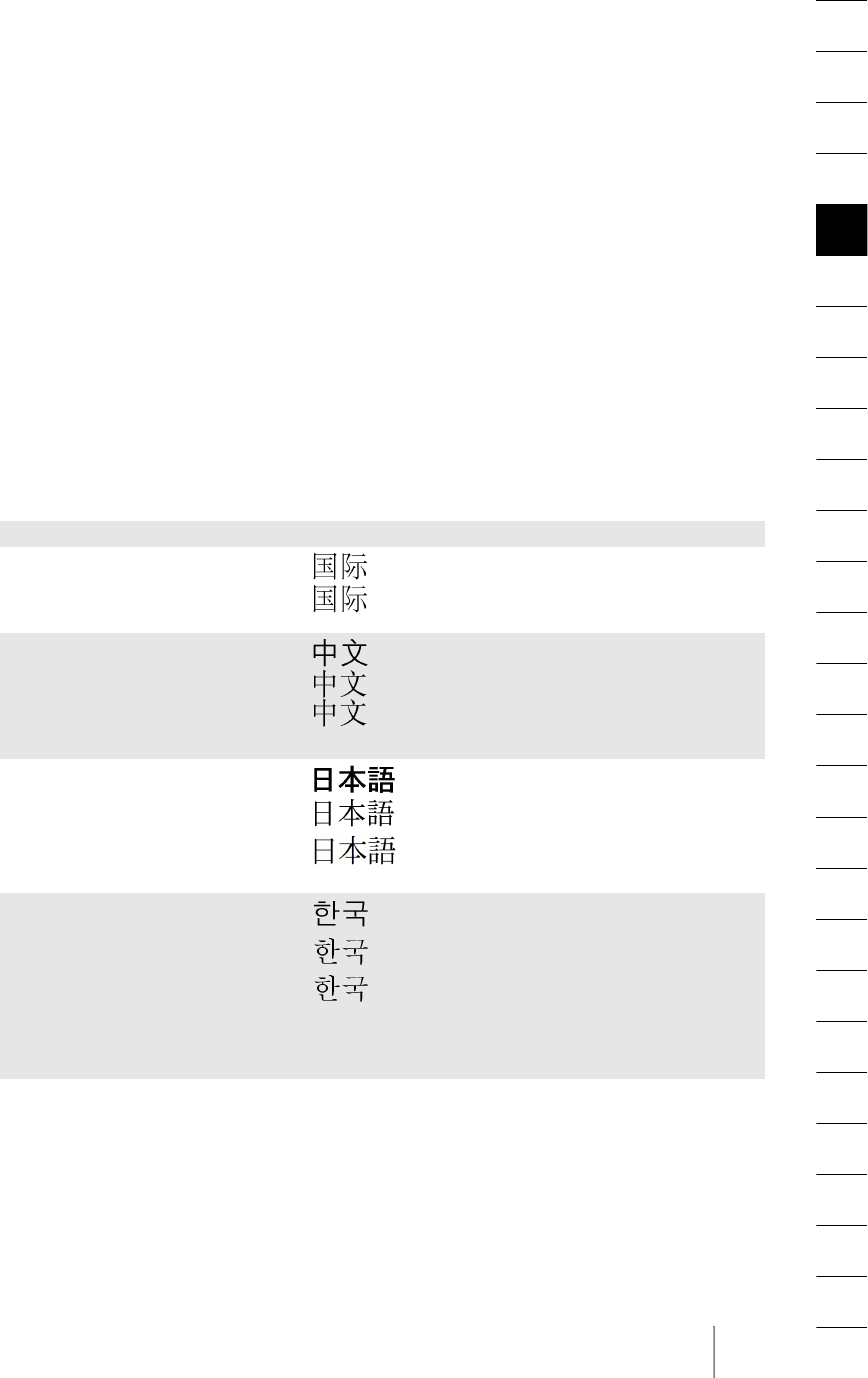
4.7 Chinese, Japanese, and Korean Text 109
Acrobat supports a number of standard fonts for CJK text. These fonts are supplied
with the Acrobat installation (or the Asian FontPack), and therefore don’t have to be em-
bedded in the PDF file. These fonts contain all characters required for common encod-
ings, and support both horizontal and vertical writing modes. The standard fonts and
CMaps are documented in Table 4.6. The Acrobat 4 fonts can also be used with Acrobat 5,
but the corresponding Acrobat 5 fonts will be used for display and printing if a required
font is not installed on the system.
Note Acrobat’s standard CJK fonts do not support bold and italic variations. However, these can be
simulated with the artificial font style feature (see Section 4.6.3, »Text Variations«, page 106).
As can be seen from the table, the default CMaps support most CJK encodings used on
Mac, Windows, and Unix systems, as well as several other vendor-specific encodings. In
particular, the major Japanese encoding schemes Shift-JIS, EUC, ISO 2022, and Unicode
(UCS-2 and UTF-16) are supported. Tables with all supported characters are available
from Adobe1; CMap descriptions can be found in Table 4.7.
Note Unicode-capable language bindings must only use Unicode-compatible CMaps (UCS2 or
UTF16). Other CMaps are not supported.
1. See partners.adobe.com/asn/tech/type/cidfonts.jsp for a wealth of resources related to CID fonts, including tables with
all supported glyphs (search for »character collection«).
Table 4.6 Acrobat’s standard fonts and CMaps (encodings) for Japanese, Chinese, and Korean text
locale font name sample supported CMaps (encodings)
Simplified
Chinese
STSong-Light1
STSongStd-Light-Acro2
AdobeSongStd-Light-Acro3
1. Available in Acrobat 4; Acrobat 5 and 6 will substitute these with different fonts.
2. Available in Acrobat 5 only
3. Available in Acrobat 6 only
GB-EUC-H, GB-EUC-V, GBpc-EUC-H, GBpc-EUC-V,
GBK-EUC-H, GBK-EUC-V, GBKp-EUC-H4, GBKp-EUC-
V2, GBK2K-H2, GBK2K-V2, UniGB-UCS2-H, UniGB-
UCS2-V, UniGB-UTF16-H5, UniGB-UTF16-V5
4. Only available when generating PDF 1.4 or above
5. Only available when generating PDF 1.5
Traditional
Chinese
MHei-Medium1
MSung-Light1
MSungStd-Light-Acro2
AdobeMingStd-Light-Acro3
B5pc-H, B5pc-V, HKscs-B5-H4, HKscs-B5-V4, ETen-B5-
H, ETen-B5-V, ETenms-B5-H, ETenms-B5-V, CNS-EUC-
H, CNS-EUC-V, UniCNS-UCS2-H, UniCNS-UCS2-V,
UniCNS-UTF16-H5, UniCNS-UTF16-V5
Japanese HeiseiKakuGo-W51
HeiseiMin-W31
KozMinPro-Regular-Acro2, 6
KozGoPro-Medium-Acro3, 6
83pv-RKSJ-H, 90ms-RKSJ-H, 90ms-RKSJ-V, 90msp-
RKSJ-H, 90msp-RKSJ-V, 90pv-RKSJ-H, Add-RKSJ-H,
Add-RKSJ-V, EUC-H, EUC-V, Ext-RKSJ-H, Ext-RKSJ-V,
H, V, UniJIS-UCS2-H, UniJIS-UCS2-V, UniJIS-UCS2-
HW-H6, UniJIS-UCS2-HW-V6, UniJIS-UTF16-H5,
UniJIS-UTF16-V5
Korean HYGoThic-Medium1
HYSMyeongJo-Medium1
HYSMyeongJoStd-Medium-
Acro2
AdobeMyungjoStd-
Medium-Acro3
KSC-EUC-H, KSC-EUC-V, KSCms-UHC-H, KSCms-
UHC-V, KSCms-UHC-HW-H, KSCms-UHC-HW-V,
KSCpc-EUC-H, UniKS-UCS2-H, UniKS-UCS2-V, UniKS-
UTF16-H5, UniKS-UTF16-V5

110 Chapter 4: Text Handling
Horizontal and vertical writing mode. PDFlib supports both horizontal and vertical
writing modes for standard CJK fonts and CMaps. The mode is selected along with the
encoding by choosing the appropriate CMap name. CMaps with names ending in -H se-
lect horizontal writing mode, while the -V suffix selects vertical writing mode.
Note Some PDFlib functions change their semantics according to the writing mode. For example,
PDF_continue_text( ) should not be used in vertical writing mode, and the character spacing
must be negative in order to spread characters apart in vertical writing mode.
CJK text encoding for standard CMaps. The client is responsible for supplying text en-
coded such that it matches the requested CMap. PDFlib does not check whether the sup-
plied text conforms to the requested CMap.
For multi-byte encodings, the high-order byte of a character must appear first. Alter-
natively, the byte ordering and text format can be selected with the textformat parame-
ter (see Section 4.5.1, »Unicode for Page Content and Hypertext«, page 95) provided a
Unicode CMap (UCS-2 or UTF-16) is used.
Since several of the supported encodings may contain null characters in the text
strings, C developers must take care not to use the PDF_show( ) etc. functions, but in-
stead PDF_show2( ) etc. which allow for arbitrary binary strings along with a length pa-
rameter. For all other language bindings, the text functions support binary strings, and
PDF_show2( ) etc. are not required.
Restrictions for standard CJK fonts and CMaps. The following features are not sup-
ported for standard CJK fonts in combination with non-Unicode CMaps (Unicode CMaps
are those with UCS2 or UTF16 in their name):
>calculating the extent of text with PDF_stringwidth( ) (but see Section 4.7.4, »Forcing
monospaced Fonts«, page 114)
>using PDF_create_textflow( ) and related Textflow functions
>activating underline/overline/strikeout mode
>retrieving the textx/texty position
These restrictions hold for standard CJK fonts. Note that although the widths of CJK text
cannot be queried in these cases, the width will nevertheless be generated correctly in
the PDF output. Also note the above features are well supported for custom CJK fonts.
Note The UniJIS-UCS2-HW-H/V CMaps are incorrectly treated as monospaced. This will be fixed in a
future release.
Standard CJK font example. Standard CJK fonts can be selected with the PDF_load_
font( ) interface, supplying the CMap name as the encoding parameter. However, you
must take into account that a given CJK font supports only a certain set of CMaps (see
Table 4.6), and that Unicode-aware language bindings support only UCS2-compatible
CMaps. The KozMinPro-Regular-Acro sample in Table 4.6 can been generated with the fol-
lowing code:
font = PDF_load_font(p, "KozMinPro-Regular-Acro", 0, "UniJIS-UCS2-H", "");
PDF_setfont(p, font, 24);
PDF_set_text_pos(p, 50, 500);
/* We use UTF-16 format with little-endian (LE) byte ordering */
6. The HW CMaps are not allowed for the KozMinPro-Regular-Acro and KozGoPro-Medium-Acro fonts because these fonts contain
only proportional ASCII characters, but not any halfwidth forms.

4.7 Chinese, Japanese, and Korean Text 111
Table 4.7 Predefined CMaps for Japanese, Chinese, and Korean text (from the PDF Reference)
locale CMap name character set and text format
Simplified
Chinese
UniGB-UCS2-H
UniGB-UCS2-V
Unicode (UCS-2) encoding for the Adobe-GB1 character collection
UniGB-UTF16-H
UniGB-UTF16-V
Unicode (UTF-16BE) encoding for the Adobe-GB1 character collection.
Contains mappings for all characters in the GB18030-2000 character set.
GB-EUC-H
GB-EUC-V
Microsoft Code Page 936 (charset 134), GB 2312-80 character set, EUC-CN
encoding
GBpc-EUC-H
GBpc-EUC-V
Macintosh, GB 2312-80 character set, EUC-CN encoding, Script Manager
code 2
GBK-EUC-H, -V Microsoft Code Page 936 (charset 134), GBK character set, GBK encoding
GBKp-EUC-H
GBKp-EUC-V
Same as GBK-EUC-H, but replaces half-width Latin characters with
proportional forms and maps code 0x24 to dollar ($) instead of yuan (¥).
GBK2K-H, -V GB 18030-2000 character set, mixed 1-, 2-, and 4-byte encoding
Traditional
Chinese
UniCNS-UCS2-H
UniCNS-UCS2-V
Unicode (UCS-2) encoding for the Adobe-CNS1 character collection
UniCNS-UTF16-H
UniCNS-UTF16-V
Unicode (UTF-16BE) encoding for the Adobe-CNS1 character collection.
Contains mappings for all of HKSCS-2001 (2- and 4-byte character codes)
B5pc-H, -V Macintosh, Big Five character set, Big Five encoding, Script Manager code 2
HKscs-B5-H
HKscs-B5-V
Hong Kong SCS (Supplementary Character Set), an extension to the Big
Five character set and encoding
ETen-B5-H, -V Microsoft Code Page 950 (charset 136), Big Five with ETen extensions
ETenms-B5-H
ETenms-B5-V
Same as ETen-B5-H, but replaces half-width Latin characters with
proportional forms
CNS-EUC-H, -V CNS 11643-1992 character set, EUC-TW encoding
Japanese UniJIS-UCS2-H, -V Unicode (UCS-2) encoding for the Adobe-Japan1 character collection
UniJIS-UCS2-HW-H
UniJIS-UCS2-HW-V
Same as UniJIS-UCS2-H, but replaces proportional Latin characters with
half-width forms
UniJIS-UTF16-H
UniJIS-UTF16-V
Unicode (UTF-16BE) encoding for the Adobe-Japan1 character collection.
Contains mappings for all characters in the JIS X 0213:1000 character set.
83pv-RKSJ-H Mac, JIS X 0208 with KanjiTalk6 extensions, Shift-JIS, Script Manager code 1
90ms-RKSJ-H
90ms-RKSJ-V
Microsoft Code Page 932 (charset 128), JIS X 0208 character set with NEC
and IBM extensions
90msp-RKSJ-H
90msp-RKSJ-V
Same as 90ms-RKSJ-H, but replaces half-width Latin characters with
proportional forms
90pv-RKSJ-H Mac, JIS X 0208 with KanjiTalk7 extensions, Shift-JIS, Script Manager code 1
Add-RKSJ-H, -V JIS X 0208 character set with Fujitsu FMR extensions, Shift-JIS encoding
EUC-H, -V JIS X 0208 character set, EUC-JP encoding
Ext-RKSJ-H, -V JIS C 6226 (JIS78) character set with NEC extensions, Shift-JIS encoding
H, V JIS X 0208 character set, ISO-2022-JP encoding
Korean UniKS-UCS2-H, -V Unicode (UCS-2) encoding for the Adobe-Korea1 character collection
UniKS-UTF16-H, -V Unicode (UTF-16BE) encoding for the Adobe-Korea1 character collection
KSC-EUC-H, -V KS X 1001:1992 character set, EUC-KR encoding
KSCms-UHC-H
KSCms-UHC-V
Microsoft Code Page 949 (charset 129), KS X 1001:1992 character set plus
8822 additional hangul, Unified Hangul Code (UHC) encoding
KSCms-UHC-HW-H
KSCms-UHC-HW-V
Same as KSCms-UHC-H, but replaces proportional Latin characters with
half-width forms
KSCpc-EUC-H Mac, KS X 1001:1992 with Mac OS KH extensions, Script Manager Code 3

112 Chapter 4: Text Handling
PDF_set_parameter(p, "textformat", "utf16le");
PDF_show(p, "\xE5\x65\x2C\x67\x9E\x8A");
These statements locate one of the Japanese standard fonts, choosing a Shift-JIS-com-
patible CMap (Ext-RKSJ) and horizontal writing mode (H). The fontname parameter must
be the exact name of the font without any encoding or writing mode suffixes. The
encoding parameter is the name of one of the supported CMaps (the choice depends on
the font) and will also indicate the writing mode (see above). PDFlib supports all of Acro-
bat’s default CMaps, and will complain when it detects a mismatch between the re-
quested font and the CMap. For example, PDFlib will reject a request to use a Korean
font with a Japanese encoding.
4.7.3 Custom CJK Fonts
In addition to Acrobat’s standard CJK fonts PDFlib supports custom CJK fonts (fonts out-
side the list in Table 4.6) in the TrueType (including TrueType Collections, TTC) and
OpenType formats. A custom CJK font will be processed as follows:
>The font will be converted to a CID font and embedded in the PDF output regardless
of the embedding setting provided by the client. Since PDFlib respects font embed-
ding restrictions which may be defined in a font, fonts which do not allow embed-
ding can not be used as custom CJK fonts.
>By default, font subsetting will be applied to an embedded custom CJK font unless it
is used with a standard CMap. This can be controlled with various parameters, see
Section 4.3, »Font Embedding and Subsetting«, page 84.
>Proportional Latin characters and half-width characters are supported for custom
CJK fonts and some encodings (see Table 8.14).
>Japanese host font names can be supplied to PDF_load_font( ) as UTF-8 with initial
BOM, or UCS-2.
Note Original Composite Fonts (OCF) and raw PostScript CID fonts are not supported. Windows
EUDC fonts (end-user defined characters) are supported, but linking individual end-user de-
fined characters into all fonts is not supported (see below).
Note Vertical writing mode is not supported for TrueType CJK fonts.
Supported encodings for custom CJK fonts. Custom CJK fonts can be used with the fol-
lowing encodings (see also Table 8.14):
>On Windows, any code page installed on the system can be used. The code page num-
ber must be prefixed with cp (see Table 4.8 for examples). The textformat parameter
must be set to auto, and the text must be supplied in a format which is compatible
with the chosen code page.
>OpenType CJK fonts with PostScript outlines (CID fonts) can be used with all CMaps
for the corresponding locale (for example, Japanese fonts can only be used with Japa-
nese CMaps).
>unicode encoding
>glyphid addressing (see Section 4.4.3, »Glyph ID Addressing for TrueType and Open-
Type Fonts«, page 93)
The textformat parameter will be evaluated for custom CJK fonts.

4.7 Chinese, Japanese, and Korean Text 113
Custom CJK font example with Japanese Shift-JIS text. The following example uses
the MS Mincho font to display some Japanese text which is supplied in Shift-JIS format
according to Windows code page 932:
font = PDF_load_font(p, "MS Mincho", 0, "cp932", "");
PDF_setfont(p, font, 24);
PDF_set_text_pos(p, 50, 500);
PDF_show2(p, "\x82\xA9\x82\xC8\x8A\xBF\x8E\x9A", 8);
Custom CJK font example with Chinese Unicode text. The following example uses the
ArialUnicodeMS font to display some Chinese text. The font must either be installed on
the system or must be configured according to Section 4.3.1, »How PDFlib Searches for
Fonts«, page 84):
/* This is not required if the font is installed on the system */
PDF_set_parameter(p, "FontOutline", "Arial Unicode MS=ARIALUNI.TTF");
font = PDF_load_font(p, "Arial Unicode MS", 0, "unicode", "");
PDF_setfont(p, font, 24);
PDF_set_text_pos(p, 50, 500);
/* We use UTF-16 format with big-endian (BE) byte ordering */
PDF_set_parameter(p, "textformat", "utf16be");
PDF_show2(p, "\x4e\x00\x50\x0b\x4e\xba", 6);
End-user defined characters (EUDC). PDFlib does not support linking end-user defined
characters into fonts, but you can use the EUDC editor available in Windows to create
custom characters for use with PDFlib. Proceed as follows:
>Use the eudcedit.exe to create one or more custom characters at the desired Unicode
position(s).
>Locate the EUDC.TTE file in the directory \Windows\fonts and copy it to some other di-
rectory. Since this file is invisible in Windows Explorer use the dir and copy com-
mands in a DOS box to find the file. Now configure the font for use with PDFlib, us-
ing one of the methods discussed in Section 4.3.1, »How PDFlib Searches for Fonts«,
page 84:
PDF_set_parameter(p, "FontOutline", "EUDC=EUDC.TTE")
PDF_set_parameter(p, "SearchPath", "...directory name...")
or place EUDC.TTE in the current directory.
>As an alternative to the preceding step you can use the following function call to
configure the font file directly from the Windows directory. This way you will always
access the current EUDC font used in Windows:
Table 4.8 Examples of CJK code pages on Windows (must be used with textformat=auto)
locale code page format character set
Simplified Chinese cp936 GBK GBK
Traditional Chinese cp950 Big Five Big Five with Microsoft extensions
Japanese cp932 Shift-JIS JIS X 0208:1997 with Microsoft extensions
Korean cp949 UHC KS X 1001:1992, remaining 8822 hangul as extension
cp1361 Johab Johab

114 Chapter 4: Text Handling
PDF_set_parameter(p, "FontOutline", "EUDC=C:\Windows\fonts\EUDC.TTE")
>Use the following call to load the font:
font = PDF_load_font(p, "EUDC", 0, "unicode", "")
and supply the Unicode character codes chosen in the first step to output the charac-
ters.
4.7.4 Forcing monospaced Fonts
Some applications are not prepared to deal with proportional CJK fonts, and calculate
the extent of text based on a constant glyph width and the number of glyphs. PDFlib
can be instructed to force monospaced glyphs even for fonts that usually have glyphs
with varying widths. Use the monospace option of PDF_load_font( ) to specify the desired
width for all glyphs. For standard CJK fonts the value 1000 will result in pleasing results:
font = PDF_load_font(p, "KozMinPro-Regular-Acro", 0, "UniJIS-UCS2-H", "monospace 1000");
The monospace option is only recommended for standard CJK fonts.

4.8 Placing and Fitting Single-Line Text 115
4.8 Placing and Fitting Single-Line Text
The function PDF_fit_textline( ) for placing a single line of text on a page offers a wealth
of formatting options. The most important options will be discussed in this section us-
ing some common application examples. A complete description of these options can
be found in Table 8.18. Most options for PDF_fit_textline( ) are identical to those of PDF_
fit_image( ) . Therefore we will only use text-related examples here; it is recommended
to take a look at the examples in Section 5.3, »Placing Images and Imported PDF Pages«,
page 144, for an introduction.
The examples below demonstrate only the relevant call of the function PDF_fit_
textline( ), assuming that the required font has already been loaded and set in the de-
sired font size.
PDF_fit_textline( ) uses the so-called text box to determine the positioning of the text:
the width of the text box is identical to the width of the text, and the box height is iden-
tical to the height of capital letters in the font. The text box can be extended to the left
and right or top and bottom using the margin option. The margin will be scaled along
with the text line.
4.8.1 Simple Text Placement
Placing text in the bottom center. We place text at the reference point such that the
text box will be positioned with the center of its bottom line at the reference point (see
Figure 4.4):
PDF_fit_textline(p, text, 297, 0, "position {50 0}");
This code fragment places the text box with the bottom center (position {50 0}) at the ref-
erence point (297, 0).
Placing text in the top right corner. Now we place the text at the reference point such
that the text box will be placed with the upper right corner at the reference point (see
Figure 4.5):
PDF_fit_textline(p, text, 595, 842, "position 100");
Kr
a
xi
Kraxi
Fig. 4.4
Placing text in the
bottom center
Fig. 4.5
Placing text in the upper
right corner

116 Chapter 4: Text Handling
This code fragment places the text box with the upper right corner (position 100) at the
reference point (595, 842).
Placing text with a margin. To extend the previous example we can add a horizontal
margin to the text to achieve a certain distance to the right. This may be useful for plac-
ing text in table columns:
PDF_fit_textline(p, text, 595, 842, "position 100 margin {20 0}");
4.8.2 Placing Text in a Box
Placing centered text in a box. We define a box and place the text centered within the
box (see Figure 4.6):
PDF_fit_textline(p, text, 10, 200, "boxsize {500 220} position 50");
This code fragment places the text centered (position 50) in a box with the lower left cor-
ner at (10, 200), 500 units wide and 220 units high (boxsize {500 220}).
Proportionally fitting text to a box. We extend the previous example and fit the text
into the box completely (see Figure 4.7):
PDF_fit_textline(p, text, 10, 200, "boxsize {500 220} position 50 fitmethod meet");
Note that the font size will be changed when text is fit into the box with fitmethod meet.
In order to prevent the text from being scaled up use auto instead of meet.
Completely fitting text to a Box. We can further modify the previous example such
that the text will not be fit into the box proportionally, but completely covers the box.
However, this combination will only rarely be used since the text may be distorted (see
Figure 4.8):
PDF_fit_textline(p, text, 10, 200, "boxsize {500 220} position 50 fitmethod entire");
Kraxi
Fig. 4.6
Placing centered text in a
box
Fig. 4.8
Completely fitting text to a
box
Kraxi
Kraxi
Fig. 4.7
Proportionally fitting text to
a box

4.8 Placing and Fitting Single-Line Text 117
4.8.3 Aligning Text
Simple alignment. Our next goal is to rotate text such that its original lower left cor-
ner will be placed at a given reference point (see Figure 4.9). This may be useful, for ex-
ample, for placing a rotated column heading in a table header:
PDF_fit_textline(p, text, 5, 5, "orientate west");
This code fragment orientates the text to the west (90˚ counterclockwise) and then
translates it the lower left corner of the rotated text to the reference point (5, 5).
Aligning text at a vertical line. Positioning text along a vertical line (i.e., a box with
zero width) is a somewhat extreme case which may be useful nevertheless (see Figure
4.10):
PDF_fit_textline(p, text, 0, 0, "boxsize {0 600} position {0 50} orientate west");
This code fragment rotates the text, and places it at the center of the line from (0, 0) to
(0, 600).
Kraxi
Kraxi
Fig. 4.9
Simple Aligning Fig. 4.10
Aligning text at a vertical line
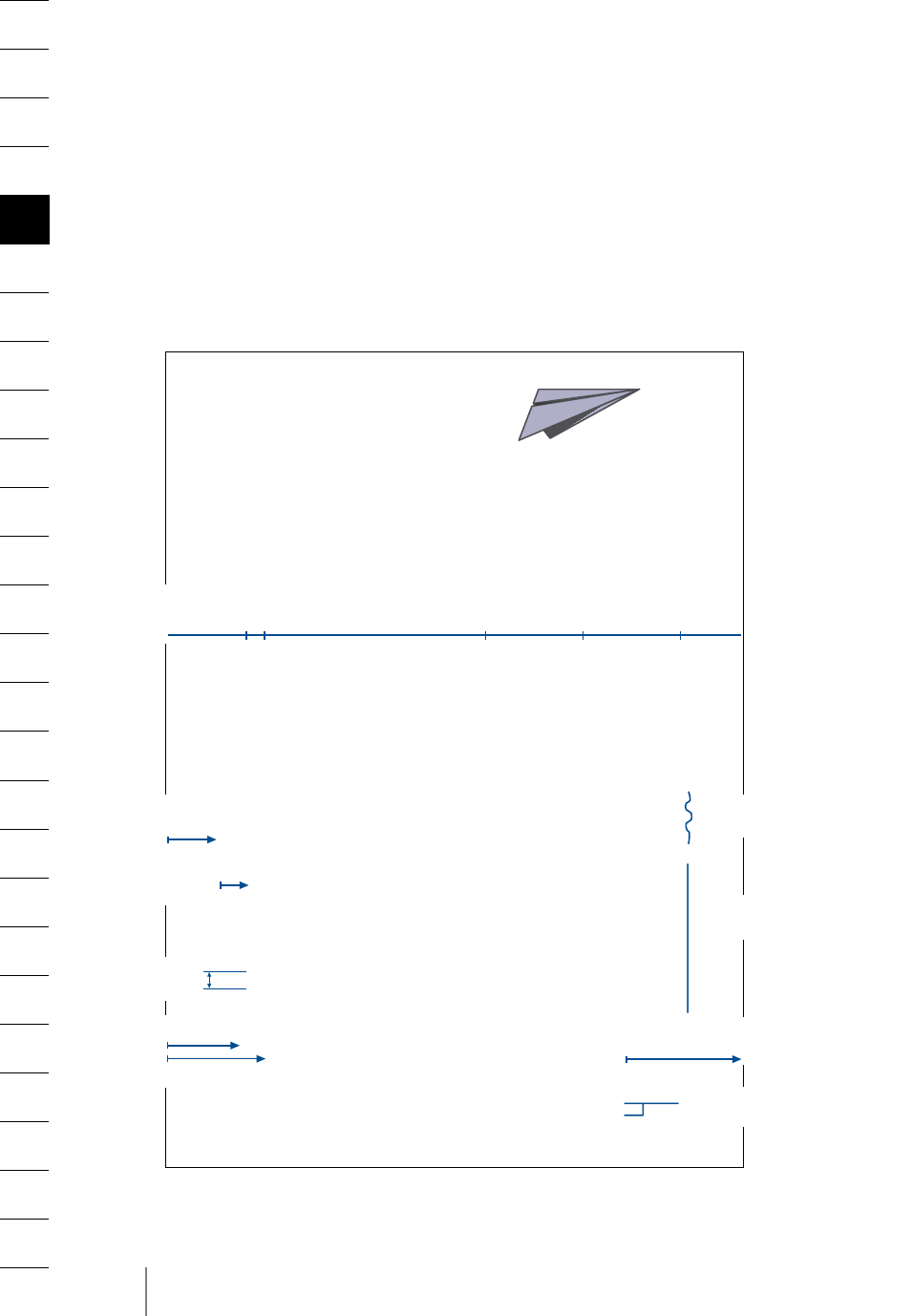
118 Chapter 4: Text Handling
4.9 Multi-Line Textflows
In addition to placing single lines of text on the page, PDFlib supports a feature called
Textflow which can be used to place arbitrarily long text portions. The text may extend
across any number of lines or pages, and its appearance can be controlled with a variety
of options. Character properties such as font, size, and color can be applied to any por-
tion of the text. Textflow properties such as justified or ragged text, paragraph indenta-
tion and tab stops can be specified; line breaking opportunities designated by soft hy-
phens in the text will be taken into account. Figure 4.11 and Figure 4.12 demonstrate how
various parts of an invoice can be placed on the page using the textflow feature. We will
discuss the options for controlling the output in more detail in the following sections.
leading
= 140%
parindent
=7%
leftindent
=55
alignment
= left
rightindent
=60
alignment
= justify
minlinecount
=2
17, Aviation Road
Paperfield
Phone 7079-4301
Fax 7079-4302
www.kraxi.com
info@kraxi.com
Kraxi Systems, Inc.
Paper Planes
Kraxi Systems, Inc. 17, Aviation Road Paperfield
John Q. Doe
255 Customer Lane
Suite B
12345 User Town
Everland
INVOICE 14.03.2004
ITEM DESCRIPTION QUANTITY PRICE AMOUNT
1 Super Kite 2 20,00 40,00
2 Turbo Flyer 5 40,00 200,00
3 Giga Trash 1 180,00 180,00
4 Bare Bone Kit 3 50,00 150,00
5 Nitty Gritty 10 20,00 200,00
6 Pretty Dark Flyer 1 75,00 75,00
7 Free Gift 1 0,00 0,00
845,00
Terms of payment: 30 days net. 30 days warranty starting at the day of sale. This
warranty covers defects in workmanship only. Kraxi Systems, Inc., at its option, repairs or
replaces the product under warranty. This warranty is not transferable. Returns or
exchanges are not possible for wet products.
Have a look at our new paper plane models!
Our paper planes are the ideal way of passing the time. We offer revolutionary
new developments of the traditional common paper planes. If your lesson,
conference, or lecture turn out to be deadly boring, you can have a wonderful time
with our planes. All our models are folded from one paper sheet.
They are exclusively folded without using any adhesive. Several models are
equipped with a folded landing gear enabling a safe landing on the intended location
provided that you have aimed well. Other models are able to fly loops or cover long
distances. Let them start from a vista point in the mountains and see where they
touch the ground.
1. Long Distance Glider
With this paper rocket you can send all your messages even when
sitting in a hall or in the cinema pretty near the back.
2. Giant Wing
An unbelievable sailplane! It is amazingly robust and can even do
hortabmethod ruler
tabalignment left rightright right right
ruler 30 45 475375275
leftindent = 75
leftindent = 105
Fig. 4.11
Formatting
textflows

4.9 Multi-Line Textflows 119
A multi-line Textflow can be placed into one or more rectangles (so-called fitboxes)
on one or more pages. The following steps are required for placing a textflow on the
page:
>The function PDF_create_textflow( ) analyzes the text, creates a textflow object and
returns a handle. It does not place any text on the page.
>The function PDF_fit_textflow( ) places all or parts of the textflow in the supplied fit-
box. To completely place the text this step must possibly be repeated several times
where each of the function calls provides a new fitbox which may be located on the
same or another page.
>The function PDF_delete_textflow( ) deletes the Textflow object after it has been
placed in the document.
The function PDF_create_textflow( ) for creating Textflows supports a variety of options
for controlling the formatting process. These options can be provided in the function’s
option list, or embedded as inline options in the text. We will discuss Textflow place-
ment using some common application examples. A complete list of Textflow options
can be found in Table 8.22.
Many of the options supported in PDF_create_textflow( ) are identical to those of PDF_
fit_textline( ). It is therefore recommended to familiarize yourself with the examples in
Section 4.8, »Placing and Fitting Single-Line Text«, page 115. In the next sections we will
focus on options related to multi-line text.
4.9.1 Placing Textflows in the Fitbox
Placing text in a single fitbox. Let’s start with an easy example. The following code
fragment places a Textflow in a single fitbox on the page using default formatting op-
tions. Font, font size, and encoding have been specified explicitly (you can see the result
in Figure 4.13):
textflow =
PDF_create_textflow(p, text, 0, "fontname=Helvetica fontsize=9 encoding=winansi");
PDF_fit_textflow(p, textflow, left_x, left_y, right_x, right_y, "");
PDF_delete_textflow(p, textflow);
Placing text in two fitboxes. If the text placed on the page with PDF_fit_textflow( )
doesn’t fit into the fitbox, the output will be interrupted and the function will return
aerobatics. But it is best suited to gliding.
3.
C
one
Head R
ocket
This paper arrow can be thrown with big swing. We launched it from
the roof of a hotel. It stayed in the air a long time and covered a
considerable distance.
4. Super Dart
The super dart can fly giant loops with a radius of 4 or 5 meters and
cover very long distances. Its heavy cone point is slightly bowed
upwards to get the lift required for loops.
5. German Bi-Plane
Brand-new and ready for take-off. If you have lessons in the history of
aviation you can show your interest by letting it land on your teacher's
desk.
fillcolor, charspacing,
fontsize, fontname
Fig. 4.12
Formatting
textflows

120 Chapter 4: Text Handling
the string _boxfull. PDFlib will remember the amount of text already placed on the
page, and will continue with the remainder of the text when the function is called
again. The following code fragment demonstrates how to place a Textflow in two fit-
boxes (you can see the result in Figure 4.14):
textflow =
PDF_create_textflow(p, text, 0, "fontname=Helvetica fontsize=9 encoding=winansi");
result = PDF_fit_textflow(p, textflow, left_x, left_y, right_x, right_y, "");
/* Check whether the text could be fully placed in the fitbox */
if (!strcmp(result, "_boxfull"))
PDF_fit_textflow(p, textflow, left_x + offset, left_y, right_x +offset, right_y, "");
PDF_delete_textflow(p, textflow);
Placing text on multiple pages. If the text placed with PDF_fit_textflow( ) doesn’t fully
fit into the fitbox, it may be necessary to create a new page. The fundamental code for
placing a textflow across multiple pages looks as follows:
textflow = PDF_create_textflow(p, text, 0, optlist);
while (1)
{
PDF_begin_page_ext(p, pagewidth, pageheight, "");
result = PDF_fit_textflow(p, textflow, left_x, left_y, right_x, right_y, "");
PDF_end_page_ext(p, "");
if (strcmp(result, "_boxfull"))
break;
}
PDF_delete_textflow(p, textflow);
4.9.2 Paragraph Formatting Options
In the previous example we used default settings for the paragraphs. For example, the
default alignment is left-justified, and the leading is 100% (which equals the font size).
In order to fine-tune the paragraph formatting we can feed more options to PDF_
create_textflow( ). For example, we can indent the text 15 units from the left and 10 units
from the right margin. In addition, the first line of each paragraph should be indented
by 10 units. The text should be justified against both margins, and the leading increased
to 140%. Finally, we’ll reduce the font size to 8 units. The extended code with option list
to achieve this looks as follows (you can see the result in Figure 4.15):
Fig. 4.13
Simple textflow
placement
Terms of payment: 30 days net. 30 days warranty starting at the day of
sale. This warranty covers defects in workmanship only. Kraxi Systems,
Inc., at its option, repairs or replaces the product under warranty. This
warranty is not transferable. Returns or exchanges are not possible for
wet products.
Terms of payment: 30
days net. 30 days
warranty starting at the
day of sale. This
warranty covers defects
in workmanship only.
Kraxi Systems, Inc., at
its option, repairs or
replaces the product
under warranty. This
warranty is not
transferable. Returns or
exchanges are not
possible for wet
products.
first fitbox second fitbox
Fig. 4.14
Placing a Textflow in
two fitboxes

4.9 Multi-Line Textflows 121
char optlist[] =
"leftindent=15 rightindent=10 parindent=20 alignment=justify "
"leading=140% fontname=Helvetica fontsize=8 encoding=winansi"
/* place textflow in the fitbox using the options */
textflow = PDF_create_textflow(p, text, 0, optlist);
PDF_fit_textflow(p, textflow, left_x, left_y, right_x, right_y, "");
PDF_delete_textflow(p, textflow);
4.9.3 Inline Option Lists and Macros
The text in Figure 4.15 is not yet correct. The headline »Have a look at our new paper
plane models!« should sit on a line of its own, should use a larger font size, and should
be centered. There are several ways to achieve this.
Up to now we provided formatting options in an option list supplied directly to the
function. In order to continue the same way we would have to split the text, and place it
in two separate calls, one for the headline and another one for the remaining text. How-
ever, this would be cumbersome.
For this reason the textflow feature supports so-called inline options. This simply
means that the options are embedded in the text. Inline option lists are provided as part
of the body text. By default, they are delimited by »<« and »>« characters. We will there-
fore integrate the options for formatting the heading and the remaining paragraphs
into our body text as follows (inline option lists are colorized in all subsequent samples;
end-of-paragraph characters are visualized with arrows):
<leftindent=15 rightindent=10 alignment=center fontname=Helvetica fontsize=12
encoding=winansi>Have a look at our new paper plane models!
<alignment=justify fontname=Helvetica leading=140% fontsize=8 encoding=winansi>
Our paper planes are the ideal way of passing the time. We offer
revolutionary new developments of the traditional common paper planes.
<parindent=20>If your lesson, conference, or lecture
turn out to be deadly boring, you can have a wonderful time
with our planes. All our models are folded from one paper sheet.
They are exclusively folded without using any adhesive. Several
models are equipped with a folded landing gear enabling a safe
landing on the intended location provided that you have aimed well.
Other models are able to fly loops or cover long distances. Let them
start from a vista point in the mountains and see
where they touch the ground.
Have a look at our new paper plane models! Our paper planes
are the ideal way of passing the time. We offer revolutionary new
developments of the traditional common paper planes.
If your lesson, conference, or lecture turn out to be deadly boring,
you can have a wonderful time with our planes. All our models are
folded from one paper sheet.
They are exclusively folded without using any adhesive. Several
models are equipped with a folded landing gear enabling a safe landing
on the intended location provided that you have aimed well. Other
models are able to fly loops or cover long distances. Let them start
from a vista point in the mountains and see where they touch the
ground.
leading = 140%
parindent = 20
leftindent = 15
rightindent = 10
alignment =
justify
Fig. 4.15
Placing textflow
with options

122 Chapter 4: Text Handling
The characters for bracketing option lists can be redefined with the begoptlistchar and
endoptlistchar options (see Table 8.22). Supplying the keyword none for the begoptlistchar
option completely disables the search for option lists. This is useful if the text doesn’t
contain any inline option lists, and you want to make sure that »<« and »>« will be pro-
cessed as regular characters.
Macros. Basically, the text above contains several different types of paragraphs, such
as heading or body text with or without indentation. Each of these paragraph types is
formatted individually and occurs multiply in longer Textflows. In order to avoid start-
ing each paragraph with the corresponding inline options, we can combine these to
form macros, and refer to the macros in the text via their names. As shown in Figure
4.16 we can define three macros called H1 for the heading, Body for main paragraphs, and
Body_indented for indented paragraphs. In order to use a macro we place the & character
in front of its name and put it into an option list. The following code fragment defines
three macros according to the previously used inline options and uses them in the text:
<macro {
H1 {leftindent=15 rightindent=10 alignment=center
fontname=Helvetica fontsize=12 encoding=winansi}
Body {leftindent=15 rightindent=10 alignment=justify leading=140%
fontname=Helvetica fontsize=8 encoding=winansi}
Body_indented {parindent=20 leftindent=15 rightindent=10 alignment=justify
leading=140% fontname=Helvetica fontsize=8 encoding=winansi}
}>
<&H1>Have a look at our new paper plane models!
<&Body>Our paper planes are the ideal way of passing the time. We offer
revolutionary new developments of the traditional common paper planes.
<&Body_indented>If your lesson, conference, or lecture
turn out to be deadly boring, you can have a wonderful time
with our planes. All our models are folded from one paper sheet.
They are exclusively folded without using any adhesive. Several
models are equipped with a folded landing gear enabling a safe
landing on the intended location provided that you have aimed well.
Other models are able to fly loops or cover long distances. Let them
start from a vista point in the mountains and see
where they touch the ground.
Have a look at our new paper plane models!
Our paper planes are the ideal way of passing the time. We offer
revolutionary new developments of the traditional common paper
planes.
If your lesson, conference, or lecture turn out to be deadly boring,
you can have a wonderful time with our planes. All our models are
folded from one paper sheet.
They are exclusively folded without using any adhesive. Several
models are equipped with a folded landing gear enabling a safe landing
on the intended location provided that you have aimed well. Other
models are able to fly loops or cover long distances. Let them start
from a vista point in the mountains and see where they touch the
ground.
H1
Body
Body_indented
Fig. 4.16
Combining inline
options with macros

4.9 Multi-Line Textflows 123
Explicitly setting options. Note that all options which are not set in macros will retain
their previous values. In order to avoid side effects caused by unwanted »inheritance«
of options you should explicitly specify all settings required for a particular macro. This
way you can ensure that the macros will behave consistently regardless of their order-
ing or combination with other option lists.
On the other hand, you can take advantage of this behavior for deliberately retaining
certain settings from the context instead of supplying them explicitly. For example, a
macro could specify the font name without supplying the fontsize option. As a result the
font size will always match that of the preceding text.
Inline Options or Options passed as Function Parameters?. When using Textflows it
makes an important difference whether the text is contained literally in the program
code or comes from some external source, and whether the formatting instructions are
separate from the text or part of it. In most applications the actual text will come from
some external source such as a database. In practise there are two main scenarios:
>Text contents from external source, formatting options in the program: An external
source delivers small text fragments which are assembled within the program, and
combined with formatting options (in the function call) at runtime.
>Text contents and formatting options from external source: Large amounts of text
including formatting options come from an external source. The formatting is pro-
vided by inline options in the text, represented as simple options or macros. When it
comes to macros a distinction must be made between macro definition and macro
call. This allows an interesting intermediate form: the text content comes from an
external source and contains macro calls for formatting. However, the macro defini-
tions are only blended in at runtime. This has the advantage that the formatting can
easily be changed without having to modify the external text. For example, when
generating greeting cards one could define different styles via macros to give the
card a romantic, technical, or other touch.
4.9.4 Tab Stops
In the next example we will place a table with left- and right-aligned columns using tab
characters. The table contains the following lines of text, where individual entries are
separated from each other with a tab character (indicated by arrows):
ITEM DESCRIPTION QUANTITY PRICE AMOUNT
1 Super Kite 2 20.00 40.00
2 Turbo Flyer 5 40.00 200.00
3 Giga Trash 1 180.00 180.00
TOTAL 420.00
The following code fragment places the table, using the ruler option for defining the tab
positions, tabalignment for specifying the alignment of tab stops, and hortabmethod for
specifying the method used to process tab stops (the result can be seen in Figure 4.17):
/* assemble option list */
char optlist[] =
"ruler {30 150 250 350} "
"tabalignment {left right right right} "
"hortabmethod ruler leading=120% fontname=Helvetica fontsize=9 encoding=winansi";
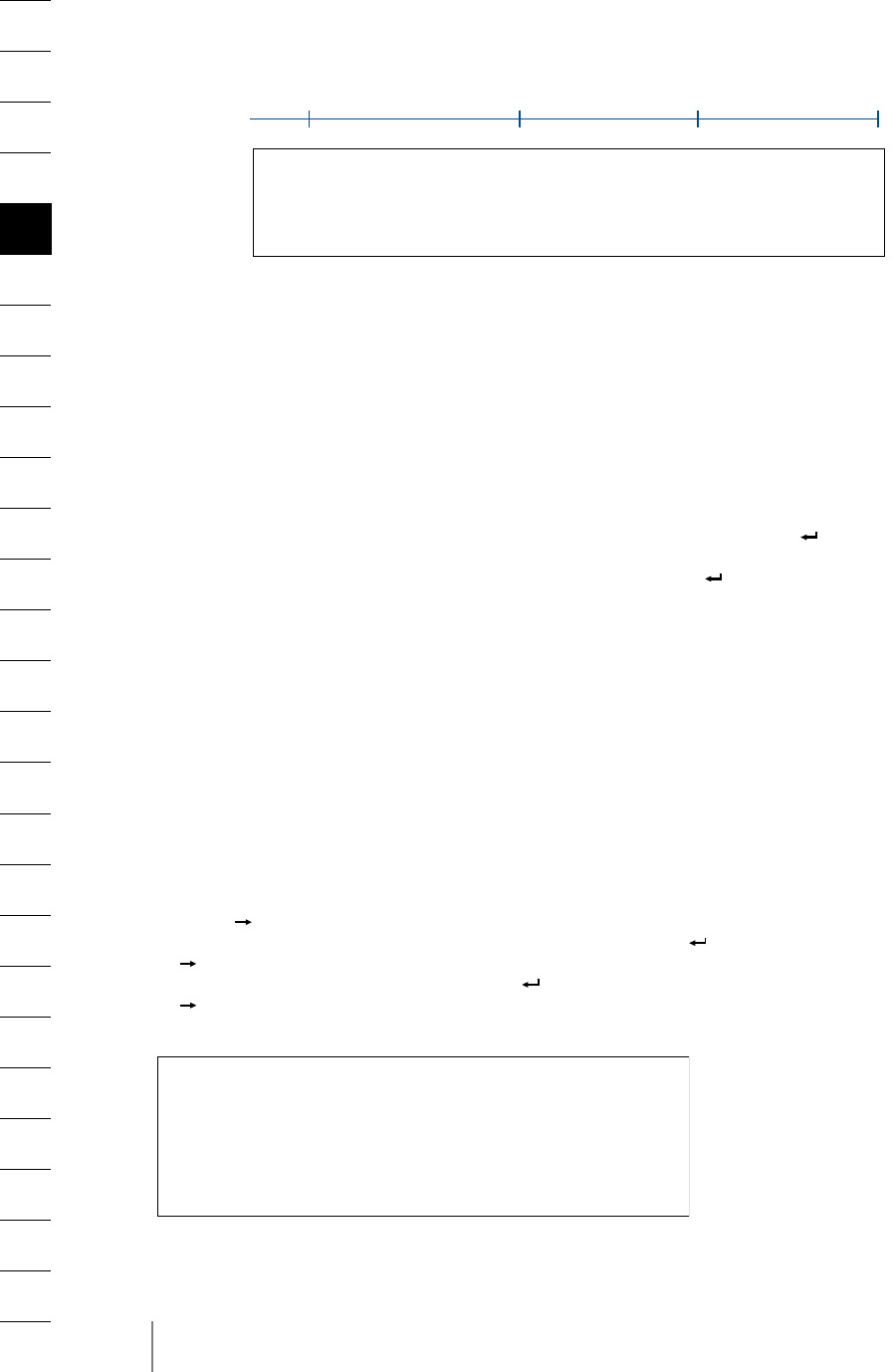
124 Chapter 4: Text Handling
/* place textflow in fitbox */
textflow = PDF_create_textflow(p, table, 0, optlist);
PDF_fit_textflow(p, textflow, left_x, left_y, right_x, right_y, "");
PDF_delete_textflow(p, textflow);
4.9.5 Numbered Lists
The following example demonstrates how to format a numbered list using the inline
option leftindent (you can see the result in Figure 4.18):
1.<leftindent 10>Long Distance Glider: With this paper rocket you can send all
your messages even when sitting in a hall or in the cinema pretty near the back.
<leftindent 0>2.<leftindent 10>Giant Wing: An unbelievable sailplane! It is amazingly
robust and can even do aerobatics. But it is best suited to gliding.
<leftindent 0>3.<leftindent 10>Cone Head Rocket: This paper arrow can be thrown with big
swing. We launched it from the roof of a hotel. It stayed in the air a long time and
covered a considerable distance.
Setting and resetting the indentation value is cumbersome, especially since it is re-
quired for each paragraph. A more elegant solution defines a macro called list. For con-
venience it defines a macro indent which is used as a constant. The macro definitions are
as follows:
<macro {
indent {25}
list {parindent=-&indent leftindent=&indent hortabsize=&indent
hortabmethod=ruler ruler={&indent}}
}>
<&list>1. Long Distance Glider: With this paper rocket you can send all your messages
even when sitting in a hall or in the cinema pretty near the back.
2. Giant Wing: An unbelievable sailplane! It is amazingly robust and can even do
aerobatics. But it is best suited to gliding.
3. Cone Head Rocket: This paper arrow can be thrown with big swing. We launched
hortabmethod ruler
tabalignment left right right right
ruler 30 350250150
ITEM DESCRIPTION QUANTITY PRICE AMOUNT
1 Super Kite 2 20.00 40.00
2 Turbo Flyer 5 40.00 200.00
3 Giga Trash 1 180.00 180.00
TOTAL 420.00
Fig. 4.17
Placing text
as a table
1. Long Distance Glider: With this paper rocket you can send all your
messages even when sitting in a hall or in the cinema pretty near the
back.
2. Giant Wing: An unbelievable sailplane! It is amazingly robust and can
even do aerobatics. But it is best suited to gliding.
3. Cone Head Rocket: This paper arrow can be thrown with big swing. We
launched it from the roof of a hotel. It stayed in the air a long time and
covered a considerable distance.
Fig. 4.18
Numbered list

4.9 Multi-Line Textflows 125
it from the roof of a hotel. It stayed in the air a long time and covered a
considerable distance.
The leftindent option specifies the distance from the left margin. The parindent option,
which is set to the negative of leftindent, cancels the indentation for the first line of each
paragraph. The options hortabsize, hortabmethod, and ruler specify a tab stop which cor-
responds to leftindent. It makes the text after the number to be indented with the
amount specified in leftindent. Figure 4.19 shows the parindent and leftindent options at
work.
4.9.6 Control Characters, Character Mapping, and Symbol Fonts
Control characters in Textflows. Various characters are given special treatment in
Textflows. PDFlib supports symbolic character names which can be used instead of the
corresponding character codes in the charmapping option (which replaces characters in
the text before processing it, see below). Table 4.5 lists all control characters which are
evaluated by the Textflow functions along with their symbolic names, and explains
their meaning. An option must only be used once per option list, but multiple option
lists can be provided one after the other. For example, the following sequence will cre-
ate an empty line:
<nextline><nextline>
Replacing characters or sequences of characters. The charmapping option can be used
to replace some characters in the text with others. Let’s start with an easy case where we
will replace all tabs in the text with space characters. The charmapping option to achieve
this looks as follows:
charmapping {hortab space}
This command uses the symbolic character names hortab and space. You can find a list
of all known character names in Table 4.5. To achieve multiple mappings at once you
can use the following command which will replace all tabs and line break combinations
with space characters:
charmapping {hortab space CRLF space LF space CR space}
The following command removes all soft hyphens:
charmapping {shy {shy 0}}
Each tab character will be replaced with four space characters:
leftindent = &indent
parindent = – &indent
1. Long Distance Glider: With this paper rocket you can send all your
messages even when sitting in a hall or in the cinema pretty near
the back.
2. Giant Wing: An unbelievable sailplane! It is amazingly robust and
can even do aerobatics. But it is best suited to gliding.
3. Cone Head Rocket: This paper arrow can be thrown with big swing.
We launched it from the roof of a hotel. It stayed in the air a long
time and covered a considerable distance.
Fig. 4.19
Numbered list
with macros
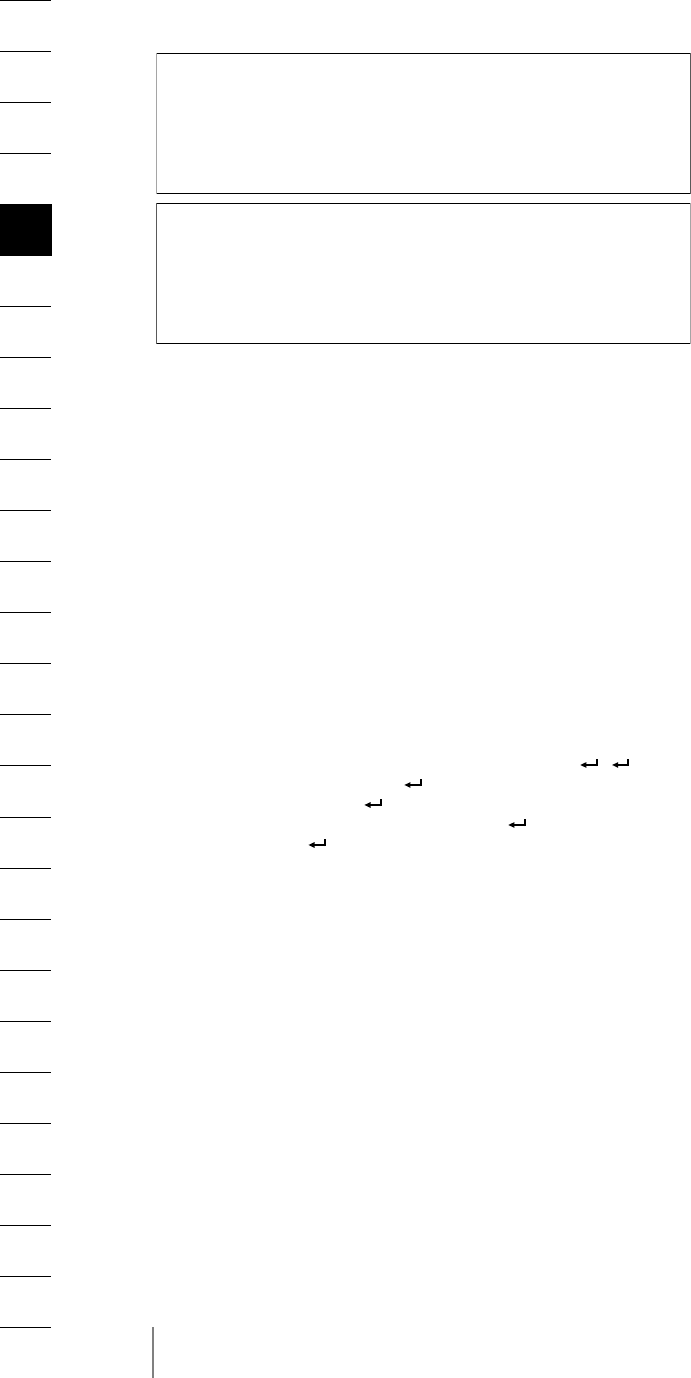
126 Chapter 4: Text Handling
charmapping {hortab {space 4}}
Each arbitrary long sequence of linefeed characters will be reduced to a single linefeed
character:
charmapping {linefeed {linefeed -1}}
Each sequence of CRLF combinations will be replaced with a single space:
charmapping {CRLF {space -1}}
We will take a closer look at the last example. Let’s assume you receive text where the
lines have been separated with fixed line breaks by some other software, and therefore
cannot be properly formatted. You want to replace the linebreaks with space characters
in order to achieve proper formatting within the fitbox. To achieve this we replace arbi-
trarily long sequences of linebreaks with a single space character. The initial text looks
as follows:
To fold the famous rocket looper proceed as follows:
Take a sheet of paper. Fold it
lengthwise in the middle.
Then, fold down the upper corners. Fold the
long sides inwards
that the points A and B meet on the central fold.
The following code fragment demonstrates how to replace the redundant linebreak
characters and format the resulting text:
/* assemble option list */
char optlist[] = "fontname=Helvetica fontsize=9 encoding=winansi alignment=justify "
"charmapping {CRLF {space -1}}"
/* place textflow in fitbox */
textflow = PDF_create_textflow(p, text, 0, optlist);
PDF_fit_textflow(p, textflow, left_x, left_y, right_x, right_y, "");
PDF_delete_textflow(p, textflow);
Figure 4.20 shows Textflow output with the unmodified text and the repaired version
with the charmapping option.
To fold the famous rocket looper proceed as follows:
Take a sheet of paper. Fold it
lengthwise in the middle.
Then, fold down the upper corners. Fold the
long sides inwards
that the points A and B meet on the central fold.
To fold the famous rocket looper proceed as follows: Take a sheet of
paper. Fold it lengthwise in the middle. Then, fold down the upper
corners. Fold the long sides inwards that the points A and B meet on
the central fold.
Fig. 4.20
Top: text with redundant line
breaks
Bottom: replacing the linebreaks
with the charmapping option

4.9 Multi-Line Textflows 127
Symbol fonts in textflows. Symbol fonts, more precisely: text in a font which is not
Unicode-compatible according to Section 4.5.6, »Unicode-compatible Fonts«, page 102,
deserves some special attention when used within textflows:
>The control characters listed in Table 4.5 will not be treated specially, i.e. they have
no special meaning.
>Some textflow options will be ignored since they do not make sense for symbol
fonts, e.g. tabalignchar. Table 8.22 lists all options which will be ignored for fonts
which are not Unicode-compatible.
>Since inline options lists cannot be used in text portions with symbol fonts (since
the symbols don’t have any intrinsic meaning it would be impossible to locate and
interpret option lists), the length of text fragments consisting of symbol characters
must explicitly be specified using the textlen option.
>After textlen characters a new inline option list must be placed in the text which
switches to another font/encoding combination.
The following text contains a single glyph from the Symbol font inserted between Latin
characters:
<fontname=Helvetica fontsize=12 encoding=winansi>The Greek letter
<fontname=Symbol encoding=builtin textlen=1>A
<fontname=Helvetica encoding=winansi> symbolizes beginning.
Omitting the textlen option for Symbol fragments, or failing to supply another inline
option lists immediately after the Symbol fragment will result in an exception.
4.9.7 Hyphenation
PDFlib does not automatically hyphenate text, but honors possible hyphenation oppor-
tunities if those are explicitly designated in the text by soft hyphen characters. The soft
hyphen character is at position U+00AD in Unicode, but several methods are available
for specifying the soft hyphen in non-Unicode environments:
>In all cp1250 – cp1258 (including winansi) and iso8859-1 – iso8859-16 encodings the soft
hyphen is at decimal 173, octal 255, or hexadecimal 0xAD.
>In ebcdic encoding the soft hyphen is at decimal 202, octal 312, or hexadecimal 0xCA.
>A character entity reference (see Section 4.5.5, »Character References«, page 100) can
be used if an encoding does not contain the soft hyphen character (e.g. macroman):
­
In addition to breaking opportunities designated by soft hyphens, words can be force-
fully hyphenated in extreme cases when other methods of adjustment, such as chang-
ing the word spacing or shrinking text, are not possible.
Note PDFlib honors the typesetting rules for CJK characters.
Justified text with or without hyphen characters. In the following example we will
print the following text with justified alignment. The text contains soft hyphen charac-
ters (visualized here as dashes):
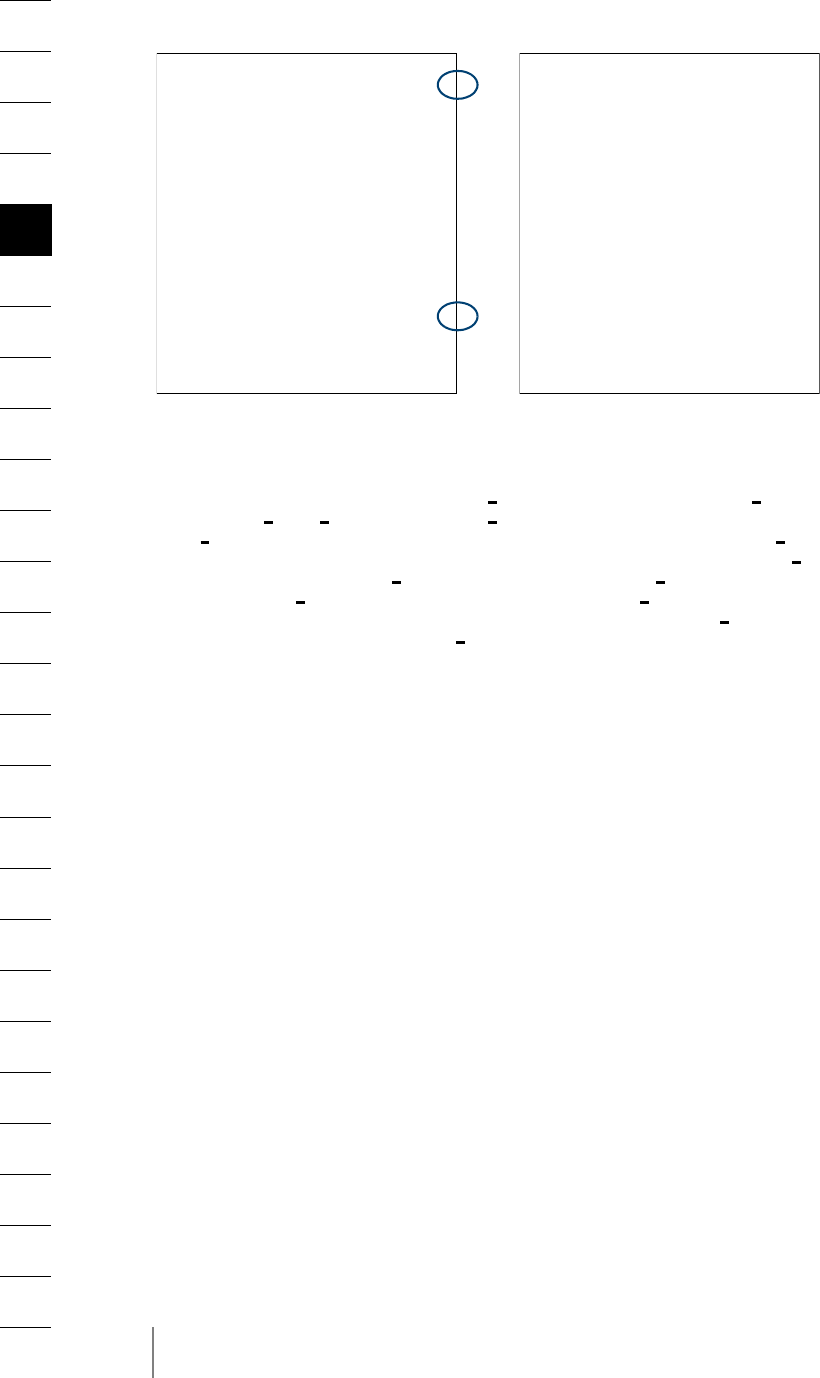
128 Chapter 4: Text Handling
Our paper planes are the ideal way of pas sing the time. We offer revolu tionary
brand new dev elop ments of the tradi tional common paper planes. If your lesson,
confe rence, or lecture turn out to be deadly boring, you can have a wonder ful time
with our planes. All our models are folded from one paper sheet. They are exclu sively
folded without using any adhe sive. Several models are equip ped with a folded
landing gear enab ling a safe landing on the intended loca tion provided that you
have aimed well. Other models are able to fly loops or cover long dist ances. Let them
start from a vista point in the mount ains and see where they touch the ground.
Figure 4.21 shows the generated text output with default option settings for justified
text. It looks perfect since the conditions are optimal: the fitbox is wide enough, and
there are explicit break opportunities specified by the soft hyphen characters. As you
can see in Figure 4.22 the output looks okay even without explicit soft hyphens. The op-
tion list in both cases looks as follows:
fontname=Helvetica fontsize=9 encoding=winansi alignment=justify
Our paper planes are the ideal way of
passing the time. We offer revolu-
tionary brand new developments of the
traditional common paper planes. If
your lesson, conference, or lecture turn
out to be deadly boring, you can have
a wonderful time with our planes. All
our models are folded from one paper
sheet. They are exclusively folded
without using any adhesive. Several
models are equipped with a folded
landing gear enabling a safe landing
on the intended location provided that
you have aimed well. Other models are
able to fly loops or cover long dist-
ances. Let them start from a vista point
in the mountains and see where they
touch the ground.
Our paper planes are the ideal way of
passing the time. We offer revolutionary
brand new developments of the
traditional common paper planes. If
your lesson, conference, or lecture turn
out to be deadly boring, you can have
a wonderful time with our planes. All
our models are folded from one pape
r
sheet. They are exclusively folded
without using any adhesive. Several
models are equipped with a folded
landing gear enabling a safe landing
on the intended location provided that
you have aimed well. Other models are
able to fly loops or cover long
distances. Let them start from a vista
point in the mountains and see where
they touch the ground.
Fig. 4.21
Justified text with soft hyphen characters,
using default settings and a wide fitbox
Fig. 4.22
Justified text without soft hyphens, using
default settings and a wide fitbox.

4.9 Multi-Line Textflows 129
4.9.8 Controlling the Linebreak Algorithm
PDFlib implements a sophisticated line-breaking algorithm.1 Table 4.9 lists textflow op-
tions which control the line-breaking algorithm.
Line-breaking rules. When a word or other sequence of text surrounded by space char-
acters doesn’t fully fit into a line, it must be moved to the next line. In this situation the
line-breaking algorithm decides after which characters a line break is possible.
For example, a formula such as -12+235/8*45 will never be broken, while the string
PDF-345+LIBRARY may be broken to the next line at the minus character. If the text
contains soft hyphen characters it can also be broken after such a character.
1. For interested users we’ll note that PDFlib honors the recommendations in »Unicode Standard Annex #14: Line Breaking
Properties« (see www.unicode.org/reports/tr14). Combining marks are not taken into account.
Table 4.9 Options for controlling the line-breaking algorithm
option type explanation
adjust-
method
keyword The method used to adjust a line when a text portion doesn’t fit into a line after
compressing or expanding the distance between words subject to the limits
specified by the minspacing and maxspacing options. Default: auto
auto The following methods are applied in order: shrink, spread, nofit, split.
clip Same as nofit, except that the long part at the right edge of the fit box
(taking into account the rightindent option) will be clipped.
nofit The last word will be moved to the next line provided the remaining
(short) line will not be shorter than the percentage specified in the
nofitlimit option. Even justified paragraphs will look slightly ragged in
this case.
shrink If a word doesn’t fit in the line the text will be compressed subject to
the shrinklimit option until the word fits. If it still doesn’t fit the nofit
method will be applied.
split The last word will not be moved to the next line, but will forcefully be
hyphenated. For text fonts a hyphen character will be inserted, but not
for symbol fonts.
spread The last word will be moved to the next line and the remaining (short)
line will be justified by increasing the distance between characters in a
word, subject to the spreadlimit option. If justification still cannot be
achieved the nofit method will be applied.
avoidbreak boolean If true, avoid any line breaks until avoidbreak is reset to false. Default: false
hyphenchar integer Unicode value of the character which replaces a soft hyphen at line breaks. De-
fault: U+00AD (SOFT HYPHEN) if available in the font, U+002D (HYPHEN-MINUS)
otherwise
maxspacing
minspacing
float or
percentage
Specifies the maximum or minimum distance between words (in user coordinates,
or as a percentage of the width of the space character). The calculated word
spacing is limited by the provided values (but the wordspacing option will still be
added). Defaults: minspacing=50%, maxspacing=500%
nofitlimit float or
percentage
Lower limit for the length of a line with the nofit method (in user coordinates or
as a percentage of the width of the fitbox). Default: 75%.
shrinklimit percentage Lower limit for compressing text with the shrink method; the calculated shrinking
factor is limited by the provided value, but will be multiplied with the value of the
horizscaling option. Default: 85%
spreadlimit float or
percentage
Upper limit for the distance between two characters for the spread method (in
user coordinates or as a percentage of the font size); the calculated character
distance will be added to the value of the charspacing option. Default: 0

130 Chapter 4: Text Handling
For parentheses and quotation marks it depends on whether we have an opening or
closing character: opening parentheses and quotations marks do not offer any break
opportunity. In order to find out whether a quotation mark starts or ends a sequence,
pairs of quotation marks are examined.
An inline option list generally does not create a line break opportunity in order to al-
low option changes within words. However, when an option list is surrounded by space
characters there is a line break opportunity at the beginning of the option list. If a line
break occurs at the option list and alignment=justify, the spaces preceding the option list
will be discarded. The spaces after the option list will be retained, and will appear at the
beginning of the next line.
Justified text in a narrow fitbox. The narrower the fitbox, the more you must deal
with the options for controlling justified text. Figure 4.23 demonstrates the results of
the various methods for justifying text in a narrow fitbox. The option settings in Figure
4.23 are basically okay, with the exception of maxspacing which provides a rather large
distance between words. However, it is recommended to keep this for narrow fitboxes
Our paper planes
are the ideal way of
passing the time. We
offer revolutionary
brand new develop-
ments of the traditional
common paper planes.
If your lesson, conf-
erence, or lecture
turn out to be deadly
boring, you can have
a wonderful time
with our planes. All
our models are
folded from one
paper sheet. They
are exclusively folded
without using any
decrease the distance between words (default method, minspacing option)
compress the line (shrink method, shrinklimit option)
force hyphenation (split method)
increase the distance between words (default method, maxspacing option)
Fig. 4.23
Justified text in a narrow fitbox with default settings
Our paper planes
are the ideal way of
passing the time.We
offer revolutionary
brand new developments
of the traditional
common paper planes.
If your lesson, conference,
or lecture turn out to
be deadly boring,
you can have a
wonderful time with
our planes. All our
models are folded
from one paper
sheet. They are
exclusively folded without
using any adhesive.
Fig. 4.24
Compressing lines down to 50%
compress the line (shrink method, shrinklimit option)
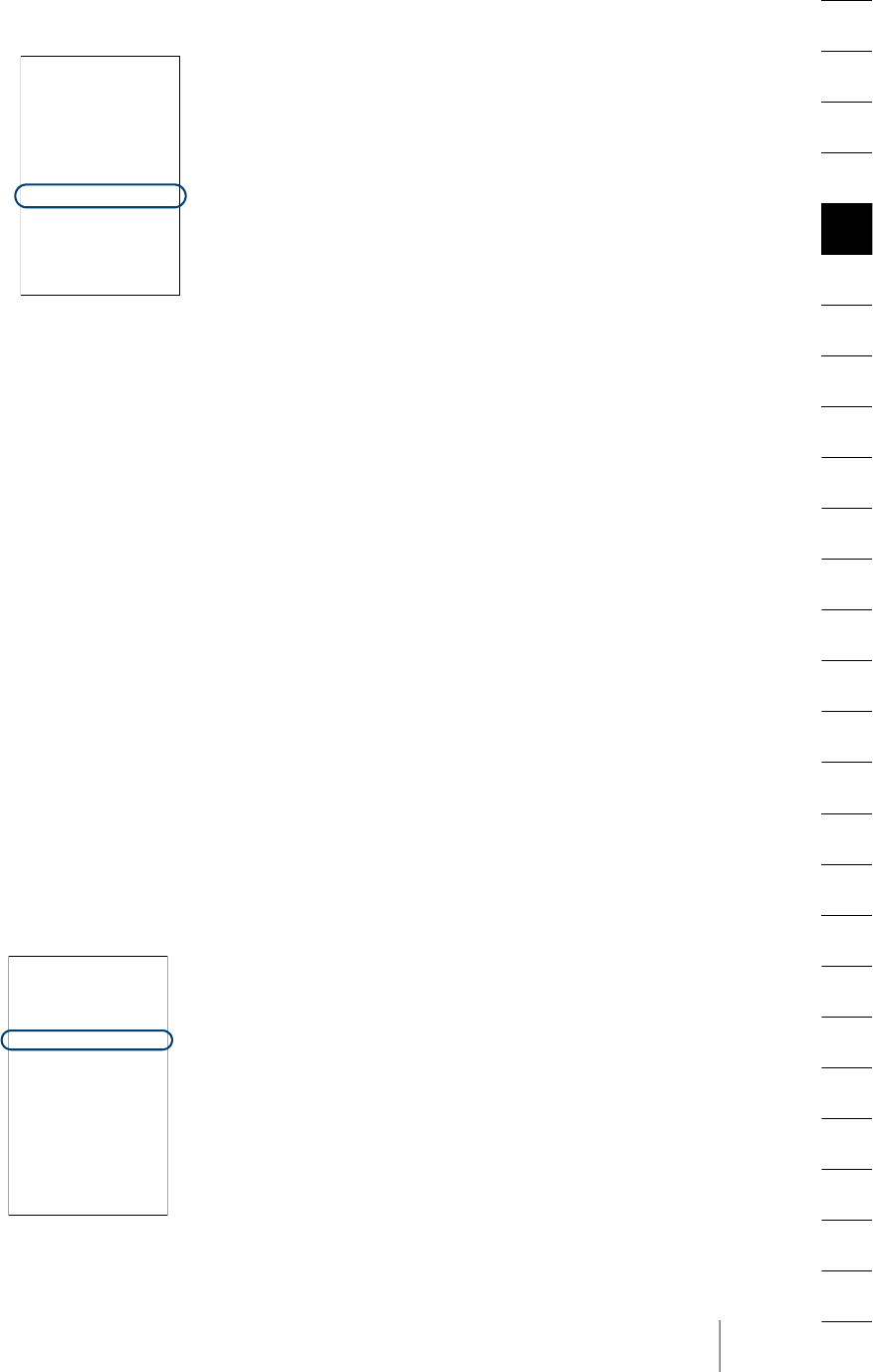
4.9 Multi-Line Textflows 131
since otherwise the ugly forced hyphenation caused by the split method will occur more
often.
If the fitbox is so narrow that occasionally forced hyphenations occur you should
consider inserting soft hyphens, or modify the options which control justified text.
Option shrinklimit for justified text. The most visually pleasing solution is to reduce
the shrinklimit option which specifies a lower limit for the shrinking factor applied by
the shrink method. Figure 4.24 shows how to avoid forced hyphenation by compressing
text down to 50%. The option list looks as follows:
fontname=Helvetica fontsize=9 encoding=winansi alignment=justify shrinklimit=50%
Option spreadlimit for justified text. Expanding text, which is achieved by the spread
method and controlled by the spreadlimit option, is another method for controlling line
breaks. This unpleasing method should be rarely used, however. Figure 4.25 demon-
strates a very large maximum character distance of 5 units. The option list looks as fol-
lows:
fontname=Helvetica fontsize=9 encoding=winansi alignment=justify spreadlimit=5
Option nofitlimit for justified text. The nofitlimit option controls how small a line can
get when the nofit method is applied. Reducing the default value of 75% is preferable to
forced hyphenation when the fitbox is very narrow. Figure 4.26 shows the generated
text output with a minimum text width of 50%. The option list looks as follows:
fontname=Helvetica fontsize=9 encoding=winansi alignment=justify nofitlimit=50
Our paper planes
are the ideal way of
passing the time. We
offer revolutionary
brand new
developments of the
traditional common
paper planes. If your
lesson, conference,
or lecture turn out to
be deadly boring,
you can have a
wonderful time with
our planes.
Fig. 4.25
Justified text with a maximum character spacing of 5 units
expand the line (spread method, spreadlimit option)
Our paper planes
are the ideal way of
passing the time. We
offer revolutionary
brand new develop-
ments of the traditional
common paper planes.
If your lesson,
conference, or lecture
turn out to be deadly
boring, you can have
a wonderful time
with our planes. Fig. 4.26
Justified text with minimum width of 50%
shorten the line (nofit method, nofitlimit option)

132 Chapter 4: Text Handling
4.9.9 Formatting CJK Text with Textflow
The textflow engine is prepared to deal with CJK text, and properly treats CJK characters
as ideographic glyphs as per the Unicode standard. As a result, CJK text will never be hy-
phenated. For improved formatting the following options are recommended when us-
ing Textflow with CJK text; they will disable hyphenation for inserted Latin text and cre-
ate evenly spaced text output:
hyphenchar=none
alignment=justify
shrinklimit=100%
spreadlimit=100%
Note the following restrictions when using Textflow for CJK text:
>Vertical writing mode is not supported.
>Only Unicode-compatible encodings can be used, i.e. unicode or one of the Unicode-
compatible predefined CMaps.

5.1 Importing Raster Images 133
5 Importing and Placing Objects
PDFlib offers a variety of features for importing raster images and pages from existing
PDF documents, and placing them on the page. This chapter covers the details of deal-
ing with raster images and importing pages from existing PDF documents. It also pre-
sents samples which demonstrate how to place images and PDF pages on an output
page.
5.1 Importing Raster Images
5.1.1 Basic Image Handling
Embedding raster images with PDFlib is easy to accomplish. First, the image file has to
be opened with a PDFlib function which does a brief analysis of the image parameters.
The PDF_load_image( ) function returns a handle which serves as an image descriptor.
This handle can be used in a call to PDF_fit_image( ), along with positioning and scaling
parameters:
if ((image = PDF_load_image(p, "jpeg", "image.jpg", 0, "")) == -1) {
fprintf(stderr,"Error: Couldn't read image file.\n");
} else {
PDF_fit_image(p, image, 0.0, 0.0, "");
PDF_close_image(p, image);
}
The last argument to the PDF_fit_image( ) function is an option list which supports a va-
riety of options for positioning, scaling, and rotating the image. Details regarding these
options are discussed in Section 5.3, »Placing Images and Imported PDF Pages«, page 144.
Re-using image data. PDFlib supports an important PDF optimization technique for
using repeated raster images. Consider a layout with a constant logo or background on
multiple pages. In this situation it is possible to include the actual image data only once
in the PDF, and generate only a reference on each of the pages where the image is used.
Simply load the image file once, and call PDF_fit_image( ) every time you want to place
the logo or background on a particular page. You can place the image on multiple pages,
or use different scaling factors for different occurrences of the same image (as long as
the image hasn’t been closed). Depending on the image’s size and the number of occur-
rences, this technique can result in enormous space savings.
Inline images. As opposed to reusable images, which are written to the PDF output as
image XObjects, inline images are written directly into the respective content stream
(page, pattern, template, or glyph description) . This results in some space savings, but
should only be used for small amounts of image data (up to 4 KB) per a recommenda-
tion in the PDF reference. The primary use of inline images is for bitmap glyph descrip-
tions in Type 3 fonts.
Inline images can be generated with the PDF_load_image( ) interface by supplying the
inline option. Inline images cannot be reused, i.e., the corresponding handle must not be
supplied to any call which accepts image handles. For this reason if the inline option has

134 Chapter 5: Importing and Placing Objects
been provided PDF_load_image( ) internally performs the equivalent of the following
code:
PDF_fit_image(p, image, 0, 0, "");
PDF_close_image(p, image);
Scaling and dpi calculations. PDFlib never changes the number of pixels in an import-
ed image. Scaling either blows up or shrinks image pixels, but doesn’t do any downsam-
pling (the number of pixels in an image will always remain the same). A scaling factor of
1 results in a pixel size of 1 unit in user coordinates. In other words, the image will be im-
ported with its native resolution (or 72 dpi if it doesn’t contain any resolution informa-
tion) if the user coordinate system hasn’t been scaled (since there are 72 default units to
an inch).
Color space of imported images. Except for adding or removing ICC profiles and ap-
plying a spot color according to the options provided in PDF_load_image( ), PDFlib will
generally try to preserve the native color space of an imported image. However, this is
not possible for certain rare combinations, such as YCbCr in TIFF which will be convert-
ed to RGB.
PDFlib does not perform any conversion between RGB and CMYK. If such a conver-
sions is required it must be applied to the image data before loading the image in
PDFlib.
5.1.2 Supported Image File Formats
PDFlib deals with the image file formats described below. If possible, PDFlib passes the
compressed image data unchanged to the PDF output since PDF internally supports
most compression schemes used in common image file formats. This technique (called
pass-through mode in the descriptions below) results in very fast image import, since de-
compressing the image data and subsequent recompression are not necessary. How-
ever, PDFlib cannot check the integrity of the compressed image data in this mode. In-
complete or corrupt image data may result in error or warning messages when using
the PDF document in Acrobat (e.g., Read less image data than expected).
If an image file can’t be imported successfully PDF_load_image( ) will return an error
code by default. However, if you need to know more details about the failure set the
imagewarning option in PDF_load_image( ) to true (see Section 8.6, »Image and Template
Functions«, page 258). Alternatively, the imagewarning parameter can be set on a global
basis:
PDF_set_parameter(p, "imagewarning", "true"); /* enable image warnings */
This will cause PDF_load_image( ) to raise an exception with more details about the fail-
ure in the corresponding exception message.
PNG images. PDFlib supports all flavors of PNG images (Portable Network Graphics).
PNG images are handled in pass-through mode in most cases. PNG images which make
use of interlacing or contain an alpha channel (which will be lost anyway, see below)
will have to be uncompressed, which takes significantly longer than pass-through
mode. If a PNG image contains transparency information, the transparency is retained
in the generated PDF (see Section 5.1.3, »Image Masks and Transparency«, page 136).
However, alpha channels are not supported by PDFlib.

5.1 Importing Raster Images 135
JPEG images. JPEG images are always handled in pass-through mode. PDFlib supports
the following flavors of JPEG image compression:
>Baseline JPEG compression which accounts for the vast majority of JPEG images.
>Progressive JPEG compression.
JPEG images can be packaged in several different file formats. PDFlib supports all com-
mon JPEG file formats, and will read resolution information from the following flavors:
>JFIF, which is generated by a wide variety of imaging applications.
>JPEG files written by Adobe Photoshop and other Adobe applications. PDFlib applies
a workaround which is necessary to correctly process Photoshop-generated CMYK
JPEG files.
Note PDFlib does not interpret resolution information from JPEG images in the SPIFF file format, nor
color space information from JPEG images in the EXIF file format.
GIF images. PDFlib supports all GIF flavors (specifically GIF 87a and 89a) with inter-
laced and non-interlaced pixel data and all palette sizes. GIF images will always be re-
compressed with Flate compression.
TIFF images. PDFlib will handle most TIFF images in pass-through mode. PDFlib sup-
ports the following flavors of TIFF images:
>compression schemes: uncompressed, CCITT (group 3, group 4, and RLE), ZIP (=Flate),
and PackBits (=RunLength) are handled in pass-through mode; other compression
schemes, such as LZW and JPEG, are handled by uncompressing.
>color: black and white, grayscale, RGB, CMYK, CIELab, and YCbCr images; any alpha
channel or mask which may be present in the file will be ignored.
>TIFF files containing more than one image (see Section 5.1.5, »Multi-Page Image
Files«, page 139)
>Color depth must be 1, 2, 4, 8, or 16 bits per color sample. In PDF 1.5 mode 16 bit color
depth will be retained in most cases with pass-through mode, but reduced to 8 bit for
certain image files (ZIP compression with little-endian/Intel byte order, or 16-bit pal-
ette images).
Multi-strip TIFF images are converted to multiple images in the PDF file which will visu-
ally exactly represent the original image, but can be individually selected with Acrobat’s
TouchUp object tool. Multi-strip TIFF images can be converted to single-strip images
with the tiffcp command line tool which is part of the TIFFlib package.1 The Image-
Magick2 tool always writes single-strip TIFF images.
PDFlib fully interprets the orientation tag which specifies the desired image orienta-
tion in some TIFF files. PDFlib can be instructed to ignore the orientation tag (as many
applications do) by setting the ignoreorientation option to true.
Some TIFF features (e.g., spot color) and certain combinations of features (e.g., CMYK
images with a mask) are not supported.
BMP images. BMP images cannot be handled in pass-through mode. PDFlib supports
the following flavors of BMP images:
>BMP versions 2 and 3;
>color depth 1, 4, and 8 bits per component, including 3 x 8 = 24 bit TrueColor;
1. See www.libtiff.org
2. See www.imagemagick.org

136 Chapter 5: Importing and Placing Objects
>black and white or RGB color (indexed and direct);
>uncompressed as well as 4-bit and 8-bit RLE compression;
>PDFlib will not mirror images if the pixels are stored in bottom-up order (this is a
rarely used feature in BMP which is interpreted differently in applications).
CCITT images. Group 3 or Group 4 fax compressed image data are always handled in
pass-through mode. Note that this format actually means raw CCITT-compressed image
data, not TIFF files using CCITT compression. Raw CCITT compressed image files are usu-
ally not supported in end-user applications, but can only be generated with fax-related
software. Since PDFlib is unable to analyze CCITT images, all relevant image parameters
have to be passed to PDF_load_image( ) by the client.
Raw data. Uncompressed (raw) image data may be useful for some special applica-
tions. The nature of the image is deduced from the number of color components: 1 com-
ponent implies a grayscale image, 3 components an RGB image, and 4 components a
CMYK image.
5.1.3 Image Masks and Transparency
Transparency in PDF. PDF supports various transparency features, all of which are im-
plemented in PDFlib:
>Masking by position: an image may carry the intrinsic information »print the fore-
ground or the background«. This is realized by a 1-bit mask image, and is often used
in catalog images.
>Masking by color value: pixels of a certain color are not painted, but the previously
painted part of the page shines through instead (»ignore all blue pixels in the im-
age«). In TV and video technology this is also known as bluescreening, and is most of-
ten used for combining the weather man and the map into one image.
>PDF 1.4 introduced alpha channels or soft masks. These can be used to create a
smooth transition between foreground and background, or to create semi-transpar-
ent objects (»blend the image with the background«). Soft masks are represented by
1-component images with 1-8 bit per pixel.
PDFlib supports three kinds of transparency information in images: implicit transpar-
ency, explicit transparency, and image masks.
Implicit transparency. In the implicit case, the transparency information from an ex-
ternal image file is respected, provided the image file format supports transparency or
an alpha channel (this is not the case for all image file formats). Transparency informa-
tion is detected in the following image file formats:
>GIF image files may contain a single transparent color value which is respected by
PDFlib.
>PNG image files may contain several flavors of transparency information, or a full al-
pha channel. PDFlib will retain single transparent color values; if multiple color val-
ues with an attached alpha value are given, only the first one with an alpha value be-
low 50 percent is used. A full alpha channel is ignored.
Note There is a bug in Acrobat 5 which prevents the use of transparent monochrome images. Instead
of displaying the image Acrobat will issue an error message »There was an error processing a

5.1 Importing Raster Images 137
page. A drawing error occurred.« The bug does not exist in Acrobat 6. As a workaround you can
remove transparency or save the image with 4 or more bits per pixel.
Explicit transparency. The explicit case requires two steps, both of which involve im-
age operations. First, an image must be prepared for later use as a transparency mask.
This is accomplished by opening the image with the mask option. In PDF 1.3, which sup-
ports only 1-bit masks, using this option is required; in PDF 1.4 it is optional. The follow-
ing kinds of images can be used for constructing a mask:
>PNG images
>TIFF images (only single-strip)
>raw image data
Pixel values of 0 in the mask will result in the corresponding area of the masked image
being painted, while high pixel values result in the background shining through. If the
pixel has more than 1 bit per pixel, intermediate values will blend the foreground image
against the background, providing for a transparency effect. In the second step the
mask is applied to another image which itself is acquired through one of the image
functions:
mask = PDF_load_image(p, "png", maskfilename, 0, "mask");
if (mask == -1)
return;
sprintf(optlist, "masked %d", mask);
image = PDF_load_image(p, type, filename, optlist)
if (image == -1)
return;
PDF_fit_image(p, image, x, y, "");
Note the different use of the option list for PDF_load_image( ): mask for defining a mask,
and masked for applying a mask to another image.
The image and the mask may have different pixel dimensions; the mask will auto-
matically be scaled to the image’s size.
Note PDFlib converts multi-strip TIFF images to multiple PDF images, which would be masked indi-
vidually. Since this is usually not intended, this kind of images will be rejected both as a mask
as well as a masked target image. Also, it is important to not mix the implicit and explicit cases,
i.e., don’t use images with transparent color values as mask.
Image masks. Image masks are images with a bit depth of 1 (bitmaps) in which 0-bits
are treated as transparent: whatever contents already exist on the page will shine
through the transparent parts of the image. 1-bit pixels are colorized with the current
fill color. The following kinds of images can be used as image masks:
>PNG images
>TIFF images (single- or multi-strip)
>JPEG images (only as soft mask, see below)
>BMP; note that BMP images are oriented differently than other image types. For this
reason BMP images must be reflected along the x axis before they can be used as a
mask.
>raw image data
Image masks are simply opened with the mask option, and placed on the page after the
desired fill color has been set:

138 Chapter 5: Importing and Placing Objects
mask = PDF_load_image(p, "tiff", maskfilename, 0, "mask");
PDF_setcolor(p, "fill", "rgb", (float) 1, (float) 0, (float) 0, (float) 0);
if (mask != -1) {
PDF_fit_image(p, mask, x, y, "");
}
If you want to apply a color to an image without the 0-bit pixels being transparent you
must use the colorize option (see Section 5.1.4, »Colorizing Images«, page 138).
Soft masks. Soft masks generalize the concept of image masks to masks with more
than 1 bit. They have been introduced in PDF 1.4 and blend the image against some ex-
isting background. PDFlib accepts all kinds of single-channel (grayscale) images as soft
mask. They can be used the same way as image masks, provided the PDF output com-
patibility is at least PDF 1.4.
Ignoring transparency. Sometimes it is desirable to ignore any transparency informa-
tion which may be contained in an image file. For example, Acrobat’s anti-aliasing fea-
ture (also known as »smoothing«) isn’t used for 1-bit images which contain black and
transparent as their only colors. For this reason imported images with fine detail (e.g.,
rasterized text) may look ugly when the transparency information is retained in the
generated PDF. In order to deal with this situation, PDFlib’s automatic transparency
support can be disabled with the ignoremask option when opening the file:
image = PDF_load_image(p, "gif", filename, 0, "ignoremask");
5.1.4 Colorizing Images
Similarly to image masks, where a color is applied to the non-transparent parts of an
image, PDFlib supports colorizing an image with a spot color. This feature works for
black and white or grayscale images in the following formats:
>BMP
>PNG
>JPEG
>TIFF
>GIF
For images with an RGB palette, colorizing is only reasonable when the palette contains
only gray values, and the palette index is identical to the gray value.
In order to colorize an image with a spot color you must supply the colorize option
when loading the image, and supply the respective spot color handle which must have
been retrieved with PDF_makespotcolor( ):
PDF_setcolor(p, "both", "cmyk", 1, .79, 0, 0);
spot = PDF_makespotcolor(p, "PANTONE Reflex Blue CV", 0);
sprintf(optlist, "colorize %d", spot);
image = PDF_load_image(p, "tiff", "image.tif", 0, optlist)
if (image != -1) {
PDF_fit_image(p, image, x, y, "");
}

5.1 Importing Raster Images 139
5.1.5 Multi-Page Image Files
PDFlib supports TIFF files which contain more than one image, also known as multi-
page files. In order to use multi-page TIFFs, additional string and numerical parameters
are used in the call to PDF_load_image( ):
image = PDF_load_image(p, "tiff", filename, 0 "page 2");
The page option indicates that a multi-image file is to be used. The last parameter speci-
fies the number of the image to use. The first image is numbered 1. This option may be
increased until PDF_load_image( ) returns -1, signalling that no more images are avail-
able in the file.
A code fragment similar to the following can be used to convert all images in a multi-
image TIFF file to a multi-page PDF file:
for (frame = 1; /* */ ; frame++) {
sprintf(optlist, "page %d", frame);
image = PDF_load_image(p, "tiff", filename, 0, optlist);
if (image == -1)
break;
PDF_begin_page(p, width, height);
PDF_fit_image(p, image, 0.0, 0.0, "");
PDF_close_image(p, image);
PDF_end_page(p);
}
5.1.6 OPI Support
When loading an image additional information according to OPI (Open Prepress Inter-
face) version 1.3 or 2.0 can be supplied in the call to PDF_load_image(). PDFlib accepts all
standard OPI 1.3 or 2.0 PostScript comments as options (not the corresponding PDF key-
words!), and will pass through the supplied OPI information to the generated PDF
output without any modification. The following example attaches OPI information to
an image:
optlist13 =
"OPI-1.3 { ALDImageFilename bigfile.tif "
"ALDImageDimensions {400 561} "
"ALDImageCropRect {10 10 390 550} "
"ALDImagePosition {10 10 10 540 390 540 390 10} }";
image = PDF_load_image(p, "tiff", filename, 0, optlist13);
Note Some OPI servers, such as the one included in Helios EtherShare, do not properly implement OPI
processing for PDF Image XObjects, which PDFlib generates by default. In such cases generation
of Form XObjects can be forced by supplying the template option to PDF_load_image( ).

140 Chapter 5: Importing and Placing Objects
5.2 Importing PDF Pages with PDI (PDF Import Library)
Note All functions described in this section require PDFlib+PDI. The PDF import library (PDI) is not
contained in PDFlib or PDFlib Lite. Although PDI is integrated in all precompiled editions of
PDFlib, a license key for PDI (or PPS, which includes PDI) is required.
5.2.1 PDI Features and Applications
When the optional PDI (PDF import) library is attached to PDFlib, pages from existing
PDF documents can be imported. PDI contains a parser for the PDF file format, and pre-
pares pages from existing PDF documents for easy use with PDFlib. Conceptually, im-
ported PDF pages are treated similarly to imported raster images such as TIFF or PNG:
you open a PDF document, choose a page to import, and place it on an output page, ap-
plying any of PDFlib’s transformation functions for translating, scaling, rotating, or
skewing the imported page. Imported pages can easily be combined with new content
by using any of PDFlib’s text or graphics functions after placing the imported PDF page
on the output page (think of the imported page as the background for new content). Us-
ing PDFlib and PDI you can easily accomplish the following tasks:
>overlay two or more pages from multiple PDF documents (e.g., add stationary to ex-
isting documents in order to simulate preprinted paper stock);
>place PDF ads in existing documents;
>clip the visible area of a PDF page in order to get rid of unwanted elements (e.g., crop
marks), or scale pages;
>impose multiple pages on a single sheet for printing;
>process multiple PDF/X-conforming documents to create a new PDF/X file;
>add some text (e.g., headers, footers, stamps, page numbers) or images (e.g., company
logo) to existing PDF pages;
>copy all pages from an input document to the output document, and place barcodes
on the pages.
In order to place a PDF background page and populate it with dynamic data (e.g., mail
merge, personalized PDF documents on the Web, form filling) we recommend using PDI
along with PDFlib blocks (see Chapter 6).
5.2.2 Using PDI Functions with PDFlib
General considerations. It is important to understand that PDI will only import the ac-
tual page contents, but not any hypertext features (such as sound, movies, embedded
files, hypertext links, form fields, JavaScript, bookmarks, thumbnails, and notes) which
may be present in the imported PDF document. These hypertext features can be gener-
ated with the corresponding PDFlib functions. PDFlib blocks will also be ignored when
importing a page.
You can not re-use individual elements of imported pages with other PDFlib func-
tions. For example, re-using fonts from imported documents for some other content is
not possible. Instead, all required fonts must be configured in PDFlib. If multiple im-
ported documents contain embedded font data for the same font, PDI will not remove
any duplicate font data. On the other hand, if fonts are missing from some imported
PDF, they will also be missing from the generated PDF output file. As an optimization
you should keep the imported document open as long as possible in order to avoid the
same fonts to be embedded multiple times in the output document.

5.2 Importing PDF Pages with PDI (PDF Import Library) 141
PDI does not change the color of imported PDF documents in any way. For example,
if a PDF contains ICC color profiles these will be retained in the output document.
PDFlib uses the template feature for placing imported PDF pages on the output page.
Since some third-party PDF software does not correctly support the templates, restric-
tions in certain environments other than Acrobat may apply (see Section 3.2.4, »Tem-
plates«, page 61).
PDFlib-generated output which contains imported pages from other PDF documents
can be processed with PDFlib+PDI again. However, due to restrictions in PostScript
printing the nesting level should not exceed 10.
Code fragments for importing PDF pages. Dealing with pages from existing PDF docu-
ments is possible with a very simple code structure. The following code snippet opens a
page from an existing document, and copies the page contents to a new page in the out-
put PDF document (which must have been opened before):
int doc, page, pageno = 1;
char *filename = "input.pdf";
...
doc = PDF_open_pdi(p, filename, "", 0);
if (doc == -1) {
printf("Couldn't open PDF input file '%s'\n", filename);
exit(1);
}
page = PDF_open_pdi_page(p, doc, pageno, "");
if (page == -1) {
printf("Couldn't open page %d of PDF file '%s'\n", pageno, filename);
exit(2);
}
/* dummy page size, will be modified by the adjustpage option */
PDF_begin_page(p, 20, 20);
PDF_fit_pdi_page(p, page, 0, 0, "adjustpage");
PDF_close_pdi_page(p, page);
...add more content to the page using PDFlib functions...
PDF_end_page(p);
The last argument to PDF_fit_pdi_page( ) is an option list which supports a variety of op-
tions for positioning, scaling, and rotating the imported page. Details regarding these
options are discussed in Section 5.3, »Placing Images and Imported PDF Pages«, page 144.
Dimensions of imported PDF pages. Imported PDF pages are regarded similarly to im-
ported raster images, and can be placed on the output page using PDF_fit_pdi_page( ). By
default, PDI will import the page exactly as it is displayed in Acrobat, in particular:
>cropping will be retained (in technical terms: if a CropBox is present, PDI favors the
CropBox over the MediaBox; see Section 3.2.2, »Page Sizes and Coordinate Limits«,
page 59);
>rotation which has been applied to the page will be retained.
Alternatively, you can use the pdiusebox option to explicitly instruct PDI to use any of
the MediaBox, CropBox, BleedBox, TrimBox or ArtBox entries of a page (if present) for
determining the size of the imported page (see Table 8.44 for details).

142 Chapter 5: Importing and Placing Objects
Many important properties, such as width and height of an imported PDF page, all of
the Box entries, and the number of pages in a document, can be queried via PDFlib’s pa-
rameter mechanism. The relevant parameters are listed in Table 8.43 and Table 8.44.
These properties can be useful in making decisions about the placement of imported
PDF pages on the output page.
Imported PDF pages with layers. Acrobat 6 (PDF 1.5) introduced the layer functionality
(technically known as optional content). PDI will ignore any layer information which
may be present in a file. All layers in the imported page, including invisible layers, will
be visible in the generated output.
Imported PDF with OPI information. OPI information present in the input PDF will be
retained in the output unmodified.
5.2.3 Acceptable PDF Documents
Generally, PDI will happily process all kinds of PDF documents which can be opened
with Acrobat, regardless of PDF version number or features used within the file. In order
to import pages from encrypted documents (i.e., files with permission settings or pass-
word) the corresponding master password must be supplied.
However, in rare cases a PDF document or a particular page of a document may be re-
jected by PDI.
If a PDF document or page can’t be imported successfully PDF_open_pdi( ) and PDF_
open_pdi_page( ) will return an error code by default. However, if you need to know
more details about the failure you can query the reason with PDF_get_errmsg( ). Alterna-
tively, you can set the pdiwarning option or parameter to true, which will result in an ex-
ception if the document cannot be opened:
PDF_set_parameter(p, "pdiwarning", "true"); /* enable PDI warnings */
This will cause PDF_open_pdi( ) and PDF_open_pdi_page( ) to raise an exception with
more details about the failure in the corresponding exception message. The following
kinds of PDF documents can not be imported with PDI:
>PDF documents which use a higher PDF version number than the PDF output docu-
ment that is currently being generated. The reason is that PDFlib can no longer make
sure that the output will actually conform to the requested PDF version after a PDF
with a higher version number has been imported. Solution: set the version of the
output PDF to the required level using the compatibility option in PDF_begin_
document( ).
>PDF documents with PDF/X conformance level which is not compatible to the PDF/X
level of the current output document.
>PDF documents with a damaged cross-reference table. You can identify such files by
Acrobat’s warning message File is damaged but is being repaired. Solution: open and re-
save the file with Acrobat.

5.2 Importing PDF Pages with PDI (PDF Import Library) 143
In addition, the following kinds of PDF documents will be rejected by default; however,
they can be opened for querying information (as opposed to importing pages) by set-
ting the infomode option to true:
>Encrypted PDF documents without the corresponding password (exception: PDF 1.6
documents created with the Distiller setting »Object Level Compression: Maxi-
mum«)
>Tagged PDF when the tagged option in PDF_begin_document( ) is true.

144 Chapter 5: Importing and Placing Objects
5.3 Placing Images and Imported PDF Pages
The PDF_fit_image( ) function for placing raster image and templates, as well as PDF_fit_
pdi_page( ) for placing imported PDF pages offer a wealth of options for controlling the
placement on the page. This section demonstrates the most important options by look-
ing at some common application tasks. A complete list and descriptions of all options
can be found in Table 8.39.
Embedding raster images is easy to accomplish with PDFlib. The image file must first
be loaded with PDF_load_image( ). This function returns an image handle which can be
used along with positioning and scaling options in PDF_fit_image( ).
Embedding imported PDF pages works along the same line. The PDF page must be
opened with PDF_open_pdi_page( ) to retrieve a page handle for use in PDF_fit_pdi_
page( ). The same positioning and scaling options can be used as for raster images.
All samples in this section work the same for raster images, templates, and imported
PDF pages. Although code samples are only presented for raster images we talk about
placing objects in general. Note that before calling any of the fit functions a call to PDF_
load_image( ) or PDF_open_pdi( ) and PDF_open_pdi_page( ) must be issued. For the sake of
simplicity these calls are not reproduced here.
5.3.1 Scaling, Orientation, and Rotation
Simple Placing. Let’s start with the simplest case (see Figure 5.1): an object will be
placed at a certain position it its original size:
PDF_fit_image(p, image, 80, 100, "");
In this code fragment the object will be placed with its lower left corner at the point
(80, 100) in the user coordinate system. This point is called the reference point. The op-
tion list (the last function parameter) is empty. This means the object will be place in its
original size at the provided reference point.
Placing with Scaling. The following variation is also very easy to use (see Figure 5.2).
We place the object as in the previous example, but will modify the object’s scaling:
PDF_fit_image(p, image, 80, 100, "scale 0.5");
Fig. 5.1
Simple placing Fig. 5.2
Placing with scaling

5.3 Placing Images and Imported PDF Pages 145
This code fragment places the object with its lower left corner at the point (80, 100) in
the user coordinate system. In addition, the object will be scaled in x and y direction by a
scaling factor of 0.5, which makes it appear at 50 percent of its original size.
Placing with orientation. In the next code fragment we will orientate the object in di-
rection west (see Figure 5.3):
PDF_fit_image(p, image, 80, 100, "scale 0.5 orientate west");
This code fragment orientates the object towards western direction (90 degrees coun-
terclockwise), and then translates the object’s lower left corner (after applying the
orientate option) to the reference point (x, y). The object will be rotated in itself.
Placing with rotation. Rotating an object (see Figure 5.4) works similarly to orienta-
tion. However, it not only affects the placed object but the whole coordinate system. Be-
fore placing the object the coordinate system will be rotated at the reference point (x, y)
by 90 degrees counterclockwise. The rotated object’s lower right corner (which is the
unrotated object’s lower left corner) will end up at the reference point. The function call
to achieve this looks as follows:
PDF_fit_image(p, image, 80, 100, "scale 0.5 rotate 90");
Since there is no translation in this case the object will be partially moved outside the
page.
Comparing orientation and rotation. Orientation and rotation are quite similar con-
cepts, but are different nevertheless, and you should be aware of these differences. Fig-
ure 5.5 and Figure 5.6 demonstrate the principal difference between the orientate and
rotate options:
>The orientate option rotates the object at the reference point (x, y) and subsequently
translates it. This option supports the direction keywords north, east, west, and south.
>The rotate option rotates the object at the reference point (x, y) without any transla-
tion. This option supports arbitrary rotation angles. These have to be specified nu-
merically in degrees (a full circle has 360 degrees).
Fig. 5.3
Placing with orientation Fig. 5.4
Placing with rotation
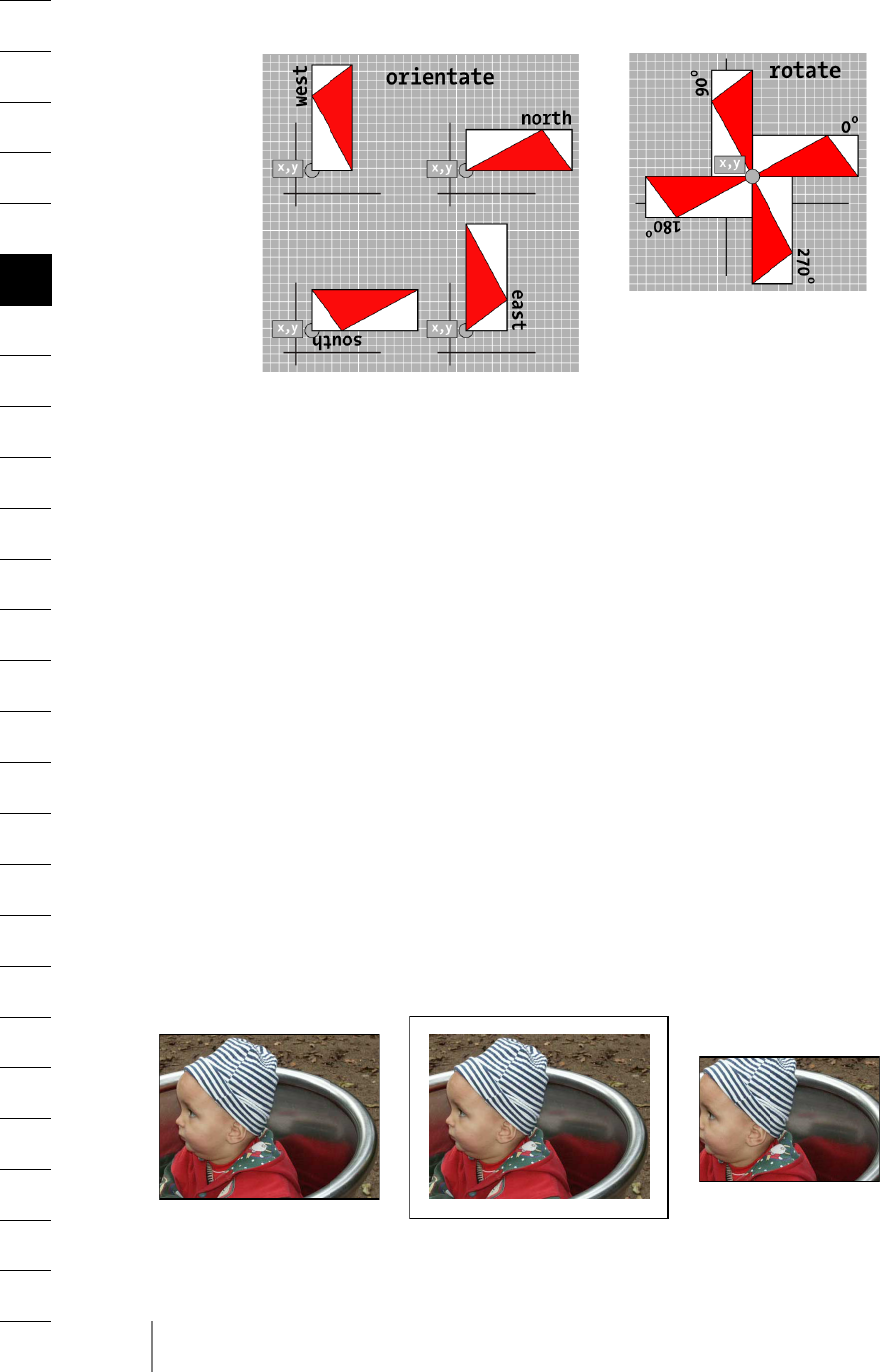
146 Chapter 5: Importing and Placing Objects
5.3.2 Adjusting the Page Size
In the next example (see Figure 5.7) we will automatically adjust the page size to the ob-
ject’s size. This can be useful, for example, for archiving images in the PDF format. The
reference point (x, y) can be used to specify whether the page will be exactly the object’s
size, or somewhat larger or smaller. When enlarging the page size (see Figure 5.7) some
border will be kept around the image; when the page size is smaller than the image
some parts of the image will be clipped. Let’s start with exactly matching the page size
to the object’s size:
PDF_fit_image(p, image, 0, 0, "adjustpage");
The next code fragment makes the page size larger by 40 units in x and y direction than
the object, resulting in some border around the object:
PDF_fit_image(p, image, 40, 40, "adjustpage");
The next code fragment makes the page size smaller by 40 units in x and y direction
than the object. The object will be clipped at the page borders, and some area within the
object (with a width of 40 units) will be invisible:
PDF_fit_image(p, image, -40, -40, "adjustpage");
Fig. 5.5
The orientate option
Fig. 5.6
The rotate option
Fig. 5.7
Adjusting the page size. Left to
right: exact, enlarge, shrink
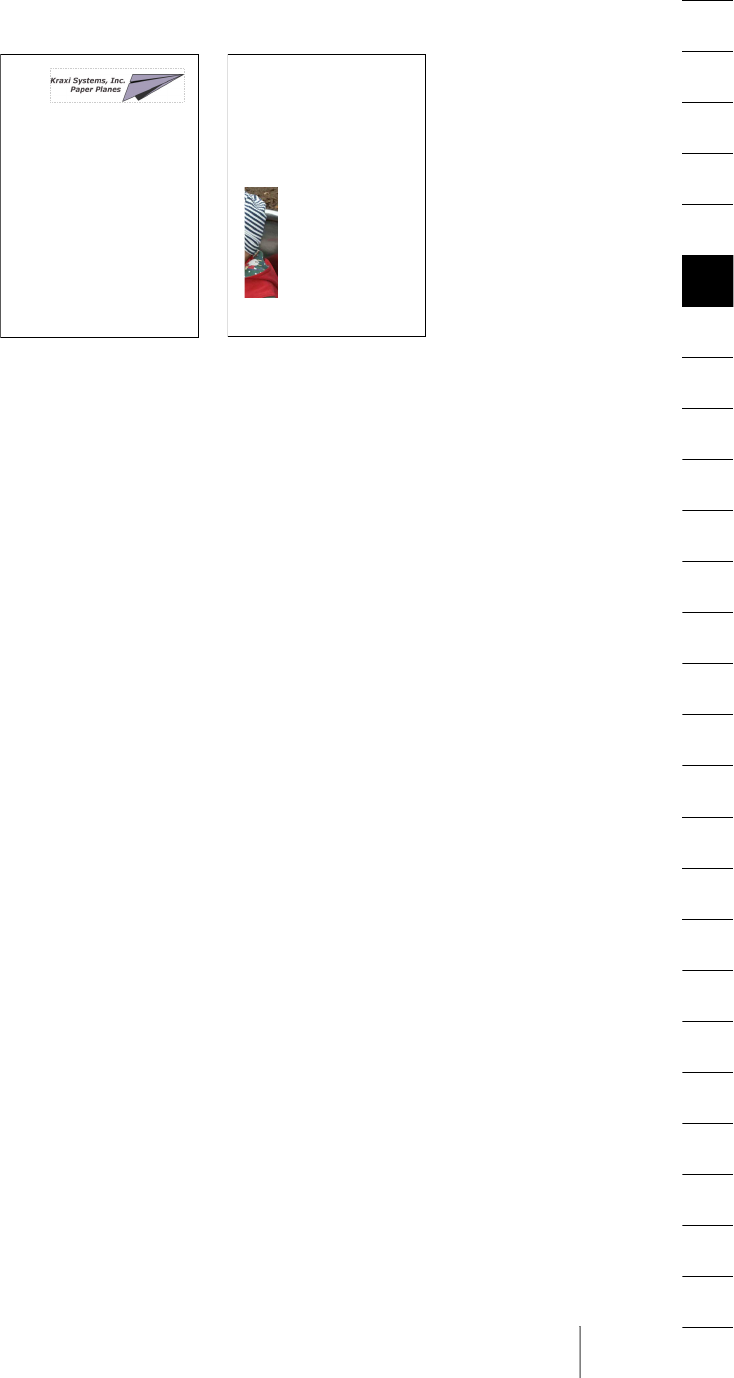
5.3 Placing Images and Imported PDF Pages 147
In addition to placing by means of x and y coordinates (which specify the object’s dis-
tance from the page edges, or the coordinate axes in the general case) you can also spec-
ify a target box. This is a rectangular area in which the object will be placed subject to
various formatting rules. These can be controlled with the boxsize, fitmethod and position
options.
Fitting an object to a box. First, let’s place a company logo in the upper right area of
the page (see Figure 5.8). The size of the target rectangle where the logo is to appear is
fixed. However, we don’t know how to scale the logo so that it fits into the box while
avoiding any distortion (the ratio of width and height must not be changed). The follow-
ing statement does the job:
PDF_fit_image(p, image, 350, 750, "boxsize {200 100} position 0 fitmethod meet");
This code fragment places the lower left corner of a box which is 200 units wide and 100
units high (boxsize {200 100}) at the point (350, 750). The object’s lower left corner will be
placed at the box’s lower left corner (position 0). The object will be scaled without any
distortion to make its height and/or width exactly fit into the box (fitmethod meet).
This concept offers a broad range of variations. For example, the position option can
be used to specify which point within the object is to be used as the reference point
(specified as a percentage of width and height). The position option will also specify the
reference point within the target box. If both width and height position percentages are
identical it is sufficient to specify a single value. For example, position 50 can be used to
select the object’s and box’s midpoint as reference point for placing the object.
Clipping an object when fitting it to the box. Using another flavor of the fitmethod op-
tion we can clip the object such that it exactly fits into the target box (see Figure 5.9). In
this case the object won’t be scaled:
PDF_fit_image(p, image, 50, 80, "boxsize {100 400} position 50 fitmethod clip");
This code fragment places a box of width 100 and height 400 (boxsize {100 400}) at the
coordinates (50, 80). The object will be placed in its original size in the middle of the box
(position 50), and will be cropped if it exceeds the box (fitmethod clip).
Fig. 5.8
Fitting an object
to the box
Fig. 5.9
Clipping an object when
fitting it to the box
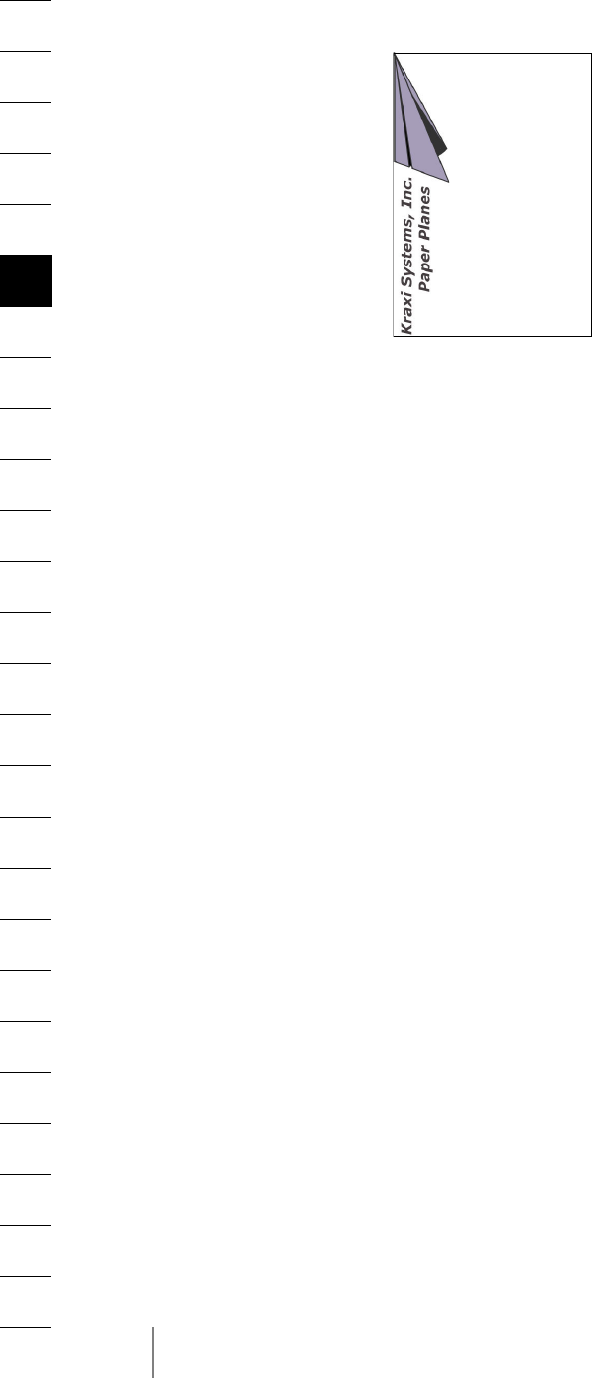
148 Chapter 5: Importing and Placing Objects
Adjusting an object to the page. Adjusting an object to a given page size can easily be
accomplished by choosing the page as target box for placing the object. The following
statement uses an A4-sized page with dimensions 595 x 842:
PDF_fit_image(p, image, 0, 0, "boxsize {595 842} position 0 fitmethod slice");
In this code fragment a box is placed at the lower left corner of the page. The size of the
box equals the size of an A4 page. The object is placed in the lower left corner of the box
and scaled proportionally until it fully covers the box and therefore the page. If the ob-
ject exceeds the box it will be cropped. Note that fitmethod slice results in the object be-
ing scaled (as opposed to fitmethod clip which doesn’t scale the object). Of course the
position and fitmethod options could also be varied in this example.
Fitting a logo to the page. How can we achieve the rotated company logo in Figure
5.10? It is rotated by 90 degrees counterclockwise, starts in the lower left corner, and
covers the full height of the page:
PDF_fit_image(p, image, 0, 0, "boxsize {595 842} orientate west fitmethod meet");
The reference point is (0, 0) and orientation is specified as orientate west. In order to
make the logo cover the full page height we choose the box height to be equal to the
page height (842), and choose a large enough value for the box’s width (595). The logo’s
proportions should not be changed, therefore we choose fitmethod meet.
Fig. 5.10
Fitting a logo to the page

6.1 Installing the PDFlib Block Plugin 149
6 Variable Data and Blocks
PDFlib supports a template-driven PDF workflow for variable data processing. Using the
concept of blocks, imported pages can be populated with variable amounts of text, im-
ages, or PDF graphics which can be pulled from an external source. This can be used to
easily implement applications which require customized PDF documents, for example:
>mail merge
>flexible direct mailings
>transactional and statement processing
>business card personalization
Note Block processing requires the PDFlib Personalization Server (PPS). Although PPS is contained in
all commercial PDFlib packages, you must purchase a license key for PPS; a PDFlib or
PDFlib+PDI license key is not sufficient. The PDFlib Block plugin for Adobe Acrobat is required
for creating blocks in PDF templates.
6.1 Installing the PDFlib Block Plugin
The Block plugin and its sibling, the PDF form field conversion plugin, work only with
the full version of Acrobat 5, Acrobat 6 Standard and Acrobat 6 Professional. The plugins
don’t work with Acrobat 6 Elements or any version of Acrobat Reader/Adobe Reader.
Note If the PDFlib Block plugin doesn’t seem to work make sure that in Edit, Preferences, [General...],
Startup (Acrobat 6) or Options (Acrobat 5) the »Use only certified plug-ins« box is unchecked.
Installing the PDFlib Block plugins for Acrobat on Windows. To install the PDFlib Block
plugin and the PDF form field conversion plugin in Acrobat 5 or 6 the plugin files must
be copied to a subdirectory in the Acrobat plugin folder. This is done automatically by
the plugin installer, but can also be done manually. The plugin files are called Block.api
and AcroFormConversion.api, and a typical location of the plugin folder looks as follows:
C:\Program Files\Adobe\Acrobat 6.0\Acrobat\plug_ins\PDFlib
Installing the PDFlib Block plugins for Acrobat on the Mac. With Acrobat 6 the plugin
folder will not be visible in the finder. Instead of dragging the plugin files to the plugin
folder use the following steps (make sure that Acrobat is not running):
>Extract the plugin files by double-clicking the disk image.
>Locate the Acrobat application icon in the finder. It is usually located in a folder
which has a name similar to the following:
/Applications/Adobe Acrobat 6.0 Professional
>Single-click on the icon and select File, Get Info.
>In the window that pops up click the triangle next to Plug-ins.
>Click Add... and select the PDFlib folder from the folder which has been created in the
first step. Note that the PDFlib folder will not immediately show up in the list of plug-
ins, but only when you open up the info window next time.
To install the plugins for Acrobat 5, start by double-clicking the disk image. Drag the
PDFlib folder to the Acrobat 5 plugin folder. A typical plugin folder name is as follows:
/Applications/Adobe Acrobat 5.0/Plug-Ins

150 Chapter 6: Variable Data and Blocks
6.2 Overview of the PDFlib Block Concept
6.2.1 Complete Separation of Document Design and Program Code
PDFlib data blocks make it easy to place variable text, images, or graphics on imported
pages. In contrast to simple PDF pages, pages containing data blocks intrinsically carry
information about the required processing which will be performed later on the server
side. The PDFlib block concept completely separates the following tasks:
>A designer creates the page layout, and specifies the location of variable text and im-
age elements along with relevant properties such as font size, color, or image scaling.
After creating the layout as a PDF document, the designer uses the PDFlib Block plug-
in for Acrobat to specify variable data blocks and their associated properties.
>A programmer writes code to connect the information contained in PDFlib blocks on
imported PDF pages with dynamic information, e.g., database fields. The program-
mer doesn’t need to know any details about a block (whether it contains a name or a
ZIP code, the exact location on the page, its formatting, etc.) and is therefore inde-
pendent from any layout changes. PDFlib will take care of all block-related details
based on the block properties found in the file.
In other words, the code written by the programmer is »data-blind« – it is generic and
does not depend on the particulars of any block. For example, the designer may decide
to use the first name of the addressee in a mailing instead of the last name. The generic
block handling code doesn’t need to be changed, and will generate correct output once
the designer changed the block properties with the Acrobat plugin to use the first name
instead of the last name.
Example: adding variable text to a template. Adding dynamic text to a PDF template
is a very common task. The following code fragment will open a page in an input PDF
document (the template), place it on the output page, and fill some variable text into a
text block called firstname:
doc = PDF_open_pdi(p, filename, "", 0);
if (doc == -1) {
printf("Couldn't open PDF template '%s'\n", filename);
return (1);
}
page = PDF_open_pdi_page(p, doc, pageno, "");
if (page == -1) {
printf("Couldn't open page %d of PDF template '%s'\n", pageno, filename);
return (2);
}
PDF_begin_page_ext(p, width, height, "");
PDF_fit_pdi_page(p, page, 0.0, 0.0, "");
PDF_fill_textblock(p, page, "firstname", "Serge", 0, "encoding winansi");
PDF_close_pdi_page(p, page);
PDF_end_page_ext(p, "");

6.2 Overview of the PDFlib Block Concept 151
6.2.2 Block Properties
The behavior of blocks can be controlled with block properties. The properties are as-
signed to a block with the PDFlib Block plugin for Acrobat.
Standard block properties. PDFlib blocks are defined as rectangles on the page which
are assigned a name, a type, and an open set of properties which will later be processed
on the server side. The name is an arbitrary string which identifies the block, such as
firstname, lastname, or zipcode. PDFlib supports the following kinds of blocks:
>Type Text means that the block will hold one or more lines of textual data. Multi-line
text will be formatted with the Textflow feature. Note that text blocks cannot be
linked such that text will flow from one block to another.
>Type Image means that the block will hold a raster image. This is similar to importing
a TIFF or JPEG file in a DTP application.
>Type PDF means that the block will hold arbitrary PDF graphics imported from a page
in another PDF document. This is similar to importing an EPS graphic in a DTP appli-
cation.
A block may carry a number of standard properties depending on its type. For example,
a text block may specify the font and size of the text, an image or PDF block may specify
the scaling factor or rotation. For each type of block the PDFlib API offers a dedicated
function for processing the block. These functions search an imported PDF page for a
block by its name, analyze its properties, and place some client-supplied data (text, ras-
ter image, or PDF page) on the new page according to the corresponding block proper-
ties.
Custom block properties. Standard block properties make it possible to quickly imple-
ment variable data processing applications, but these are limited to the set of properties
which are internally known to PDFlib and can automatically be processed. In order to
provide more flexibility, the designer may also assign custom properties to a block.
These can be used to extend the block concept in order to match the requirements of
the most demanding variable data processing applications.
There are no rules for custom properties since PDFlib will not process custom prop-
erties in any way, except making them available to the client. The client code can exam-
ine the custom properties and act in whatever way it deems appropriate. Based on some
custom property of a block the code may make layout-related or data-gathering deci-
sions. For example, a custom property for a scientific application could specify the
number of digits for numerical output, or a database field name may be defined as a
custom block property for retrieving the data corresponding to this block.
Overriding block properties. In certain situations the programmer would like to use
only some of the properties provided in a block definition, but override other properties
with custom values. This can be useful in various situations:
>The scaling factor for an image or PDF page will be calculated instead of taken from
the block definition.
>Change the block coordinates programmatically, for example when generating an
invoice with a variable number of data items.
>Individual spot color names could be supplied in order to match the requirements of
individual customers in a print shop application.

152 Chapter 6: Variable Data and Blocks
Property overrides can be achieved by supplying property names and the correspond-
ing values in the option list of all PDF_fill_*block( ) functions as follows:
PDF_fill_textblock(p, page, "firstname", "Serge", 0, "fontsize 12");
This will override the block’s internal fontsize property with the supplied value 12. Al-
most all names of general properties can be used as options, as well as those specific to a
particular block type. For example, the underline option is only allowed for PDF_fill_
textblock( ), while the scale option is allowed for both PDF_fill_imageblock( ) and PDF_fill_
pdfblock( ) since scale is a valid property for both image and PDF blocks.
Property overrides apply only to the respective function calls; they will not be stored
in the block definition.
Coordinate systems. The coordinates describing a block reference the PDF default co-
ordinate system. When the page containing the block is placed on the output page, sev-
eral positioning and scaling options may be supplied to PDF_fit_pdi_page( ). These pa-
rameters are taken into account when the block is being processed. This makes it
possible to place a template page on the output page multiply, every time filling its
blocks with data. For example, a business card template may be placed four times on an
imposition sheet. The block functions will take care of the coordinate system transfor-
mations, and correctly place the text for all blocks in all invocations of the page. The
only requirement is that the client must place the page and then process all blocks on
the placed page. Then the page can be placed again at a different location on the output
page, followed by more block processing operations referring to the new position, and
so on.
Note The Block plugin will display the block coordinates differently from what is stored in the PDF
file. The plugin uses Acrobat’s convention which has the coordinate origin in the upper left cor-
ner of the page, while the internal coordinates (those stored in the block) use PDF’s convention
of having the origin at the lower left corner of the page.
6.2.3 Why not use PDF Form Fields?
Experienced Acrobat users may ask why we implemented a new block concept for
PDFlib, instead of relying on the established form field scheme available in PDF. The pri-
mary distinction is that PDF form fields are optimized for interactive filling, while
PDFlib blocks are targeted at automated filling. Applications which need both interac-
tive and automated filling can easily achieve this by using a feature which automatical-
ly converts form fields to blocks (see Section 6.3.4, »Converting PDF Form Fields to
PDFlib Blocks«, page 159).
Although there are many parallels between both concepts, PDFlib blocks offer sever-
al advantages over PDF form fields as detailed in Table 6.1.

6.2 Overview of the PDFlib Block Concept 153
Table 6.1 Comparison of PDF form fields and PDFlib blocks
Feature PDF form fields PDFlib blocks
design objective for interactive use for automated filling
typographic features (beyond
choice of font and font size)
–kerning, word and character spacing, underline/
overline/strikeout
font control font embedding font embedding and subsetting, encoding
text formatting controls none left-, center-, right-aligned, justified; font changes;
various formatting algorithms and controls
merged result is integral part of PDF
page description
no yes
users can edit merged field contents yes no
extensible set of properties no yes (custom block properties)
color support RGB grayscale, RGB, CMYK, spot color, Lab
PDF/X compatible no yes (both template with blocks and merged results)
graphics and text properties can be
overridden upon filling
no yes

154 Chapter 6: Variable Data and Blocks
6.3 Creating PDFlib Blocks
6.3.1 Creating Blocks interactively with the PDFlib Block Plugin
Activating the PDFlib Block tool. The PDFlib Block plugin for creating PDFlib blocks is
similar to the form tool in Acrobat. All blocks on the page will be visible when the block
tool is active. When another Acrobat tool is selected the blocks will be hidden, but they
are still present. You can activate the block tool in several ways:
>by clicking the block icon in Acrobat’s Advanced Editing toolbar (in Acrobat 5:
Editing toolbar);
>via the menu item PDFlib Blocks, PDFlib Block Tool;
>by using the keyboard shortcut P (in Acrobat 6 make sure to enable Edit, Preferences,
[General...], General, Use single key accelerators to access tools, which is disabled by de-
fault).
Creating and modifying blocks. Once you activated the block tool you can simply drag
the cross-hair pointer to create a block at the desired position on the page and the de-
sired size. Blocks will always be rectangular with edges parallel to the page edges. When
you create a new block the block properties dialog appears where you can edit various
properties of the block (see Section 6.3.2, »Editing Block Properties«, page 156). The block
tool will automatically create a block name which can be changed in the properties dia-
log. Block names must be unique within a page. You can change the block type in the
General tab to one of Text, Image, or PDF. The General and Custom tabs will always be
available, while only one of the Text, Image, and PDF tabs will be active at a time de-
pending on the chosen block type.
Note After you added blocks or made changes to existing blocks in a PDF, use Acrobat’s »Save as...«
Command (as opposed to »Save«) to achieve smaller file sizes.
Note When using the Acrobat plugin Enfocus PitStop to edit documents which contain PDFlib blocks
you may see the message »This document contains PieceInfo from PDFlib. Press OK to continue
editing or Cancel to abort.« This message can be ignored; it is safe to click OK in this situation.
Selecting blocks. Several block operations, such as copying or moving, work with se-
lected blocks. You can select one or more blocks with the block tool as follows:
>To select a single block simply click on it with the mouse.
>Hold down the Shift key while clicking on another block to extend the selection.
>Press Ctrl-A (on Windows) or Cmd-A (on the Mac) or Edit, Select All to select all blocks
on a page.
The context menu. When one or more blocks are selected you can open the context
menu to quickly access block-related functions (which are also available in the PDFlib
Blocks menu). To open the context menu, click on the selected block(s) with the right
mouse button on Windows, or Ctrl-click the block(s) on the Mac.
For example, to delete a block, select it with the block tool and press the Delete key, or
use Edit, Delete in the context menu.
Fine-tuning block size and position. Using the block tool you can move one or more
selected blocks to a different position. Hold down the Shift key while dragging a block to
restrain the positioning to horizontal and vertical movements. This may be useful for
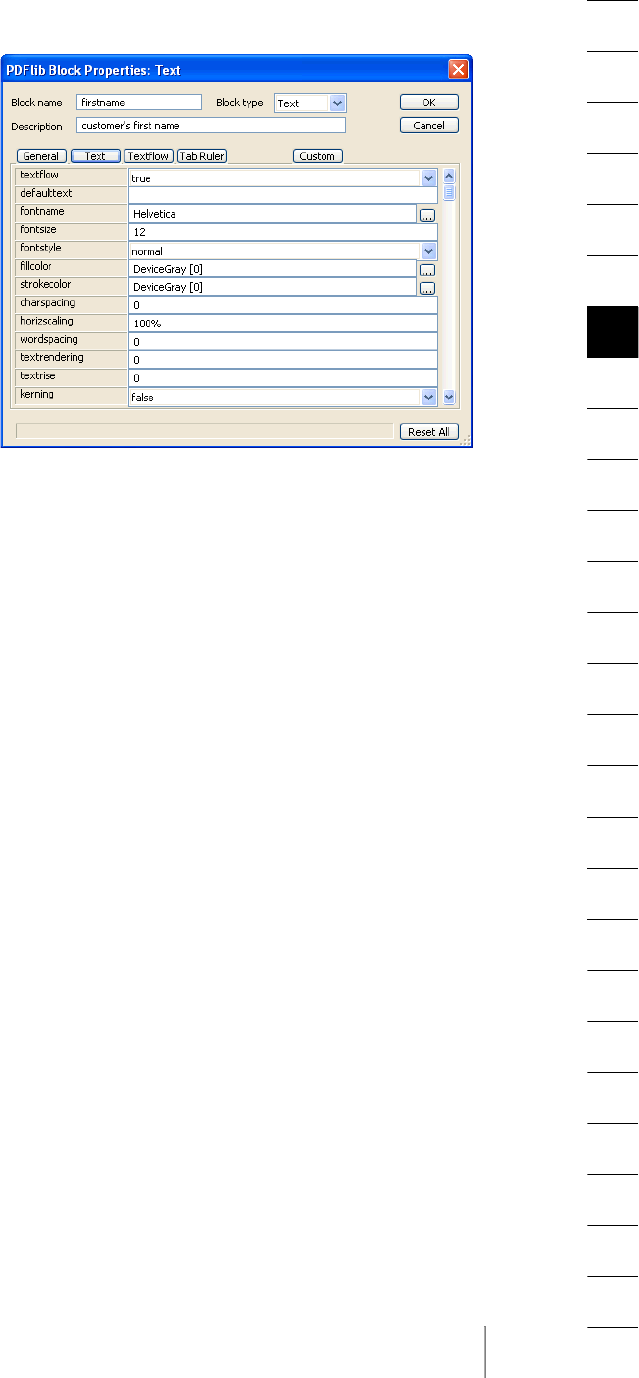
6.3 Creating PDFlib Blocks 155
exactly aligning blocks. When the pointer is located near a block corner, the pointer will
change to an arrow and you can resize the block. To adjust the position or size of multi-
ple blocks, select two or more blocks and use the Align, Center, Distribute, or Size com-
mands from the PDFlib Blocks menu or the context menu. The position of one or more
blocks can also be changed by using the arrow keys.
Alternatively, you can enter numerical block coordinates in the properties dialog.
The origin of the coordinate system is in the upper left corner of the page. The coordi-
nates will be displayed in the unit which is currently selected in Acrobat. To change the
unit go to Edit, Preferences, [General...], Units & Guides (Acrobat 6), or Edit, Preferences,
General..., Display, Page Units (Acrobat 5), and choose one of Points, Inches, Millimeters,
Picas, Centimeters (the latter two are available only in Acrobat 6). You can also go to
View, Navigation Tabs, Info (Acrobat 6) or Window, Info (Acrobat 5), and select a unit from
the Options (Acrobat 6) or Info (Acrobat 5) menu. Note that the chosen unit will only af-
fect the Rect property, but not any other numerical properties.
Creating blocks by selecting an image or graphic. As an alternative to manually drag-
ging block rectangles you can use existing page contents to define the block size. First,
make sure that the menu item PDFlib Blocks, Click Object to define Block is enabled. Now
you can use the block tool to click on an image on the page in order to create a block
with the size of the image. You can also click on other graphical objects, and the block
tool will try to select the surrounding graphic (e.g., a logo). The Click Object feature is in-
tended as an aid for defining blocks. If you want to reposition or resize the block you can
do so afterwards without any restriction. The block will not be locked to the image or
graphics object which was used as a positioning and sizing aid.
The Click Object feature will try to recognize which vector graphics and images form a
logical element on the page. When some page content is clicked, its bounding box (the
surrounding rectangle) will be selected unless the object is white or very large. In the
next step other objects which are partially contained in the detected rectangle will be
added to the selected area, and so on. The final area will be used as the basis for the gen-
Fig. 6.1
Editing block properties: the Textflow
panel is only visible if textflow=true;
the Tab Ruler panel is only visible if
hortabmethod=ruler

156 Chapter 6: Variable Data and Blocks
erated block rectangle. The end result is that the Click Object feature will try to select
complete graphics, and not only individual lines.
The Click Object feature isn’t perfect: it will not always select what you want, depend-
ing on the nature of the page content. Keep in mind that this feature is only intended as
a positioning aid for quickly creating block rectangles.
Automatically detecting font properties. The PDFlib Block plugin can analyze the un-
derlying font which is present on the location where a block is positioned, and can auto-
matically fill in the corresponding properties of the block:
fontname, fontsize, fillcolor, charspacing, horizscaling, wordspacing,
textrendering, textrise
Since automatic detection of font properties can result in undesired behavior when the
background shall be ignored it can be activated or deactivated using PDFlib Blocks, Detect
underlying font and color. By default this feature is turned off.
Locking blocks. Blocks can be locked to protect them against accidentally moving, re-
sizing, or deleting them. With the block tool active, select the block and choose Lock
from its context menu. While a block is locked you cannot move, resize, or delete it, nor
display its properties dialog.
Using Blocks with PDF/X. Unlike PDF form fields, PDFlib blocks are PDF/X-compatible.
Both the input document containing blocks, as well as the generated output PDF can be
made PDF/X conforming. However, in preparing block files for a PDF/X workflow you
may run into the following problem:
>PDF/X-1:2001, PDF/X-1a:2001, and PDF/X-3:2002 are based on PDF 1.3, and do not sup-
port Acrobat 5 files;
>The PDFlib Block plugin requires Acrobat 5 or above.
How to work around this depends on your Acrobat version:
>Acrobat 6: You can save the file as PDF 1.3 directly from Acrobat using File, Reduce File
Size..., and choosing Acrobat 4.0 and later.
>Acrobat 5: For saving the generated PDF with blocks in the PDF/X-conforming PDF
version 1.3 use an additional plugin by callas software called pdfSaveAs1.3. Fully func-
tional demo versions are available on the callas web site1.
6.3.2 Editing Block Properties
When you create a new block, double-click an existing one, or choose Properties from the
context menu, the properties dialog will appear where you can edit all settings related
to the selected block (see Figure 6.1). As detailed in Section 6.4, »Standard Properties for
Automated Processing«, page 161, there are several types of properties:
>Name, type, description, and the properties in the General tab apply to all blocks.
>Properties in the Text, Image, and PDF tabs apply only to the respective block type.
Only the tab corresponding to the selected block’s type will be active, while the other
tabs are inactive.
>If a block of type Text has the textflow property set to true, another tab called Textflow
will appear with Textflow-related settings.
1. See www.callassoftware.com

6.3 Creating PDFlib Blocks 157
>If a block of type Text has the textflow property set to true, and the hortabmethod
property in the Textflow tab is set to ruler, still another tab called Tab Ruler will appear
where you can edit tabulator settings.
>Properties in the Custom tab can be defined by the user, and apply to any block type.
To change a property’s value enter the desired number or string in the property’s input
area (e.g. linewidth), choose a value from the available drop-down lists (e.g. fitmethod), or
select a color, font, or file by clicking the »...« button at the right-hand side of the dialog
(e.g. backgroundcolor). For the fontname property you can either choose from the list of
fonts installed on the system (after clicking the »...« button symbol to open the font se-
lection dialog), or type a custom font name. Regardless of the method for entering a
font name, the font must be available on the system where the blocks will be filled.
When you are done editing properties, click OK to close the properties dialog. The
properties just defined will be stored in the PDF file as part of the block definition.
Stacked blocks. Overlapping blocks can be difficult to select since clicking an area with
the mouse will always select the topmost block. In such a situation the Choose Block en-
try in the context menu can be used to select one of the blocks by name. As soon as a
block has been selected the next action (e.g. double-click) within its area will not affect
other blocks, but only the selected one. This way block properties can easily be edited
even for blocks which are partially or completely covered by other blocks.
Using and restoring default properties. In order to save some amount of typing and
clicking, the block tool will remember the property values which have been entered into
the previous block’s properties dialog. These values will be reused when you create a
new block. Of course you can override these values with different ones at any time.
Pressing the Reset All button in the properties dialog will reset most block properties
to their respective defaults. However, the following items will remain unmodified:
>the Name, Type, Rect, and Description properties
>all custom properties.
Shared properties. By holding the Shift key and using the block tool to select multiple
blocks you can select an arbitrary number of blocks on a page. Double-clicking one of
the selected blocks or pressing the Enter key will display the properties dialog which
now applies to all selected blocks. However, since not all properties can be shared
among multiple blocks, only a subset of all properties will be available for editing. Sec-
tion 6.4, »Standard Properties for Automated Processing«, page 161, details which prop-
erties can be shared among multiple blocks. Custom properties cannot be shared.
6.3.3 Copying Blocks between Pages and Documents
The block plugin offers several methods for moving and copying blocks within the cur-
rent page, the current document, or other documents:
>move or copy blocks by dragging them with the mouse, or pasting blocks to another
page or open document
>duplicate blocks on one or more pages of the same document
>export blocks to a new file (with empty pages) or to an existing document (apply the
blocks to existing pages)
>import blocks from other documents

158 Chapter 6: Variable Data and Blocks
In order to update the page contents while maintaining block definitions you can re-
place the underlying page(s) while keeping the blocks. Use Document, Pages, Replace (Ac-
robat 6) or Document, Replace Pages... (Acrobat 5).
Moving and copying blocks. You can relocate blocks or create copies of blocks by se-
lecting one or more blocks and dragging them to a new location while pressing the Ctrl
key (on Windows) or Alt key (on the Mac). The mouse cursor will change while the key is
pressed. A copied block will have the same properties as the original block, with the ex-
ception of its name and position which will automatically be changed.
You can also use copy/paste to copy blocks to another location on the same page, to
another page in the same document, or to another document which is currently open in
Acrobat:
>Activate the block tool and select the blocks you want to copy.
>Use Ctrl-C (on Windows) or Cmd-C (on the Mac) or Edit, Copy to copy the selected
blocks to the clipboard.
>Use Ctrl-V (on Windows) or Cmd-V (on the Mac) or Edit, Paste to paste the blocks
which are currently in the clipboard.
Duplicating blocks on other pages. You can create duplicates of one or more blocks on
an arbitrary number of pages in the current document simultaneously:
>Activate the block tool and select the blocks you want to duplicate.
>Choose Import and Export, Duplicate... from the PDFlib Blocks menu or the context
menu.
>Choose which blocks to duplicate (selected blocks or all on the page) and the range of
target pages where you want duplicates of the blocks.
Exporting and importing blocks. Using the export/import feature for blocks it is possi-
ble to share the block definitions on a single page or all blocks in a document among
multiple PDF files. This is useful for updating the page contents while maintaining ex-
isting block definitions. To export block definitions to a separate file proceed as follows:
>Activate the block tool and Select the blocks you want to export.
>Choose Import and Export, Export... from the PDFlib Blocks menu or the context menu.
Enter the page range and a file name for the file containing the block definitions.
You can import block definitions via PDFlib Blocks, Import and Export, Import... . Upon im-
porting blocks you can choose whether to apply the imported blocks to all pages in the
document, or only to a page range. If more than one page is selected the block defini-
tions will be copied unmodified to the pages. If there are more pages in the target range
than in the imported block definition file you can use the Repeate Template checkbox. If
it is enabled the sequence of blocks in the imported file will be repeated in the current
document until the end of the document is reached.
Copying blocks to another document upon export. When exporting blocks you can
immediately apply them to the pages in another document, thereby propagating the
blocks from one document to another. In order to do so choose an existing document to
export the blocks to. If you activate the checkbox Delete existing blocks all blocks which
may be present in the target document will be deleted before copying the new blocks
into the document.

6.3 Creating PDFlib Blocks 159
6.3.4 Converting PDF Form Fields to PDFlib Blocks
As an alternative to creating PDFlib blocks manually you can automatically convert PDF
form fields to blocks. This is especially convenient if you have complicated PDF forms
which you want to fill automatically with the PDFlib Personalization Server, or need to
convert a large number of existing PDF forms for automated filling. In order to convert
all form fields on a page to PDFlib blocks choose PDFlib Blocks, Convert Form Fields, Current
Page. To convert all form fields in a document choose All Pages instead. Finally, you can
convert only selected form fields (choose Acrobat’s Form Tool or the Select Object Tool
to select form fields) with Selected Form Fields.
Form field conversion details. Automatic form field conversion will convert form
fields of the types selected in the PDFlib Blocks, Convert Form Fields, Conversion Options...
dialog to blocks of type Text. By default all form field types will be converted. Attributes
of the converted fields will be transformed to the corresponding block properties ac-
cording to Table 6.2.
Table 6.2 Conversion of PDF form fields to PDFlib blocks
PDF form field attribute... ...will be converted to the PDFlib block property
all fields
Position General, Rect
Name General, Name
Tooltip General, Description
Appearance, Text, Font Text, fontname
Appearance, Text, Font Size Text, fontsize; »auto« font size will be converted to a fixed font size of 2/3
of the block height, and the fitmethod will be set to »auto«. For multi-line
fields/blocks this combination will automatically result in a suitable font
size which may be smaller than the initial value of 2/3 of the block height.
Appearance, Text, Text Color Text, textcolor and Text, fillcolor
Appearance, Border, Border Color General, bordercolor
Appearance, Border, Fill Color General, backgroundcolor
Appearance, Border, Line Thickness General, linewidth: Thin=1, Medium=2, Thick=3
General, Common Properties, Form
Field
General, Status: Visible=active, Hidden=ignore, Visible but doesn’t
print=ignore, Hidden but printable=active
General, Common Properties,
Orientation
General, orientate: 0=north, 90=west, 180=south, 270=east
text fields
Options, Default Value Text, defaulttext
Options, Alignment General, position: Left={0 50}, Center={50 50}, Right={100, 50}
Options, Multi-line Text, textflow: checked=true, unchecked=false
radio buttons and check boxes
If »Check box/Button is checked by
default« is selected: Options, Check
Box Style or Options, Button Style
Text, defaulttext: Check=4, Circle=l, Cross=8, Diamond=u, Square=n,
Star=H (these characters represent the respective symbols in the
ZapfDingbats font)
list boxes and combo boxes
Options, Selected (default) item Text, defaulttext
buttons
Options, Icon and Label, Label Text, defaulttext

160 Chapter 6: Variable Data and Blocks
Binding blocks to the corresponding form fields. In order to keep PDF form fields and
the generated PDFlib blocks synchronized, the generated blocks can be bound to the cor-
responding form fields. This means that the block tool will internally maintain the rela-
tionship of form fields and blocks. When the conversion process is activated again,
bound blocks will be updated to reflect the attributes of the corresponding PDF form
fields. Bound blocks are useful to avoid duplicate work: when a form is updated for in-
teractive use, the corresponding blocks can automatically be updated, too.
If you do not want to keep the converted form fields after blocks have been generat-
ed you can choose the option Delete converted Form Fields in the PDFlib Blocks, Convert
Form Fields, Conversion Options... dialog. This option will permanently remove the form
fields after the conversion process. Any actions (e.g., JavaScript) associated with the af-
fected fields will also be removed from the document.
Batch conversion. If you have many PDF documents with form fields that you want to
convert to PDFlib blocks you can automatically process an arbitrary number of docu-
ments using the batch conversion feature. The batch processing dialog is available via
PDFlib Blocks, Convert Form Fields, Batch conversion...:
>The input files can be selected individually; alternatively the full contents of a folder
can be processed.
>The output files can be written to the same folder where the input files are, or to a
different folder. The output files can receive a prefix to their name in order to distin-
guish them from the input files.
>When processing a large number of documents it is recommended to specify a log
file. After the conversion it will contain a full list of processed files as well as details
regarding the result of each conversion along with possible error messages.
During the conversion process the converted PDF documents will be visible in Acrobat,
but you cannot use any of Acrobat’s menu functions or tools.

6.4 Standard Properties for Automated Processing 161
6.4 Standard Properties for Automated Processing
PDFlib supports general properties which can be assigned to any type of block. In addi-
tion there are properties which are specific to the block types Text, Image, and PDF. Some
properties are shared, which means that they can be assigned to multiple blocks at once
using the Block plugin.
Properties support the same data types as option lists (see Section 3.1.4, »Option
Lists«, page 48) except handles and action lists.
Many block properties have the same name as options for PDF_fit_image( ) (e.g.,
fitmethod) and other functions, or as PDFlib parameters (e.g., charspacing). In these cases
the behavior is exactly the same as the one documented for the respective option or pa-
rameter.
Property processing in PDFlib. The PDFlib Block functions PDF_fill_*block( ) will process
block properties in the following order:
>If the backgroundcolor property is present and contains a color space keyword differ-
ent from None, the block rectangle will be filled with the specified color.
>All other properties except bordercolor and linewidth will be processed.
>If the bordercolor property is present and contains a color space keyword different
from None, the block rectangle will be stroked with the specified color and linewidth.
There will be no clipping; if you want to make sure that the block contents do not ex-
ceed the block rectangle avoid fitmethod nofit.
If a separation color is used in a block property the specified spot color name must
either be known to PDFlib internally (see Section 3.3.3, »Spot Colors«, page 64), or must
have been specified earlier in the PDFlib client program using PDF_makespotcolor( ). Oth-
erwise the block functions will fail.
6.4.1 General Properties
General properties apply to all kinds of blocks (Text, Image, PDF). They are required for
block administration, describe the appearance of the block rectangle itself, and manage
how the contents will be placed within the block. Required entries will automatically be
generated by the PDFlib Block Plugin. Table 6.3 lists the general properties.

162 Chapter 6: Variable Data and Blocks
Table 6.3 General block properties
keyword type possible values and explanation
Block administration
Name string (Required) Name of the block. Block names must be unique within a page, but not
within a document. The three characters [ ] / are not allowed in block names.
Block names are restricted to a maximum of 127 characters.
Description string Human-readable description of the block’s function, coded in PDFDocEncoding or
Unicode (in the latter case starting with a BOM). This property is for user
information only, and will be ignored when processing the block.
Locked boolean (Shareable) If true, the block and its properties can not be edited with the Block
plugin. This property will be ignored when processing the block. Default: false.
Rect rectangle (Required) The block coordinates. The origin of the coordinate system is in the
lower left corner of the page. However, the Block plugin will display the coor-
dinates in Acrobat’s notation, i.e., with the origin in the upper left corner of the
page. The coordinates will be displayed in the unit which is currently selected in
Acrobat, but will always be stored in points in the PDF file.
Status keyword Keyword describing how the block will be processed (Default: active):
active The block will be fully processed according to its properties.
ignore The block will be ignored.
static No variable contents will be placed; instead, the block’s default text,
image, or PDF contents will be used if available.
Subtype keyword (Required) Depending on the block type, one of Text, Image, or PDF.
Type keyword (Required) Always Block
Block appearance
background-
color
color (Shareable) If this property is present and contains a color space keyword different
from None, a rectangle will be drawn and filled with the supplied color. This may
be useful to cover existing page contents. Default: None
bordercolor color (Shareable) If this property is present and contains a color space keyword different
from None, a rectangle will be drawn and stroked with the supplied color. Default:
None
linewidth float (Shareable; must be greater than 0) Stroke width of the line used to draw the
block rectangle; only used if bordercolor is set. Default: 1
Content placing
fitmethod keyword (Shareable) Strategy to use if the supplied content doesn’t fit into the box. Possible
values are auto, nofit, clip, meet1, slice1, and entire1. For simple text blocks, image,
and PDF blocks this property will be interpreted according to Table 8.18 and Table
8.39). Default: auto. For textflow blocks where the block is too small for the text
the interpretation is as follows:
auto fontsize and leading will be decreased until the text fits.
nofit Text will run beyond the bottom margin of the block.
clip Text will be clipped at the block margin.
orientate1keyword (Shareable) Specifies the desired orientation of the content when it is placed (see
Table 8.39). Possible values are north, east, south, west. Default: north
position1float list (Shareable) One or two values specifying the position of the reference point
within the content (see Table 8.18 for text, Table 8.39 for image/PDF). Default: 0
rotate float (Shareable) Rotation angle in degrees by which the block will be rotated counter-
clockwise before processing begins. The reference point is center of the rotation.
Default: 0
1. This keyword or property is not supported for textflow blocks (text blocks with textflow=true).

6.4 Standard Properties for Automated Processing 163
6.4.2 Text Properties
Text-related properties apply to blocks of type Text (in addition to general properties).
All text-related properties can be shared. The encoding for the text must be specified as
an option for PDF_fill_textblock( ) when filling the block unless the font option has been
supplied.
Properties for all text blocks. Text blocks can be single-line or multi-line. Table 6.4
lists the text-related properties which apply to both types.
Table 6.4 Text block properties
keyword type possible values and explanation
charspacing float or
percentage
Character spacing (see Table 8.17). Percentages are based on fontsize. Default: 0
defaulttext string Text which will be used if no substitution text is supplied by the client1
1. The text will be interpreted in winansi encoding or Unicode.
fillcolor color Fill color of the text. Default: gray 0 (=black)
fontname2
2. This property is required in a text block; it will automatically be enforced by the PDFlib Block plugin.
string Name of the font as required by PDF_load_font( )
fontsize2float Size of the font in points
fontstyle keyword Font style, must be one of normal, bold, italic, or bolditalic (see Table 8.15)
horizscaling float or
percentage
Horizontal text scaling (see Table 8.17). Default: 100%
italicangle float Italic angle of text in degrees (see Table 8.17). Default: 0
kerning boolean Kerning behavior (see Table 8.17). Default: false
margin float list One or two float values describing additional horizontal and vertical extensions
of the text box (see Table 8.18). Default: 0
monospace integer
1...2048
Forces the same width for all characters in the font (see Table 8.15) Default: absent
(metrics from the font will be used)
overline boolean Overline mode (see Table 8.17). Default: false
strikeout boolean Strikeout mode (see Table 8.17). Default: false
strokecolor color Stroke color of the text. Default: gray 0 (=black)
textflow boolean Controls single- or multiline processing (default: false):
false Text can span a single line and will be processed with PDF_fit_text( ).
true Text can span multiple lines and will be processed with PDF_fit_
textflow( ). The general properties position and orientate will be
ignored. In addition to the standard text properties all textflow-
related properties can be specified (see Table 6.5).
textrendering
integer Text rendering mode (see Table 8.17). Default: 0
textrise float or
percentage
Text rise parameter (see Table 8.17). Percentages are based on fontsize. Default: 0
underline boolean Underline mode (see Table 8.17). Default: false
wordspacing float or
percentage
Word spacing (see Table 8.17). Percentages are based on fontsize. Default: 0

164 Chapter 6: Variable Data and Blocks
Properties for textflow blocks. Textflow-related properties apply to blocks of type Text
where the textflow property is true. The text-related properties will be used to construct
the initial option list for processing the textflow (corresponding to the optlist parameter
of PDF_create_textflow( )). Inline option lists can not be specified with the plugin, but
they can be supplied on the server as part of the text contents when filling the block
with PDF_fill_textblock( ). All textflow-related properties can be shared. Table 6.5 lists the
textflow-related properties.
Table 6.5 Textflow block properties
keyword type possible values and explanation
Property for text semantics:
tabalignchar integer Unicode value of the character at which decimal tabs will be aligned. Default:
the ’.’ character (U+002E)
Properties for controlling the text layout:
alignment keyword Specifies formatting for lines in a paragraph (default: left):
left left-aligned, starting at leftindent
center centered between leftindent and rightindent
right right-aligned, ending at rightindent
justify left- and right-aligned
firstlinedist float,
percentage,
or keyword
The distance between the top of the fitbox and the baseline for the first line of
text, specified in user coordinates, as a percentage of the relevant font size (the
first font size in the line if fixedleading=true, and the maximum of all font sizes in
the line otherwise), or as a keyword (default: leading):
leading The leading value determined for the first line; typical diacritical
characters such as À will touch the top of the fitbox.
ascender The ascender value determined for the first line; typical characters
with larger ascenders, such as d and h will touch the top of the fitbox.
capheight The capheight value determined for the first line; typical capital
uppercase characters such as H will touch the top of the fitbox.
If fixedleading=false the maximum of all leading, ascender, or capheight values
found in the first line will be used.
fixedleading boolean If true, the first leading value found in each line will be used. Otherwise the
maximum of all leading values in the line will be used. Default: false
hortabsize float or
percentage
Width of a horizontal tab1. The interpretation depends on the hortabmethod
option. Default: 7.5%
hortab-
method
keyword Treatment of horizontal tabs in the text. If the determined position is to the left of
the current text position, the tab will be ignored (default: relative):
relative The position will be advanced by the amount specified in hortabsize.
typewriter The position will be advanced to the next multiple of hortabsize.
ruler The position will be advanced to the n-th tab value in the ruler option,
where n is the number of tabs found in the line so far. If n is larger than
the number of tab positions the relative method will be applied.
lastalignment
keyword Formatting for the last line in a paragraph. All keywords of the alignment option
are supported, plus the following (default: auto):
auto Use the value of the alignment option unless it is justify. In the latter
case left will be used.

6.4 Standard Properties for Automated Processing 165
lastlinedist float,
percentage,
or keyword
(Will be ignored for fitmethod=nofit) The minimum distance between the base-
line for the last line of text and the bottom of the fitbox, specified in user coordi-
nates, as a percentage of the font size (the first font size in the line if fixedleading=
true, and the maximum of all font sizes in the line otherwise), or as a keyword
(default: 0, i.e. the bottom of the fitbox will be used as baseline, and typical
descenders will extend below the fitbox):
descender The descender value determined for the last line; typical characters
with descenders, such as g and j will touch the bottom of the fitbox.
If fixedleading=false the maximum of all descender values found in the last line
will be used.
leading float or
percentage
Distance between adjacent text baselines in user coordinates, or as a percentage
of the font size. Default: 100%
parindent float or
percentage
Left indent of the first line of a paragraph1. The amount will be added to
leftindent. Specifying this option within a line will act like a tab. Default: 0
rightindent
leftindent
float or
percentage
Right or left indent of all text lines1. If leftindent is specified within a line and the
determined position is to the left of the current text position, this option will be
ignored for the current line. Default: 0
ruler2list of floats
or
percentages
List of absolute tab positions for hortabmethod=ruler1. The list may contain up to
32 non-negative entries in ascending order. Default: integer multiples of
hortabsize
tabalignment
list of
keywords
Alignment for tab stops. Each entry in the list defines the alignment for the
corresponding entry in the ruler option (default: left)
center Text will be centered at the tab position.
decimal The first instance of tabalignchar will be left-aligned at the tab posi-
tion. If no tabalignchar is found, right alignment will be used instead.
left Text will be left-aligned at the tab position.
right Text will be right-aligned at the tab position.
verticalalign keyword Vertical alignment of the text in the fitbox (default: top):
top Formatting will start at the first line, and continue downwards. If the
text doesn’t fill the fitbox there may be whitespace below the text.
center The text will be vertically centered in the fitbox. If the text doesn’t fill
the fitbox there may be whitespace both above and below the text.
bottom Formatting will start at the last line, and continue upwards. If the text
doesn’t fill the fitbox there may be whitespace above the text.
justify The text will be aligned with top and bottom of the fitbox. In order to
achieve this the leading will be increased up to the limit specified by
linespreadlimit. The height of the first line will only be increased if
firstlinedist=leading.
Table 6.5 Textflow block properties
keyword type possible values and explanation

166 Chapter 6: Variable Data and Blocks
Properties for controlling the line-breaking algorithm:
adjust-
method
keyword Method used to adjust a line when a text portion doesn’t fit into a line after
compressing or expanding the distance between words subject to the limits
specified by the minspacing and maxspacing options. Default: auto
auto The following methods are applied in order: shrink, spread, nofit, split.
clip Same as nofit, except that the long part at the right edge of the fit box
(taking into account the rightindent option) will be clipped.
nofit The last word will be moved to the next line provided the remaining
(short) line will not be shorter than the percentage specified in the
nofitlimit option. Even justified paragraphs may look slightly ragged.
shrink If a word doesn’t fit in the line the text will be compressed subject to
shrinklimit. If it still doesn’t fit the nofit method will be applied.
split The last word will not be moved to the next line, but will forcefully be
hyphenated. For text fonts a hyphen character will be inserted, but not
for symbol fonts.
spread The last word will be moved to the next line and the remaining (short)
line will be justified by increasing the distance between characters in a
word, subject to spreadlimit. If justification still cannot be achieved
the nofit method will be applied.
linespreadlimit
float or
percentage
(Only for verticalalign=justify) Maximum amount in user coordinates or as per-
centage of the leading for increasing the leading for vertical justification. Default:
200%
maxlines integer or
keyword
The maximum number of lines in the fitbox, or the keyword auto which means
that as many lines as possible will be placed in the fitbox. When the maximum
number of lines has been placed PDF_fit_textflow( ) will return the string _box-
full.
maxspacing
minspacing
float or
percentage
The maximum or minimum distance between words (in user coordinates, or as a
percentage of the width of the space character). The calculated word spacing is
limited by the provided values (but the wordspacing option will still be added).
Defaults: minspacing=50%, maxspacing=500%
nofitlimit float or
percentage
Lower limit for the length of a line with the nofit method (in user coordinates or
as a percentage of the width of the fitbox). Default: 75%.
shrinklimit percentage Lower limit for compressing text with the shrink method; the calculated shrinking
factor is limited by the provided value, but will be multiplied with the value of the
horizscaling option. Default: 85%
spreadlimit float or
percentage
Upper limit for the distance between two characters for the spread method (in
user coordinates or as a percentage of the font size); the calculated character
distance will be added to the value of the charspacing option. Default: 0
1. In user coordinates, or as a percentage of the width of the fit box
2. Rulers can be edited in the »Tabs« section of the Block properties dialog.
Table 6.5 Textflow block properties
keyword type possible values and explanation

6.4 Standard Properties for Automated Processing 167
6.4.3 Image Properties
Image-related properties apply to blocks of type Image (in addition to general proper-
ties). All image-related properties can be shared. Table 6.6 lists the image-related prop-
erties.
6.4.4 PDF Properties
PDF-related properties apply to blocks of type PDF (in addition to general properties). All
PDF-related properties can be shared. Table 6.7 lists the PDF-related properties.
Table 6.6 Image block properties
keyword type possible values and explanation
defaultimage
string Path name of an image which will be used if no substitution image is supplied by
the client. It is recommended to use file names without absolute paths, and use
the SearchPath feature in the PPS client application. This will make block pro-
cessing independent from platform and file system details.
dpi float list One or two values specifying the desired image resolution in pixels per inch in
horizontal and vertical direction. With the value o the image’s internal resolution
will be used if available, or 72 dpi otherwise. This property will be ignored if the
fitmethod property has been supplied with one of the keywords auto, meet, slice,
or entire. Default: 0
scale float list One or two values specifying the desired scaling factor(s) in horizontal and
vertical direction. This option will be ignored if the fitmethod property has been
supplied with one of the keywords auto, meet, slice, or entire. Default: 1
Table 6.7 PDF block properties
keyword type possible values and explanation
defaultpdf string Path name of a PDF document which will be used if no substitution PDF is
supplied by the client. It is recommended to use file names without absolute
paths, and use the SearchPath feature in the PPS client application. This will make
block processing independent from platform and file system details.
default-
pdfpage
integer Page number of the page in the default PDF document. Default: 1
scale float list One or two values specifying the desired scaling factor(s) in horizontal and
vertical direction. This option will be ignored if the fitmethod property has been
supplied with one of the keywords auto, meet, slice, or entire. Default: 1
pdiusebox keyword (Possible values: media, crop, bleed, trim, art) Use the placed page’s MediaBox,
CropBox, BleedBox, TrimBox, or ArtBox for determining its size (see Table 8.44).
Default: crop

168 Chapter 6: Variable Data and Blocks
6.4.5 Custom Properties
Custom properties apply to blocks of any type of block (in addition to general and type-
specific properties). Custom properties are optional, and can not be shared. Table 6.8
lists the custom properties.
Table 6.8 Custom block properties
keyword type possible values and explanation
any name not
containing the three
characters [ ] /
string,
name,
float,
float list
The interpretation of the values corresponding to custom properties is
completely up to the client application.

6.5 Querying Block Names and Properties 169
6.5 Querying Block Names and Properties
In addition to automatic block processing PDFlib supports some features which can be
used to enumerate block names and query standard or custom properties.
Finding the numbers and names of blocks. The client code must not even know the
names or numbers of the blocks on an imported page since these can also be queried.
The following statement returns the number of blocks on the page:
blockcount = PDF_get_pdi_value(p, "vdp/blockcount", doc, page, 0);
The following statement returns the name of block number 5 on the page (block count-
ing starts at 0), or an empty string if no such block exists (however, an exception will be
thrown if the pdiwarning parameter or option is set to true):
blockname = PDF_get_pdi_parameter(p, "vdp/Blocks[5]/Name", doc, page, 0, &len);
The returned block name can subsequently be used to query the block’s properties or
populate the block with text, image, or PDF content.
In the path syntax for addressing block properties the following expressions are
equivalent, assuming that the block with the sequential <number> has its Name proper-
ty set to <blockname>:
Blocks[<number>]/
Blocks/<blockname>/
Finding block coordinates. The two coordinate pairs (llx, lly) and (urx, ury) describing
the lower left and upper right corner of a block named foo can be queried as follows:
llx = PDF_get_pdi_value(p, "vdp/Blocks/foo/Rect[0]", doc, page, 0);
lly = PDF_get_pdi_value(p, "vdp/Blocks/foo/Rect[1]", doc, page, 0);
urx = PDF_get_pdi_value(p, "vdp/Blocks/foo/Rect[2]", doc, page, 0);
ury = PDF_get_pdi_value(p, "vdp/Blocks/foo/Rect[3]", doc, page, 0);
Note that these coordinates are provided in the default user coordinate system (with
the origin in the bottom left corner, possibly modified by the page’s CropBox), while the
Block plugin displays the coordinates according to Acrobat’s user interface coordinate
system with an origin in the upper left corner of the page. Also note that the topdown
parameter is not taken into account when querying block coordinates.
Querying custom properties. Custom properties can be queried as in the following ex-
ample, where the property zipcode is queried from a block named b1:
zip = PDF_get_pdi_parameter(p, "vdp/Blocks/b1/Custom/zipcode", doc, page, 0, &len);
Name space for custom properties. In order to avoid confusion when PDF documents
from different sources are exchanged, it is recommended to use an Internet domain
name as a company-specific prefix in all custom property names, followed by a colon ’:’
and the actual property name. For example, ACME corporation would use the following
property names:
acme.com:digits
acme.com:refnumber

6.6 PDFlib Block Specification 171
6.6 PDFlib Block Specification
The PDFlib Block syntax is fully compliant with the PDF Reference, which specifies an
extension mechanism that allows applications to store private data attached to the data
structures comprising a PDF page. A detailed description of the PDFlib block syntax is
provided here for the benefit of users who wish to create PDFlib blocks by other means
than the PDFlib block plugin. Plugin users can safely skip this section.
6.6.1 PDF Object Structure for PDFlib Blocks
The page dictionary contains a /PieceInfo entry, which has another dictionary as value.
This dictionary contains the key /PDFlib with an application data dictionary as value.
The application data dictionary contains two standard keys listed in Table 6.9.
A Block list is a dictionary containing general information about block processing, plus
a list of all blocks on the page. Table 6.10 lists the keys in a block list dictionary.
Data types for block properties. Properties support the same data types as option lists
(see Section 3.1.4, »Option Lists«, page 48) except handles and action lists. Table 6.11 de-
tails how these types are mapped to PDF data types.
Table 6.9 Entries in a PDFlib application data dictionary
Key type value
LastModified date string (Required) The date and time when the blocks on the page were created or most
recently modified.
Private dictionary (Required) A block list (see Table 6.10)
Table 6.10 Entries in a block list dictionary
Key type value
Version number (Required) The version number of the block specification to which the file
complies. This document describes version 4 of the block specification.
Blocks dictionary (Required) Each key is a name object containing the name of a block; the corres-
ponding value is the block dictionary for this block (see Table 6.12). The /Name key
in the block dictionary must be identical to the block’s name in this dictionary.
PluginVersion
string (Required unless the pdfmark key is present1) A string containing a version identi-
fication of the PDFlib Block plugin which has been used to create the blocks.
1. Exactly one of the PluginVersion and pdfmark keys must be present.
pdfmark
boolean (Required unless the PluginVersion key is present1) Must be true if the block list has
been generated by use of pdfmarks.
Table 6.11 Data types for block properties
block type PDF type remarks
boolean boolean
string string
keyword name It is an error to provide keywords outside the list of keywords supported by a
particular property.
float, integer number While option lists support both point and comma as decimal separators, PDF
numbers support only point.

172 Chapter 6: Variable Data and Blocks
Block dictionary keys. Block dictionaries may contain the keys in Table 6.12. Only keys
from one of the Text, Image or PDF groups may be present depending on the /Subtype
key in the General group (see Table 6.3).
Example. The following fragment shows the PDF code for two blocks, a text block
called job_title and an image block called logo. The text block contains a custom property
called format:
<<
/Contents 12 0 R
/Type /Page
/Parent 1 0 R
/MediaBox [ 0 0 595 842 ]
/PieceInfo << /PDFlib 13 0 R >>
>>
13 0 obj
<<
/Private <<
/Blocks <<
/job_title 14 0 R
percentage array with
two
elements
The first element in the array is the number, the second element is a string
containing a percent character.
color array with
two
elements
The first element in the array specifies a color space, and the second element
specifies a color value as follows. The following entries are supported for the first
element in the array:
/DeviceGray
The second element is a single gray value.
/DeviceRGB
The second element is an array of three RGB values.
/DeviceCMYK
The second element is an array of four CMYK values.
[/Separation/spotname]
The first element is an array containing the keyword /Separation and
a color name. The second element is a tint value.
[/Lab] The first element is an array containing the keyword /Lab. The second
element is an array of three Lab values.
To specify the absence of color the respective property must be omitted.
Table 6.12 Entries in a block dictionary
Key type value
general properties (Some keys are required) General properties according to Table 6.3
text properties (Optional) Text and textflow properties according to Table 6.4 and Table 6.5
image properties (Optional) Image properties according to Table 6.6
PDF properties (Optional) PDF properties according to Table 6.7
Custom dict (Optional) A dictionary containing key/value pairs for custom properties accor-
ding to Table 6.8.
Internal dict (Optional) This key is reserved for private use, and applications should not depend
on its presence or specific behavior. Currently it is used for maintaining the
relationship between converted form fields and corresponding blocks.
Table 6.11 Data types for block properties
block type PDF type remarks

6.6 PDFlib Block Specification 173
/logo 15 0 R
>>
/Version 4
/PluginVersion (2.0.2)
>>
/LastModified (D:20040913200730)
>>
endobj
14 0 obj
<<
/Type /Block
/Rect [ 70 740 200 800 ]
/Name /job_title
/Subtype /Text
/fitmethod /auto
/fontname (Helvetica)
/fontsize 12
/Custom << /format 5 >>
>>
endobj
15 0 obj
<<
/Type /Block
/Rect [ 250 700 400 800 ]
/Name /logo
/Subtype /Image
/fitmethod /auto
>>
6.6.2 Generating PDFlib Blocks with pdfmarks
As an alternative to creating PDFlib blocks with the plugin, blocks can be created by in-
serting appropriate pdfmark commands into a PostScript stream, and distilling it to
PDF. Details of the pdfmark operator are discussed in the Acrobat documentation. The
following fragment shows pdfmark operators which can be used to generate the block
definition in the preceding section:
% ---------- Setup for the blocks on a page ----------
[/_objdef {B1} /type /dict /OBJ pdfmark % Blocks dict
[{ThisPage} <<
/PieceInfo <<
/PDFlib <<
/LastModified (D:20040913200730)
/Private <<
/Version 4
/pdfmark true
/Blocks {B1}
>>
>>
>>
>> /PUT pdfmark
% ---------- text block ----------
[{B1} <<
/job_title <<

174 Chapter 6: Variable Data and Blocks
/Type /Block
/Name /job_title
/Subtype /Text
/Rect [ 70 740 200 800 ]
/fitmethod /auto
/fontsize 12
/fontname (Helvetica)
/Custom << /format 5 >>
>>
>> /PUT pdfmark
% ---------- image block ----------
[{B1} <<
/logo <<
/Type /Block
/Name /logo
/Subtype /Image
/Rect [ 250 700 400 800 ]
/fitmethod /auto
>>
>> /PUT pdfmark

7.1 Acrobat and PDF Versions 175
7 Generating various PDF Flavors
7.1 Acrobat and PDF Versions
At the user’s option PDFlib generates output according to PDF 1.3 (Acrobat 4), PDF 1.4
(Acrobat 5), PDF 1.5 (Acrobat 6), or PDF 1.6 (Acrobat 7). This can be controlled with the
compatibility option in PDF_begin_document( ). In PDF 1.3 compatibility mode the PDFlib
features for PDF 1.4 (listed in Table 7.1) and PDF 1.5 (listed in Table 7.2) will not be avail-
able. Trying to use one of these features in PDF 1.3 mode will result in an exception.
In PDF 1.3 or 1.4 compatibility modes the PDFlib features for PDF 1.5 listed in Table 7.2
will not be available. Trying to use one of these features in PDF 1.3 or PDF 1.4 mode will
result in an exception.
In all compatibility modes only PDF documents with the same or a lower compatibility
level can be imported with PDI. If you must import a PDF with a newer level you must
set the compatibility option accordingly (see Section 5.2.3, »Acceptable PDF Documents«,
page 142.
Table 7.1 PDFlib features for PDF 1.4 which are not available in PDF 1.3 compatibility mode
Feature PDFlib API functions and parameters
smooth shadings (color blends) PDF_shading_pattern( ), PDF_shfill( ), PDF_shading( )
soft masks PDF_load_image( ) with the masked option referring to an image with
more than 1 bit pixel depth
128-bit encryption PDF_begin_document( ) with the userpassword, masterpassword,
permissions options
extended permission settings PDF_begin_document( ) with permissions option, see Table 7.3
certain CMaps for CJK fonts PDF_load_font( ), see Table 4.7
transparency and other graphics
state options
PDF_create_gstate( ) with options alphaisshape, blendmode, opacityfill,
opacitystroke, textknockout
certain options for actions PDF_create_action( ), see Table 8.47
certain options for annotations PDF_create_annotation( ), see Table 8.49
certain field options PDF_create_field( ) and PDF_create_fieldgroup( ), see Table 8.50
Tagged PDF tagged option in PDF_begin_document( )
Table 7.2 PDFlib features for PDF 1.5 which are not available in PDF 1.3 and 1.4 compatibility modes
Feature PDFlib API functions and parameters
certain field options PDF_create_field( ) and PDF_create_fieldgroup( ), see Table 8.50
certain annotation options PDF_create_annotation( ) see Table 8.49
extended permission settings permissions=plainmetadata in PDF_begin_document( ), see Table 7.3
certain CMaps for CJK fonts PDF_load_font( ), see Table 4.7
Tagged PDF certain options for PDF_begin_item( ), see Table 8.55 and Table 8.56
Layers PDF_define_layer( ), PDF_begin_layer( ), PDF_end_layer( ), PDF_layer_
dependency( )

176 Chapter 7: Generating various PDF Flavors
7.2 Encrypted PDF
7.2.1 Strengths and Weaknesses of PDF Security
PDF supports various security features which aid in protecting document contents.
They are based on Acrobat’s standard encryption handler which uses symmetric en-
cryption. Both Acrobat Reader and the full Acrobat product support the following secu-
rity features:
>Permissions restrict certain actions for the PDF document, such as printing or ex-
tracting text.
>The user password is required to open the file.
>The master password is required to change any security settings, i.e. permissions,
user or master password. Files with user and master passwords can be opened for
reading or printing with either password.
If a file has a user or master password or any permission restrictions set, it will be en-
crypted.
Cracking protected PDF documents. The length of the encryption keys used for pro-
tecting documents depends on the PDF compatibility level chosen by the client:
>For PDF versions up to and including 1.3 (i.e., Acrobat 4) the key length is 40 bits.
>For PDF version 1.4 and above the key length is 128 bits. This requires Acrobat 5 or
above. For PDF 1.5 the key length will also be 128 bits, but a slightly different encryp-
tion will be used, which requires Acrobat 6.
It is widely known that a key length of 40 bits for symmetrical encryption (as used in
PDF) is not secure. Actually, using commercially available cracking software it is possi-
ble to disable 40-bit PDF security settings with a brute-force attack within days or
weeks, depending on the length and quality of the password. For maximum security we
recommend the following:
>Use 128-bit encryption (i.e., PDF 1.4 compatibility setting) if at all possible. This re-
quires Acrobat 5 or above for all users of the document.
>Passwords should be at least six characters long and should contain non-alphabetic
characters. Passwords should definitely not resemble your spouse’s or pet’s name,
your birthday etc. in order to prevent so-called dictionary attacks or password guess-
ing. It is important to mention that even with 128-bit encryption short passwords
can be cracked within minutes.
Access permissions. Setting some access restriction, such as printing prohibited will dis-
able the respective function in Acrobat. However, this not necessarily holds true for
third-party PDF viewers or other software. It is up to the developer of PDF tools whether
or not access permissions will be honored. Indeed, several PDF tools are known to ignore
permission settings altogether; commercially available PDF cracking tools can be used
to disable any access restrictions. This has nothing to do with cracking the encryption;
there is simply no way that a PDF file can make sure it won’t be printed while it still re-
mains viewable. This is actually documented in Adobe’s own PDF reference:
There is nothing inherent in PDF encryption that enforces the document permissions speci-
fied in the encryption dictionary. It is up to the implementors of PDF viewers to respect the in-
tent of the document creator by restricting user access to an encrypted PDF file according to
the permissions contained in the file.

7.2 Encrypted PDF 177
7.2.2 Protecting Documents with PDFlib
Passwords. Passwords can be set with the userpassword and masterpassword options in
PDF_begin_document( ). PDFlib interacts with the client-supplied passwords in the fol-
lowing ways:
>If a user password or permissions (see below), but no master password has been sup-
plied, a regular user would be able to change the security settings. For this reason
PDFlib considers this situation as an error.
>If user and master password are the same, a distinction between user and owner of
the file would no longer be possible, again defeating effective protection. PDFlib con-
siders this situation as an error.
>For both user and master passwords, up to a maximum of 32 characters will be used.
Additional characters will be ignored, and do not affect encryption. Empty pass-
words are not allowed.
The supplied passwords will be used for all subsequently generated documents.
Non-ASCII characters in passwords. Attention must be paid when characters outside
the range 0x20-0x7E are used in passwords, i.e. characters which are not in the tradi-
tional ASCII character set. As an example, let’s take a look at the use of the character Ä
within a password. On the Mac this character has code 0x80, while on Windows it is en-
coded as 0xC4. Since users expect the file to be opened when using the password Ä on
either platform, Acrobat converts the supplied password to an internal encoding (called
PDFDocEncoding) before applying the password. Characters which are not available in
this encoding will be mapped to the space character. PDFDocEncoding contains all char-
acters of the Mac and Windows platforms, but requires several characters to be convert-
ed. In the example above, when the user encrypts the file with password Ä on the Mac,
PDI would be unable to decrypt the file if the code for Ä would be used directly. PDI
therefore applies the same password conversion as Acrobat in order to make sure that
files encrypted with Mac or Windows versions of Acrobat can successfully be decrypted.
Upon decryption PDI will automatically detect the required conversion:
>WinAnsi to PDFDocEncoding conversion if the document was encrypted with Acro-
bat on Windows or with PDFlib PLOP 2.1 or above;
>MacRoman to PDFDocEncoding conversion if the document was encrypted with Ac-
robat on the Mac;
>No conversion if the document was encrypted with some other software, including
PDFlib PLOP 2.0 (but not any newer versions).
When encrypting files, PDFlib will act like Acrobat on Windows and interpret the sup-
plied passwords in WinAnsi encoding, i.e., it will apply a WinAnsi to PDFDocEncoding
conversion to the supplied user and master passwords; on EBCDIC platforms it will ap-
ply EBCDIC to WinAnsi conversion prior to that.
Permissions. Access restrictions can be set with the permissions option in PDF_begin_
document( ). It contains one or more access restriction keywords. When setting the
permissions option the masterpassword option must also be set, because otherwise Acro-
bat users could easily remove the permission settings. By default, all actions are al-
lowed. Specifying an access restriction will disable the respective feature in Acrobat. Ac-
cess restrictions can be applied without any user password. Multiple restriction
keywords can be specified as in the following example:

178 Chapter 7: Generating various PDF Flavors
PDF_begin_document(p, filename, 0, "permissions {noprint nocopy}");
Table 7.3 lists all supported access restriction keywords. As detailed in the table, some
keywords require PDF 1.4 or 1.5 compatibility. They will be rejected if the PDF output ver-
sion is too old.
Table 7.3 Access restriction keywords for the permissions option in PDF_begin_document( )
keyword explanation
noprint Acrobat will prevent printing the file.
nomodify Acrobat will prevent users from adding form fields or making any other changes.
nocopy Acrobat will prevent copying and extracting text or graphics, and will disable the accessibility
interface
noannots Acrobat will prevent adding or changing comments or form fields.
noforms (PDF 1.4) Acrobat will prevent form field filling, even if noannots hasn’t been specified.
noaccessible (PDF 1.4) Acrobat will prevent extracting text or graphics for accessibility purposes (such as a
screenreader program)
noassemble (PDF 1.4) Acrobat will prevent inserting, deleting, or rotating pages and creating bookmarks and
thumbnails, even if nomodify hasn’t been specified.
nohiresprint (PDF 1.4) Acrobat will prevent high-resolution printing. If noprint hasn’t been specified printing is
restricted to the »print as image« feature which prints a low-resolution rendition of the page.
plainmeta-
data
(PDF 1.5) Keep document metadata unencrypted even for encrypted documents.

7.3 Web-Optimized (Linearized) PDF 179
7.3 Web-Optimized (Linearized) PDF
PDFlib can apply a process called linearization to PDF documents (linearized PDF is
called Optimized in Acrobat 4, and Fast Web View in Acrobat 5 and above). Linearization
reorganizes the objects within a PDF file and adds supplemental information which can
be used for faster access.
While non-linearized PDFs must be fully transferred to the client, a Web server can
transfer linearized PDF documents one page at a time using a process called byte-
serving. It allows Acrobat (running as a browser plugin) to retrieve individual parts of a
PDF document separately. The result is that the first page of the document will be pre-
sented to the user without having to wait for the full document to download from the
server. This provides enhanced user experience.
Note that the Web server streams PDF data to the browser, not PDFlib. Instead, PDFlib
prepares the PDF files for byteserving. All of the following requirements must be met in
order to take advantage of byteserving PDFs:
>The PDF document must be linearized, which can be achieved with the linearize op-
tion in PDF_begin_document( ). In Acrobat you can check whether a file is linearized
by looking at its document properties (»Fast Web View: yes«).
>The Web server must support byteserving. The underlying byterange protocol is part
of HTTP 1.1 and therefore implemented in all current Web servers. In particular, the
following Web servers support byteserving:
Microsoft Internet Information Server (IIS) 3.0 and above
Apache 1.2.1 and above; however, Apache 1.3.14 (but not other versions) has a bug
which prevents byteserving
>The user must use Acrobat as a Browser plugin, and have page-at-a-time download
enabled in Acrobat (Acrobat 6: Edit, Preferences, [General...,] Internet, Allow fast web
view; Acrobat 5: Edit, Preferences, General..., Options, Allow Fast Web view). Note that this
is enabled by default.
The larger a PDF file (measured in pages or MB), the more it will benefit from lineariza-
tion when delivered over the Web.
Note Linearizing a PDF document generally slightly increases its file size due to the additional linear-
ization information.
Temporary storage requirements for linearization. PDFlib must create the full docu-
ment before it can be linearized; the linearization process will be applied in a separate
step after the document has been created. For this reason PDFlib has additional storage
requirements for linearization. Temporary storage will be required which has roughly
the same size as the generated document (without linearization). Subject to the
inmemory option in PDF_begin_document( ) PDFlib will place the linearization data either
in memory or on a temporary disk file.

180 Chapter 7: Generating various PDF Flavors
7.4 PDF/X
7.4.1 The PDF/X Family of Standards
The PDF/X formats specified in the ISO 15930 standards family strive to provide a con-
sistent and robust subset of PDF which can be used to deliver data suitable for commer-
cial printing1. PDFlib can generate output and process input conforming to the follow-
ing flavors of PDF/X:
PDF/X-1:2001 and PDF/X-1a:2001 as defined in ISO 15930-1. These standards for »blind
exchange« (exchange of print data without the requirement for any prior technical dis-
cussions) are based on PDF 1.3 and support CMYK and spot color data. RGB and device-
independent colors (ICC-based, Lab) are explicitly prohibited. PDF/X-1:2001 supports a
mechanism to integrate legacy files (such as TIFF/IT) in a PDF workflow, and is consid-
ered obsolete. PDF/X-1a:2001 does not contain this legacy support, and is widely used
(especially in North America) for the exchange of publication ads and other applica-
tions.
PDF/X-1a:2003 as defined in ISO 15930-4. This standard is the successor to PDF/X-
1a:2001. It is based on PDF 1.4, with some features (e.g. transparency) prohibited. PDF/X-
1a:2003 is a strict subset of PDF/X-3:2003, and supports CMYK and spot color, and CMYK
output devices.
PDF/X-2:2003 as defined in ISO 15930-5. This standard is targeted at »partial ex-
change« which requires more discussion between supplier and receiver of a file. PDF
documents according to this standard can reference external entities (point to other
PDF pages external to the current document). PDF/X-2:2003 is based on PDF 1.4. As a su-
perset of PDF/X-3:2003 it supports device independent colors.
PDF/X-3:2002 as defined in ISO 15930-3. This standard is based on PDF 1.3, and sup-
ports modern workflows based on device-independent color in addition to grayscale,
CMYK, and spot colors. It is especially popular in European countries. Output devices
can be monochrome, RGB, or CMYK.
PDF/X-3:2003 as defined in ISO 15930-6. This standard is the successor to PDF/X-
3:2002. It is based on PDF 1.4, with some features (e.g. transparency) prohibited.
When one of the PDF/X standards is referenced below without any standardization
year, all versions of the respective standard are meant. For example, PDF/X-3 means
PDF/X-3:2002 and PDF-X/3:2003.
Note PANTONE® Colors are not supported in the PDF/X-1:2001, PDF/X-1a:2001, and PDF/X-1a:2003
modes.
1. See www.pdfx3.org and www.pdf-x.com

7.4 PDF/X 181
7.4.2 Generating PDF/X-conforming Output
Creating PDF/X-conforming output with PDFlib is achieved by the following means:
>PDFlib will automatically take care of several formal settings for PDF/X, such as PDF
version number and PDF/X conformance keys.
>The PDFlib client must explicitly use certain function calls or parameter settings as
detailed in Table 7.4.
>The PDFlib client must refrain from using certain function calls and parameter set-
tings as detailed in Table 7.5.
>Additional rules apply when importing pages from existing PDF/X-conforming doc-
uments (see Section 7.4.3, »Importing PDF/X Documents with PDI«, page 183).
Required operations. Table 7.4 lists all operations required to generate PDF/X-compa-
tible output. The items apply to all PDF/X conformance levels unless otherwise noted.
Not calling one of the required functions while in PDF/X mode will trigger an exception.
Prohibited operations. Table 7.5 lists all operations which are prohibited when gener-
ating PDF/X-compatible output. The items apply to all PDF/X conformance levels unless
otherwise noted. Calling one of the prohibited functions while in PDF/X mode will trig-
ger an exception. However, unacceptable images will not result in an exception subject
to the imagewarning parameter. Similarly, if an imported PDF page doesn’t match the
Table 7.4 Operations which must be applied for PDF/X compatibility
Item PDFlib function and parameter requirements for PDF/X compatibility
conformance level The pdfx option in PDF_begin_document( ) must be set to the required PDF/X confor-
mance level.
output condition
(output intent)
PDF_load_iccprofile( ) with usage = outputintent or PDF_process_pdi( ) with action =
copyoutputintent must be called exactly once for each document. If spot colors from one
of the built-in color libraries are used an output intent ICC profile must be embedded
(using a standard output condition is not allowed in this case).
PDF/X-1 and PDF/X-1a: the output device must be a monochrome or CMYK device;
PDF/X-3: the output device must be a monochrome, RGB, or CMYK device. If ICC-based
colors or Lab colors are used in the file, an output device ICC profile must be embedded.
font embedding Set the embedding option of PDF_load_font( )
to true to enable font embedding.
page sizes The page boxes, which are settable via the CropBox, BleedBox, TrimBox, and ArtBox
parameters, must satisfy all of the following requirements:
>The TrimBox or ArtBox must be set, but not both of these box entries. If both TrimBox
and ArtBox are missing PDFlib will take the CropBox (if present) as the TrimBox, and the
MediaBox if the CropBox is also missing.
>The BleedBox, if present, must fully contain the ArtBox and TrimBox.
>The CropBox, if present, must fully contain the ArtBox and TrimBox.
grayscale color PDF/X-3: the defaultgray option in PDF_begin_page_ext( ) must be set if grayscale images
are used or
PDF_
setcolor( ) is used with a gray color space, and the PDF/X output condition
is not a CMYK or grayscale device.
RGB color PDF/X-3: the defaultrgb option in PDF_begin_page_ext( ) must be set if RGB images are
used or
PDF_
setcolor( ) is used with an RGB color space, and the PDF/X output condition is
not an RGB device.
CMYK color PDF/X-3: the defaultcmyk option in PDF_begin_page_ext( ) must be set if CMYK images
are used or
PDF_
setcolor( ) is used with a CMYK color space, and the PDF/X output
condition is not a CMYK device.
document info keys The Creator and Title info keys must be set with
PDF_
set_info( ).

182 Chapter 7: Generating various PDF Flavors
current PDF/X conformance level, the corresponding PDI call will fail without an excep-
tion (subject to the pdiwarning parameter).
Standard output conditions. The output condition defines the intended target device,
which is mainly useful for reliable proofing. The output intent can either be specified
by an ICC profile or by supplying the name of a standard output intent. Table 7.6 lists
the names of standard output intents known to PDFlib. Additional standard output in-
tents can be defined using the StandardOutputIntent resource category (see Section 3.1.6,
»Resource Configuration and File Searching«, page 51). It is the user’s responsibility to
Table 7.5 Operations which must be avoided to achieve PDF/X compatibility
Item PDFlib functions and parameters to be avoided for PDF/X compatibility
grayscale color PDF/X-1 and PDF/X-1a: the defaultgray option in PDF_begin_page_ext( ) must be avoided.
RGB color PDF/X-1 and PDF/X-1a: RGB images and the defaultrgb option in PDF_begin_page_ext( )
must be avoided.
CMYK color PDF/X-1 and PDF/X-1a: the defaultcmyk option in PDF_begin_page_ext( ) must be
avoided.
ICC-based color PDF/X-1 and PDF/X-1a: the iccbasedgray/rgb/cmyk color space in
PDF_
setcolor( ) and the
setcolor:iccprofilegray/rgb/cmyk parameters must be avoided.
Lab color PDF/X-1 and PDF/X-1a: the Lab color space in
PDF_
setcolor( ) must be avoided.
annotations and
form fields
Annotations inside the BleedBox (or TrimBox/ArtBox if no BleedBox is present) must be
avoided:
PDF_
create_annotation( ),
PDF_
create_field( ) and related deprecated functions.
actions and
JavaScript
All actions including JavaScript must be avoided:
PDF_
create_action( ), and related
deprecated functions
images PDF/X-1 and PDF/X-1a: images with RGB, ICC-based, YCbCr, or Lab color must be avoided.
For colorized images the alternate color of the spot color used must satisfy the same
conditions.
The OPI-1.3 and OPI-2.0 options in
PDF_
load_image( ) must be avoided.
transparency Soft masks for images must be avoided: the mask option for
PDF_
load_image( ) must be
avoided unless the mask refers to a 1-bit image.
The opacityfill and opacitystroke options for
PDF_
create_gstate( ) must be avoided unless
they have a value of 1.
viewer preferences /
view and print areas
When the viewarea, viewclip, printarea, and printclip keys are used for
PDF_
set_
parameter( ) values other than media or bleed are not allowed.
document info keys Trapped info key values other than True or False for
PDF_
set_info( ) must be avoided.
security PDF/X-1, but not PDF/X-1a: userpassword option and the value noprint for the permissions
option in
PDF_
begin_document( ) must be avoided;
PDF/X-1a and PDF/X-3: userpassword, masterpassword, and permissions options in
PDF_
begin_document( ) must be avoided.
PDF version /
compatibility
Using the compatibility option in
PDF_
begin_document( ) must be avoided since PDFlib
will do this automatically (see Table 7.1 and Table 7.2 for details on features in different
PDF versions)
PDF/X-1:2001, PDF/X-1a:2001, and PDF/X-3:2002 are based on PDF 1.3. Operations that
require PDF 1.4 or above (such as transparency or soft masks) must be avoided.
PDF/X-1a:2003, PDF/X-2:2003, and PDF/X-3:2003 are based on PDF 1.4. Operations that
require PDF 1.5 (such as layers) must be avoided.
PDF import (PDI) Imported documents must conform to the same PDF/X level as the output document, and
must have been prepared according to the same output intent.

7.4 PDF/X 183
add only those names as standard output intents which can be recognized by PDF/X-
processing software.
7.4.3 Importing PDF/X Documents with PDI
Special rules apply when pages from an existing PDF document will be imported into a
PDF/X-conforming output document (see Section 5.2, »Importing PDF Pages with PDI
(PDF Import Library)«, page 140, for details on the PDF import library PDI). All imported
documents must conform to an acceptable PDF/X conformance level according to Table
7.7. As a general rule, input documents conforming to the same PDF/X conformance lev-
el as the generated output document, or to an older version of the same level, are ac-
ceptable. In addition, certain other combinations are acceptable. If a certain PDF/X con-
formance level is configured in PDFlib and the imported documents adhere to one of
the acceptable levels, the generated output is guaranteed to comply with the selected
PDF/X conformance level. Imported documents which do not adhere to one of the ac-
ceptable PDF/X levels will be rejected.
If multiple PDF/X documents are imported, they must all have been prepared for the
same output condition. While PDFlib can correct certain items, it is not intended to
work as a full PDF/X validator or to enforce full PDF/X compatibility for imported docu-
Table 7.6 Standard output intents for PDF/X
Output intent description
CGATS TR 001 SWOP (publication) printing in USA
OF COM PO P1 F60 ISO 12647-2, positive plates, paper type 1 (gloss-coated)
OF COM PO P2 F60 ISO 12647-2, positive plates, paper type 2 (matte-coated)
OF COM PO-P3 F601
1. Although the dash character between P0 and P3 may look inconsistent, it is actually required by the standard.
ISO 12647-2, positive plates, paper type 3 (light weight coated web)
OF COM PO P4 F60 ISO 12647-2, positive plates, paper type 4 (uncoated white offset)
OF COM NE P1 F60 ISO 12647-2, negative plates, paper type 1 (gloss-coated)
OF COM NE P2 F60 ISO 12647-2, negative plates, paper type 2 (matte-coated)
OF COM NE P3 F60 ISO 12647-2, negative plates, paper type 3 (light weight coated web)
OF COM NE P4 F60 ISO 12647-2, negative plates, paper type 4 (uncoated white offset)
SC GC2 CO F30 ISO 12647-5, gamut class 2, conventional UV or water-based air dried
Ifra_NP_40lcm_neg+CTP_05.00 Coldset offset (computer to plate)
Table 7.7 Acceptable PDF/X input levels for various PDF/X output levels; other combinations must be avoided.
PDF/X level of the imported document
PDF/X output level
PDF/X-1:2001 PDF/X-1a:2001 PDF/X-1a:2003 PDF/X-2:2003 PDF/X-3:2002 PDF/X-3:2003
PDF/X-1:2001 allowed allowed
PDF/X-1a:2001 allowed
PDF/X-1a:2003 allowed allowed
PDF/X-2:2003 allowed allowed allowed allowed allowed
PDF/X-3:2002 allowed allowed
PDF/X-3:2003 allowed allowed allowed allowed

184 Chapter 7: Generating various PDF Flavors
ments. For example, PDFlib will not embed fonts which are missing from imported PDF
pages, and does not apply any color correction to imported pages.
If you want to combine imported pages such that the resulting PDF output docu-
ment conforms to the same PDF/X conformance level and output condition as the in-
put document(s), you can query the PDF/X status of the imported PDF as follows:
pdfxlevel = PDF_get_pdi_parameter(p, "pdfx", doc, -1, 0, &len);
This statement will retrieve a string designating the PDF/X conformance level of the im-
ported document if it conforms to an ISO PDF/X level, or none otherwise. The returned
string can be used to set the PDF/X conformance level of the output document appro-
priately, using the pdfx option in PDF_begin_document( ).
In addition to querying the PDF/X conformance level you can also copy the PDF/X
output intent from an imported document as follows:
doc = PDF_process_pdi(p, doc, -1, "action copyoutputintent");
This can be used as an alternative to setting the output intent via PDF_load_iccprofile( ),
and will copy the imported document’s output intent to the generated output docu-
ment, regardless of whether it is defined by a standard name or an ICC profile. The out-
put intent of the generated output document must be set exactly once, either by copy-
ing an imported document’s output intent, or by setting it explicitly using PDF_load_
iccprofile( ) with the usage option set to outputintent.

7.5 Tagged PDF 185
7.5 Tagged PDF
Tagged PDF is a certain kind of enhanced PDF which enables additional features in PDF
viewers, such as accessibility support, text reflow, reliable text extraction and conver-
sion to other document formats such as RTF or XML.
PDFlib supports Tagged PDF generation. However, Tagged PDF can only be created if
the client provides information about the document’s internal structure, and obeys cer-
tain rules when generating PDF output.
Note PDFlib currently doesn’t support custom structure element types (i.e. only standard structure
types as defined by PDF can be used), role maps, and structure element attributes.
7.5.1 Generating Tagged PDF with PDFlib
Required operations. Table 7.8 lists all operations required to generate Tagged PDF
output. Not calling one of the required functions while in Tagged PDF mode will trigger
an exception.
Unicode-compatible text output. When generating Tagged PDF, all text output must
use fonts which are Unicode-compatible as detailed in Section 4.5.6, »Unicode-compati-
ble Fonts«, page 102. This means that all used fonts must provide a mapping to Unicode.
Non Unicode-compatible fonts are only allowed if alternate text is provided for the con-
tent via the ActualText or Alt options in PDF_begin_item( ). PDFlib will throw an exception
if text without proper Unicode mapping is used while generating Tagged PDF.
Note In some cases PDFlib will not be able to detect problems with wrongly encoded fonts, for exam-
ple symbol fonts encoded as text fonts. Also, due to historical problems PostScript fonts with
certain typographical variations (e.g., expert fonts) are likely to result in inaccessible output.
Page content ordering. The ordering of text, graphics, and image operators which de-
fine the contents of the page is referred to as the content stream ordering; the content
ordering defined by the logical structure tree is referred to as logical ordering. Tagged
PDF generation requires that the client obeys certain rules regarding content ordering.
The natural and recommended method is to sequentially generate all constituent
parts of a structure element, and then move on to the next element. In technical terms,
the structure tree should be created during a single depth-first traversal.
A different method which should be avoided is to output parts of the first element,
switch to parts of the next element, return to the first, etc. In this method the structure
tree is created in multiple traversals, where each traversal generates only parts of an el-
ement.
Table 7.8 Operations which must be applied for generating Tagged PDF
Item PDFlib function and parameter requirements for Tagged PDF compatibility
Tagged PDF output The tagged option in PDF_begin_document( ) must be set to true.
document language The lang option in PDF_begin_document( ) must be set to specify the natural language of
the document. It must initially be set for the document as a whole, but can later be
overridden for individual items on an arbitrary structure level.
structure
information
Structure information and artifacts must be identified as such. All content-generating API
functions should be enclosed by PDF_begin_item( ) / PDF_end_item( ) pairs.

186 Chapter 7: Generating various PDF Flavors
Importing Pages with PDI. Pages from Tagged PDF documents or other PDF docu-
ments containing structure information cannot be imported in Tagged PDF mode since
the imported document structure would interfere with the generated structure.
Pages from unstructured documents can be imported, however. Note that they will
be treated »as is« by Acrobat’s accessibility features unless they are tagged with appro-
priate ActualText.
Artifacts. Graphic or text objects which are not part of the author’s original content
are called artifacts. Artifacts should be identified as such using the Artifact pseudo tag,
and classified according to one of the following categories:
>Pagination: features such as running heads and page numbers
>Layout: typographic or design elements such as rules and table shadings
>Page: production aids, such as trim marks and color bars.
Although artifact identification is not strictly required, it is strongly recommended to
aid text reflow and accessibility.
Inline items. PDF defines block-level structure elements (BLSE) and inline-level struc-
ture elements (ILSE) (see Table 8.55 for a precise definition). BLSEs may contain other
BLSEs or actual content, while ILSEs always directly contain content. In addition, PDFlib
makes the following distinction:
The regular vs. inline decision for ASpan items is under client control via the inline op-
tion of PDF_begin_item( ). Forcing an accessibility span to be regular (inline=false) is rec-
ommended, for example, when a paragraph which is split across several pages contains
multiple languages. Alternatively, the item could be closed, and a new item started on
the next page. Inline items must be closed on the page where they have been opened.
Optional operations. Table 7.10 lists all operations which are optional when generat-
ing Tagged PDF output. These features are not strictly required, but will enhance the
quality of the generated Tagged PDF output and are therefore recommended.
Table 7.9 Regular and inline items
regular items inline items
affected items all grouping elements and BLSEs all ILSEs and non-structural
tags (pseudo tags)
regular/inline status can be changed no only for ASpan items
part of the document’s structure tree yes no
can cross page boundaries yes no
can be interrupted by other items yes no
can be suspended and activated yes no
can be nested to an arbitrary depth yes only with other inline items

7.5 Tagged PDF 187
Prohibited operations. Table 7.11 lists all operations which are prohibited when gener-
ating Tagged PDF output. Calling one of the prohibited functions while in Tagged PDF
mode will trigger an exception.
7.5.2 Creating Tagged PDF with direct Text Output and Textflows
Minimal Tagged PDF sample. The following sample code creates a very simplistic
Tagged PDF document. Its structure tree contains only a single P element. The code uses
the autospace feature to automatically generate space characters between fragments of
text:
if (PDF_begin_document(p, "hello-tagged.pdf", 0, "tagged=true lang=en") == -1)
{
printf("Error: %s\n", PDF_get_errmsg(p));
return(2);
}
/* automatically create spaces between chunks of text */
PDF_set_parameter(p, "autospace", "true");
/* open the first structure element as a child of the document structure root (=0) */
id = PDF_begin_item(p, "P", "Title = {Simple Paragraph}");
PDF_begin_page_ext(p, 0, 0, "width=a4.width height=a4.height");
font = PDF_load_font(p, "Helvetica-Bold", 0, "host", "");
PDF_setfont(p, font, 24);
PDF_show_xy(p, "Hello, Tagged PDF!", 50, 700);
PDF_continue_text(p, "This PDF has a very simple");
PDF_continue_text(p, "document structure.");
PDF_end_page_ext(p, "");
PDF_end_item(p, id);
PDF_end_document(p, "");
Table 7.10 Operations which are optional for generating Tagged PDF
Item Optional PDFlib function and parameter for Tagged PDF compatibility
hyphenation Word breaks (separating words in two parts at the end of a line) should be presented
using a soft hyphen character (U+00A0) as opposed to a hard hyphen (U+002D)
word boundaries Words should be separated by space characters (U+0020) even if this would not strictly be
required for positioning. The autospace parameter can be used for automatically gene-
rating space characters after each call to one of the show functions.
artifacts In order to distinguish real content from page artifacts, artifacts should be identified as
such using PDF_begin_item( ) with tag=Artifact.
Table 7.11 Operations which must be avoided when generating Tagged PDF
Item PDFlib functions and parameters to be avoided for Tagged PDF compatibility
non-Unicode
compatible fonts
Fonts which are not Unicode-compatible according to Section 4.5.6, »Unicode-compatible
Fonts«, page 102, must be avoided.
PDF import Pages from PDF documents which contain structure information (in particular: Tagged
PDF documents) must not be imported.

188 Chapter 7: Generating various PDF Flavors
Generating Tagged PDF with textflows. The textflow feature (see Section 4.9, »Multi-
Line Textflows«, page 118) offers powerful features for text formatting. Since individual
text fragments are no longer under client control, but will be formatted automatically
by PDFlib, special care must be taken when generating Tagged PDF with textflows:
>Textflows can not contain individual structure elements, but a textflow may be con-
tained in a structure element.
>All parts of a textflow (all calls to PDF_fit_textflow( ) with a specific textflow handle)
should be contained in a single structure element.
>Since the parts of a textflow could be spread over several pages which could contain
other structure items, attention should be paid to choosing the proper parent item
(rather than using a parent parameter of -1, which may point to the wrong parent el-
ement).
7.5.3 Activating Items for complex Layouts
In order to facilitate the creation of structure information with complex non-linear
page layouts PDFlib supports a feature called item activation. It can be used to activate a
previously created structure element in situations where the developer must keep track
of multiple structure branches, where each branch could span one or more pages. Typi-
cal situations which will benefit from this technique are the following:
>multiple columns on a page
>insertions which interrupt the main text, such as summaries or inserts
>tables and illustrations which are placed between columns.
The activation feature allows an improved method of generating page content in such
situations by switching back and forth between logical branches. This is much more ef-
ficient than completing each branch one after the other. Let’s illustrate the activation
feature using the page layout shown in Figure 7.1. It contains two main text columns, in-
terrupted by a table and an inserted annotation in a box (with dark background) as well
as header and footer.
Generating page contents in logical order. From the logical structure point of view the
page content should be created in the following order: left column, right column (on the
lower right part of the page), table, insert, header and footer. The following pseudo code
implements this ordering:
/* create page layout in logical structure order */
id_art = PDF_begin_item(p, "Art", "Title = Article");
id_sect1 = PDF_begin_item(p, "Sect", "Title = {First Section}");
/* 1 create top part of left column */
PDF_set_text_pos(p, x1_left, y1_left_top);
...
/* 2 create bottom part of left column */
PDF_set_text_pos(p, x1_left, y1_left_bottom);
...
/* 3 create top part of right column */
PDF_set_text_pos(p, x1_right, y1_right_top);
...
PDF_end_item(p, id_sect1);
id_sect2 = PDF_begin_item(p, "Sect", "Title = {Second Section}");
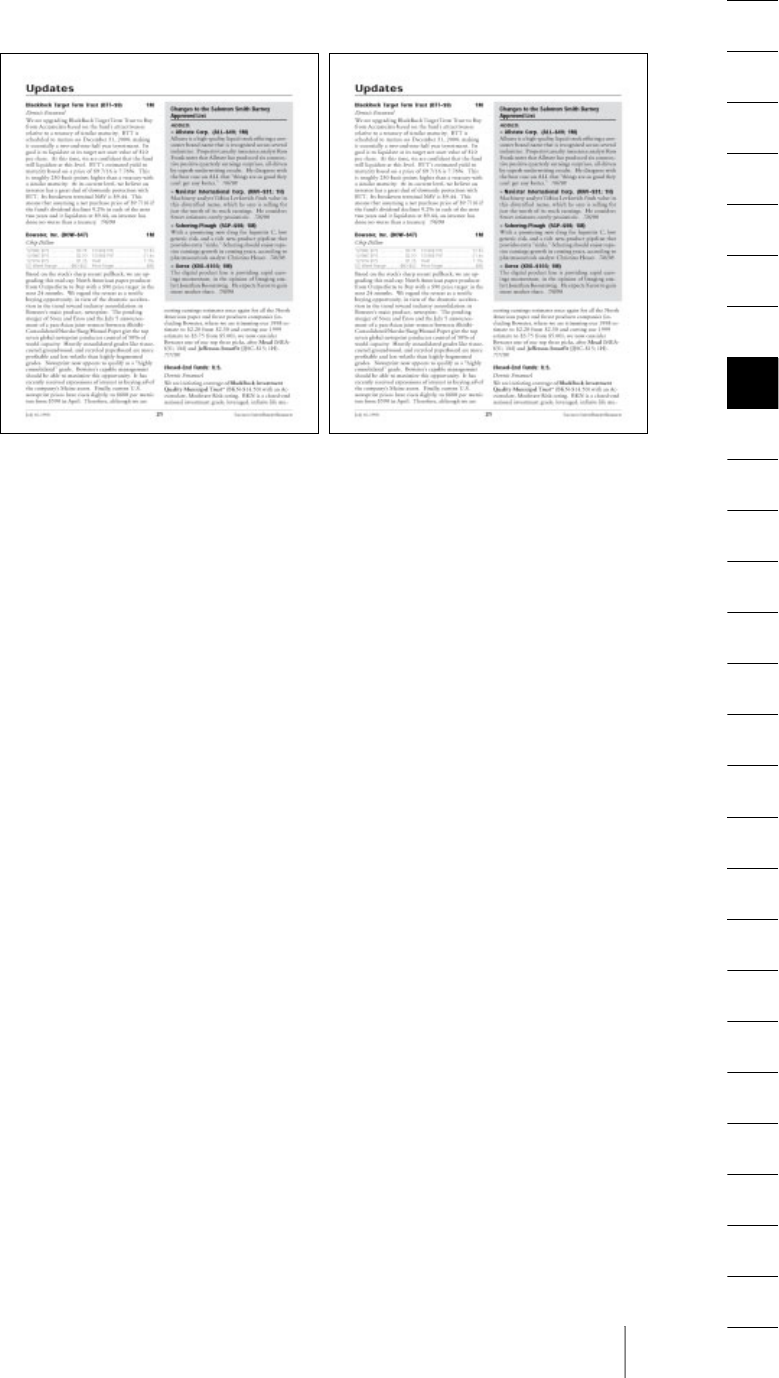
7.5 Tagged PDF 189
/* 4 create bottom part of right column */
PDF_set_text_pos(p, x2_right, y2_right);
...
/* second section may be continued on next page(s) */
PDF_end_item(p, id_sect2);
sprintf(optlist, "Title=Table parent=%d", id_art);
id_table = PDF_begin_item(p, "Table", optlist);
/* 5 create table structure and content */
PDF_set_text_pos(p, x_start_table, y_start_table);
...
PDF_end_item(p, id_table);
sprintf(optlist, "Title=Insert parent=%d", id_art);
id_insert = PDF_begin_item(p, "P", optlist);
/* 6 create insert structure and content */
PDF_set_text_pos(p, x_start_table, y_start_table);
...
PDF_end_item(p, id_insert);
id_artifact = PDF_begin_item(p, "Artifact", "");
/* 7+8 create header and footer */
PDF_set_text_pos(p, x_header, y_header);
...
PDF_set_text_pos(p, x_footer, y_footer);
...
PDF_end_item(p, id_artifact);
/* article may be continued on next page(s) */
...
PDF_end_item(p, id_art);
Generating page contents in visual order. The »logical order« approach forces the cre-
ator to construct the page contents in logical order even if it might be easier to create it
in visual order: header, left column upper part, table, left column lower part, insert,
Fig. 7.1
Creating a complex
page layout in logical
structure order (left)
and in visual order
(right). The right vari-
ant uses item activa-
tion for the first sec-
tion before continuing
fragments 4 and 6.
1
23
4
5
6
7
2
46
7
3
5
1
88

190 Chapter 7: Generating various PDF Flavors
right column, footer. Using PDF_activate_item( ) this ordering can be implemented as
follows:
/* create page layout in visual order */
id_header = PDF_begin_item(p, "Artifact", "");
/* 1 create header */
PDF_set_text_pos(p, x_header, y_header);
...
PDF_end_item(p, id_header);
id_art = PDF_begin_item(p, "Art", "Title = Article");
id_sect1 = PDF_begin_item(p, "Sect", "Title = {First Section}");
/* 2 create top part of left column */
PDF_set_text_pos(p, x1_left, y1_left_top);
...
sprintf(optlist, "Title=Table parent=%d", id_art);
id_table = PDF_begin_item(p, "Table", optlist);
/* 3 create table structure and content */
PDF_set_text_pos(p, x_start_table, y_start_table);
...
PDF_end_item(p, id_table);
/* continue with first section */
PDF_activate_item(p, id_sect1);
/* 4 create bottom part of left column */
PDF_set_text_pos(p, x1_left, y1_left_bottom);
...
sprintf(optlist, "Title=Insert parent=%d", id_art);
id_insert = PDF_begin_item(p, "P", optlist);
/* 5 create insert structure and content */
PDF_set_text_pos(p, x_start_table, y_start_table);
...
PDF_end_item(p, id_insert);
/* still more contents for first section */
PDF_activate_item(p, id_sect1);
/* 6 create top part of right column */
PDF_set_text_pos(p, x1_right, y1_right_top);
...
PDF_end_item(p, id_sect1);
id_sect2 = PDF_begin_item(p, "Sect", "Title = {Second Section}");
/* 7 create bottom part of right column */
PDF_set_text_pos(p, x2_right, y2_right);
...
/* second section may be continued on next page(s) */
PDF_end_item(p, id_sect2);
id_footer = PDF_begin_item(p, "Artifact", "");
/* 8 create footer */
PDF_set_text_pos(p, x_footer, y_footer);
...
PDF_end_item(p, id_footer);

7.5 Tagged PDF 191
/* article may be continued on next page(s) */
...
PDF_end_item(p, id_art);
With this ordering of structure elements the main text (which spans one and a half col-
umns) is interrupted twice for the table and the insert. Therefore it must also be activat-
ed twice using PDF_activate_item( ).
The same technique can be applied if the content spans multiple pages. For example,
the header or other inserts could be created first, and then the main page content ele-
ment is activated again.
7.5.1 Using Tagged PDF in Acrobat
This section mentions observations which we made while testing Tagged PDF output in
Adobe Acrobat 6.0. They are mostly related to bugs or inconsistent behavior in Acrobat.
A workaround is provided in cases where we found one.
Acrobat’s Reflow Feature. Acrobat allows Tagged PDF documents to reflow, i.e. to ad-
just the page contents to the current window size. While testing Tagged PDF we made
several observations regarding the reflow feature in Acrobat:
>The order of content on the page should follow the desired reflow order.
>Symbol (non-Unicode fonts) can cause Acrobat’s reflow feature to crash. For this rea-
son it is recommended to put the text in a Figure element.
>BLSEs may contain both structure children and direct content elements. In order for
the reflow feature (as well as Accessibility checker and Read Aloud) to work it is rec-
ommended to put the direct elements before the first child elements.
>The BBox option should be provided for tables and illustrations. The BBox should be
exact; however, for tables only the lower left corner has to be set exactly. As an alter-
native to supplying a BBox entry, graphics could also be created within a BLSE tag,
such as P, H, etc. However, vector graphics will not be displayed when Reflow is active.
If the client does not provide the BBox option (and relies on automatic BBox genera-
tion instead) all table graphics, such as cell borders, should be drawn outside the ta-
ble element.
>Table elements should only contain table-related elements (TR, TD, TH, THead, TBody,
etc.) as child elements, but not any others. For example, using a Caption element
within a table could result in reflow problems, although it would be correct Tagged
PDF.
>Content covered by the Private tag will not be exported to other formats. However,
they are subject to reflow and Read Aloud, and illustrations within the Private tag
must therefore have alternate text.
>Imported images should be covered by a Figure element; imported PDF pages should
be covered by a Form item. Item type Formula should be avoided in order to avoid
problems with reflow.
>Reflow seems to have problems with PDF documents generated with the topdown
option.
>Structure items with mixed types of children (i.e., both page content sequences and
non-inline structure elements) should be avoided since otherwise Reflow could fail.
>If an activated item contains only content, but no structure children, Reflow could
fail, especially if the item is activated on another page. This problem can be avoided
by wrapping the activated item with a non-inline Span tag.

192 Chapter 7: Generating various PDF Flavors
Acrobat’s Accessibility Checker. Acrobat’s accessibility checker can be used to deter-
mine the suitability of Tagged PDF documents for consumption with assisting technol-
ogy such as a screenreader.
>Elements containing an imported image should use the Alt property. The ActualText
property could cause the accessibility checker to crash. Another reason to prefer Alt
over ActualText is that the Read Aloud feature will catch the real text.
>If a Form tag covering an imported PDF page is the very first item on the page it can
cause problems with the accessibility checker.
>If the Lbl tag is set within the TOCI tag (as actually described in the PDF reference) the
Accessibility Checker will warn that the Lbl tag is not set within an LI tag.
Export to other formats with Acrobat. Tagged PDF can significantly improve the re-
sult of exporting PDF documents to other formats in Acrobat.
>If an imported PDF page has the Form tag, the text provided with the ActualText op-
tion will be exported to other formats in Acrobat, while the text provided with the
Alt tag will be ignored. However, the Read Aloud feature works for both options.
>Elements containing an imported image should use the Alt property instead of
ActualText so that the Export feature will catch the real text.
>The content of a NonStruct tag will not be exported to HTML 4.01 CSS 1.0 (but it will be
used for HTML 3.2 export).
>Alternate text should be supplied for ILSEs (such as Code, Quote, or Reference). If the
Alt option is used, Read Aloud will read the provided text, but the real content will be
exported to other formats. If the ActualText option is used, the provided text will be
used both for reading and exporting.
Acrobat’s Read Aloud Feature. Tagged PDF will enhance Acrobat’s capability to read
text aloud.
>When supplying Alt or ActualText it is useful to include a space character at the begin-
ning. This allows the Read Aloud feature to distinguish the text from the preceding
sentence. For the same reason, including a ’.’ character at the end may also be useful.
Otherwise Read Aloud will try to read the last word of the preceding sentence in
combination with the first word of the alternate text.

8.1 Data Types and Naming Conventions 193
8 API Reference for PDFlib, PDI, and PPS
The API reference documents all supported functions of PDFlib, PDI (PDF Import) and
PPS (PDFlib Personalization Server).
8.1 Data Types and Naming Conventions
PDFlib Data Types. The exact syntax to be used for a particular language binding may
actually vary slightly from the C syntax shown in this chapter. This especially holds true
for the PDF document parameter (PDF * in the API reference) which has to be supplied as
the first argument to almost all PDFlib functions in the C binding, but not those bind-
ings which hide the PDF document parameter in an object created by the language
wrapper.
Table 8.1 details the use of the PDF document type and the string type in all language
bindings. The data types integer, long, and double are not mentioned since there is an ob-
vious mapping of these types in all bindings. Please refer to the respective language sec-
tion and the examples in Chapter 2 for more language-specific details.
Unicode Strings. PDFlib accepts Unicode strings in all relevant areas and supports var-
ious formats and settings related to Unicode. Please review Section 4.5.2, »Content
Strings, Hypertext Strings, and Name Strings«, page 96, for details, and take care of the
following string types which are used in this chapter:
>Content strings
>Hypertext strings
>Name strings
Naming conventions for PDFlib Functions. In the C binding, all PDFlib functions live in
a global namespace and carry the common PDF_ prefix in their name in order to mini-
mize namespace pollution. In contrast, several language bindings hide the PDF docu-
ment parameter in an object created by the language wrapper. For these bindings, the
Table 8.1 Data types in the language bindings
language binding p parameter? PDF_ prefix? string data type binary data type
C (also used in
this API reference)
yes yes const char * 1
1. C language NULL string values and empty strings are considered equivalent.
const char *
C++ no no string2
2. NULL string values must not be used in the C++ binding.
char *
Cobol3
3. See Section 2.2.1, »Special Considerations for Cobol«, page 20, for more information on Cobol data types.
yes no4
4. Cobol programs must use abbreviated names for the PDFlib functions.
STRING STRING
Java no no String byte[ ]
Perl yes yes string string
PHP yes yes string string
Python yes yes string string
RPG yes yes string, but must add x’00’ data
Tcl yes yes string byte array

194 Chapter 8: API Reference for PDFlib, PDI, and PPS
function name given in this API reference must be changed by omitting the PDF_ prefix
and the PDF * parameter used as first argument. For example, the C-like API description
PDF *p;
PDF_begin_document(PDF *p, const char *filename, const char *optlist);
translates to the following when the function is used from Java:
pdflib p;
p.begin_document(String filename, String optlist);

8.2 General Functions 195
8.2 General Functions
8.2.1 Setup
Table 8.2 lists relevant parameters and values for this section.
Cvoid PDF_boot(void)
Cvoid PDF_shutdown(void)
Boot and shut down PDFlib, respectively.
Scope null
Bindings C: Recommended for the C language binding, although currently not required.
Table 8.2 Parameters and values for the setup functions
function key explanation
set_parameter
compatibility Deprecated, use the compatibility option for PDF_begin_document( ).
set_parameter
pdfx Deprecated, use the pdfx option for PDF_begin_document( ).
set_parameter
flush Deprecated, use the flush option for PDF_begin_document_callback( ).
set_parameter
SearchPath (Not supported on MVS) Relative or absolute path name of a directory containing
files to be read. The SearchPath can be set multiply; the entries will be
accumulated and used in least-recently-set order (see Section 3.1.6, »Resource
Configuration and File Searching«, page 51). Scope: any
set_parameter
resourcefile Relative or absolute file name of the PDFlib UPR resource file. The resource file will
be loaded immediately. Existing resources will be kept; their values will be
overridden by new ones if they are set again. Scope: any
set_parameter
asciifile (Only supported on iSeries and zSeries). Expect text files (PFA, AFM, UPR, enco-
dings) in ASCII encoding. Default: true on iSeries; false on zSeries. Scope: any
set_parameter
license Set the license key for PDFlib, PDFlib+PDI, or PPS.The key can be set (even multiply
to accumulate keys) before the first call to PDF_begin_document( ). Scope: object
set_parameter
licensefile Set the name of a file containing the license key.The license file can only be set
once before the first call to PDF_begin_document( ). Scope: object.
set_value compress Set the compression level. This parameter does not affect image data handled in
pass-through mode. Default: 6. Scope: page, document
0 no compression
1 best speed
9 best compression
get_value major, minor
revision
Return the major, minor, or revision number of PDFlib, respectively. Scope: any,
null1.
1. May be called with a PDF * argument of NULL or 0.
get_parameter
version Return the full PDFlib version string in the format <major>.<minor>.<revision>,
possibly suffixed with additional qualifiers such as beta, rc, etc. Scope: any, null1.
get_parameter
scope Return the name of the current scope (see Table 3.1). Scope: any
set_parameter
trace If true, all API function calls will be logged to a trace file. The contents of the trace
file may be useful for debugging purposes, or may be requested by PDFlib support.
Scope: any. Default: false
set_parameter
tracefile Set trace file name. Scope: any, but before enabling tracing. Default: PDFlib.trace.
set_parameter
tracemsg If tracing is enabled, the supplied message text will be written to the trace file in
addition to API calls. This may be useful for debugging client code. Scope: any

196 Chapter 8: API Reference for PDFlib, PDI, and PPS
Other bindings: For all other language bindings booting and shutting down is accom-
plished automatically by the wrapper code, and these functions are not available.
Perl PHP resource PDF_new()
CPDF *PDF_new(void)
Create a new PDFlib object with default settings.
Details This function creates a new PDFlib object, using PDFlib’s internal default error handling
and memory allocation routines.
Returns A handle to a PDFlib object which is to be used in subsequent PDFlib calls. If this func-
tion doesn’t succeed due to unavailable memory it will return NULL (in C) or throw an
exception.
Scope null; this function starts object scope, and must always be paired with a matching PDF_
delete( ) call.
Bindings The data type used for the opaque PDFlib object handle varies among language bind-
ings. This doesn’t really affect PDFlib clients, since all they have to do is pass the PDF
handle as the first argument to all functions.
C: In order to load the PDFlib DLL dynamically at runtime use PDF_new_dl( ) instead (see
Section 2.4.3, »Using PDFlib as a DLL loaded at Runtime«, page 25). PDF_new_dl( ) will re-
turn a pointer to a PDFlib_api structure filled with pointers to all PDFlib API functions. If
the DLL cannot be loaded, or a mismatch of major or minor version number is detected,
NULL will be returned.
C++, Java, PHP 5: this function is not available since it is hidden in the PDFlib construc-
tor.
CPDF *PDF_new2(void (*errorhandler)(PDF *p, int errortype, const char *msg),
void* (*allocproc)(PDF *p, size_t size, const char *caller),
void* (*reallocproc)(PDF *p, void *mem, size_t size, const char *caller),
void (*freeproc)(PDF *p, void *mem),
void *opaque)
Create a new PDFlib object with client-supplied error handling and memory allocation
routines.
errorhandler Pointer to a user-supplied error-handling function. The error handler
will be ignored in PDF_TRY/PDF_CATCH blocks.
allocproc Pointer to a user-supplied memory allocation function.
reallocproc Pointer to a user-supplied memory reallocation function.
freeproc Pointer to a user-supplied free function.
opaque Pointer to some user data which may be retrieved later with PDF_get_
opaque( ).
Returns A handle to a PDFlib object which is to be used in subsequent PDFlib calls. If this func-
tion doesn’t succeed due to unavailable memory it will return NULL (in C) or throw an
exception.

8.2 General Functions 197
Details This function creates a new PDFlib object with client-supplied error handling and mem-
ory allocation routines. Unlike PDF_new( ), the caller may optionally supply own proce-
dures for error handling and memory allocation. The function pointers for the error
handler, the memory procedures, or both may be NULL. PDFlib will use default routines
in these cases. Either all three memory routines must be provided, or none.
Scope null; this function starts object scope, and must always be paired with a matching PDF_
delete( ) call. No other PDFlib function with the same PDFlib object must be called after
calling this function.
Bindings C++: this function is indirectly available via the PDF constructor. Not all function argu-
ments must be given since default values of NULL are supplied. All supplied functions
must be »C« style functions, not C++ methods.
Perl PHP PDF_delete(resource p)
Cvoid PDF_delete(PDF *p)
Delete a PDFlib object and free all internal resources.
Details This function deletes a PDF object and frees all document-related PDFlib-internal re-
sources. Although not necessarily required for single-document generation, deleting
the PDF object is heavily recommended for all server applications when they are done
producing PDF. This function must only be called once for a given PDF object. PDF_
delete( ) should also be called for cleanup when an exception occurred. PDF_delete( ) it-
self is guaranteed to not throw any exception. If more than one PDF document will be
generated it is not necessary to call PDF_delete( ) after each document, but only when
the complete sequence of PDF documents is done.
Scope any; this function starts null scope, i.e., no more API function calls are allowed.
Bindings C: If the PDFlib DLL has been loaded dynamically at runtime with PDF_new_dl( ), use
PDF_delete_dl( ) to delete the PDFlib object.
C++: this function is indirectly available via the PDF destructor.
Java: this function is automatically called by the wrapper code. However, it can explicit-
ly be called from client code in order to overcome shortcomings in Java’s finalizer sys-
tem.
PHP: this function will automatically be called for the object-oriented PHP 5 interface
when the PDFlib object goes out of scope.
8.2.2 Document and Page
Table 8.3 lists relevant parameters and values for this section.
Table 8.3 Parameters and values for the document and page functions
function key explanation
set_parameter
openwarning
Deprecated, use PDF_get_errmsg( ) to find out the reason of failed attempts at
opening a document.
set_value pagewidth
pageheight
Deprecated, use the width and height parameters for PDF_begin_page_ext( ) or
the mediabox option for PDF_begin_page_ext( ) or PDF_end_page_ext( ).
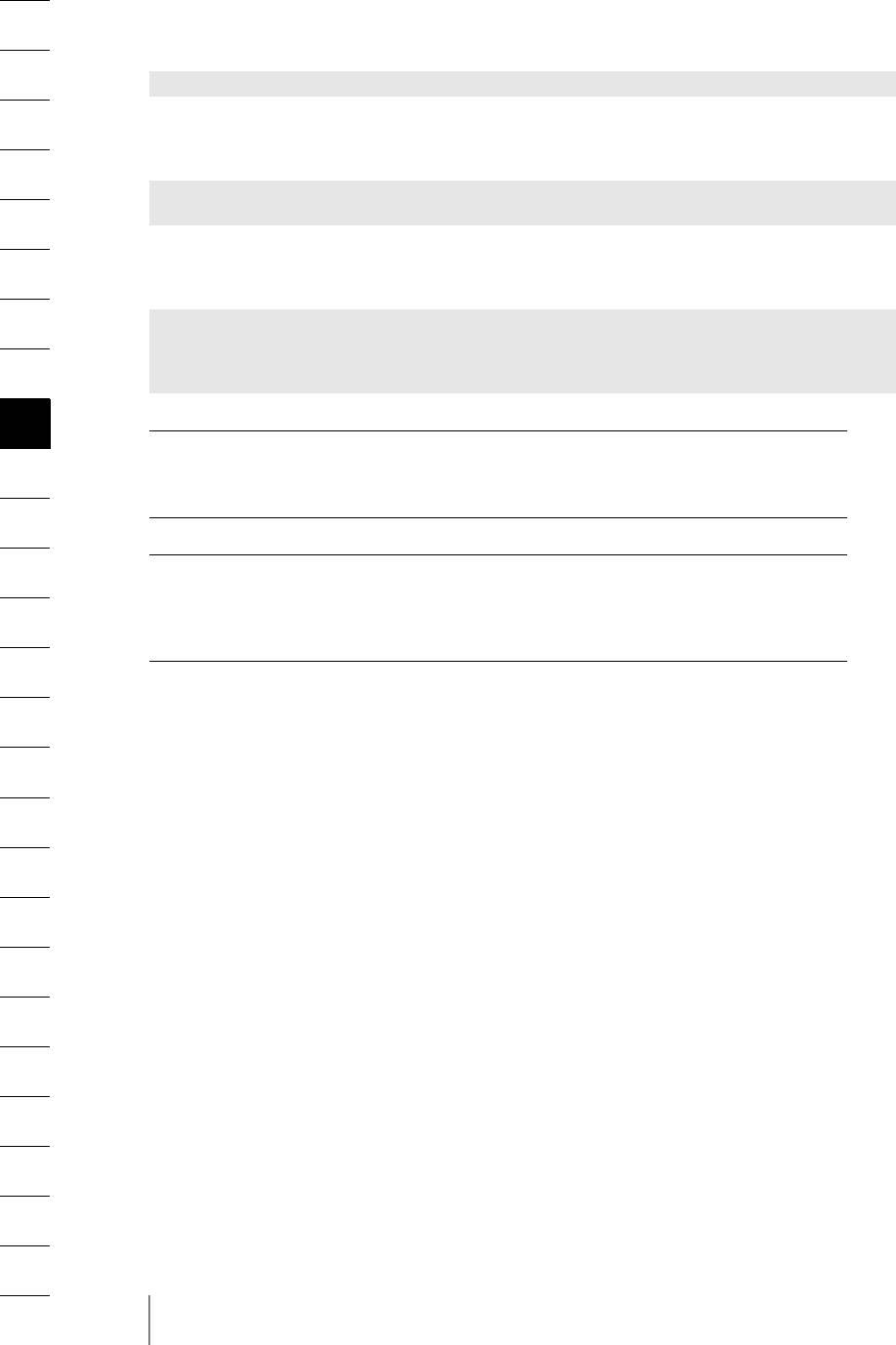
198 Chapter 8: API Reference for PDFlib, PDI, and PPS
C++ Java int begin_document(String filename, String optlist)
Perl PHP int PDF_begin_document(resource p, string filename, string optlist)
Cint PDF_begin_document(PDF *p, const char *filename, int len, const char *optlist)
C++ int begin_document_callback(String filename,
size_t (*writeproc) (void *data, size_t size), String optlist)
Cvoid PDF_begin_document_callback(PDF *p,
size_t (*writeproc) (PDF *p, void *data, size_t size), const char *optlist)
Create a new PDF file subject to various options.
filename (Name string, but Unicode file names are only supported on Windows) Abso-
lute or relative name of the PDF output file to be generated. If filename is empty, the PDF
document will be generated in memory instead of on file, and the generated PDF data
must be fetched by the client with the PDF_get_buffer( ) function. The special file name
»–« can be used for generating PDF on the stdout channel. On Windows it is OK to use
UNC paths or mapped network drives.
len (Only for the C binding) Length of filename (in bytes) for UTF-16 strings. If len = 0 a
null-terminated string must be provided.
writeproc (Only for C and C++) C callback function which will be called by PDFlib in or-
der to submit (portions of) the generated PDF data.
optlist An option list specifying document options according to Table 8.4 or Table 8.5.
Options specified in PDF_end_document( ) have precedence over identical options speci-
fied in PDF_begin_document( ).
Returns -1 (in PHP: 0) on error, and 1 otherwise. If filename is empty this function will always suc-
ceed, and never return the -1 (in PHP: 0) error value.
Details This function creates a new PDF file using the supplied filename. PDFlib will attempt to
open a file with the given name, and close the file when the PDF document is finished.
set_parameter
topdown If true, the origin of the coordinate system at the beginning of a page, pattern, or
template will be assumed in the top left corner of the page, and y coordinates will
increase downwards; otherwise the default coordinate system will be used (see
Section 3.2.1, »Coordinate Systems«, page 57). Scope: document. Default: false
get_value pagewidth
pageheight
Get the page size of the current page (dimensions of the MediaBox). Scope: page,
path
set_value ArtBox
BleedBox
CropBox
TrimBox
Deprecated, use the artbox, bleedbox, cropbox, and trimbox options for PDF_
begin_page_ext( ) or PDF_end_page_ext( ).
set_parameter
userpassword
master-
password
permissions
Deprecated, use the userpassword/masterpassword/permissions options for PDF_
begin_document( ).
Table 8.3 Parameters and values for the document and page functions
function key explanation

8.2 General Functions 199
PDF_begin_document_callback( ) opens a new PDF document in memory, without
writing to a disk file. The callback function supplied as writeproc must return the num-
ber of bytes written. If the return value doesn’t match the size argument supplied by
PDFlib, an exception will be thrown. The frequency of writeproc calls is configurable
with the flush option.
Scope object; this function starts document scope if the file could successfully be opened, and
must always be paired with a matching PDF_end_document( ) call.
Bindings C, C++, Java, JScript: take care of properly escaping the backslash path separator. For ex-
ample, the following denotes a file on a network drive: \\\\malik\\rp\\foo.pdf.
PDF_begin_document_callback( ) is only available in C and C++. The supplied writeproc
must be a C-style function, not a C++ method.
Table 8.4 Document options for PDF_begin_document( ) and PDF_begin_document_callback( )
option type description
compatibility keyword Set the document’s PDF version to one of the strings »1.3«, »1.4«, »1.5«, or »1.6« for
Acrobat 4, 5, 6, or 7. See Section 7.1, »Acrobat and PDF Versions«, page 175, for
details. This option will be ignored if the pdfx parameter is used. Default: »1.5«
flush keyword (Only for PDF_begin_document_callback( )) Set the flushing strategy; See Section
3.1.7, »Generating PDF Documents in Memory«, page 55, for details (default: page):
none flush only once at the end of the document
page flush at the end of each page
content flush after all fonts, images, file attachments, and pages
heavy always flush when the internal 64 KB document buffer is full
groups list of strings Define the names and ordering of the page groups used in the document.
inmemory boolean (Only for PDF_begin_document( )) If true and the linearize option is true as well,
PDFlib will not create any tempory files for linearization, but will process the file in
memory. This can result in tremendous performance gains on some systems
(especially MVS), but requires memory twice the size of the document. If false, a
temporary file will be created for linearization. Default: false
lang string (Required if tagged=true) Set the natural language of the document as a two-
character ISO 639 language code (examples: DE, EN, FR, JA), optionally followed
by a hyphen and a two-character ISO 3166 country code (examples: EN-US, EN-GB,
ES-MX). Case is not significant.
The language specification can be overridden for individual items on all levels of
the structure tree, but must be set initially for the document as a whole.
linearize boolean (Only for PDF_begin_document( )) If true, the output document will be linearized
(see Section 7.3, »Web-Optimized (Linearized) PDF«, page 179). On MVS systems
this option cannot be combined with in-core generation (i.e. an empty filename).
Default: false
master-
password
string The master password for the document. If it is empty no master password will be
applied. Default: empty
permissions keyword list The access permission list for the output document. It contains any number of the
noprint, nomodify, nocopy, noannots, noassemble, noforms, noaccessible,
nohiresprint, and plainmetadata keywords (see Table 7.3). Default: empty
pdfx keyword Set the PDF/X conformance level to one of »PDF/X-1:2001« , »PDF/X-1a:2001«,
»PDF/X-1a:2003«, »PDF/X-2:2003«, »PDF/X-3:2002«, »PDF/X-3:2003«, or »none«
(see Section 7.4, »PDF/X«, page 180). Default: none
recordsize integer (MVS only) The record size of the output file. Default: 0 (unblocked output)
tagged boolean (PDF 1.4 and above) If true, generate Tagged PDF output. Proper structure infor-
mation must be provided by the client in Tagged PDF mode (see Section 8.10,
»Structure Functions for Tagged PDF«, page 296). Default: false

200 Chapter 8: API Reference for PDFlib, PDI, and PPS
C++ Java void end_document(String optlist)
Perl PHP PDF_end_document(resource p, string optlist)
Cvoid PDF_end_document(PDF *p, const char *optlist)
Close the generated PDF file and apply various options.
optlist An option list specifying document options according to Table 8.5. Options
specified in PDF_end_document( ) have precedence over identical options specified in
PDF_begin_document( ).
Details This function finishes the generated PDF document, frees all document-related resourc-
es, and closes the output file if the PDF document has been opened with PDF_begin_
document( ). This function must be called when the client is done generating pages, re-
gardless of the method used to open the PDF document.
When the document was generated in memory (as opposed to on file), the document
buffer will still be kept after this function is called (so that it can be fetched with PDF_
get_buffer( )), and will be freed in the next call to PDF_begin_document( ), or when the
PDFlib object goes out of scope in PDF_delete( ).
Scope document; this function terminates document scope, and must always be paired with a
matching call to one of the PDF_begin_document( ) or PDF_begin_document_callback( )
functions.
C++ const char *get_buffer(double *size)
Java byte[] get_buffer( )
Perl PHP string PDF_get_buffer(resource p)
Cconst char * PDF_get_buffer(PDF *p, long *size)
Get the contents of the PDF output buffer.
size (C and C++ language bindings only) C-style pointer to a memory location where
the length of the returned data in bytes will be stored.
Returns A buffer full of binary PDF data for consumption by the client. It returns a language-spe-
cific data type for binary data according to Table 8.1. The returned buffer must be used
by the client before calling any other PDFlib function.
tempdirname
string (Only for PDF_begin_document( )) Name of a directory where temporary files
needed for linearization will be created. If empty, PDFlib will generate temporary
files in the current directory. This option will be ignored if the tempfilenames
op-
tion has been supplied.
Default: empty
tempfilenames
list of two
strings
(Only on MVS and for PDF_begin_document( )) Full file names for two temporary
files needed for PDFlib’s internal processing. If empty, PDFlib will generate unique
temporary file names. The user is responsible for deleting the temporary files after
PDF_end_document( ). If this option is supplied the filename parameter must not
be empty. Default: empty
user-
password
string The user password for the document. If it is empty no user password will be
applied. Default: empty
Table 8.4 Document options for PDF_begin_document( ) and PDF_begin_document_callback( )
option type description

8.2 General Functions 201
Table 8.5 Document options for PDF_begin_document( ) and PDF_end_document( )
option type description
action action list (PDF 1.4 except open, which is available in PDF 1.3 and above; since actions can not
be created before calling PDF_begin_document( ) this option is only feasible for
PDF_end_document( )) List of document actions for one or more of the following
events (default: empty list):
open Actions to be performed when the document is opened. Note that due
to the execution order in Acrobat document-level JavaScript must not
be used for open actions.
didprint JavaScript actions to be performed after printing the document.
didsave JavaScript actions to be performed after saving the document.
willclose JavaScript actions to be performed before closing the document.
willprint JavaScript actions to be performed before printing the document.
willsave JavaScript actions to be performed before saving the document.
destination option list An option list specifying the document open action according to Table 8.48. The
open action will be dominant over this option. Default: the handle supplied in the
open action, or {type fitwindow page 0} if no open action was supplied.
labels list of option
lists
A list containing one or more option lists according to Table 8.7 specifying sym-
bolic page names. The page name will be displayed as a page label (instead of the
page number) in Acrobat’s status line. The combination of style/prefix/start
values must be unique within a document. Default: none
openmode keyword Set the appearance when the document is opened. Default: bookmarks if the
document contains any bookmarks, otherwise none:
none Open with no additional panel visible.
bookmarks Open with the bookmark panel visible.
thumbnails Open with the thumbnail panel visible
fullscreen Open in fullscreen mode (does not work in the browser).
layers (PDF 1.5) Open with the layer panel visible.
pagelayout keyword The page layout to be used when the document is opened (default: singlepage):
singlepage Display one page at a time.
onecolumn Displays the pages continously in one column.
twocolumnleft Display the pages in two columns, odd pages on the left.
twocolumnright Display the pages in two columns, odd pages on the right.
uri string Set the document’s base URL. This is useful when a document with relative Web
links to other documents is moved to a different location. Setting the base URL to
the »old« location makes sure that relative links will still work. Default: none
viewer-
preferences
option list An option list specifying various viewer preferences according to Table 8.6.
Default: empty
metadata option list (PDF 1.4) Supply metadata for the document. PDFlib will not synchronize meta-
data and document info fields. The option list may contain the following options:
inputencoding (keyword)
The encoding to interpret the supplied data. Default: unicode
inputformat (keyword)
The format of the supplied data. Default: utf8 (ebcdicutf8 on EBCDIC-
based systems), but bytes if inputencoding is an 8-bit encoding
filename (name string, required) The name of a disk-based or virtual file
containing the metadata. The file must contain well-formed XMP
metadata which will be copied to the output uncompressed. PDFlib
will automatically generate the XDP packet header and trailer.
outputformat (keyword)
The format in which the data will be written to the PDF output (the
output encoding will always be unicode). Possible values are utf8,
utf16be, utf16le. Default: utf8 if inputformat=bytes, otherwise
inputformat

202 Chapter 8: API Reference for PDFlib, PDI, and PPS
Table 8.6 Suboptions for the viewerpreference option in PDF_begin_document( ) and PDF_end_document( )
option type description
centerwindow
boolean Specifies whether to position the document’s window in the center of the screen .
Default: false
direction keyword The reading order of the document, which affects the scroll ordering in double-
page view. (default l2r):
l2r Left to right
r2l Right to left (including vertical writing systems)
displaydoctitle
boolean Specifies whether to display the Title document info field in Acrobat’s title bar
(true) or the file name (false). Default: false
fitwindow boolean Specifies whether to resize the document’s window to the size of the first page .
Default: false
hidemenubar
boolean Specifies whether to hide Acrobat’s menu bar. Default: false
hidetoolbar boolean Specifies whether to hide Acrobat’s tool bars. Acrobat ignores this setting when
viewing PDFs in a browser. Default: false
hidewindowui
boolean Specifies whether to hide Acrobat’s window controls. Default: false
nonfullscreen-
pagemode
keyword (Only relevant if the openmode option is set to fullscreen) Specifies how to display
the document on exiting full-screen mode (default: none):
bookmarks display page and bookmark pane
thumbnails display page and thumbnail pane
layers display page and layer pane
none display page only
viewarea
viewclip
printarea
printclip
keyword The type of the page boundary box representing the area of a page to be
displayed or clipped when viewing the document on screen or printing it. Acrobat
ignores this setting, but it may be useful for other applications (default: crop):
art Use the ArtBox
bleed Use the BleedBox
crop Use the CropBox
media Use the MediaBox
trim Use the TrimBox
PDF/X: values other than media or bleed are not allowed.
Table 8.7 Suboptions for the labels option in PDF_begin/end_document( ) and label option in PDF_begin/end_
page_ext( )
option type description
group string (Only for PDF_begin_document( ); required if the document uses page groups, but
not allowed otherwise.) The label will be applied to all pages in the specified
group and all pages in all subsequent groups until a new label is applied.
hypertext-
encoding
keyword Specifies the encoding for the prefix option (see Section 4.5.4, »String Handling in
non-Unicode-capable Languages«, page 98). An empty string is equivalent to
unicode. Default: value of the global hypertextencoding parameter.
pagenumber integer (Only for PDF_end_document( ); required if the document does not use page
groups, but not allowed otherwise) The label will be applied to the specified page
and subsequent pages until a new label is applied.
prefix hypertext
string
The label prefix for all labels in the range. Default: none

8.2 General Functions 203
Details Fetch the full or partial buffer containing the generated PDF data. If this function is
called between page descriptions, it will return the PDF data generated so far. If generat-
ing PDF into memory, this function must at least be called after PDF_end_document( ),
and will return the remainder of the PDF document. It can be called earlier to fetch par-
tial document data. If there is only a single call to this function which happens after
PDF_end_document( ) the returned buffer is guaranteed to contain the complete PDF
document in a contiguous buffer.
Since PDF output contains binary characters, client software must be prepared to ac-
cept non-printable characters including null values.
Scope object, document (in other words: after PDF_end_page_ext( ) and before PDF_begin_page_
ext( ), or after PDF_end_document( ) and before PDF_delete( ). This function can only be
used if an empty filename has been supplied to PDF_begin_document( ).
If the linearize option in PDF_begin_document( ) has been set to true, the scope is re-
stricted to document, i.e. this function can only be called after PDF_end_document( ).
Bindings C and C++: the size parameter is only used for C and C++ clients.
Other bindings: an object of appropriate length will be returned, and the size parameter
must be omitted.
C++ Java void begin_page_ext(double width, double height, String optlist)
Perl PHP PDF_begin_page_ext(resource p, float width, float height, string optlist)
Cvoid PDF_begin_page_ext(PDF *p, double width, double height, const char *optlist)
Add a new page to the document, and specify various options.
width, height The width and height parameters are the dimensions of the new page in
points. They can be overridden by the options with the same name (the dummy value 0
can be used for the parameters in this case). A list of commonly used page formats can
be found in Table 3.4. See also Table 8.9 for more details (options width and height).
optlist An option list according to Table 8.8 and Table 8.9. These options have lower
priority than identical options specified in PDF_end_page_ext( ).
Details This function will reset all text, graphics, and color state parameters for the new page to
their defaults.
start integer >= 1 Numeric value for the first label in the range. Subsequent pages in the range will
be numbered sequentially starting with this value. Default: 1
style keyword The numbering style to be used (default: none):
none no page number; labels will only consist of the prefix.
D decimal arabic numerals (1, 2, 3, ...)
R uppercase roman numerals (I, II, III, ...)
r lowercase roman numerals (i, ii, iii, ...)
A uppercase letters (A, B, C, ..., AA, BB, CC, ...)
a lowercase letters (a, b, c, ..., aa, bb, cc, ...)
Table 8.7 Suboptions for the labels option in PDF_begin/end_document( ) and label option in PDF_begin/end_
page_ext( )
option type description

204 Chapter 8: API Reference for PDFlib, PDI, and PPS
Scope document; this function starts page scope, and must always be paired with a matching
PDF_end_page_ext( ) call.
Params The following deprecated parameters will be ignored when using this function:
pagewidth, pageheight, ArtBox, BleedBox, CropBox, TrimBox.
C++ Java void end_page_ext(String optlist)
Perl PHP PDF_end_page_ext(resource p, string optlist)
Cvoid PDF_end_page_ext(PDF *p, const char *optlist)
Finish a page, and apply various options.
optlist An option list according to Table 8.9. Options specified in PDF_end_page_ext( )
have priority over identical options specified in PDF_begin_page_ext( ).
Scope page; this function terminates page scope, and must always be paired with a matching
PDF_begin_page_ext( ) call.
Table 8.8 Options for PDF_begin_page_ext( )
option type description
group string (Required if the document uses page groups, but not allowed otherwise.) Name of
the page group to which the page will belong. This name can be used to keep
pages together in a page group and to address pages with PDF_resume_page( ).
pagenumber integer If this option is specified with a value n, the page will be inserted before the exis-
ting page n within the page group specified in the group option (or the document
if the document doesn’t use page groups). If this option is not specified the page
will be inserted at the end of the group.
separation-
info
option list An option list containing color separation details for the current page. This will be
ignored in Acrobat, but may be useful in third-party software for identifying and
correctly previewing separated pages in a preseparated workflow:
pages (integer; required for the first page of a set of separation pages, but
not allowed for subsequent pages of the same set) The number of
pages which belong to the same set of separation pages comprising
the color data for a single composite page. All pages in the set must
appear sequentially in the file.
spotname (string; required unless spotcolor has been supplied) The name of the
colorant for the current page.
spotcolor (spot color handle) A color handle describing the colorant for the
current page.
topdown boolean If true, the origin of the coordinate system at the beginning of the page will be
assumed in the top left corner of the page, and y coordinates will increase
downwards; otherwise the default coordinate system will be used (see Section
3.2.1, »Coordinate Systems«, page 57). Default: false
Table 8.9 Options for PDF_begin_page_ext( ) and PDF_end_page_ext( )
option type description
action action list List of page actions for one or more of the following events. Default: empty list:
open Actions to be performed when the page is opened.
close Actions to be performed when the page is closed.

8.2 General Functions 205
C++ Java void suspend_page(String optlist)
Perl PHP PDF_suspend_page(resource p, string optlist)
Cvoid PDF_suspend_page(PDF *p, const char *optlist)
Suspend the current page so that it can later be resumed.
optlist An option list for future use.
artbox
bleedbox
cropbox
mediabox
trimbox
rectangle (The mediabox option is not allowed if the topdown option or parameter is true)
Change the page box parameters of the current page. The coordinates of the
respective box are specified in the default coordinate system (see Section 3.2.2,
»Page Sizes and Coordinate Limits«, page 59 for details). By default, only the
MediaBox will be created by using the width and height parameters. The
mediabox option will override the width and height options and parameters.
defaultgray
defaultrgb
defaultcmyk
icc handle Set a default gray, RGB, or CMYK color space for the page according to the supplied
profile handle.
duration float Set the page display duration in seconds for the current page if openmode=full-
screen (see Table 8.5). Default: 1
label option list An option list according to Table 8.7 specifying symbolic page names. specifying
symbolic pages. The page name will be displayed as a page label (instead of the
page number) in Acrobat’s status line. The specified numbering scheme will be
used for the current and subsequent pages until it is changed again. The
combination of style/prefix/start values must be unique within a document.
rotate integer The page rotation value. The rotation will affect page display, but does not modify
the coordinate system. Possible values are 0, 90, 180, 270. Default: 0
transition keyword Set the page transition for the current page in order to achieve special effects
which may be useful when displaying the PDF in Acrobat’s fullscreen mode as
presentations if openmode=fullscreen (see Table 8.5). Default: replace
split Two lines sweeping across the screen reveal the page
blinds Multiple lines sweeping across the screen reveal the page
box A box reveals the page
wipe A single line sweeping across the screen reveals the page
dissolve The old page dissolves to reveal the page
glitter The dissolve effect moves from one screen edge to another
replace The old page is simply replaced by the new page
fly (PDF 1.5) The new page flies into the old page.
push (PDF 1.5) The new page pushes the old page off the screen
cover (PDF 1.5) The new page slides on to the screen and covers the old page.
uncover (PDF 1.5) The old page slides off the screen and uncovers the new page.
fade (PDF 1.5) The new page gradually becomes visible through the old one.
width
height
float or
keyword
(Not allowed if the topdown option or parameter is true) The dimensions of the
new page in points. Acrobat’s page size limits are documented in Section 3.2.2,
»Page Sizes and Coordinate Limits«, page 59. In order to produce landscape pages
use width > height or the rotate option. PDFlib uses width and height to construct
the page’s MediaBox, but the MediaBox can also explicitly be set using the
mediabox option. The width and height options will override the parameters with
the same name.
The following symbolic page size names can be used as keywords by appending
.width or .height (e.g. a4.width, a4.height). See Table 3.4 for the numerical values:
a0, a1, a2, a3, a4, a5, a6, b5, letter, legal, ledger, 11x17
Table 8.9 Options for PDF_begin_page_ext( ) and PDF_end_page_ext( )
option type description

206 Chapter 8: API Reference for PDFlib, PDI, and PPS
Details The full state of the current page (graphics, color, text, etc.) will be saved internally. It
can later be resumed with PDF_resume_page( ) to add more content. Suspended pages
must be resumed before they can be closed.
Scope page; this function starts document scope, and must always be paired with a matching
PDF_resume_page( ) call. This function must not be used in Tagged PDF mode.
C++ Java void resume_page(String optlist)
Perl PHP PDF_resume_page(resource p, string optlist)
Cvoid PDF_resume_page(PDF *p, const char *optlist)
Resume a page to add more content to it.
optlist An option list according to Table 8.10.
Details The page must have been suspended with PDF_suspend_page( ). It will be opened again
so that more content can be added. All suspended pages must be resumed before they
can be closed, even if no more content has been added.
Scope document; this function starts page scope, and must always be paired with a matching
PDF_suspend_page( ) call.
void PDF_open_mem(PDF *p, size_t (*writeproc) (PDF *p, void *data, size_t size))
Deprecated, use PDF_begin_document_callback( ).
int PDF_open_file(PDF *p, const char *filename)
void PDF_close(PDF *p)
Deprecated, use PDF_begin_document( ) and PDF_end_document( ).
Table 8.10 Options for PDF_resume_page( )
option type description
group string (Required if the document uses page groups, but not allowed otherwise.) Name of
the page group of the resumed page. The group name must have been defined
with the groups option in PDF_begin_document( ).
pagenumber integer If this option is supplied, the page with the specified number within the page
group chosen in the group option (or in the document if the document doesn’t use
page groups) will be resumed. If this option is missing the last page in the group
will be resumed.

8.2 General Functions 207
void PDF_begin_page(PDF *p, double width, double height)
void PDF_end_page(PDF *p)
Deprecated, use PDF_begin_page_ext( ) and PDF_end_page_ext( ).
8.2.3 Parameter Handling
PDFlib maintains a number of internal parameters which are used for controlling
PDFlib’s operation and the appearance of the PDF output. Four functions are available
for setting and retrieving both numerical and string parameters. All parameters (both
keys and values) are case-sensitive. The descriptions of available parameters can be
found in the respective sections in this chapter.
C++ Java double get_value(String key, double modifier)
Perl PHP float PDF_get_value(resource p, string key, float modifier)
Cdouble PDF_get_value(PDF *p, const char *key, double modifier)
Get the value of some PDFlib parameter with numerical type.
key The name of the parameter to be queried.
modifier An optional modifier to be applied to the parameter. Whether a modifier is
required and what it relates to is explained in the various parameter tables. If the modi-
fier is unused it must be 0.
Returns The numerical value of the parameter.
Scope Depends on key.
See also PDF_get_pdi_value( )
C++ Java void set_value(String key, double value)
Perl PHP PDF_set_value(resource p, string key, float value)
Cvoid PDF_set_value(PDF *p, const char *key, double value)
Set the value of some PDFlib parameter with numerical type.
key The name of the parameter to be set.
value The new value of the parameter to be set.
Scope Depends on key.
C++ Java String get_parameter(String key, double modifier)
Perl PHP string PDF_get_parameter(resource p, string key, float modifier)
Cconst char * PDF_get_parameter(PDF *p, const char *key, double modifier)
Get the contents of some PDFlib parameter with string type.
key The name of the parameter to be queried.

208 Chapter 8: API Reference for PDFlib, PDI, and PPS
modifier An optional modifier to be applied to the parameter. Whether a modifier is
required and what it relates to is explained in the various parameter tables. If the modi-
fier is unused it must be 0.
Returns The string value of the parameter as a hypertext string. The returned string can be used
until the end of the surrounding document scope. If no information is available an emp-
ty string will be returned.
Scope Depends on key.
Bindings C and C++: C and C++ clients must not free the returned string. PDFlib manages all string
resources internally.
See also PDF_get_pdi_parameter( )
C++ Java void set_parameter(String key, String value)
Perl PHP PDF_set_parameter(resource p, string key, string value)
Cvoid PDF_set_parameter(PDF *p, const char *key, const char *value)
Set some PDFlib parameter with string type.
key The name of the parameter to be set.
value (Name string) The new value of the parameter to be set.
Scope Depends on key.
8.2.4 PDFlib Virtual File System (PVF) Functions
C++ void create_pvf(string filename, const void *data, size_t size, string optlist)
Java void create_pvf(String filename, byte[] data, String optlist)
Perl PHP PDF_create_pvf(resource p, string filename, string data, string optlist)
Cvoid PDF_create_pvf(PDF *p,
const char *filename, int len, const void *data, size_t size, const char *optlist)
Create a named virtual read-only file from data provided in memory.
filename (Name string) The name of the virtual file. This is an arbitrary string which
can later be used to refer to the virtual file in other PDFlib calls.
len (Only for the C binding.) Length of filename (in bytes) for UTF-16 strings. If len = 0 a
null-terminated string must be provided.
data A reference to the data for the virtual file. In C and C++ this is a pointer to a mem-
ory location. In Java this is a byte array. In Perl and PHP this is a string.
size (C and C++ only) The length in bytes of the memory block containing the data.
optlist An option list according to Table 8.11.
Details The virtual file name can be supplied to any API function which uses input files (virtual
files cannot be used for the generated PDF output; use an empty file name in PDF_begin_
document( ) to achieve this). Some of these functions may set a lock on the virtual file

8.2 General Functions 209
until the data is no longer needed. Virtual files will be kept in memory until they are de-
leted explicitly with PDF_delete_pvf( ), or automatically in PDF_delete( ).
If filename refers to an existing virtual file an exception will be thrown. This function
does not check whether filename is already in use for a regular disk file.
Unless the copy option has been supplied, the caller must not modify or free (delete)
the supplied data before a corresponding successful call to PDF_delete_pvf( ). Not obey-
ing to this rule will most likely result in a crash.
Scope any
C++ Java int delete_pvf(String filename)
Perl PHP int PDF_delete_pvf(resource p, string filename)
Cint PDF_delete_pvf(PDF *p, const char *filename, int len)
Delete a named virtual file and free its data structures (but not the contents).
filename (Name string) The name of the virtual file as supplied to PDF_create_pvf( ).
len (Only for the C binding.) Length of filename (in bytes) for UTF-16 strings. If len = 0 a
null-terminated string must be provided.
Returns -1 (in PHP: 0) if the corresponding virtual file exists but is locked, and 1 otherwise.
Details If the file isn’t locked, PDFlib will immediately delete the data structures associated with
filename. If filename does not refer to a valid virtual file this function will silently do
nothing. After successfully calling this function filename may be reused. All virtual files
will automatically be deleted in PDF_delete( ).
The detailed semantics depend on whether or not the copy option has been supplied
to the corresponding call to PDF_create_pvf( ): If the copy option has been supplied, both
the administrative data structures for the file and the actual file contents (data) will be
freed; otherwise, the contents will not be freed, since the client is supposed to do so.
Scope any
8.2.5 Exception Handling
Table 8.12 lists relevant parameters and values for this section.
Table 8.11 Options for PDF_create_pvf( )
option type description
copy boolean PDFlib will immediately create an internal copy of the supplied data. In this case
the caller may dispose of the supplied data immediately after this call. The copy
option will automatically be set to true in the COM, .NET, and Java bindings
(default for other bindings: false). In other language bindings the data will not be
copied unless the copy option is supplied.
Table 8.12 Parameters and values for exception handling
function key explanation
set_parameter
warning Enable or suppress warnings (nonfatal exceptions). Possible values are true and
false. Scope: any. Default: true

210 Chapter 8: API Reference for PDFlib, PDI, and PPS
C++ Java int get_errnum( )
Perl PHP int PDF_get_errnum(resource p)
Cint PDF_get_errnum(PDF *p)
Get the number of the last thrown exception or the reason for a failed function call.
Returns The number of an exception, or the reason code of the most recently called function
which failed with an error code.
Scope Between an exception thrown by PDFlib and PDF_delete( ). Alternatively, this function
may be called after a function returned a -1 (in PHP: 0) error code, but before calling any
other function except those listed in this section.
Bindings In C++, Java, and PHP 5 this function is also available as get_errnum( ) in the PDFlibExcep-
tion object.
C++ Java String get_errmsg( )
Perl PHP string PDF_get_errmsg(resource p)
Cconst char *PDF_get_errmsg(PDF *p)
Get the text of the last thrown exception or the reason for a failed function call.
Returns Text containing the description of the last exception thrown, or the reason why the
most recently called function failed with an error code.
Scope Between an exception thrown by PDFlib and PDF_delete( ). Alternatively, this function
may be called after a function returned a -1 (in PHP: 0) error code, but before calling any
other function except those listed in this section.
Bindings In C++, Java, and PHP 5 this function is also available as get_errmsg( ) in the PDFlibExcep-
tion object.
C++ Java String get_apiname( )
Perl PHP string PDF_get_apiname(resource p)
Cconst char *PDF_get_apiname(PDF *p)
Get the name of the API function which threw the last exception or failed.
Returns The name of the function which threw an exception, or the name of the most recently
called function which failed with an error code.
Scope Between an exception thrown by PDFlib and PDF_delete( ). Alternatively, this function
may be called after a function returned a -1 (in PHP: 0) error code, but before calling any
other function except those listed in this section.
Bindings In C++, Java, and PHP 5 this function is also available as get_apiname( ) in the PDFlibExcep-
tion object.

8.2 General Functions 211
C++ void *get_opaque( )
Cvoid *PDF_get_opaque(PDF *p)
Fetch the opaque application pointer stored in PDFlib.
Details This function returns the opaque application pointer stored in PDFlib which has been
supplied in the call to PDF_new2( ). PDFlib never touches the opaque pointer, but sup-
plies it unchanged to the client. This may be used in multi-threaded applications for
storing private thread-specific data within the PDFlib object. It is especially useful for
thread-specific exception handling.
Scope any
Bindings Only available in the C and C++ bindings.
8.2.6 Utility Functions
These functions may be useful if the functionality is not available in the environment.
C++ Java String utf16_to_utf8(String utf16string)
Perl PHP string PDF_utf16_to_utf8(resource p, string utf16string)
Cconst char *PDF_utf16_to_utf8(PDF *p, const char *utf16string, int len, int *size)
Convert a string from UTF-16 format to UTF-8.
utf16string The string to be converted. A Byte Order Mark (BOM) in the string will be
evaluated. If it is missing the platform’s native byte ordering is assumed.
len (Only for the C binding.) Length of utf16string (in bytes).
size (Only for the C binding.) C-style pointer to a memory location where the length of
the returned string (in bytes) will be stored. If the pointer is NULL it will be ignored.
Returns The converted UTF-8 string. The generated UTF-8 string will start with a BOM
(\xEF\xBB\xBF). On EBCDIC platforms the conversion result including the BOM will final-
ly be converted to EBCDIC. The returned string is valid until the next call to any PDFlib
function other than PDF_utf16_to_utf8( ) and PDF_utf8_to_utf16( ), or until an exception
is thrown. Clients must copy the string if they need it longer. The memory used for the
converted string will be managed by PDFlib.
Scope any
Bindings This function is not available in Unicode-capable language bindings.
C++ Java String utf8_to_utf16(String utf8string, String ordering)
Perl PHP string PDF_utf8_to_utf16(resource p, string utf8string, string ordering)
Cconst char *PDF_utf8_to_utf16(PDF *p, const char *utf8string, const char *ordering, int *size)
Convert a string from UTF-8 format to UTF-16.
utf8string The string to be converted, which must contain a valid UTF-8 sequence (on
EBCDIC platforms it must be encoded in EBCDIC). If a Byte Order Mark (BOM) is present,
it will be removed.

212 Chapter 8: API Reference for PDFlib, PDI, and PPS
ordering Specifies the byte ordering of the result string:
>utf16 or an empty string: The converted string will not have a BOM, and will be stored
in the platform’s native byte order.
>utf16le: The converted string will be formatted in little endian format, and will be
prefixed with the LE BOM (\xFF\xFE).
>utf16be: The converted string will be formatted in big endian format, and will be pre-
fixed with the BE BOM (\xFE\xFF).
size (Only for the C binding.) C-style pointer to a memory location where the length of
the returned string (in bytes) will be stored.
Returns The converted UTF-16 string. The returned string is valid until the next call to any
PDFlib function other than PDF_utf16_to_utf8( ) and PDF_utf8_to_utf16( ), or until an ex-
ception is thrown. Clients must copy the string if they need it longer. The memory used
for the converted string will be managed by PDFlib.
Scope any
Bindings This function is not available in Unicode-capable language bindings.

8.3 Text Functions 213
8.3 Text Functions
8.3.1 Font Handling
Table 8.13 lists relevant parameters and values for this section.
Table 8.13 Parameters and values for the font functions (see Section 8.2.3, »Parameter Handling«, page 207)
function key explanation
set_parameter
FontAFM
FontPFM
FontOutline
Encoding
HostFont
SearchPath
The corresponding resource file line as it would appear for the respective category
in a UPR file (see Section 3.1.6, »Resource Configuration and File Searching«, page
51). Multiple calls add new entries to the internal list. (See also resourcefile in Table
8.2). Scope: any
get_value font Returns the identifier of the current font which has been set with PDF_setfont( ),
or -1 (in PHP: 0) if no font is set. Scope: page, pattern, template, glyph
get_value fontmaxcode Returns the number of valid glyph ids for the font in the modifier. Scope: any
get_parameter
fontname The name of the current font which must have been previously set with PDF_
setfont( ). Scope: page, pattern, template, glyph
get_parameter
fontencoding
The name of the encoding or CMap used with the current font. A font must have
been previously set with PDF_setfont( ). Scope: page, pattern, template, glyph
get_value fontsize Returns the size of the current font which must have been previously set with
PDF_setfont( ). Scope: page, pattern, template, glyph
get_parameter
fontstyle The style of the current font, which resembles the fontstyle option (normal, bold,
italic, or bolditalic). Scope: page, pattern, template, glyph
get_value capheight
ascender
descender
Returns metrics information for the font identified by the modifier. See Section
4.6, »Text Metrics and Text Variations«, page 104 for more details. The values are
measured in fractions of the font size, and must therefore be multiplied by the
desired font size. Scope: any
set_parameter
fontwarning If false, PDF_load_font( ) returns -1 (in PHP: 0) if the font/encoding combination
cannot be loaded (instead of throwing an exception). Default: true. Scope: any
get_value monospace Returns the value of the monospace option for the current font if it has been set,
and 0 otherwise. Scope: page, pattern, template, glyph
set_value subsetlimit Disables font subsetting if the document uses more than the given percentage of
characters in the font. Default value: 100 percent. Scope: any
set_value
subsetminsize
Subsetting will only be applied to fonts above this size in Kilobyte (see Section 4.3,
»Font Embedding and Subsetting«, page 84). Default: 100 KB. Scope: any
set_parameter auto-
subsetting
Controls automatic activation of subsetting for TrueType and OpenType fonts .
Default: true. Scope: any
set_parameter
autocidfont
Controls automatic conversion of TrueType fonts with encodings other than
macroman and winansi to CID fonts (see Section 4.3, »Font Embedding and
Subsetting«, page 84). Default: true. Scope: any
set_parameter
unicodemap
Controls generation of ToUnicode CMaps (see Section 4.5.1, »Unicode for Page
Content and Hypertext«, page 95). This parameter will be ignored in Tagged PDF
mode Default: true. Scope: any

214 Chapter 8: API Reference for PDFlib, PDI, and PPS
C++ Java int load_font(String fontname, String encoding, String optlist)
Perl PHP int PDF_load_font(resource p, string fontname, string encoding, string optlist)
Cint PDF_load_font(PDF *p,
const char *fontname, int len, const char *encoding, const char *optlist)
Search for a font and prepare it for later use.
fontname (Name string) The real or alias name of the font. It will be used to find font
data according to the description in Section 4.3.1, »How PDFlib Searches for Fonts«, page
84. Case is significant.
len (C language binding only) Length of fontname in bytes for UTF-16 strings. If len = 0
a null-terminated string must be provided.
encoding The encoding to be used with the font, which must be one of the following
(case is significant):
>one of the predefined 8-bit encodings winansi, macroman, macroman_apple, macro-
man_euro, ebcdic, ebcdic_37, pdfdoc, iso8859-X, cpXXXX, or U+XXXX;
>host or auto for an automatically selected encoding;
>the name of a user-defined encoding loaded from file or defined via PDF_encoding_
set_char( );
>unicode for Unicode-based addressing;
>cpXXXX for CJK codepages;
>glyphid for glyph id addressing;
>builtin to select the font’s internal encoding;
>the name of a standard CMap (see Section 4.7, »Chinese, Japanese, and Korean Text«,
page 108);
>an encoding name known to the operating system (not available on all platforms).
The encoding must be compatible with the chosen font. Table 8.14 details all allowed
combinations of encodings and font types. Review Section 4.4, »Encoding Details«, page
89, for more information.
optlist An option list according to Table 8.15.
Returns A font handle for later use with PDF_setfont( ). The behavior of this function changes
when the fontwarning parameter or option is set to false. In this case the function re-
turns an error code of -1 (in PHP: 0) if the requested font/encoding combination cannot
be loaded, and does not throw an exception. However, exceptions will still be thrown
when bad parameters are supplied.
The returned number – the font handle – doesn’t have any significance to the user
other than serving as an argument to PDF_setfont( ) and related functions. In particular,
requesting the same font/encoding combination in different documents may result in
different font handles.
When calling this function again with the same font name the same font handle as
in the first call will be returned unless a different encoding parameter or fontstyle option
has been supplied.
Conflicting options: when a font is loaded via PDF_load_font( ) or requested via PDF_
fill_textblock( ) without embedding, kerning, or subsetting, these options will be ignored
if the same font is loaded again later.

8.3 Text Functions 215
Details This function prepares a font for later use with PDF_setfont( ). The metrics will be loaded
from memory or from a (virtual or disk-based) metrics file. If the requested font/encod-
ing combination cannot be used due to configuration problem (e.g., a font, metrics, or
encoding file could not be found, or a mismatch was detected), an exception will be
thrown unless the fontwarning parameter is set to false. Otherwise, the value returned
by this function can be used as font argument to other font-related functions.
Scope document, page, pattern, template, glyph
Params See Table 8.13.
PDF/X The embedding option must be true.
Table 8.14 Relationship of encodings and font types
Font Format
8-bit
encodings builtin glyphid
unicode,
cp9361 etc.
Unicode
CMaps
other
CMaps
PostScript Type 1 yes yes2–yes
3––
Type 3 yes – – – – –
TrueType and OpenType
with TrueType outlines4yes Symbol
fonts only
yes5yes5––
Western OpenType with
PostScript outlines (SID)4yes yes yes5yes5– –
CJK OpenType with
PostScript outlines (CID)
– – yes yes yes yes6, 7
Standard CJK fonts (no
embedding)
– – – – yes yes7
1. Currently only supported on Windows systems.
2. Not supported for the PDF core fonts except Symbol and ZapfDingbats.
3. A maximum of 256 glyphs can be addressed.
4. Will be embedded as CID font unless builtin encoding or an 8-bit encoding is used which contains characters from the Adobe Stan-
dard Latin character set only; For 8-bit encodings CID font generation can be suppressed by setting the autocidfont option to false.
5. The font must allow embedding.
6. Subsetting not supported.
7. No metrics support, i.e PDF_stringwidth( ), kerning, textflow, overline/underline/strikeout, and textx/texty are not supported.
Table 8.15 Options for PDF_load_font( )
option type description
auto-
subsetting
boolean Dynamically decide whether or not the font will be subset, subject to the
subsetlimit and subsetminsize parameters and the actual usage of glyphs. This
option will be ignored when the subsetting option has been supplied. Default: the
value of the global autosubsetting parameter.
autocidfont boolean If true, TrueType fonts with 8-bit encoding except winansi, macroman, builtin and
OpenType fonts without glyph names will automatically be stored as CID fonts.
This avoids problems with certain non-accessible glyphs outside winansi
encoding. Default: the value of the global autocidfont parameter.
embedding boolean Controls whether or not the font will be embedded. This does not have any effect
on Type 3 fonts. If a font is to be embedded, the font outline file must be available
in addition to the metrics information (this is irrelevant for TrueType and Open-
Type fonts), and the actual font outline definition will be included in the PDF
output. If a font is not embedded, only general information about the font is
included in the PDF output. Default: false
fontstyle keyword Controls the creation of artificial font styles. These work only for TrueType and
OpenType fonts which are not embedded (see Section 4.6.3, »Text Variations«,
page 106). Possible keywords are normal, bold, italic, bolditalic. Default: normal.

216 Chapter 8: API Reference for PDFlib, PDI, and PPS
C++ Java void PDF_setfont(int font, double fontsize)
Perl PHP PDF_setfont(resource p, int font, float fontsize)
Cvoid PDF_setfont(PDF *p, int font, double fontsize)
Set the current font in the specified size.
font A font handle returned by PDF_load_font( ).
fontsize Size of the font, measured in units of the current user coordinate system. The
font size must not be 0; negative font size will result in mirrored text relative to the cur-
rent transformation matrix.
Details The font must be set on each page before drawing any text. Font settings will not be re-
tained across pages. The current font can be changed an arbitrary number of times per
page.
Scope page, pattern, template, glyph
Params See Table 8.13. This function automatically sets the leading parameter to fontsize.
fontwarning boolean If true, an exception will be thrown when the requested font/encoding combi-
nation cannot be loaded; If false an error code will be returned. (The encoding
search is under control of the fontwarning parameter, but not under control of the
fontwarning option.) Default: the value of the global fontwarning parameter.
kerning boolean Controls whether or not kerning values will be read from the font (see Section 4.6,
»Text Metrics and Text Variations«, page 104). Default: false
monospace integer
1...2048
Forces all glyphs in the font to use the specified width (in the font coordinate
system: 1000 units equal the font size). For Type 3 fonts all glyph widths which are
different from 0 will be modified. This option is only recommended for standard
CJK fonts, and not supported for core fonts; it will be ignored if the font is em-
bedded. Default: absent (metrics from the font will be used)
subsetlimit float or
percentage
Font subsetting will be disabled if the percentage of glyphs used in the document
related to the total number of glyphs in the font exceeds the provided percentage.
Default: the value of the global subsetlimit parameter.
subsetminsize
float Font subsetting will be disabled if the size of the original font file is less than the
provided value in KB. Default: the value of the global subsetminsize parameter.
subsetting boolean Controls whether or not the font will be subset, subject to the total number of
glyphs used in the document and the subsetlimit and subsetminsize options (see
Section 4.3, »Font Embedding and Subsetting«, page 84). Default: false
unicodemap
boolean
Controls the generation of ToUnicode CMaps (see Section 4.5.1, »Unicode for Page
Content and Hypertext«, page 95). This option will be ignored in Tagged PDF
mode. Default: true
Table 8.15 Options for PDF_load_font( )
option type description

8.3 Text Functions 217
8.3.2 User-defined (Type 3) Fonts
C++ Java void begin_font(String fontname,
double a, double b, double c, double d, double e, double f, String optlist)
Perl PHP PDF_begin_font(resource p, string fontname,
float a, float b, float c, float d, float e, float f, string optlist)
Cvoid PDF_begin_font(PDF *p, char *fontname, int reserved,
double a, double b, double c, double d, double e, double f, const char *optlist)
Start a Type 3 font definition.
fontname (Name string) The name under which the font will be registered, and can
later be used with PDF_load_font( ).
reserved (C language binding only.) Reserved, must be 0.
a, b, c, d, e, f The elements of the font matrix. This matrix defines the coordinate sys-
tem in which the glyphs will be drawn. The six values make up a matrix in the same way
as in PostScript and PDF (see references). In order to avoid degenerate transformations,
a*d must not be equal to b*c.
A typical font matrix for a 1000 x1000 coordinate system is [0.001, 0, 0, 0.001, 0, 0].
optlist An option list according to Table 8.16.
Details This function will reset all text, graphics, and color state parameters to their defaults.
The font may contain an arbitrary number of glyphs, but only 256 glyphs can be access-
ed via an encoding. The defined font can be used until the end of the current document
scope.
Scope document, page; this function starts font scope, and must always be paired with a
matching PDF_end_font( ) call.
C++ Java void end_font( )
Perl PHP PDF_end_font(resource p)
Cvoid PDF_end_font(PDF *p)
Terminate a Type 3 font definition.
Scope font; this function terminates font scope, and must always be paired with a matching
PDF_begin_font( ) call.
Table 8.16 Options for PDF_begin_font( )
option type description
colorized boolean If true, the font may explicitly specify the color of individual characters. If false, all
characters will be drawn with the current color (at the time the font is used, not
when it is defined), and the glyph definitions must not contain any color
operators or images other than masks. Default: false

218 Chapter 8: API Reference for PDFlib, PDI, and PPS
C++ Java void begin_glyph(String glyphname,
double wx, double llx, double lly, double urx, double ury)
Perl PHP PDF_begin_glyph(resource p, string glyphname,
float wx, float llx, float lly, float urx, float ury)
Cvoid PDF_begin_glyph(PDF *p,
char *glyphname, double wx, double llx, double lly, double urx, double ury)
Start a glyph definition for a Type 3 font.
glyphname The name of the glyph. This name must be used in any encoding which
will be used with the font. Glyph names within a font must be unique.
wx The width of the glyph in the glyph coordinate system, as specified by the font’s
matrix.
llx, lly, urx, ury If the font’s colorized option is false (which is default), the coordinates
of the lower left and upper right corners of the glyph’s bounding box. The bounding box
values must be correct in order to avoid problems with PostScript printing. If the font’s
colorized option is true, all four values must be 0.
Details The glyphs in a font can be defined using text, graphics, and image functions. Images,
however, can only be used if the font’s colorized option is true, or the image has been
opened with the mask option. It is strongly suggested to use the inline image feature
(see Section 5.1.1, »Basic Image Handling«, page 133) for defining bitmaps in Type 3 fonts.
Since the complete graphics state of the surrounding page will be inherited for the
glyph definition when the colorized option is true, the glyph definition should explicitly
set any aspect of the graphics state which is relevant for the glyph definition (e.g., line-
width).
Scope page, font; this function starts glyph scope, and must always be paired with a matching
PDF_end_glyph( ) call.
C++ Java void end_glyph( )
Perl PHP PDF_end_glyph(resource p)
Cvoid PDF_end_glyph(PDF *p)
Terminate a glyph definition for a Type 3 font.
Scope glyph; this function terminates glyph scope, and must always be paired with a matching
PDF_begin_glyph( ) call.

8.3 Text Functions 219
8.3.3 Encoding Definition
C++ Java void encoding_set_char(String encoding, int slot, String glyphname, int uv)
Perl PHP PDF_encoding_set_char(resource p, string encoding, int slot, string glyphname, int uv)
Cvoid PDF_encoding_set_char(PDF *p,
const char *encoding, int slot, const char *glyphname, int uv)
Add a glyph name and/or Unicode value to a custom encoding.
encoding The name of the encoding. This is the name which must be used with PDF_
load_font( ). The encoding name must be different from any built-in encoding and all
previously used encodings.
slot The position of the character in the encoding to be defined, with 0<=slot<=255. A
particular slot must only be filled once within a given encoding.
glyphname The character’s name.
uv The character’s Unicode value.
Details This function can be called multiply to define up to 256 character slots in an encoding.
More characters may be added to a particular encoding until it has been used for the
first time; otherwise an exception will be raised. Not all code points must be specified;
undefined slots will be filled with .notdef.
There are three possible combinations of glyph name and Unicode value:
>glyphname supplied, uv = 0: this parallels an encoding file without Unicode values;
>uv supplied, but no glyphname supplied: this parallels a codepage file;
>glyphname and uv supplied: this parallels an encoding file with Unicode values;
The defined encoding can be used until the end of the current object scope.
Scope object, document, page, pattern, template, path, font, glyph
8.3.4 Simple Text Output
Note All text supplied to the functions in this section must match the encoding selected with PDF_
load_font( ). This applies to 8-bit text as well as Unicode or other encodings selected via a
CMap. Due to restrictions in Acrobat, text strings must not exceed 32 KB in length.
Table 8.17 lists relevant parameters and values for this section.
Table 8.17 Parameters and values for the text functions
function key explanation
set_parameter
autospace If true and the current font is Unicode-compatible, PDFlib will automatically add a
space character (0x20) after each text output generated with a show operation.
This may be useful for generating Tagged PDF (see Section 7.5, »Tagged PDF«, page
185). Note that adding spaces changes the current text position after the show
operation. Default: false. Scope: any
set_parameter
charref (Not for UTF-8 text formats) If true, enable substitution of numeric and character
entity references (see Section 4.5.5, »Character References«, page 100). Default:
false

220 Chapter 8: API Reference for PDFlib, PDI, and PPS
set_value
get_value
charspacing Set or get the character spacing, i.e., the shift of the current point after placing
individual characters in a string. It is specified in units of the user coordinate
system, and is reset to the default of 0 at the beginning and end of each page. In
order to spread characters apart use positive values for horizontal writing mode,
and negative values for vertical writing mode. Scope: page, pattern, template,
glyph, document.
set_parameter
glyphwarning
If true, an exception will be thrown when a glyph cannot be shown because the
font does not contain the corresponding glyph description. If false, missing glyphs
will be replaced with a space character or glyph ID 0. Default: false. Scope: any
set_value
get_value
horizscaling Set or get the horizontal text scaling to the given percentage. Text scaling shrinks
or expands the text by a given percentage. It is set to the default of 100 at the
beginning and end of each page. Text scaling always relates to the horizontal
coordinate. Scope: page, pattern, template, glyph, document.
set_value
get_value
italicangle
Specifies the italic (slant) angle of text in degrees (between -90° and 90°).
Negative values can be used to simulate italic text when only a regular font is
available, especially for CJK fonts (see Section 4.6.3, »Text Variations«, page 106).
Default: 0 (this parameter will be reset at the beginning and end of each page).
Scope: page, pattern, template, glyph, document
set_parameter
get_parameter
kerning If true, enable kerning for fonts which have been opened with the kerning option;
disable if false. (see Section 4.6, »Text Metrics and Text Variations«, page 104).
Default: true. Scope: any
set_value
get_value
leading Set or get the leading, which is the distance between baselines of adjacent lines of
text. The leading is used for PDF_continue_text( ). It is set to the value of the font
size when a new font is selected using PDF_setfont( ). Setting the leading equal to
the font size results in dense line spacing (leading = 0 will result in overprinting
lines). However, ascenders and descenders of adjacent lines will generally not
overlap. Scope: page, pattern, template, glyph.
set_parameter
get_parameter
textformat
Specifies the format in which the text output functions will expect the client-
supplied strings. Possible values are bytes, utf8, ebcdicutf8 (only on iSeries and
zSeries), utf16, utf16le, utf16be, and auto (see Section 4.5.2, »Content Strings,
Hypertext Strings, and Name Strings«, page 96). Default: auto. Scope: any
set_value
get_value
textrendering
Set or get the current text rendering mode. It is set to the default of 0 at the
beginning of each page. Scope: page, pattern, template, glyph.
0 fill text
1 stroke text (outline)
2 fill and stroke text
3 invisible text
4 fill text and add it to the clipping path
5 stroke text and add it to the clipping path
6 fill and stroke text and add it to the clipping path
7 add text to the clipping path
set_value
get_value
textrise Set or get the text rise parameter, which specifies the distance between the
desired text position and the default baseline. Positive values of text rise move the
text up. The text rise always relates to the vertical coordinate. This may be useful
for superscripts and subscripts. The text rise is set to the default value of 0 at the
beginning of each page. Scope: page, pattern, template, glyph.
get_value textx
texty
Get the x or y coordinate, respectively, of the current text position. Scope: page,
pattern, template, glyph.
Table 8.17 Parameters and values for the text functions
function key explanation

8.3 Text Functions 221
C++ Java void set_text_pos(double x, double y)
Perl PHP PDF_set_text_pos(resource p, float x, float y)
Cvoid PDF_set_text_pos(PDF *p, double x, double y)
Set the position for text output on the page.
x, y The current text position to be set.
Details The text position is set to the default value of (0, 0) at the beginning of each page. The
current point for graphics output and the current text position are maintained sepa-
rately.
Scope page, pattern, template, glyph
Params See Table 8.17.
C++ Java void show(String text)
Perl PHP PDF_show(resource p, string text)
Cvoid PDF_show(PDF *p, const char *text)
Cvoid PDF_show2(PDF *p, const char *text, int len)
Print text in the current font and size at the current text position.
text (Content string) The text to be printed. In C text must not contain null characters
when using PDF_show( ), since it is assumed to be null-terminated; use PDF_show2( ) for
strings which may contain null characters.
len (Only for PDF_show2( )) Length of text (in bytes) for UCS-2 strings. If len = 0 a null-
terminated string must be provided.
Details The font must have been set before with PDF_setfont( ). The current text position is
moved to the end of the printed text.
Scope page, pattern, template, glyph
Params See Table 8.17.
set_parameter
get_parameter
underline
overline
strikeout
Set or get the current underline, overline, and strikeout modes, which are retained
until they are explicitly changed, or a new page is started. Theses modes can be
set independently from each other, and are reset to false at the beginning of each
page (see Section 4.6, »Text Metrics and Text Variations«, page 104). Scope: page,
pattern, template, glyph.
true underline/overline/strikeout text
false do not underline/overline/strikeout text
set_value
get_value
wordspacing Set or get the word spacing, i.e., the shift of the current point after placing indi-
vidual words in a line. In other words, the current point is moved horizontally after
each space character (0x20). The spacing value is given in text space units, and is
reset to the default of 0 at the beginning and end of each page. Scope: page,
pattern, template, glyph, document.
Table 8.17 Parameters and values for the text functions
function key explanation

222 Chapter 8: API Reference for PDFlib, PDI, and PPS
Bindings PDF_show2( ) is only available in C since in all other bindings arbitrary string contents
can be supplied with PDF_show( ).
C++ void xshow(String text, const double *xadvancelist)
Cvoid PDF_xshow(PDF *p, const char *text, int len, const double *xadvancelist)
Print text in the current font and size, using individual horizontal positions.
text (Content string) The text to be printed.
len (Only for the C language binding) Length of text (in bytes) for UCS-2 strings. If len =
0 a null-terminated string must be provided.
xadvancelist An array of x advance values for the glyphs in text. Each value specifies
the relative horizontal displacement (in user coordinates) after a glyph has been placed.
The array length must be equal to the number of glyphs in text (not necessarily equal to
len, which is the the number of bytes!).
Details The font must have been set before with PDF_setfont( ).
Scope page, pattern, template, glyph
Params See Table 8.17.
Bindings Only available in the C and C++ language binding. Other bindings can use the xadvance-
list option in PDF_fit_textline( ) to achieve the same functionality.
C++ Java void show_xy(String text, double x, double y)
Perl PHP PDF_show_xy(resource p, string text, float x, float y)
Cvoid PDF_show_xy(PDF *p, const char *text, double x, double y)
Cvoid PDF_show_xy2(PDF *p, const char *text, int len, double x, double y)
Print text in the current font.
text (Content string) The text to be printed. In C text must not contain null characters
when using PDF_show_xy( ), since it is assumed to be null-terminated; use PDF_show_
xy2( ) for strings which may contain null characters.
x, y The position in the user coordinate system where the text will be printed.
len (Only for PDF_show_xy2( )) Length of text (in bytes) for UCS-2 strings. If len = 0 a
null-terminated string must be provided.
Details The font must have been set before with PDF_setfont( ). The current text position is
moved to the end of the printed text.
Scope page, pattern, template, glyph
Params See Table 8.17.
Bindings PDF_show_xy2( ) is only available in C since in all other bindings arbitrary string con-
tents can be supplied with PDF_show_xy( ).

8.3 Text Functions 223
C++ Java void continue_text(String text)
Perl PHP PDF_continue_text(resource p, string text)
Cvoid PDF_continue_text(PDF *p, const char *text)
Cvoid PDF_continue_text2(PDF *p, const char *text, int len)
Print text at the next line.
text (Content string) The text to be printed. If this is an empty string, the text position
will be moved to the next line anyway. In C text must not contain null characters when
using PDF_continue_text( ), since it is assumed to be null-terminated; use PDF_continue_
text2( ) for strings which may contain null characters.
len (Only for PDF_continue_text2( )) Length of text (in bytes) for UCS-2 strings. If len = 0
a null-terminated string must be provided as in PDF_continue_text( ).
Details The positioning of text (x and y position) and the spacing between lines is determined
by the leading parameter and the most recent call to PDF_fit_textline( ), PDF_show_xy( ) or
PDF_set_text_pos( ). The current point will be moved to the end of the printed text; the x
position for subsequent calls of this function will not be changed.
Scope page, pattern, template, glyph; this function should not be used in vertical writing mode.
Params See Table 8.17.
Bindings PDF_continue_text2( ) is only available in C since in all other bindings arbitrary string
contents can be supplied with PDF_continue_text( ).
C++ Java void fit_textline(String text, double x, double y, String optlist)
Perl PHP PDF_fit_textline(resource p, string text, float x, float y, string optlist)
Cvoid PDF_fit_textline(PDF*p, const char *text, int len, double x, double y, const char *optlist)
Place a single line of text at position (x, y) subject to various options.
text (Content string) The text to be printed.
len (C binding only) Length of text (in bytes) for UCS-2 strings. If len = 0 a null-termi-
nated string must be provided.
x, y The coordinates of the reference point in the user coordinate system where the
text will be placed, subject to various options.
optlist An option list specifying formatting options according to Table 8.18 and ap-
pearance options according to Table 8.19.
Details The current graphics state will not be modified by this function. In particular, the cur-
rent font will be unaffected. However, the current text position will be adjusted to point
to the end of the generated text output.
Scope page, pattern, template, glyph; this function should not be used in vertical writing mode.
Params See Table 8.17.

224 Chapter 8: API Reference for PDFlib, PDI, and PPS
Table 8.18 Formatting options for PDF_fit_textline( )
key type explanation
boxsize list of floats Two values specifying the width and height of a box, relative to which the text
will be placed and possibly scaled. The lower left corner of the box coincides with
the reference point (x, y). Placing the text and fitting it into the box is controlled
by the position and fitmethod options. If width = 0, only the height is considered;
If height = 0, only the width is considered. In these cases the text will be placed
relative to the vertical line from (x, y) to (x, y+height), or the horizontal line from
(x, y) to (x+width, y), respectively. Default: {0 0}.
fitmethod keyword Specifies the method used to fit the text into the specified box. This option will be
ignored if no box has been specified. Default: nofit.
nofit Position the text only, without any scaling or clipping.
clip Position the text, and clip it at the edges of the box.
meet Position the text according to the position option, and scale it such
that it entirely fits into the box while preserving its aspect ratio.
Generally at least two edges of the text will meet the corresponding
edges of the box. The dpi and scale options are ignored.
auto This method tries to fit the text into the box automatically. In detail:
Same as nofit if the text fits into the box. Otherwise a scaling factor is
calculated such that the text fits into the box. If this factor is larger
than the shrinklimit option the text is distorted to fit into the box,
otherwise the meet method is applied.
slice Position the text according to the position option, and scale it such
that it entirely covers the box, while preserving the aspect ratio and
making sure that at least one dimension of the text is fully contained
in the box. Generally parts of the text’s other dimension will extend
beyond the box, and will therefore be clipped.
entire Position the text according to the position option, and scale it such
that it entirely covers the box. Generally this method will distort the
text. The scale option will be ignored.
locallink option list If this option is provided, a functional local link will be created from the text, i.e.
an annotation with type=Link will be created with default options or those
provided in the option list. The following options can be provided (for details see
Table 8.49): annotcolor, borderstyle, dasharray, highlight (the action and userco-
ordinates options will be set automatically).
margin list of floats One or two float values describing additional horizontal and vertical extensions
of the text box. Default: 0.
orientate keyword Specifies the desired orientation of the text when it is placed. Default: north.
north upright
east pointing to the right
south upside down
west pointing to the left
position list of floats (Alignment control) One or two values specifying the position of the reference
point (x, y) within the text’s bounding box with {0 0} being the lower left corner of
the text box, and {100 100} the upper right corner. If the boxsize option has been
specified, the position option also specifies the positioning of the target box. The
values are expressed as percentages of the text’s width and height. If both
percentages are equal it is sufficient to specify a single float value. Some exam-
ples: {0 50} results in left-justified text; {50 50} results in centered text; {100 50}
results in right-justified text. Default: 0 (lower left corner)
rotate float Rotate the coordinate system, using the reference point as center and the speci-
fied value as rotation angle in degrees. This results in the box and the text being
rotated. The rotation will be reset when the text has been placed. Default: 0.

8.3 Text Functions 225
weblink option list If this option is provided, a functional weblink will be created from the text, i.e. an
annotation with type=Link will be created with default options or those provided
in the option list. The following options can be provided (for details see Table
8.49): annotcolor, borderstyle, dasharray, highlight (the action and usercoor-
dinates options will be set automatically).
xadvancelist list of floats Specifies the advance width of all glyphs in the text in user coordinates. The
length of the list must be less or equal than the number of glyphs in the text. If
the length is less than the number of glyphs a warning will be thrown if
glyphwarning is true. The xadvance values will be used instead of the standard
glyph widths. Other effects, such as kerning and character spacing, are unaffected.
Table 8.19 Appearance options for PDF_fit_textline( ) and direct or inline options for PDF_create_textflow( )
key type explanation
charref boolean (Not for UTF-8 text formats) If true, enable substitution of numeric and character
entity references (see Section 4.5.5, »Character References«, page 100). Default:
false
charspacing float or
percentage
The character spacing (see Table 8.17). Percentages are based on fontsize. Default:
the global charspacing parameter.
fillcolor color Fill color of the text. Default: the current fill color
font font handle A font handle returned by PDF_load_font( ). Default: the current font
fontsize float (Required if the font option is provided) Size of the font, measured in units of the
current user coordinate system. Default: the current font size
glyphwarning
boolean If true, an exception will be thrown when a glyph cannot be shown because the
font does not contain the corresponding glyph description. If false, glyphs missing
from a font will be replaced with a space character or glyph ID 0. Default: the
global glyphwarning parameter.
horizscaling float or
percentage
The horizontal text scaling (see Table 8.17). Default: the global horizscaling
parameter
italicangle float Specifies the italic (slant) angle of text in degrees (see Section 4.6.3, »Text
Variations«, page 106). Default: the global italicangle parameter
kerning boolean Kerning behavior (see Table 8.17). Default: the global kerning parameter
overline boolean Overline mode (see Table 8.17). Default: the global overline parameter
strikeout boolean Strikeout mode (see Table 8.17). Default: the global strikeout parameter
strokecolor color Stroke color of the text. Default: the current stroke color
shrinklimit float or
percentage
The lower limit of the shrinkage factor which will be applied to fit text. Default:
0.75
textformat keyword The format used to interpret the supplied text (see Section 4.5.2, »Content Strings,
Hypertext Strings, and Name Strings«, page 96). Default: the global textformat
parameter.
textrendering
integer The text rendering mode (see Table 8.17). Default: the global textrendering
parameter
textrise float or
percentage
The text rise mode (see Table 8.17). Percentages are based on fontsize. Default: the
global text rise parameter
underline boolean Underline mode (see Table 8.17). Default: the global underline parameter
wordspacing float or
percentage
The word spacing (see Table 8.17). Percentages are based on fontsize. Default:
global wordspacing parameter
Table 8.18 Formatting options for PDF_fit_textline( )
key type explanation

226 Chapter 8: API Reference for PDFlib, PDI, and PPS
C++ Java double stringwidth(String text, int font, double fontsize)
Perl PHP float PDF_stringwidth(resource p, string text, int font, float fontsize)
Cdouble PDF_stringwidth(PDF *p, const char *text, int font, double fontsize)
Cdouble PDF_stringwidth2(PDF *p, const char *text, int len, int font, double fontsize)
Return the width of text in an arbitrary font.
text (Content string) The text for which the width will be queried. In C text must not
contain null characters when using PDF_stringwidth( ), since it is assumed to be null-ter-
minated; use PDF_stringwidth2( ) for strings which may contain null characters.
len (Only for PDF_stringwidth2( )) Length of text (in bytes) for UCS-2 strings. If len = 0 a
null-terminated must be provided.
font A font handle returned by PDF_load_font( ). The corresponding font must not be a
CJK font with a non-Unicode CMap. If font refers to such a font, this function returns 0
regardless of the text and fontsize parameters (unless the monospace option has been
supplied when loading the font).
fontsize Size of the font, measured in units of the user coordinate system (see PDF_
setfont( )).
Returns The width of text in an arbitrary font which has been selected with PDF_load_font( ) and
the supplied fontsize. The returned width value may be negative (e.g., when negative
horizontal scaling has been set).
Details The width calculation takes the current values of the following text parameters into ac-
count: horizontal scaling, kerning, character spacing, and word spacing.
Scope page, pattern, template, path, glyph, document
Params See Table 8.17.
Bindings PDF_stringwidth2( ) is only available in C since in all other bindings arbitrary string con-
tents can be supplied with PDF_stringwidth( ).
int PDF_show_boxed(PDF *p, const char *text, double x, double y,
double width, double height, const char *mode, const char *feature)
Deprecated, use PDF_fit_textline( ) for single lines, or the PDF_*_textflow( ) functions for
multi-line formatting. Using minspacing=100%, maxspacing=10000%, nofitlimit= 100%,
and shrinklimit= 100% in the latter case will achieve similar results as PDF_show_boxed( ).
The number of characters remaining after formatting (the value that would be returned
by PDF_show_boxed( )) can be retrieved by using the remainchars option in PDF_info_
textflow( ).

8.3 Text Functions 227
8.3.5 Multi-Line Text Output with Textflows
C++ Java int create_textflow(String text, String optlist)
Perl PHP int PDF_create_textflow(resource p, string text, string optlist)
Cint PDF_create_textflow(PDF *p, const char *text, int len, const char *optlist)
Preprocess text for later formatting and create a textflow object.
text (Content string) The contents of the textflow. It may contain text in various en-
codings and inline option lists according to Table 8.20 and Table 8.22. If text is an empty
string a valid textflow handle will be returned nevertheless.
len (C language binding only) The length of text in bytes, or 0 for null-terminated
strings.
optlist An option list specifying textflow options according to Table 8.20 or Table 8.22.
Options specified in optlist will be evaluated before those in inline option lists con-
tained in text so that inline options have precedence over options provided in the optlist
parameter.
Returns A textflow handle which can be used in calls to PDF_fit_textflow( ), PDF_info_textflow( ),
and PDF_delete_textflow( ). The handle is valid until the end of the enclosing document
scope, or until PDF_delete_textflow( ) is called with this handle. In case of an error the
function returns an error code of -1 (in PHP: 0) if the textwarning parameter or option is
false. If it is true the function will throw an exception in case of an error.
Details This function processes the supplied text and creates an internal data structure from it.
It determines text portions (e.g. words) which will later be used by the formatter, pro-
cesses inline option lists, converts the text to Unicode if possible, determines potential
line breaks, and calculates the width of text portions based on font and text options.
Searching for inline option lists can be disabled for parts or all of the text by supplying
the textlen option in the optlist parameter.
This function does not create any output in the generated PDF document, but only
prepares the text. Use PDF_fit_textflow( ) to create output with the preprocessed text-
flow handle.
By default, a new line will be forced by the characters VT, LS, LF, CR, CRLF, NEL, PS, and
FF (see Table 4.5 for a description of these characters). All of these except VT and LS force
a new paragraph (which means that the parindent option will be effective). FF immedi-
ately stops the process of fitting text to the current fitbox (the function PDF_fit_
textflow( ) will be exited with a return string of _nextpage).
A horizontal tab character (HT) sets a new start position for subsequent text. The de-
tails of this are controlled by the hortabmethod and hortabsize options.
Soft hyphen characters (SHY) will be replaced with the character specified in the
hyphenchar option if there is a line break after the soft hyphen. See Section 4.9.8, »Con-
trolling the Linebreak Algorithm«, page 129 for more details.
Vertical writing mode is not supported.
Scope any except object

228 Chapter 8: API Reference for PDFlib, PDI, and PPS
C++ Java String fit_textflow(int textflow,
double llx, double lly, double urx, double ury, String optlist)
Perl PHP string PDF_fit_textflow(resource p,
int textflow, float llx, float lly, float urx, float ury, string optlist)
Cconst char *PDF_fit_textflow(PDF *p,
int textflow, double llx, double lly, double urx, double ury, const char *optlist)
Format the next portion of a textflow into a rectangular area.
textflow A textflow handle returned by a call to PDF_create_textflow( ).
llx, lly, urx, ury x and y coordinates of the lower left and upper right corners of the tar-
get rectangle (the fitbox) in user coordinates. The corners can also be specified in reverse
order.
optlist An option list specifying processing options according to Table 8.21.
Returns A string which specifies the reason for returning from the function:
>_stop: all text in the textflow has been processed.
>_nextpage: Waiting for the next page (caused by a form feed character U+000C). An-
other call to PDF_fit_textflow( ) is required for processing the remaining text.
>_boxfull: No more space is available in the fitbox, or maximum number of lines (as
specified via the maxlines option) has been placed in the box. Another call to PDF_fit_
textflow( ) is required for processing the remaining text.
>Any other string: The string supplied to the return command in an inline option list.
If there are multiple simultaneous reasons for returning, the first in the list (from top to
bottom) will be reported. The returned string is valid until the next call to this function.
Details The current text state does not influence the text output created by this function. After
returning from this function the text state will be unchanged. However, the current
text position will be adjusted to point to the end of the generated text output.
Scope page, pattern, template, glyph
Table 8.20 Option for PDF_create_textflow( )
option type explanation
textwarning boolean If true, an exception will be thrown when an error is found in an option list or the
text (e.g. a character value is found which cannot be represented with the chosen
font). Otherwise the function will return an error code of -1 (in PHP: 0), and (for
unavailable glyphs) replace the glyph with a space character. Default: true
fixedtext-
format
boolean (Will be ignored in the Unicode-aware languages Java and Tcl) If true, all text
fragments and inline options lists will use the same textformat, which must be
one of utf8, utf16, utf16be, or utf16le.
If false, inline option lists including the delimiters must be encoded in winansi (or
ebcdic on EBCDIC-based platforms). As an exception to this rule, the begoptlist-
char must be encoded in the encoding of the preceding text fragment if this
fragment uses a Unicode-compatible 8-bit encoding and the textlen option is not
supplied.
Default: false
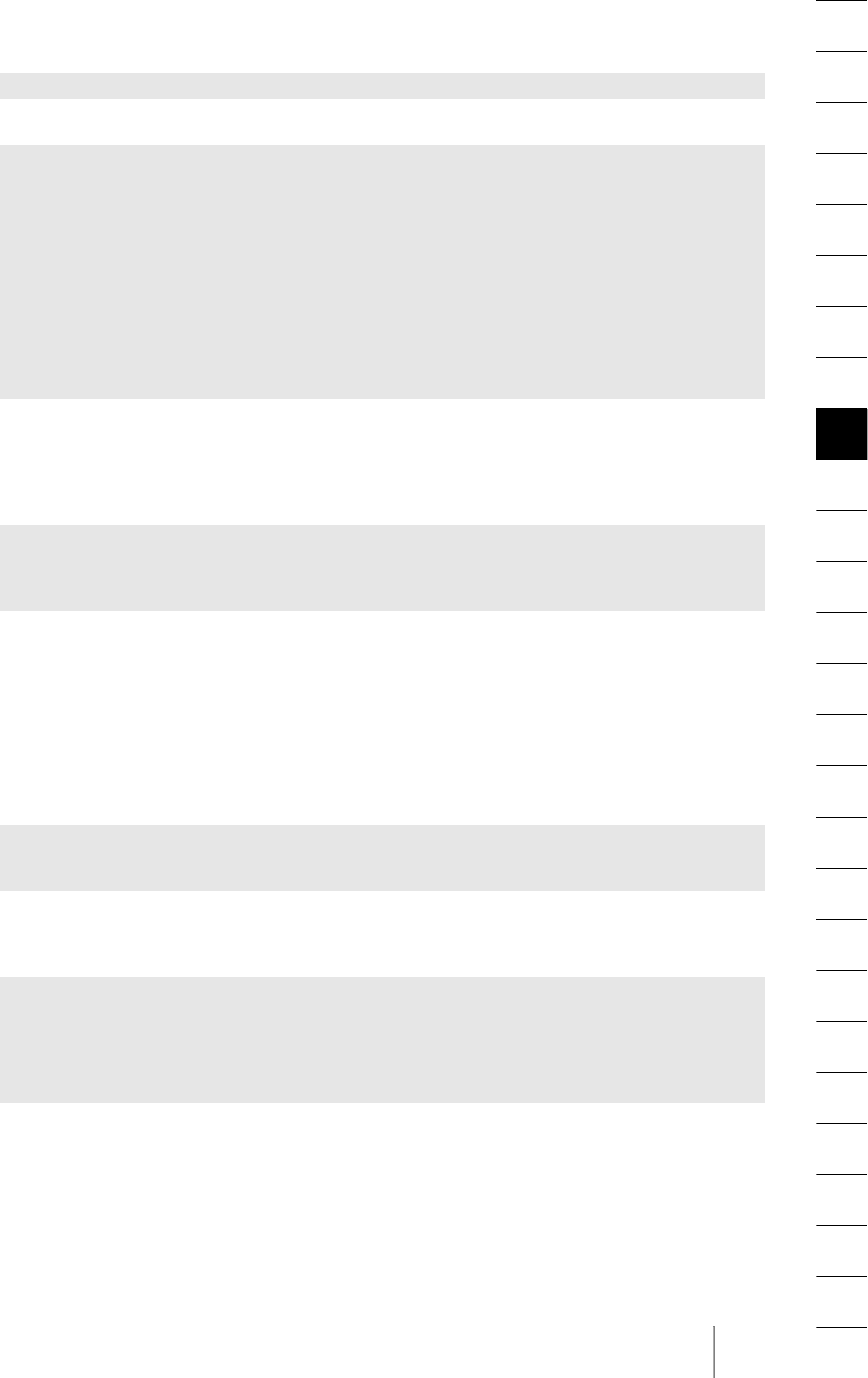
8.3 Text Functions 229
Table 8.21 Options for PDF_fit_textflow( )
option type explanation
blind boolean No output will be generated, but all calculations will be performed and the
formatting results can be checked with PDF_info_textflow( ). Default: false
firstlinedist float,
percentage,
or keyword
The distance between the top of the fitbox and the baseline for the first line of
text, specified in user coordinates, as a percentage of the relevant font size (the
first font size in the line if fixedleading=true, and the maximum of all font sizes in
the line otherwise), or as a keyword (default: leading):
leading The leading value determined for the first line; typical diacritical
characters such as À will touch the top of the fitbox.
ascender The ascender value determined for the first line; typical characters
with larger ascenders, such as d and h will touch the top of the fitbox.
capheight The capheight value determined for the first line; typical capital
uppercase characters such as H will touch the top of the fitbox.
If fixedleading=false the maximum of all leading, ascender, or capheight values
found in the first line will be used.
fitmethod keyword Specifies the method used to fit the text into the fitbox. Default: clip
auto PDF_fit_textflow( ) will repeatedly be called in blind mode with re-
duced font size and other font-related options (see fontscale) until the
text fits into the fitbox.
clip The text will be truncated at the bottom of the fitbox.
nofit The text can extend beyond the bottom of the fitbox.
fontscale float The values of fontsize and absolute values (but not percentages) of leading, min-
spacing, maxspacing, spreadlimit, and space will be multiplied with the supplied
scaling factor. Default: 1 if rewind=0, otherwise the value supplied with the corres-
ponding call to PDF_fit_textflow( ).
lastlinedist float,
percentage,
or keyword
(Will be ignored for fitmethod=nofit) The minimum distance between the base-
line for the last line of text and the bottom of the fitbox, specified in user coordi-
nates, as a percentage of the font size (the first font size in the line if fixedleading=
true, and the maximum of all font sizes in the line otherwise), or as a keyword
(default: 0, i.e. the bottom of the fitbox will be used as baseline, and typical des-
cenders will extend below the fitbox):
descender The descender value determined for the last line; typical characters
with descenders, such as g and j will touch the bottom of the fitbox.
If fixedleading=false the maximum of all descender values found in the last line
will be used.
linespreadlimit
float or
percentage
(Only for verticalalign=justify) Maximum amount in user coordinates or as per-
centage of the leading for increasing the leading for vertical justification. Default:
200%
maxlines integer or
keyword
The maximum number of lines in the fitbox, or the keyword auto which means
that as many lines as possible will be placed in the fitbox. When the maximum
number of lines has been placed PDF_fit_textflow( ) will return the string _box-
full.
rewind integer:
-2, -1, 0, or 1
The state of the supplied textflow is reset to the state before some other call to
PDF_fit_textflow( ). Currently the following values are supported (default: 0):
1 Rewind to the state before the first call to PDF_fit_textflow( ).
0 Don’t reset the textflow.
-1 Rewind to the state before the last call to PDF_fit_textflow( ).
-2 Rewind to the state before the second last call to PDF_fit_textflow( ).

230 Chapter 8: API Reference for PDFlib, PDI, and PPS
C++ Java double info_textflow(int textflow, String keyword)
Perl PHP float PDF_info_textflow(resource p, int textflow, string keyword)
Cdouble PDF_info_textflow(PDF *p, int textflow, const char *keyword)
Query the current state of a textflow.
textflow A textflow handle returned by a call to PDF_create_textflow( ).
keyword A keyword specifying the requested information:
>boxlinecount: Number of lines in the last fitbox.
>firstparalinecount: The number of lines in the first paragraph of the fitbox.
>lastmark: The number of the last mark found in the processed part of the textflow in
the last fitbox. Marks can be set with the mark option.
>leading: The current value of the leading option, as determined by the text and op-
tions in the textflow.
>lastparalinecount: The number of lines in the last paragraph of the fitbox.
>minlinelength, maxlinelength: The length of the shortest and longest text line in the
most recently filled fitbox, respectively.
>minliney, maxliney: The y coordinate of the baseline of the shortest and longest text
line in the most recently filled fitbox, respectively.
>remainchars: The number of characters not yet processed. This count does not in-
clude the number of characters in inline option lists and character references.
>textendx, textendy: The x or y coordinate of the current point after placing the text.
>used: The percentage of text (0...100) which has been placed so far.
Returns The value of some textflow parameter as requested by keyword.
Scope document, page, pattern, template, glyph
showborder boolean If true, the border of the fitbox will be stroked (using the curent graphics state).
This may be useful for development and debugging. Default: false
verticalalign keyword Vertical alignment of the text in the fitbox; the firstlinedist and lastlinedist
options will be taken into account as appropriate (default: top):
top Formatting will start at the first line, and continue downwards. If the
text doesn’t fill the fitbox there may be whitespace below the text.
center The text will be vertically centered in the fitbox. If the text doesn’t fill
the fitbox there may be whitespace both above and below the text.
bottom Formatting will start at the last line, and continue upwards. If the text
doesn’t fill the fitbox there may be whitespace above the text.
justify The text will be aligned with top and bottom of the fitbox. In order to
achieve this the leading will be increased up to the limit specified by
linespreadlimit. The height of the first line will only be increased if
firstlinedist=leading.
Table 8.21 Options for PDF_fit_textflow( )
option type explanation

8.3 Text Functions 231
C++ Java void delete_textflow(int textflow)
Perl PHP PDF_delete_textflow(resource p, int textflow)
Cvoid PDF_delete_textflow(PDF *p, int textflow)
Delete a textflow and the associated data structures.
textflow A textflow handle returned by a call to PDF_create_textflow( ).
Details Textflows which have not been deleted with this function will be deleted automatically
at the end of the enclosing document scope.
Scope any
Inline Option Lists for Textflows. The content provided in the text parameter of PDF_
create_textflow( ) may include an arbitrary number of option lists (inline options) speci-
fying textflow options according to Table 8.22. All of these options can alternatively be
provided in the optlist parameter of PDF_create_textflow( ). The same option can be spec-
ified multiply in a single option list; in this case the last occurrence of an option will be
taken into account. Inline option lists must be encoded in winansi encoding, or ebcdic on
EBCDIC-based platforms, and must be enclosed with the characters specified in the
begoptlistchar and endoptlistchar options (by default: < and >).
Special care must be taken if some text fragment between inline option lists can not
be interpreted in Unicode; see Section 4.9.6, »Control Characters, Character Mapping,
and Symbol Fonts«, page 125, for details. Similarly, if the text fragment contains the beg-
optlistchar (by default: <), the textlen can must be specified. Alternatively, numeric or
character entity references can be used to use the begoptlistchar literally instead of start-
ing an option list (e.g. U+003C to specify <). For non Unicode-capable language bindings
the textlen option must also be specified for text fragments with textformat=utf16xx.
Table 8.22 Options for the optlist parameter of PDF_create_textflow( ) and inline option lists in the text
option type explanation
All options and parameters for PDF_load_font( ) (see Table 8.15):
encoding string (Must be used with the fontname option) The name of the encoding.
fontname string (Must be used with the encoding option) The name of the font.
autocidfont
autosubsetting
embedding
fontstyle
fontwarning
monospace
subsetlimit
subsetminsize
subsetting
unicodemap
These options will only be used if both of the fontname and encoding options are
supplied. Notes:
fontwarning
Will be initialized with the value of the textwarning option.

232 Chapter 8: API Reference for PDFlib, PDI, and PPS
All appearance options for PDF_fit_textline( ) (see Table 8.19):
charref
charspacing
fillcolor
font
fontsize
glyphwarning
horizscaling
kerning
overline
strikeout
strokecolor
textformat
textrendering
textrise
underline
wordspacing
These options will be initialized with the value of the corresponding parameter.
font Will be ignored if both fontname and encoding are specified.
fontsize This option is required.
glyphwarning
Will be initialized with the value of the textwarning option.
Options for controlling processing of inline options lists:
begoptlistchar
unichar or
keyword
The character which starts inline option lists. Use the textlen option if you must
use the start character literally in the text. The keyword none can be used to
completely disable the search for option lists. Default: U+003C (<)
endoptlistchar
unichar The character which terminates inline option lists. The character U+007D (}) is not
allowed. Default: U+003F (>)
textlen integer or
keyword
(Required for text in fonts which are not Unicode-compatible, or if text contains
the begoptlistchar, or for text fragments with fixedtextformat=false and text-
format=utf16xx in non-Unicode aware languages) Number of bytes or (in
Unicode-aware languages) characters before the next inline option list. Default: 0
Options for text semantics:
charmapping
1list with
pairs of two
unichars or a
unichar and
an integer
Replace individual characters with one or more instances of another character.
The option list contains one or more pairs of Unichars. The first character in each
pair will be replaced with the second character. Instead of one-to-one mapping
the second element in each pair may be an option list containing a unichar and a
count:
count > 0 The replacement character will be repeated count times.
count < 0 A sequence of multiple instances of the character will be reduced to
the absolute value of the specified number.
count = 0 The character will be deleted.
hyphenchar1unichar or
keyword
The character which replaces a soft hyphen at line breaks. The value 0 and the
keyword none completely suppress hyphens. Default: U+00AD (soft hyphen) if
available in the font, U+002D (hyphen-minus) otherwise
tabalignchar
1unichar The character at which decimal tabs will be aligned. Default: U+002E (.)
Options for controlling the text layout:
alignment keyword Specifies formatting for lines in a paragraph (default: left):
left left-aligned, starting at leftindent
center centered between leftindent and rightindent
right right-aligned, ending at rightindent
justify left- and right-aligned
avoid-
emptybegin
boolean If true, empty lines at the beginning of a fitbox will be deleted. Default: false
fixedleading boolean If true, the first leading value found in each line will be used. Otherwise the
maximum of all leading values in the line will be used. Default: false
Table 8.22 Options for the optlist parameter of PDF_create_textflow( ) and inline option lists in the text
option type explanation

8.3 Text Functions 233
hortabsize1float or
percentage
Width of a horizontal tab2. The interpretation depends on the hortabmethod
option. Default: 7.5%
hortab-
method1keyword Treatment of horizontal tabs in the text. If the determined position is to the left of
the current text position, the tab will be ignored (default: relative):
relative The position will be advanced by the amount specified in hortabsize.
typewriter The position will be advanced to the next multiple of hortabsize.
ruler The position will be advanced to the n-th tab value in the ruler option,
where n is the number of tabs found in the line so far. If n is larger than
the number of tab positions the relative method will be applied.
lastalignment
keyword Formatting for the last line in a paragraph. All keywords of the alignment option
are supported, plus the following (default: auto):
auto Use the value of the alignment option unless it is justify. In the latter
case left will be used.
leading float or
percentage
Distance between adjacent text baselines3. Default: 100%
minlinecount
integer The minimum number of lines in the last paragraph in the fitbox. If there are
fewer lines they will be placed in the next fitbox. The value 2 can be used to
prevent single lines of a paragraph at the end of a fitbox (»orphans«). Default: 1
parindent float or
percentage
Left indent of the first line of a paragraph2. The amount will be added to
leftindent. Specifying this option within a line will act like a tab. Default: 0
rightindent
leftindent
float or
percentage
Right or left indent of all text lines2. If leftindent is specified within a line and the
determined position is to the left of the current text position, this option will be
ignored for the current line. Default: 0
ruler1list of floats
or
percentages
List of absolute tab positions for hortabmethod=ruler2. The list may contain up to
32 non-negative entries in ascending order. Default: integer multiples of
hortabsize
tabalignment
1list of
keywords
Alignment for tab stops. Each entry in the list defines the alignment for the
corresponding entry in the ruler option (default: left)
center Text will be centered at the tab position.
decimal The first instance of tabalignchar will be left-aligned at the tab posi-
tion. If no tabalignchar is found, right alignment will be used instead.
left Text will be left-aligned at the tab position.
right Text will be right-aligned at the tab position.
Options for controlling the line-breaking algorithm:
adjust-
method
keyword Method used to adjust a line when a text portion doesn’t fit into a line after
compressing or expanding the distance between words subject to the limits
specified by the minspacing and maxspacing options. Default: auto
auto The following methods are applied in order: shrink, spread, nofit, split.
clip Same as nofit, except that the long part at the right edge of the fitbox
(taking into account the rightindent option) will be clipped.
nofit The last word will be moved to the next line provided the remaining
(short) line will not be shorter than the percentage specified in the
nofitlimit option. Even justified paragraphs may look slightly ragged.
shrink If a word doesn’t fit in the line the text will be compressed subject to
shrinklimit. If it still doesn’t fit the nofit method will be applied.
split The last word will not be moved to the next line, but will forcefully be
hyphenated. For text fonts a hyphen character will be inserted, but not
for symbol fonts.
spread The last word will be moved to the next line and the remaining (short)
line will be justified by increasing the distance between characters in a
word, subject to spreadlimit. If justification still cannot be achieved
the nofit method will be applied.
Table 8.22 Options for the optlist parameter of PDF_create_textflow( ) and inline option lists in the text
option type explanation

234 Chapter 8: API Reference for PDFlib, PDI, and PPS
Macros for textflow options. Option lists for textflows (either inline in the text, or di-
rectly in the call to PDF_create_textflow( )) may contain macro definitions and macro
calls according to Table 8.23. Macros may be useful for having a central definition of
multiply used option values, such as font names, indentation amounts, etc. Before pars-
ing an option list each contained macros will be substituted with the contents of the
corresponding option list provided in the macro definition. The resulting option list
will then be parsed. The following example demonstrates a macro definition for two
macros:
<macro {
comment { The following macros are used as paragraph styles }
H1 {fontname=Helvetica-Bold encoding=winansi fontsize=14 }
body {fontname=Helvetica encoding=winansi fontsize=12 }
}>
These macros could be used as follows in an option list:
<&H1>Chapter 1
<&body>This chapter talks about...
avoidbreak1boolean If true, try to avoid any line breaks until avoidbreak is reset to false. Default: false
maxspacing1
minspacing1float or
percentage
The maximum or minimum distance between words (in user coordinates, or as a
percentage of the width of the space character). The calculated word spacing is
limited by the provided values (but the wordspacing option will still be added).
Defaults: minspacing=50%, maxspacing=500%
nofitlimit float or
percentage
Lower limit for the length of a line with the nofit method2. Default: 75%.
shrinklimit percentage Lower limit for compressing text with the shrink method; the calculated shrinking
factor is limited by the provided value, but will be multiplied with the value of the
horizscaling option. Default: 85%
spreadlimit1float or
percentage
Upper limit for the distance between characters for the spread method3; the cal-
culated distance will be added to the value of the charspacing option. Default: 0
Options which work as commands:
comment string Arbitrary text which will be ignored; useful for commenting option lists or macros
mark
integer
Store the supplied number internally as a mark. The mark which has been stored
least recently can later be retrieved with PDF_info_textflow( ). This may be useful
for determining which portions of text have already been placed on the page.
nextline
nextparagraph
boolean Force a new line or paragraph, even in fonts which are not Unicode-compatible.
resetfont boolean Reset the font and fontsize options to their previous values. This may be useful to
reset the font after inserts, such as italic text. The font option has precedence over
this option. This command only makes sense after the second setting of any font-
related parameters, and will be ignored otherwise.
return string Exit PDF_create_textflow( ) with the supplied string as return value. The string
must not start with an underscore _ character.
space float or
percentage
The text position will be advanced by the provided value3. This also works in fonts
which are not Unicode-compatible.
1. This option does not affect text in fonts which are not Unicode-compatible according to Section 4.5.6, »Unicode-compatible
Fonts«, page 102.
2. In user coordinates, or as a percentage of the width of the fitbox
3. In user coordinates, or as a percentage of the font size.
Table 8.22 Options for the optlist parameter of PDF_create_textflow( ) and inline option lists in the text
option type explanation

8.3 Text Functions 235
The following rules apply to macro definition and use:
>Macros may be nested to an arbitrary depth (macro definitions may contain calls to
other macros).
>Macros can not be used directly in the same option list where they are defined. How-
ever, a new option list which uses the macro can be started immediately after the
end of the option list in which the macro is defined.
>Macro names are case-insensitive.
>Undefined macros will result in an exception.
>Macros can be redefined at any time.
Table 8.23 Option list macro definitions and calls for PDF_fit_textflow( )
option type explanation
macro list of pairs Each pair describes the name and definition of a macro as follows:
name (string) The name of the macro which can later be used for macro calls.
Macros which have already been defined can be redefined later. The
special name comment will be ignored.
suboptlist An option list which will literally replace the macro name when the
macro is called. Leading and trailing whitespace will be ignored.
&name –The macro with the specified name will be expanded, and the macro name (inclu-
ding the & character) will be replaced by the macro’s contents, i.e. the suboptlist
which has been defined for the macro (without the surrounding braces). The
macro name is terminated by whitespace, {, }, =, or &. Therefore, these characters
can not be used as part of a macro name.
Nested macros will be expanded without any nesting limit. Macros contained in
string options will also be expanded. Macro substitution must result in a valid
option list.
comment string Arbitrary text which will be ignored; useful for commenting macros

236 Chapter 8: API Reference for PDFlib, PDI, and PPS
8.4 Graphics Functions
8.4.1 Graphics State Functions
All graphics state parameters are restored to their default values at the beginning of a
page. The default values are documented in the respective function descriptions. Func-
tions related to the text state are listed in Section 8.3, »Text Functions«, page 213.
Note None of the graphics state functions must be used in path scope (see Section 3.2, »Page Descrip-
tions«, page 57).
C++ Java void setdash(double b, double w)
Perl PHP PDF_setdash(resource p, float b, float w)
Cvoid PDF_setdash(PDF *p, double b, double w)
Set the current dash pattern.
b, w The number of alternating black and white units. b and w must be non-negative
numbers.
Details In order to produce a solid line, set b = w = 0. The dash parameter is set to solid at the be-
ginning of each page.
Scope page, pattern, template, glyph
C++ Java void setdashpattern(String optlist)
Perl PHP PDF_setdashpattern(resource p, string optlist)
Cvoid PDF_setdashpattern(PDF *p, const char *optlist)
Set a dash pattern defined by an option list.
optlist An option list according to Table 8.24. An empty list will generate a solid line.
Details The dash parameter is set to a solid line at the beginning of each page.
Scope page, pattern, template, glyph
Table 8.24 Options for PDF_setdashpattern( )
option type description
dasharray list of floats A list of 2-8 alternating values for the lengths of dashes and gaps for stroked paths
(measured in the user coordinate system) . The array values must be non-nega-
tive, and not all zero. The array values will be cyclically reused until the complete
path is stroked.
dashphase float Distance into the dash pattern at which to start the dash. Default: 0
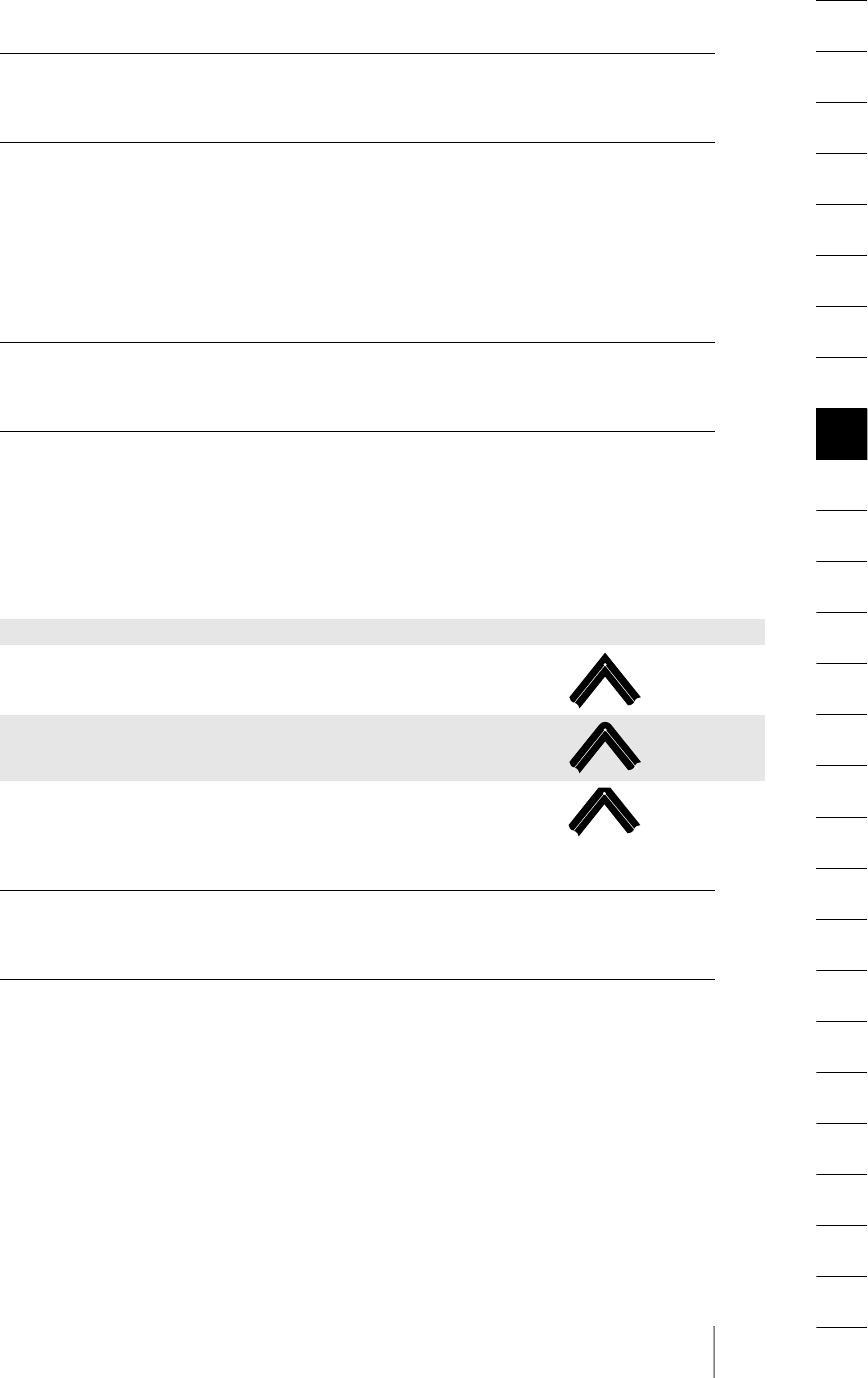
8.4 Graphics Functions 237
C++ Java void setflat(double flatness)
Perl PHP PDF_setflat(resource p, float flatness)
Cvoid PDF_setflat(PDF *p, double flatness)
Set the flatness parameter.
flatness A positive number which describes the maximum distance (in device pixels)
between the path and an approximation constructed from straight line segments.
Details The flatness parameter is set to the default value of 1 at the beginning of each page.
Scope page, pattern, template, glyph
C++ Java void setlinejoin(int linejoin)
Perl PHP PDF_setlinejoin(resource p, int linejoin)
Cvoid PDF_setlinejoin(PDF *p, int linejoin)
Set the linejoin parameter.
linejoin Specifies the shape at the corners of paths that are stroked, see Table 8.25.
Details The linejoin parameter is set to the default value of 0 at the beginning of each page.
Scope page, pattern, template, glyph
C++ Java void setlinecap(int linecap)
Perl PHP PDF_setlinecap(resource p, int linecap)
Cvoid PDF_setlinecap(PDF *p, int linecap)
Set the linecap parameter.
linecap Controls the shape at the end of a path with respect to stroking, see Table 8.26.
Details The linecap parameter is set to the default value of 0 at the beginning of each page.
Scope page, pattern, template, glyph
Table 8.25 Values of the linejoin parameter
value description (from the PDF reference) examples
0 Miter joins: the outer edges of the strokes for the two segments are
continued until they meet. If the extension projects too far, as determined
by the miter limit, a bevel join is used instead.
1Round joins: a circular arc with a diameter equal to the line width is drawn
around the point where the segments meet and filled in, producing a
rounded corner.
2 Bevel joins: the two path segments are drawn with butt end caps (see the
discussion of linecap parameter), and the resulting notch beyond the ends
of the segments is filled in with a triangle.
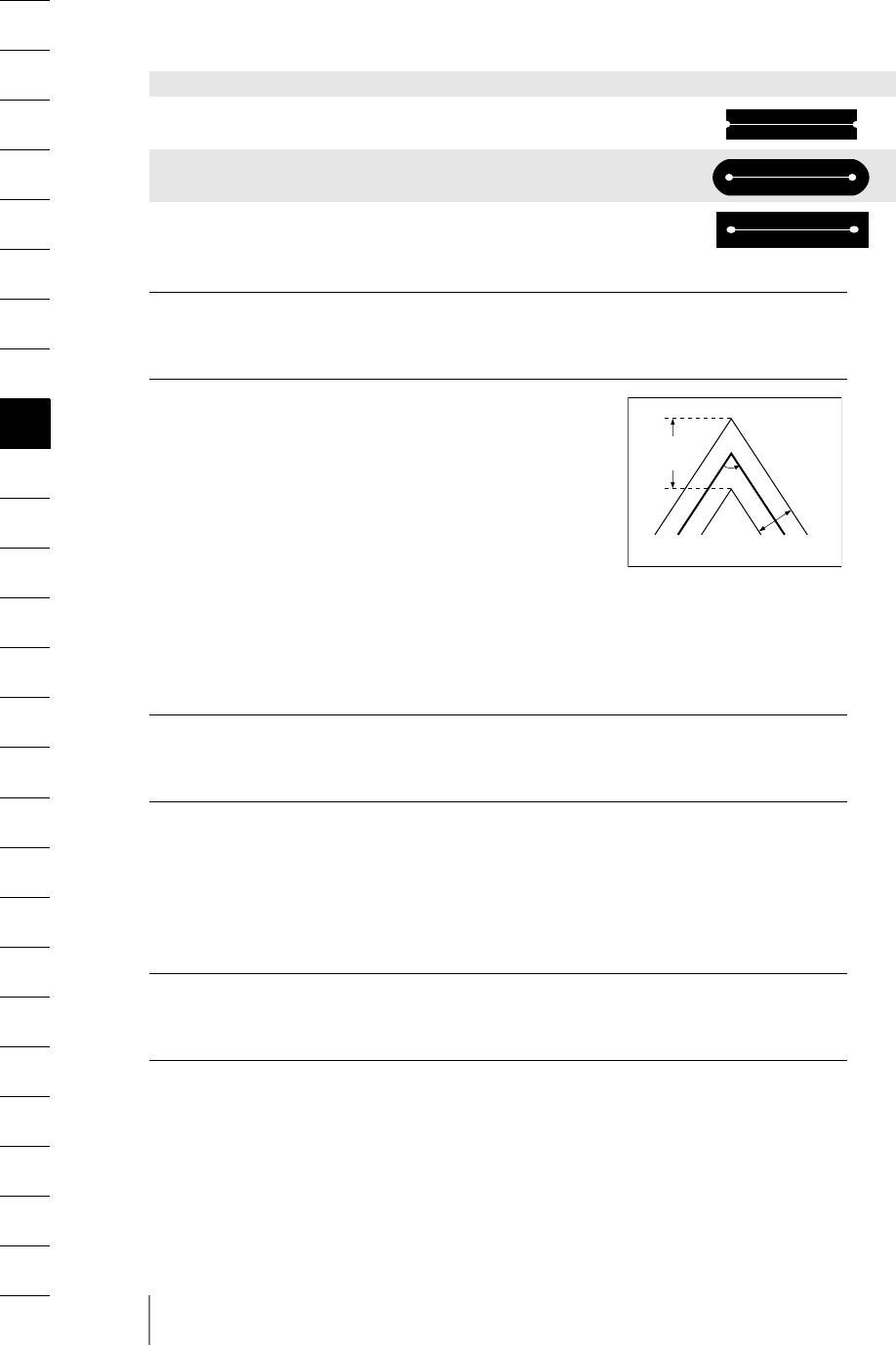
238 Chapter 8: API Reference for PDFlib, PDI, and PPS
C++ Java void setmiterlimit(double miter)
Perl PHP PDF_setmiterlimit(resource p, float miter)
Cvoid PDF_setmiterlimit(PDF *p, double miter)
Set the miter limit.
miter A value greater than or equal to 1 which controls
the spike produced by miter joins.
Details If the linejoin parameter is set to 0 (miter join), two line
segments joining at a small angle will result in a sharp
spike. This spike will be replaced by a straight end (i.e., the
miter join will be changed to a bevel join) when the ratio of
the miter length and the line width exceeds the miter limit. The miter limit is set to the
default value of 10 at the beginning of each page. This corresponds to an angle of rough-
ly 11.5 degrees.
Scope page, pattern, template, glyph
C++ Java void setlinewidth(double width)
Perl PHP PDF_setlinewidth(resource p, float width)
Cvoid PDF_setlinewidth(PDF *p, double width)
Set the current line width.
width The line width in units of the current user coordinate system.
Details The width parameter is set to the default value of 1 at the beginning of each page.
Scope page, pattern, template, glyph
C++ Java void initgraphics( )
Perl PHP PDF_initgraphics(resource p)
Cvoid PDF_initgraphics(PDF *p)
Reset all color and graphics state parameters to their defaults.
Details The color, linewidth, linecap, linejoin, miterlimit, dash parameter, and the current
transformation matrix (but not the text state parameters) are reset to their respective
defaults. The current clipping path is not affected.
Table 8.26 Values of the linecap parameter
value description (from the PDF reference) examples
0 Butt end caps: the stroke is squared off at the endpoint of the path.
1Round end caps: a semicircular arc with a diameter equal to the line width
is drawn around the endpoint and filled in.
2 Projecting square end caps: the stroke extends beyond the end of the line
by a distance which is half the line width and is squared off.
Miter
length
Line width

8.4 Graphics Functions 239
This function may be useful in situations where the program flow doesn’t allow for
easy use of PDF_save( )/PDF_restore( ).
Scope page, pattern, template, glyph
8.4.2 Saving and Restoring Graphics States
C++ Java void save( )
Perl PHP PDF_save(resource p)
Cvoid PDF_save(PDF *p)
Save the current graphics state to a stack.
Details The graphics state contains parameters that control all types of graphics objects. Saving
the graphics state is not required by PDF; it is only necessary if the application wishes to
return to some specific graphics state later (e.g., a custom coordinate system) without
setting all relevant parameters explicitly again. The following items are subject to save/
restore:
>graphics parameters: clipping path, coordinate system, current point, flatness, line
cap style, dash pattern, line join style, line width, miter limit;
>color parameters: fill and stroke colors;
>text position and most text-related parameters, see list below;
>some PDFlib parameters, see list below.
Pairs of PDF_save( ) and PDF_restore( ) may be nested. Although the PDF specification
doesn’t limit the nesting level of save/restore pairs, applications must keep the nesting
level below 26 in order to avoid printing problems caused by restrictions in the Post-
Script output produced by PDF viewers, and to allow for additional save levels required
by PDFlib internally.
Scope page, pattern, template, glyph; must always be paired with a matching PDF_restore( ) call.
PDF_save( ) and PDF_restore( ) calls must be balanced on each page, pattern, template,
and glyph description.
Params The following parameters are subject to save/restore: charspacing, wordspacing, horiz-
scaling, italicangle, leading, font, fontsize, textrendering, textrise;
The following parameters are not subject to save/restore: fillrule, kerning, underline,
overline, strikeout.
C++ Java void restore( )
Perl PHP PDF_restore(resource p)
Cvoid PDF_restore(PDF *p)
Restore the most recently saved graphics state from the stack.
Details The corresponding graphics state must have been saved on the same page, pattern, or
template.
Scope page, pattern, template, glyph; must always be paired with a matching PDF_save( ) call.
PDF_save( ) and PDF_restore( ) calls must be balanced on each page, pattern, template,
and glyph description.

240 Chapter 8: API Reference for PDFlib, PDI, and PPS
8.4.3 Coordinate System Transformation Functions
All transformation functions (PDF_translate( ), PDF_scale( ), PDF_rotate( ), PDF_skew( ),
PDF_concat( ), PDF_setmatrix( ), and PDF_initgraphics( )) change the coordinate system
used for drawing subsequent objects. They do not affect existing objects on the page at
all.
C++ Java void translate(double tx, double ty)
Perl PHP PDF_translate(resource p, float tx, float ty)
Cvoid PDF_translate(PDF *p, double tx, double ty)
Translate the origin of the coordinate system.
tx, ty The new origin of the coordinate system is the point (tx, ty), measured in the old
coordinate system.
Scope page, pattern, template, glyph
C++ Java void scale(double sx, double sy)
Perl PHP PDF_scale(resource p, float sx, float sy)
Cvoid PDF_scale(PDF *p, double sx, double sy)
Scale the coordinate system.
sx, sy Scaling factors in x and y direction.
Details This function scales the coordinate system by sx and sy. It may also be used for achiev-
ing a reflection (mirroring) by using a negative scaling factor. One unit in the x direction
in the new coordinate system equals sx units in the x direction in the old coordinate sys-
tem; analogous for y coordinates.
Scope page, pattern, template, glyph
C++ Java void rotate(double phi)
Perl PHP PDF_rotate(resource p, float phi)
Cvoid PDF_rotate(PDF *p, double phi)
Rotate the coordinate system.
phi The rotation angle in degrees.
Details Angles are measured counterclockwise from the positive x axis of the current coordi-
nate system. The new coordinate axes result from rotating the old coordinate axes by
phi degrees.
Scope page, pattern, template, glyph

8.4 Graphics Functions 241
C++ Java void skew(double alpha, double beta)
Perl PHP PDF_skew(resource p, float alpha, float beta)
Cvoid PDF_skew(PDF *p, double alpha, double beta)
Skew the coordinate system.
alpha, beta Skewing angles in x and y direction in degrees.
Details Skewing (or shearing) distorts the coordinate system by the given angles in x and y di-
rection. alpha is measured counterclockwise from the positive x axis of the current coor-
dinate system, beta is measured clockwise from the positive y axis. Both angles must be
in the range -360˚ < alpha, beta < 360˚, and must be different from -270˚, -90˚, 90˚, and
270˚.
Scope page, pattern, template, glyph
C++ Java void concat(double a, double b, double c, double d, double e, double f)
Perl PHP PDF_concat(resource p, float a, float b, float c, float d, float e, float f)
Cvoid PDF_concat(PDF *p, double a, double b, double c, double d, double e, double f)
Concatenate a matrix to the current transformation matrix.
a, b, c, d, e, f Elements of a transformation matrix. The six values make up a matrix in
the same way as in PostScript and PDF (see references). In order to avoid degenerate
transformations, a*d must not be equal to b*c.
Details This function concatenates a matrix to the current transformation matrix (CTM) for
text and graphics. It allows for the most general form of transformations. Unless you
are familiar with the use of transformation matrices, the use of PDF_translate( ), PDF_
scale( ), PDF_rotate( ), and PDF_skew( ) is suggested instead of this function. The CTM is re-
set to the identity matrix [1,0,0,1,0,0] at the beginning of each page.
Scope page, pattern, template, glyph
C++ Java void setmatrix(double a, double b, double c, double d, double e, double f)
Perl PHP PDF_setmatrix(resource p, float a, float b, float c, float d, float e, float f)
Cvoid PDF_setmatrix(PDF *p, double a, double b, double c, double d, double e, double f)
Explicitly set the current transformation matrix.
a, b, c, d, e, f See PDF_concat( ).
Details This function is similar to PDF_concat( ). However, it disposes of the current transforma-
tion matrix, and completely replaces it with the new matrix.
Scope page, pattern, template, glyph

242 Chapter 8: API Reference for PDFlib, PDI, and PPS
8.4.4 Explicit Graphics States
C++ Java int create_gstate(String optlist)
Perl PHP int PDF_create_gstate(resource p, string optlist)
Cint PDF_create_gstate(PDF *p, const char *optlist)
Create a graphics state object subject to various options.
optlist An option list containing options for graphics states according to Table 8.27.
Returns A gstate handle that can be used in subsequent calls to PDF_set_gstate( ) during the en-
closing document scope.
Details The option list may contain any number of graphics state parameters. Not all parame-
ters are allowed for all PDF versions. The table lists the minimum required PDF version.
Scope document, page, pattern, template, glyph
PDF/X The opacityfill and opacitystroke options must be avoided unless they have a value of 1.
Table 8.27 Options for PDF_create_gstate( )
key type explanation and possible values
alphaisshape boolean (PDF 1.4) sources of alpha are treated as shape (true) or opacity (false).
Default: false
blendmode keyword list (PDF 1.4) Name of the blend mode. Multiple blend modes can be specified.
Possible values: None, Normal, Multiply, Screen, Overlay, Darken, Lighten,
ColorDodge, ColorBurn, HardLight, SoftLight, Difference, Exclusion, Hue,
Saturation, Color, Luminosity. Default: None
flatness float maximum distance between a path and its approximation (see PDF_
setflat( )), must be > 0.
linecap integer shape at the end of a path(see PDF_setlinecap( )); must be 0, 1, or 2.
linejoin integer shape at the corners of paths (see PDF_setlinejoin( )); must be 0, 1, or 2
linewidth float line width (see PDF_setlinewidth( )); must be > 0
miterlimit float controls the spike produced by miter joins, which must be >= 1 (see PDF_
setmiterlimit( ))
opacityfill float (PDF 1.4) constant alpha for fill operations; must be >= 0 and <= 1.
opacitystroke float (PDF 1.4) constant alpha for stroke operations; must be >=0 and <=1
overprintfill boolean overprint for operations other than stroke. Default: false
overprintmode integer overprint mode. 0 (default) means that each color component replaces
previously placed marks; mode 1 (called »overprinting default is nonzero
overprinting« in Acrobat) means that a color component of 0 leaves the
corresponding component unchanged.
overprintstroke boolean overprint for stroke operations. Default: false
renderingintent keyword color rendering intent used for gamut compression; possible keywords:
Auto,
AbsoluteColorimetric
, RelativeColorimetric, Saturation, Perceptual
smoothness float maximum error of a linear interpolation for a shading; must be >= 0 and
<= 1
strokeadjust boolean whether or not to apply automatic stroke adjustment. Default: false
textknockout boolean (PDF 1.4) with respect to compositing, glyphs in a text object will be
treated as separate objects (false) or as a single object (true). Default: true

8.4 Graphics Functions 243
C++ Java void set_gstate(int gstate)
Perl PHP PDF_set_gstate(resource p, int gstate)
Cvoid PDF_set_gstate(PDF *p, int gstate)
Activate a graphics state object.
gstate A handle for a graphics state object retrieved with PDF_create_gstate( ).
Details All options contained in the graphics state object will be set. Graphics state options ac-
cumulate when this function is called multiply. Options which are not explicitly set in
the graphics state object will keep their current values. All graphics state options will be
reset to their default values at the beginning of a page.
Scope page, pattern, template, glyph
8.4.5 Path Construction
Table 8.28 lists relevant parameters and values for this section.
Note Make sure to call one of the functions in Section 8.4.6, »Path Painting and Clipping«, page 246,
after using the functions in this section, or the constructed path will have no effect, and subse-
quent operations may raise a PDFlib exception.
C++ Java void moveto(double x, double y)
Perl PHP PDF_moveto(resource p, float x, float y)
Cvoid PDF_moveto(PDF *p, double x, double y)
Set the current point for graphics output.
x, y The coordinates of the new current point.
Details The current point is set to the default value of undefined at the beginning of each page.
The current points for graphics and the current text position are maintained separately.
Scope page, pattern, template, path, glyph; this function starts path scope.
Params currentx, currenty
C++ Java void lineto(double x, double y)
Perl PHP PDF_lineto(resource p, float x, float y)
Cvoid PDF_lineto(PDF *p, double x, double y)
Draw a line from the current point to another point.
x, y The coordinates of the second endpoint of the line.
Table 8.28 Parameters and values for path segment functions (see Section 8.2.3, »Parameter Handling«, page 207)
function key explanation
get_value currentx
currenty
The x or y coordinate (in units of the current coordinate system), respectively, of
the current point. Scope: page, pattern, template, path

244 Chapter 8: API Reference for PDFlib, PDI, and PPS
Details This function adds a straight line from the current point to (x, y) to the current path. The
current point must be set before using this function. The point (x, y) becomes the new
current point.
The line will be centered around the »ideal« line, i.e. half of the linewidth (as deter-
mined by the value of the linewidth parameter) will be painted on each side of the line
connecting both endpoints. The behavior at the endpoints is determined by the value of
the linecap parameter.
Scope path
Params currentx, currenty
C++ Java void curveto(double x1, double y1, double x2, double y2, double x3, double y3)
Perl PHP PDF_curveto(resource p, float x1, float y1, float x2, float y2, float x3, float y3)
Cvoid PDF_curveto(PDF *p, double x1, double y1, double x2, double y2, double x3, double y3)
Draw a Bézier curve from the current point, using three more control points.
x1, y1, x2, y2, x3, y3 The coordinates of three control points.
Details A Bézier curve is added to the current path from the current point to (x3, y3), using (x1, y1)
and (x2, y2) as control points. The current point must be set before using this function.
The endpoint of the curve becomes the new current point.
Scope path
Params currentx, currenty
C++ Java void circle(double x, double y, double r)
Perl PHP PDF_circle(resource p, float x, float y, float r)
Cvoid PDF_circle(PDF *p, double x, double y, double r)
Draw a circle.
x, y The coordinates of the center of the circle.
rThe radius of the circle.
Details This function adds a circle to the current path as a complete subpath. The point (x + r, y)
becomes the new current point. The resulting shape will be circular in user coordinates.
If the coordinate system has been scaled differently in x and y directions, the resulting
curve will be elliptical.
Scope page, pattern, template, path, glyph; this function starts path scope.
Params currentx, currenty

8.4 Graphics Functions 245
C++ Java void arc(double x, double y, double r, double alpha, double beta)
Perl PHP PDF_arc(resource p, float x, float y, float r, float alpha, float beta)
Cvoid PDF_arc(PDF *p, double x, double y, double r, double alpha, double beta)
Draw a counterclockwise circular arc segment.
x, y The coordinates of the center of the circular arc segment.
rThe radius of the circular arc segment. r must be nonnegative.
alpha, beta The start and end angles of the circular arc segment in degrees.
Details This function adds a counterclockwise circular arc segment to the current path, extend-
ing from alpha to beta degrees. For both PDF_arc( ) and PDF_arcn( ), angles are measured
counterclockwise from the positive x axis of the current coordinate system. If there is a
current point an additional straight line is drawn from the current point to the starting
point of the arc. The endpoint of the arc becomes the new current point.
The arc segment will be circular in user coordinates. If the coordinate system has
been scaled differently in x and y directions the resulting curve will be elliptical.
Scope page, pattern, template, path, glyph; this function starts path scope.
Params currentx, currenty
C++ Java void arcn(double x, double y, double r, double alpha, double beta)
Perl PHP PDF_arcn(resource p, float x, float y, float r, float alpha, float beta)
Cvoid PDF_arcn(PDF *p, double x, double y, double r, double alpha, double beta)
Draw a clockwise circular arc segment.
Details Except for the drawing direction, this function behave exactly like PDF_arc( ). In particu-
lar, the angles are still measured counterclockwise from the positive x axis.
C++ Java void rect(double x, double y, double width, double height)
Perl PHP PDF_rect(resource p, float x, float y, float width, float height)
Cvoid PDF_rect(PDF *p, double x, double y, double width, double height)
Draw a rectangle.
x, y The coordinates of the lower left corner of the rectangle.
width, height The size of the rectangle.
Details This function adds a rectangle to the current path as a complete subpath. Setting the
current point is not required before using this function. The point (x, y) becomes the
new current point. The lines will be centered around the »ideal« line, i.e. half of the line-
width (as determined by the value of the linewidth parameter) will be painted on each
side of the line connecting the respective endpoints.
Scope page, pattern, template, path, glyph; this function starts path scope.
Params currentx, currenty
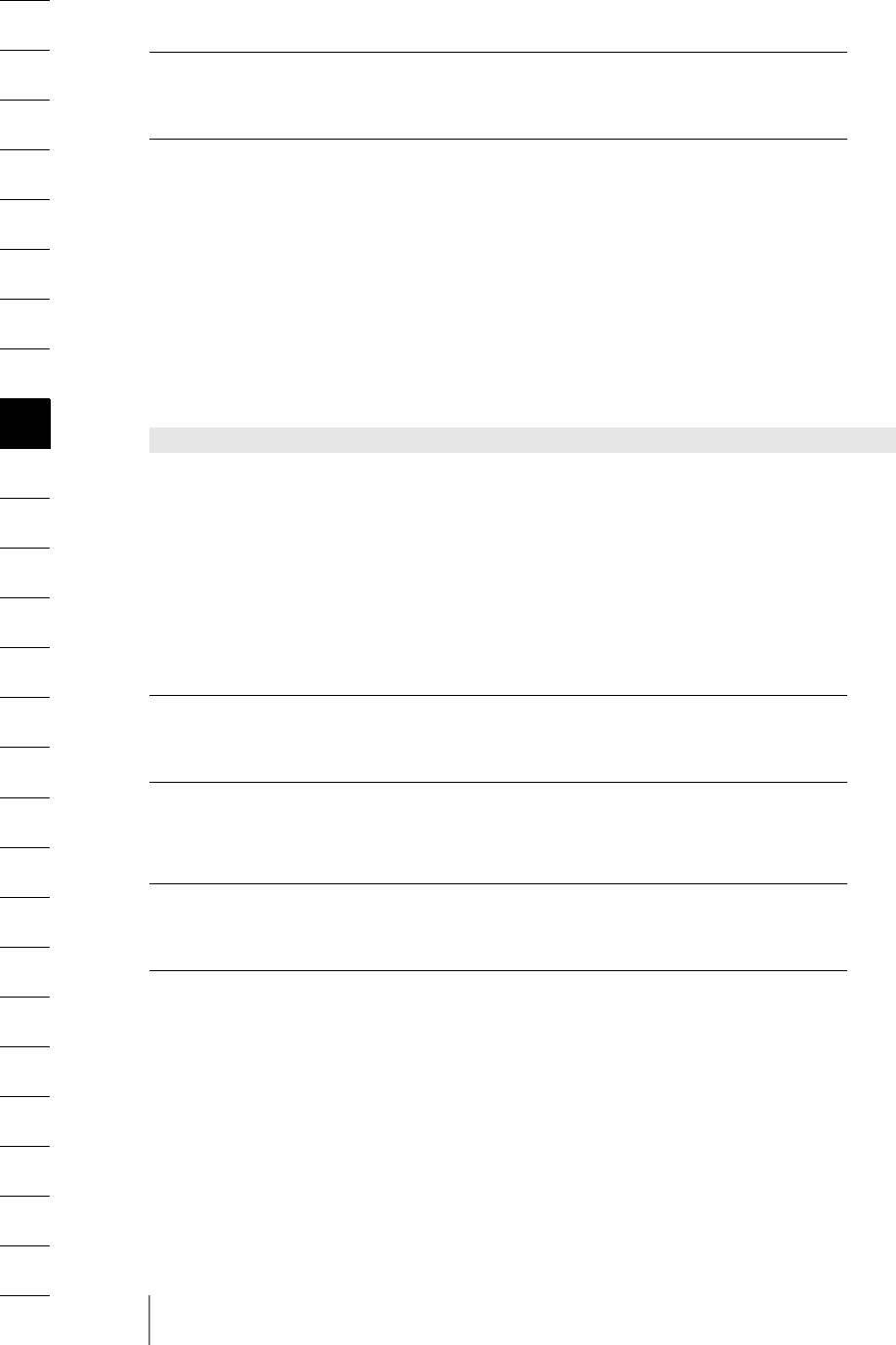
246 Chapter 8: API Reference for PDFlib, PDI, and PPS
C++ Java void closepath( )
Perl PHP PDF_closepath(resource p)
Cvoid PDF_closepath(PDF *p)
Close the current path.
Details This function closes the current subpath, i.e., adds a line from the current point to the
starting point of the subpath.
Scope path
Params currentx, currenty
8.4.6 Path Painting and Clipping
Table 8.29 lists relevant parameters and values for this section.
Note Most functions in this section clear the path, and leave the current point undefined. Subse-
quent drawing operations must therefore explicitly set the current point (e.g., using PDF_
moveto( )) after one of these functions has been called.
C++ Java void stroke( )
Perl PHP PDF_stroke(resource p)
Cvoid PDF_stroke(PDF *p)
Stroke the path with the current line width and current stroke color, and clear it.
Scope path; this function terminates path scope.
C++ Java void closepath_stroke( )
Perl PHP PDF_closepath_stroke(resource p)
Cvoid PDF_closepath_stroke(PDF *p)
Close the path, and stroke it.
Details This function closes the current subpath (adds a straight line segment from the current
point to the starting point of the path), and strokes the complete current path with the
current line width and the current stroke color.
Scope path; this function terminates path scope.
Table 8.29 Parameters and values for path painting and clipping functions
function key explanation
set_parameter
fillrule Set the current fill rule to winding or evenodd. The fill rule is used by PDF viewers
to determine the interior of shapes for the purpose of filling or clipping. Since both
algorithms yield the same result for simple shapes, most applications won’t have
to change the fill rule. The fill rule is reset to the default of winding at the
beginning of each page. Scope: page, pattern, template, glyph.

8.4 Graphics Functions 247
C++ Java void fill( )
Perl PHP PDF_fill(resource p)
Cvoid PDF_fill(PDF *p)
Fill the interior of the path with the current fill color.
Details This function fills the interior of the current path with the current fill color. The interior
of the path is determined by one of two algorithms (see the fillrule parameter). Open
paths are implicitly closed before being filled.
Scope path; this function terminates path scope.
Params fillrule
C++ Java void fill_stroke( )
Perl PHP PDF_fill_stroke(resource p)
Cvoid PDF_fill_stroke(PDF *p)
Fill and stroke the path with the current fill and stroke color.
Scope path; this function terminates path scope.
Params fillrule
C++ Java void closepath_fill_stroke( )
Perl PHP PDF_closepath_fill_stroke(resource p)
Cvoid PDF_closepath_fill_stroke(PDF *p)
Close the path, fill, and stroke it.
Details This function closes the current subpath (adds a straight line segment from the current
point to the starting point of the path), and fills and strokes the complete current path.
Scope path; this function terminates path scope.
Params fillrule
C++ Java void clip( )
Perl PHP PDF_clip(resource p)
Cvoid PDF_clip(PDF *p)
Use the current path as clipping path, and terminate the path.
Details This function uses the intersection of the current path and the current clipping path as
the clipping path for subsequent operations. The clipping path is set to the default val-
ue of the page size at the beginning of each page. The clipping path is subject to PDF_
save( )/PDF_restore( ). It can only be enlarged by means of PDF_save( )/PDF_restore( ).
Scope path; this function terminates path scope.

248 Chapter 8: API Reference for PDFlib, PDI, and PPS
C++ Java void endpath( )
Perl PHP PDF_endpath(resource p)
Cvoid PDF_endpath(PDF *p)
End the current path without filling or stroking it.
Details This function doesn’t have any visible effect on the page. It generates an invisible path
on the page.
Scope path; this function terminates path scope.
8.4.7 Layer Functions
C++ Java int define_layer(String name, String optlist)
Perl PHP int PDF_define_layer(resource p, string name, string optlist)
Cint PDF_define_layer(PDF *p, const char *name, int len, const char *optlist)
Create a new layer definition (requires PDF 1.5).
name (Hypertext string) The name of the layer.
len (C binding only) Length of name (in bytes) for UCS-2 strings. If len = 0 a null-termi-
nated string must be provided.
optlist An option list specifying layer settings according to Table 8.30.
Returns A layer handle which can be used in calls to PDF_begin_layer( ) and PDF_set_layer_
dependency( ) until the end of the enclosing document scope.
Details PDFlib will issue a warning if a layer was defined but hasn’t been used in the document.
Scope document, page
Table 8.30 Options for PDF_define_layer( )
option type explanation
creatorinfo option list An option list describing the content and the creating application. Both of the
following entries are required if this option is used:
creator (Hypertext string) The name of the application which created the layer
subtype (string) The type of content. Suggested values are Artwork and Tech-
nical.
defaultstate boolean Default: true
hypertext-
encoding
keyword Specifies the encoding for the name parameter and the creator option (see Section
4.5.4, »String Handling in non-Unicode-capable Languages«, page 98). An empty
string is equivalent to unicode. Default: the global hypertextencoding parameter
hypertext-
format
keyword Set the format for the name parameter. Possible values are bytes, utf8, utf16,
utf16le, utf16be, and auto. Default: the value of the hypertextformat parameter
initial-
exportstate
boolean Specifies the layer’s recommended export state. If true, Acrobat will include the
layer when converting/exporting to older PDF versions or other document
formats. Default: true
initial-
printstate
boolean The layer’s recommended printing state. If true, Acrobat will include the layer
when printing the document. Default: true
initial-
viewstate
boolean The layer’s recommended viewing state. If true, Acrobat will display the layer
when opening the document. Default: true

8.4 Graphics Functions 249
C++ Java void set_layer_dependency(String type, String optlist)
Perl PHP PDF_set_layer_dependency(resource p, string type, string optlist)
Cvoid PDF_set_layer_dependency(PDF *p, const char *type, const char *optlist)
Define hierarchical and group relationships among layers (requires PDF 1.5).
type The type of dependency, which must be one of the following:
>GroupAllOn: The layer specified in the depend option will be visible if all layers speci-
fied in the group option are visible.
>GroupAnyOn: The layers specified in the depend option will be visible if any layer
specified in the group option is visible.
>GroupAllOff: The layer specified in the depend option will be visible if all layers speci-
fied in the group option are invisible.
>GroupAnyOff: The layer specified in the depend option will be visible if any layer spec-
ified in the group option is invisible.
>Parent: Specify a hierarchical relationship between the layer specified in the parent
option and the layers specified in the children option. A layer can not belong to more
than one parent layer.
>Radiobtn: Specify a radiobutton relationship between the layers specified in the
group option. This means that at most one layer in the group will be visible at a time,
which is particularly useful for multiple language layers.
>Title: The layer handle specified in the parent option does not control any page con-
tents directly, but serves as the parent layer node for the layers specified in the
children option.
optlist An option list specifying layer dependencies according to Table 8.31.
Scope document, page
intent keyword View or Design
language option list Specifies the language of the layer:
lang (string; required) The language and possibly locale in the format
described in Table 8.4 for the lang option
preferred (boolean) If true this layer is used if there is only a partial match
between the layer and the system language. Default: false
onpanel boolean If false, the layer name will not be visible in Acrobat’s layer panel, and therefore
cannot be manipulated by the user. Default: true
pageelement keyword Specifies that the layer contains a pagination artifact: one of HF (header/footer),
FG (foreground image or graphic), BG (background image or graphic), or L (logo).
printsubtype option list Specifies whether the layer is intended for printing:
subtype (keyword) One of Trapping, PrintersMarks, or Watermark specifying
the kind of content in the layer.
printstate (boolean) If true, Acrobat will activate the layer contents upon
printing.
zoom list of floats
or
percentages
One or two values specifying the layer’s visibility depending on the zoom factor
(1.0 means a zoom factor of 100 percent). If one value is provided, it will be used as
the maximum zoom factor at which the layer should be visible; if two values are
provided they specify the minimum and maximum zoom factor. The keyword
maxzoom can be used to specify the largest possible zoom factor.
Table 8.30 Options for PDF_define_layer( )
option type explanation

250 Chapter 8: API Reference for PDFlib, PDI, and PPS
C++ Java void begin_layer(int layer)
Perl PHP PDF_begin_layer(resource p, int layer)
Cvoid PDF_begin_layer(PDF *p, int layer)
Start a layer for subsequent output on the page (requires PDF 1.5).
layer The layer’s handle, which must have been retrieved with PDF_define_layer( ).
Details All content placed on the page after this call, but before any subsequent call to PDF_
begin_layer( ) or PDF_end_layer( ) will be part of the specified layer. The content’s
visibility depends on the layer’s settings.
This function activates the specified layer, and deactivates any layer which may be
currently active.
Scope page
C++ Java void end_layer( )
Perl PHP PDF_end_layer(resource p)
Cvoid PDF_end_layer(PDF *p)
Deactivate all active layers (requires PDF 1.5).
Details Content placed on the page after this call will not belong to any layer. All layers must be
closed at the end of a page.
Scope page
Table 8.31 Options for PDF_set_layer_dependency( )
option type explanation
parent layer handle (Only for type=Parent and Title) The layer which is the parent of the layers
specified in the children option.
children list of layer
handles
(Only for type=Parent and Title) One or more layer handles specifying the layers
subordinate to the provided parent layer.
depend layer handle (Only for type=GroupAllOn, GroupAnyOn, GroupAllOff, and GroupAnyOff) The
layer which is controlled by the layers specified in the group option.
group list of layer
handles
(Only for type=GroupAllOn, GroupAnyOn, GroupAllOff, GroupAnyOff, and
Radiobtn) One or more layer handles comprising the group.

8.5 Color Functions 251
8.5 Color Functions
8.5.1 Setting Color and Color Space
Table 8.32 lists relevant parameters and values for this section.
C++ Java void setcolor(String fstype, String colorspace, double c1, double c2, double c3, double c4)
Perl PHP PDF_setcolor(resource p,
string fstype, string colorspace, float c1, float c2, float c3, float c4)
Cvoid PDF_setcolor(PDF *p,
const char *fstype, const char *colorspace, double c1, double c2, double c3, double c4)
Set the current color space and color.
fstype One of fill, stroke, or fillstroke to specify that the color is set for filling, stroking,
or both.
colorspace One of gray, rgb, cmyk, spot, pattern, iccbasedgray, iccbasedrgb, iccbasedcmyk,
or lab to specify the color space.
c1, c2, c3, c4 Color components for the chosen color space (see Section 3.3, »Working
with Color«, page 63):
>If colorspace is gray, c1 specifies a gray value;
>If colorspace is rgb, c1, c2, c3 specify red, green, and blue values;
>If colorspace is cmyk, c1, c2, c3, c4 specify cyan, magenta, yellow, and black values;
>If colorspace is spot, c1 specifies a spot color handle returned by PDF_makespotcolor( ),
and c2 specifies a tint value between 0 and 1;
>If colorspace is pattern, c1 specifies a pattern handle returned by PDF_begin_pattern( )
or PDF_shading_pattern( ).
>If colorspace is iccbasedgray, c1 specifies a gray value;
>If colorspace is iccbasedrgb, c1, c2, c3 specify red, green, and blue values;
>If colorspace is iccbasedcmyk, c1, c2, c3, c4 specify cyan, magenta, yellow, and black val-
ues;
>If colorspace is lab, c1, c2, and c3 specify color values in the CIE L*a*b* color space, inter-
preted with the D50 illuminant. c1 specifies the L* (luminance) in the range 0 to 100,
and c2, c3 specify the a*, b* (chrominance) values in the range -127 to 128.
Details All color values for the gray, rgb, and cmyk color spaces and the tint value for the spot col-
or space must be numbers in the inclusive range 0–1. Unused parameters should be set
to 0.
Table 8.32 Parameter for color functions
function key explanation
set_parameter preserveold-
pantonenames
If false, old-style Pantone spot color names will be converted to the corresponding
new color names, otherwise they will be preserved. Default: false. Scope: any
set_parameter
spotcolor-
lookup
If false, PDFlib will not use its internal database of spot color names. This can be
used to provide custom definitions of known spot colors, which may be required
as a workaround to match the definitions used by other applications. This feature
should be used with care, and is not recommended. Default: true. Scope: any

252 Chapter 8: API Reference for PDFlib, PDI, and PPS
Grayscale, RGB values and spot color tints are interpreted according to additive color
mixture, i.e., 0 means no color and 1 means full intensity. Therefore, a gray value of 0
and RGB values with (r, g, b) = (0, 0, 0) mean black; a gray value of 1 and RGB values with
(r, g, b) = (1, 1, 1) mean white. CMYK values, however, are interpreted according to subtrac-
tive color mixture, i.e., (c, m, y, k) = (0, 0, 0, 0) means white and (c, m, y, k) = (0, 0, 0, 1) means
black. Color values in the range 0–255 must be scaled to the range 0–1 by dividing by 255.
The fill and stroke color values for the gray, rgb, and cmyk color spaces are set to a de-
fault value of black at the beginning of each page. There are no defaults for spot and pat-
tern colors.
If the iccbasedgray/rgb/cmyk color spaces are used, the corresponding ICC profile
must have been set before using the setcolor:iccprofilegray/rgb/cmyk parameters (see Ta-
ble 8.34).
Scope page, pattern (only if the pattern’s paint type is 1), template, glyph (only if the Type 3
font’s colorized option is true), document; a pattern color can not be used within its own
definition. Setting the color in document scope may be useful for defining spot colors
with PDF_makespotcolor( ).
PDF/X PDF/X-1 and PDF/X-1a: colorspace = rgb, iccbasedgray/rgb/cmyk, and lab are not allowed.
PDF/X-3: colorspace = gray requires that the defaultgray option in PDF_begin_page_ext( )
has been set unless the PDF/X output intent is a grayscale or CMYK device. colorspace =
rgb requires that the defaultrgb option in PDF_begin_page_ext( ) has been set unless the
PDF/X output intent is an RGB device. colorspace = cmyk requires that the defaultcmyk
option in PDF_begin_page_ext( ) has been set unless the PDF/X output intent is a CMYK
device. Using iccbasedgray/rgb/cmyk and lab color requires an ICC profile in the output
intent (a standard name is not sufficient in this case).
Params setcolor:iccprofilegray/rgb/cmyk
C++ Java int makespotcolor(String spotname)
Perl PHP int PDF_makespotcolor(resource p, String spotname)
Cint PDF_makespotcolor(PDF *p, const char *spotname, int reserved)
Find a built-in spot color name, or make a named spot color from the current fill color.
spotname The name of a built-in spot color, or an arbitrary name for the spot color to
be defined. This name is restricted to a maximum length of 126 bytes. Only 8-bit charac-
ters are supported in the spot color name; Unicode or embedded null characters are not
supported.
reserved (C language binding only.) Reserved, must be 0.
Returns A color handle which can be used in subsequent calls to PDF_setcolor( ) throughout the
document. Spot color handles can be reused across all pages, but not across documents.
There is no limit for the number of spot colors in a document.
Details If spotname is known in the internal color tables and the spotcolorlookup parameter is
true (which is default), the supplied spot color name will be used. Otherwise the (CMYK
or other) color values of the current fill color will be used to define the appearance of a
new spot color. These alternate values will only be used for screen preview and low-end
printing. The supplied spot color name will be used for producing color separations in-
stead of the alternate values.
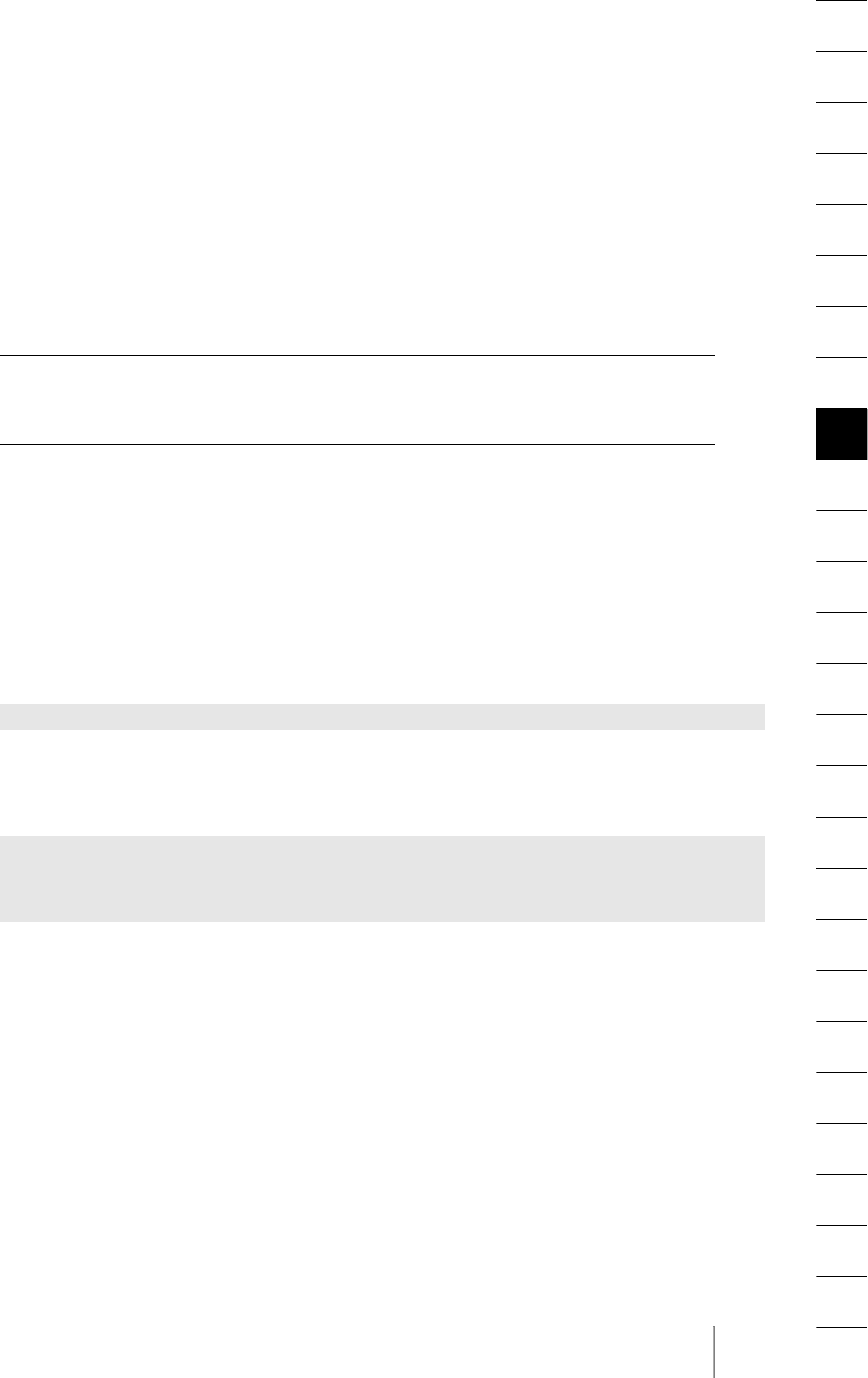
8.5 Color Functions 253
If spotname has already been used in a previous call to PDF_makespotcolor( ), the re-
turn value will be the same as in the earlier call, and will not reflect the current color.
The special spot color name All can be used to apply color to all color separations,
which is useful for painting registration marks. A spot color name of None will produce
no visible output on any color separation.
Scope page, pattern, template, glyph (only if the Type 3 font’s colorized option is true), document;
the current fill color must not be a spot color or pattern if a custom color is to be de-
fined.
PDF/X PANTONE® colors are not supported in the PDF/X-1 and PDF/X-1a modes.
Params spotcolorlookup, preserveoldpantonenames
C++ Java int load_iccprofile(String profilename, String optlist)
Perl PHP int PDF_load_iccprofile(resource p, string profilename, string optlist)
Cint PDF_load_iccprofile(PDF *p, const char *profilename, int len, const char *optlist)
Search for an ICC profile, and prepare it for later use.
profilename (Name string) The name of an ICCProfile resource, a disk-based or virtual
file name, or a standard output condition name for PDF/X. The latter is only allowed if
the usage option is set to outputintent.
len (Only for the C binding) Length of profilename (in bytes) for UTF-16 strings. If len =
0 a null-terminated string must be provided.
optlist An option list describing aspects of the profile handling according to Table 8.33.
Returns A profile handle which can be used in subsequent calls to PDF_load_image( ) or for set-
ting profile-related parameters. The return value must be checked for -1 (in PHP: 0)
which signals an error. In order to get more detailed information about the nature of a
profile-related problem (file not found, unsupported format, etc.) set the iccwarning pa-
rameter to true. The returned profile handle can not be reused across multiple PDF doc-
uments. Also, the returned handle can not be applied to an image if the usage option is
outputintent. There is no limit to the number of ICC profiles in a document.
Table 8.33 Options for PDF_load_iccprofile( )
key type explanation and possible values
usage keyword Describes the intended use of the ICC profile (default: iccbased):
iccbased the ICC profile will be used to define an ICC-based color space, or will
be applied to an image.
outputintent
the ICC profile will be used to define a PDF/X output intent.
description string This option is only used if usage = outputintent. It contains the human-readable
description of the ICC profile which will be used along with the PDF/X output
intent. Default: if profilename refers to a standard output intent, the description
will be taken from an internal list; otherwise there will be no description.
embedprofile boolean This option is only used if usage = outputintent. Force an embedded ICC profile
even if a standard output intent has been provided as profilename. Default: false

254 Chapter 8: API Reference for PDFlib, PDI, and PPS
Details If the usage option is iccbased the named profile will be searched according to the search
strategy discussed in Section 3.3.4, »Color Management and ICC Profiles«, page 67. If the
profile is found, it will be checked whether it is suitable (e.g., number of color compo-
nents). The sRGB profile is always available internally, and must not be configured.
If usage option is outputintent the named profile is first searched in an internal list of
standard output intents. If this search was unsuccessful, the name will be searched in
the list of user-configured output intents. If the supplied name was found to be a stan-
dard output intent according to the built-in or user-configured list, no ICC profile will
be searched, and the name supplied with the description option will be embedded in
the PDF output as the PDF/X output intent. If the name was not found to be a standard
output intent identifier, it is treated as a profile name and the corresponding ICC profile
will be embedded in the PDF as the PDF/X output intent.
Scope document; if the usage option is iccbased the following scopes are also allowed: page,
pattern, template, glyph.
Params See Table 8.34.
PDF/X The output intent for the generated document must be set either using this function, or
by copying an imported document’s output intent using PDF_process_pdi( ).
Table 8.34 Parameters and values for ICC profiles
function key explanation
set_parameter
ICCProfile
Standard-
OutputIntent
The corresponding resource file line as it would appear for the respective category
in a UPR file (see Section 3.1.6, »Resource Configuration and File Searching«, page
51). Multiple calls add new entries to the internal list. (See also resourcefile in Table
8.2). Scope: any
set_parameter
iccwarning Enable or suppress warnings (nonfatal exceptions) related to ICC profiles. Possible
values are true and false, default value is false. Scope: any
get_value
icccomponents
Return the number of color components in the ICC profile referenced by the
handle provided in the modifier.
set_value setcolor:icc-
profilegray
Set an ICC profile which specifies a Gray color space for use with
PDF_
setcolor( ).
Scope: document, page, pattern, template, glyph
set_value setcolor:icc-
profilergb
Set an ICC profile which specifies an RGB color space for use with
PDF_
setcolor( ).
Scope: document, page, pattern, template, glyph
set_value setcolor:icc-
profilecmyk
Set an ICC profile which specifies a CMYK color space for use with
PDF_
setcolor( ).
Scope: document, page, pattern, template, glyph
set_value defaultgray
defaultrgb
defaultcmyk
Deprecated; use the defaultgray, defaultrgb, and defaultcmyk options in
PDF_
begin/end_page_ext( )

8.5 Color Functions 255
8.5.2 Patterns and Shadings
C++ Java int begin_pattern(double width, double height, double xstep, double ystep, int painttype)
Perl PHP int PDF_begin_pattern(resource p,
float width, float height, float xstep, float ystep, int painttype)
Cint PDF_begin_pattern(PDF *p,
double width, double height, double xstep, double ystep, int painttype)
Start a pattern definition.
width, height The dimensions of the pattern’s bounding box in points.
xstep, ystep The offsets when repeatedly placing the pattern to stroke or fill some ob-
ject. Most applications will set these to the pattern width and height, respectively.
painttype If painttype is 1 the pattern must contain its own color specification which
will be applied when the pattern is used; if painttype is 2 the pattern must not contain
any color specification but instead the current fill or stroke color will be applied when
the pattern is used for filling or stroking.
Returns A pattern handle that can be used in subsequent calls to PDF_setcolor( ) during the en-
closing document scope.
Details This function will reset all text, graphics, and color state parameters to their defaults.
Hypertext functions and functions for opening images must not be used during a pat-
tern definition, but all text, graphics, and color functions (with the exception of the pat-
tern which is in the process of being defined) can be used.
Scope document, page; this function starts pattern scope, and must always be paired with a
matching PDF_end_pattern( ) call.
C++ Java void end_pattern( )
Perl PHP PDF_end_pattern(resource p)
Cvoid PDF_end_pattern(PDF *p)
Finish a pattern definition.
Scope pattern; this function terminates pattern scope, and must always be paired with a
matching PDF_begin_pattern( ) call.
C++ Java int shading_pattern(int shading, String optlist)
Perl PHP int PDF_shading_pattern(resource p, int shading, string optlist)
Cint PDF_shading_pattern(PDF *p, int shading, const char *optlist)
Define a shading pattern using a shading object (requires PDF 1.4 or above).
shading A shading handle returned by PDF_shading( ).
optlist An option list describing aspects of the shading pattern according to Table 8.35.
Returns A pattern handle that can be used in subsequent calls to PDF_setcolor( ) during the en-
closing document scope.

256 Chapter 8: API Reference for PDFlib, PDI, and PPS
Details This function can be used to fill arbitrary objects with a shading. To do so, a shading
handle must be retrieved using PDF_shading( ), then a pattern must be defined based on
this shading using PDF_shading_pattern( ). Finally, the pattern handle can be supplied to
PDF_setcolor( ) to set the current color to the shading pattern.
Scope document, page, font
C++ Java void shfill(int shading)
Perl PHP PDF_shfill(resource p, int shading)
Cvoid PDF_shfill(PDF *p, int shading)
Fill an area with a shading, based on a shading object (requires PDF 1.4 or above).
shading A shading handle returned by PDF_shading( ).
Details This function allows shadings to be used without involving PDF_shading_pattern( ) and
PDF_setcolor( ). However, it works only for simple shapes where the geometry of the ob-
ject to be filled is the same as that of the shading itself. Since the current clip area will be
shaded (subject to the extend0 and extend1 options of the shading) this function will
generally be used in combination with PDF_clip( ).
Scope page, pattern (only if the pattern’s paint type is 1), template, glyph (only if the Type 3
font’s colorized option is true), document
C++ Java int shading(String shtype, double x0, double y0, double x1, double y1,
double c1, double c2, double c3, double c4, String optlist)
Perl PHP int PDF_shading(resource p, string shtype, float x0, float y0, float x1, float y1,
float c1, float c2, float c3, float c4, string optlist)
Cint PDF_shading(PDF *p, const char *shtype, double x0, double y0, double x1, double y1,
double c1, double c2, double c3, double c4, const char *optlist)
Define a blend from the current fill color to another color (requires PDF 1.4 or above).
shtype The type of the shading; must be axial for linear shadings or radial for circle-
like shadings.
x0, y0, x1, y1 For axial shadings, (x0, y0) and (x1, y1) are the coordinates of the starting
and ending points of the shading. For radial shadings these points specify the centers of
the starting and ending circles.
c1, c2, c3, c4 Color values of the shading’s endpoint, interpreted in the current fill color
space in the same way as the color parameters in PDF_setcolor( ). If the current fill color
space is a spot color space c1 will be ignored, and c2 contains the tint value.
optlist An option list describing aspects of the shading according to Table 8.36.
Returns A shading handle that can be used in subsequent calls to PDF_shading_pattern( ) and
PDF_shfill( ) during the enclosing document scope.
Table 8.35 Options for PDF_shading_pattern( )
key type explanation and possible values
gstate handle A graphics state handle

8.5 Color Functions 257
Details The current fill color will be used as the starting color; it must not be based on a pattern.
Scope document, page, font
Table 8.36 Options for PDF_shading( )
key type explanation and possible values
N float The exponent for the color transition function; must be > 0. Default: 1
r0 float (Only for radial shadings, and required in this case) Radius of the starting circle.
r1 float (Only for radial shadings, and required in this case) The radius of the ending circle.
extend0 boolean Specifies whether to extend the shading beyond the starting point. Default: false
extend1 boolean Specifies whether to extend the shading beyond the endpoint. Default: false
antialias boolean Specifies whether to activate antialiasing for the shading. Default: false

258 Chapter 8: API Reference for PDFlib, PDI, and PPS
8.6 Image and Template Functions
Table 8.37 lists relevant parameters and values for this section.
8.6.1 Images
C++ Java int load_image(String imagetype, String filename, String optlist)
Perl PHP int PDF_load_image(resource p, string imagetype, string filename, string optlist)
Cint PDF_load_image(PDF *p,
const char *imagetype, const char *filename, int len, const char *optlist)
Open a disk-based or virtual image file subject to various options.
imagetype The string auto instructs PDFlib to automatically detect the image file type
(this is not possible for CCITT and raw images). Explicitly specifying the image format
with the strings bmp, ccitt, gif, jpeg, png, raw, or tiff offers slight performance advantages
Table 8.37 Parameters and values for the image functions (see Section 8.2.3, »Parameter Handling«, page 207)
function key explanation
get_value imagewidth
imageheight
Get the width or height, respectively, of an image in pixels. The modifier is
the integer handle of the selected image. Scope: page, pattern, template,
glyph, document, path.
get_value orientation Get the orientation value of an image. The modifier is the integer handle
of the selected image. For TIFF images containing an orientation tag the
value of this tag will be returned; in all other cases 1 will be returned.
PDFlib will automatically compensate orientation values different from 1.
Scope: page, pattern, template, glyph, document, path.
get_value resx
resy
Get the horizontal or vertical resolution of an image, respectively. The
modifier is the integer handle of the selected image. Scope: page, pattern,
template, glyph, document, path.
If the value is positive, the return value is the image resolution in pixels per
inch (dpi). If the return value is negative, resx and resy can be used to find
the aspect ratio of non-square pixels, but don’t have any absolute mean-
ing. If the return value is zero, the resolution of the image is unknown.
set_parameter
honoriccprofile Read ICC color profiles embedded in images, and apply them to the image
data. Default: true
set_parameter
imagewarning This parameter can be used in order to obtain more detailed information
about why an image couldn’t be opened successfully with PDF_load_
image( ). Default: false. Scope: any
true Raise an exception when the image function fails, and return -1
(in PHP: 0). The message supplied with the exception may be
useful for debugging.
false Do not raise an exception when the image function fails.
Instead, the function simply returns -1 (in PHP: 0) on error.
set_value image:iccprofile Handle for an ICC profile which will be applied to all respective images
unless the iccprofile option is supplied.
get_value image:iccprofile Return a handle for the ICC profile embedded in the image referenced by
the image handle provided in the modifier.
set_value renderingintent The rendering intent for images. See Table 3.7 for a list of possible
keywords and their meaning. Default: Auto.

8.6 Image and Template Functions 259
(for details see Section 5.1.2, »Supported Image File Formats«, page 134). Type ccitt is dif-
ferent from a TIFF file which contains CCITT-compressed image data.
filename (Name string) Generally the name of the image file to be opened. This must
be the name of a disk-based or virtual file; PDFlib will not pull image data from URLs.
len (Only for the C binding.) Length of filename (in bytes) for UTF-16 strings. If len = 0 a
null-terminated string must be provided.
optlist An option list specifying image-related properties according to Table 8.38.
Returns An image handle which can be used in subsequent image-related calls. The return value
must be checked for -1 (in PHP: 0) which signals an error. In order to get more detailed
information about the nature of an image-related problem (wrong image file name, un-
supported format, bad image data, etc.), set the imagewarning parameter or option to
true (see Table 8.37 and Table 8.38). The returned image handle can not be reused across
multiple PDF documents.
Details This function opens and analyzes a raster graphics file in one of the supported formats
as determined by the imagetype parameter, and copies the relevant image data to the
output document. This function will not have any visible effect on the output. In order
to actually place the imported image somewhere in the generated output document,
PDF_fit_image( ) must be used. Opening the same image more than once is not recom-
mended because the actual image data will be copied to the output document more
than once.
PDFlib will open the image file with the provided filename, process the contents, and
close the file before returning from this call. Although images can be placed multiply
within a document (see PDF_fit_image( )), the actual image file will not be kept open af-
ter this call.
If imagetype = raw or ccitt, the width, height, components, and bpc options must be sup-
plied since PDFlib cannot deduce those from the image data. The user is responsible for
supplying option values which actually match the image. Otherwise corrupt PDF out-
put may be generated, and Acrobat may respond with the message Insufficient data for
an Image.
If imagetype = raw, the length of the supplied image data must be equal to [width x
components x bpc / 8] x height bytes, with the bracketed term adjusted upwards to the
next integer. The image samples are expected in the standard PostScript/PDF ordering,
i.e., top to bottom and left to right (assuming no coordinate transformations have been
applied). 16-bit samples must be provided with the most significant byte first (big-endi-
an or »Mac« byte order). The polarity of the pixel values is as discussed in Section 3.3.1,
»Color and Color Spaces«, page 63. If bpc is smaller than 8, each pixel row begins on a
byte boundary, and color values must be packed from left to right within a byte. Image
samples are always interleaved, i.e., all color values for the first pixel are supplied first,
followed by all color values for the second pixel, and so on.
Scope If the inline option is not provided, the scope is document, page, font, and this function
must always be paired with a matching PDF_close_image( ) call. Loading images in
document or font scope instead of page scope offers slight output size advantages.
If the inline option is provided, the scope is page, pattern, template, glyph, and PDF_close_
image( ) must not be called.
PDF/X All PDF/X conformance levels:

260 Chapter 8: API Reference for PDFlib, PDI, and PPS
>The OPI-1.3 and OPI-2.0 options are not allowed.
>The masked option is only allowed if the mask refers to a 1-bit image.
PDF/X-1 and PDF/X-1a: RGB images are not allowed.
PDF/X-3: Grayscale images require that the defaultgray option in PDF_begin_page_ext( )
must have been set unless the PDF/X output intent is a grayscale or CMYK device. RGB
images require that the defaultrgb option in PDF_begin_page_ext( ) must have been set
unless the PDF/X output intent is an RGB device. CMYK images require that the
defaultcmyk option in PDF_begin_page_ext( ) must have been set unless the PDF/X out-
put intent is a CMYK device.
Params imagewidth, imageheight, resx, resy, imagewarning
Table 8.38 Options for PDF_load_image( )
key type explanation
bitreverse boolean (Only for imagetype = ccitt) If true, do a bitwise reversal of all bytes in the com-
pressed data. Default: false
bpc integer (Only for imagetype = raw; required in this case) The number of bits per compo-
nent; must be 1, 2, 4, or 8. In PDF 1.5 bpc=16 is also allowed.
colorize spot color
handle
(Will be ignored if the iccprofile option is provided) Colorize the image with a spot
color handle, which must have been retrieved with PDF_makespotcolor( ). The
image must be a black and white or grayscale image.
components integer (Only for imagetype=raw; required in this case) The number of image components
(channels); must be 1, 3, or 4.
height integer (Only for imagetype = raw and ccitt; required in this case) Image height in pixels.
honor-
iccprofile
boolean (Only for imagetype = jpeg, png, and tiff; will be set to false if the colorize option is
provided) Read an embedded ICC profile (if any) and apply it to the image. De-
fault: the value of the honoriccprofile parameter.
hypertext-
encoding
keyword Specifies the encoding for the iconname option (see Section 4.5.4, »String Hand-
ling in non-Unicode-capable Languages«, page 98). An empty string is equivalent
to unicode. Default: value of the global hypertextencoding parameter.
iccprofile icc handle (Only for imagetype = jpeg, png, and tiff) Handle of an ICC profile which will be
applied to the image. Default: the value of the global image:iccprofile parameter.
iconname hypertext
string
(Will be ignored if inline=true; forces template=true) Attach a name to the image
so that it can be referenced via JavaScript, e.g. to use the image as an icon for form
fields.
ignoremask boolean Ignore transparency information in the image. Default: false
ignore-
orientation
boolean (Only for TIFF images) Ignore any orientation tag in the image. This may be useful
for compensating wrong orientation information. Default: false
image-
warning
boolean Enable exceptions when the image cannot be opened. Default: the value of the
global imagewarning parameter.
inline boolean (Only for imagetype = ccitt, jpeg, and raw) If true, the image will be written direct-
ly into the content stream of the page, pattern, template, or glyph description (see
Section 5.1.1, »Basic Image Handling«, page 133).
interpolate boolean Enable image interpolation to improve the appearance on screen and paper. This
is useful for bitmap images for glyph descriptions in Type 3 fonts. Default: false
invert boolean Invert the image (swap light and dark colors). This can be used as a workaround
for images which are interpreted differently by applications. Default: false

8.6 Image and Template Functions 261
Kinteger (Only for imagetype = ccitt) CCITT compression parameter for encoding scheme
selection. Default: 0
-1 G4 compression
0 one-dimensional G3 compression (G3-1D)
1 mixed one- and two-dimensional compression (G3, 2-D)
mask boolean The image is going to be used as a mask (see Section 5.1.3, »Image Masks and
Transparency«, page 136). This is required for 1-bit masks, but optional for masks
with more than 1 bit per pixel. However, masks with more than 1 bit require
PDF 1.4. This option is only allowed for images with one color component (inclu-
ding indexed color). Default: false. There are two uses for masks:
Masking another image
The returned image handle may be used in subsequent calls for open-
ing another image and can be supplied for the »masked« option.
Placing a colorized transparent image
Treat the 0-bit pixels in the image as transparent, and colorize the 1-bit
pixels with the current fill color.
masked image
handle
An image handle for an image which will be applied as a mask to the current
image. The image handle has been returned by a previous call to PDF_load_
image( ) (with the »mask« option if it is a 1-bit mask and PDF 1.3 is generated), and
has not yet been closed. In PDF 1.3 compatibility mode the image handle must
refer to a 1-bit image since soft masks are only supported in PDF 1.4 and above.
OPI-1.3 option list An option list containing OPI 1.3 PostScript comments as option names; the
following entries are required:
ALDImageFilename (string), ALDImageDimensions (list of integers),
ALDImageCropRect (rectangle with integers), ALDImagePosition (list of floats)
The following entries are optional:
ALDImageID (string), ALDObjectComments (string), ALDImageCropFixed
(rectangle), ALDImageResolution (list of floats), ALDImageColorType (keyword;
one of Process, Spot, Separation; default: Spot), ALDImageColorType (list of four
color values in the range 0...1 and a color name), ALDImageTint (float),
ALDImageOverprint (boolean), ALDImageType (list of integers),
ALDImageGrayMap (list of integers), ALDImageTransparency (boolean),
ALDImageAsciiTag (list of integer/string pairs)
OPI-2.0 option list An option list containing OPI 2.0 PostScript comments as option names; the
following entry is required:
ImageFilename (string)
The following entries should either both be present or absent:
ImageCropRect (rectangle), ImageDimensions (list of floats)
The following entries are optional:
MainImage (string), TIFFASCIITag (list of integer/string pairs), ImageOverprint
(boolean), ImageInks (the string full_color, the string registration, or a list con-
taining the string monochrome and string/float pairs for each colorant name and
tint), IncludedImageDimensions (list of integers), IncludedImageQuality (integer
with one of the values 1, 2, or 3)
page integer (Only for imagetype = gif or tiff; must be 1 if used with other formats) Extract the
image with the given number from a multi-page image file. The first image has
the number 1. Default: 1
rendering-
intent
keyword The rendering intent for the image. See Table 3.7 for a list of possible keywords and
their meaning. Default: the value of the global renderingintent parameter.
Table 8.38 Options for PDF_load_image( )
key type explanation

262 Chapter 8: API Reference for PDFlib, PDI, and PPS
C++ Java void close_image(int image)
Perl PHP PDF_close_image(resource p, int image)
Cvoid PDF_close_image(PDF *p, int image)
Close an image.
image A valid image handle retrieved with PDF_load_image( ).
Details This function only affects PDFlib’s associated internal image structure. If the image has
been opened from file, the actual image file is not affected by this call since it has al-
ready been closed at the end of the corresponding PDF_load_image( ) call. An image han-
dle cannot be used any more after it has been closed with this function, since it breaks
PDFlib’s internal association with the image.
Scope document, page, font; must always be paired with a matching call to PDF_load_image( )
unless the inline option has been used.
C++ Java void fit_image(int image, double x, double y, String optlist)
Perl PHP PDF_fit_image(resource p, int image, float x, float y, string optlist)
Cvoid PDF_fit_image(PDF *p, int image, double x, double y, const char *optlist)
Place an image or template at position (x, y) on the page, subject to various options.
image A valid image or template handle retrieved with one of the PDF_load_image( ) or
PDF_begin_template( ) functions.
x, y The coordinates of the reference point in the user coordinate system where the
image or template will be located, subject to various options.
optlist An option list specifying placement details according to Table 8.39.
Details The image or template (collectively referred to as an object below) will be placed relative
to the reference point (x, y). By default, the lower left corner of the object will be placed
at the reference point. However, the orientate, boxsize, position, and fitmethod options
can modify this behavior. By default, an image will be scaled according to its resolution
value(s). This behavior can be modified with the dpi, scale, and fitmethod options.
Scope page, pattern, template, glyph (only if the Type 3 font’s colorized option is true, or if the
image is a mask); this function can be called an arbitrary number of times on arbitrary
pages, as long as the image handle has not been closed with PDF_close_image( ).
template boolean If true, generate a PDF Image XObject embedded in a Form XObject (called tem-
plate in PDFlib) instead of a plain Image XObject. This can be useful for creating
templates for form field icons which consist of an image only. It is also required for
compatibility with certain OPI servers when using one of the OPI-1.3 or OPI-2.0
options. Default: false. Scope: document
width integer (Only for imagetype = raw and ccitt; required in this case) Image width in pixels.
Table 8.38 Options for PDF_load_image( )
key type explanation
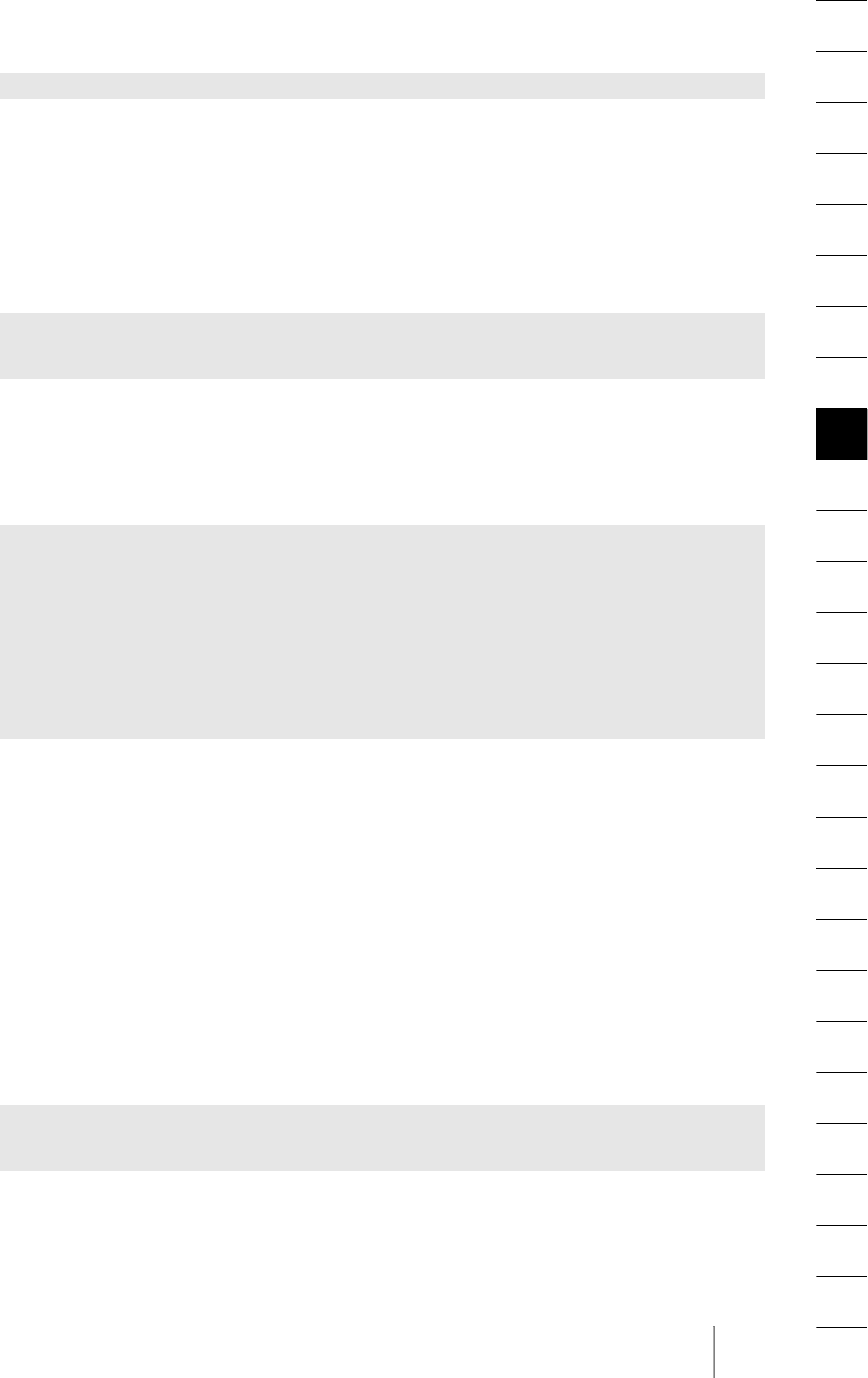
8.6 Image and Template Functions 263
Table 8.39 Options for PDF_fit_image( ) and PDF_fit_pdi_page( )
key type explanation
adjustpage boolean Adjust the dimensions of the current page to the object such that the upper right
corner of the page coincides with the upper right corner of the object plus (x, y).
With the value 0 for the position option the following useful cases shall be noted:
x >= 0 and y >= 0
The object is surrounded by a white margin. This margin has thickness
y in horizontal direction and thickness x in vertical direction.
x < 0 and y < 0
Horizontal and vertical strips will be cropped from the image.
This option is only effective in scope page, and must not be used when the
topdown parameter has been set to true. Default: false
blind boolean If true, all positioning and scaling calculations will be done, but the object will not
be placed on the output page. This is useful for processing the blocks on a page
without actually using the page’s contents. Default: false
boxsize list of floats Two values specifying the width and height of a box, relative to which the object
will be placed and possibly scaled. The lower left corner of the box coincides with
the reference point (x, y). Placing the image and fitting it into the box is controlled
by the position and fitmethod options. If width = 0, only the height is considered;
If height = 0, only the width is considered. In these cases the object will be placed
relative to the vertical line from (x, y) to (x, y+height), or the horizontal line from
(x, y) to (x+width, y), respectively. Default: {0 0}
dpi list of floats One or two values specifying the desired image resolution in pixels per inch in
horizontal and vertical direction. If a single value is supplied it will be used for
both dimensions. With the value o the image’s internal resolution will be used if
available, or 72 dpi otherwise. As an alternative to the value 0, the keyword
internal can be supplied. The scaling resulting from this option is relative to the
current user coordinate system; if it has been scaled the resulting physical
resolution will be different from the supplied values.
This option will be ignored for templates and PDF pages, or if the fitmethod
option has been supplied with one of the keywords auto, meet, slice, or entire.
Default: internal
fitmethod keyword Specifies the method used to fit the object into the specified box. This option will
be ignored if no box has been specified. Default: nofit
nofit Position the object only, without any scaling or clipping.
clip Position the object, and clip it at the edges of the box.
meet Position the object according to the position option, and scale it so
that it entirely fits into the box while preserving its aspect ratio.
Generally at least two edges of the object will meet the corresponding
edges of the box. The dpi and scale options are ignored.
auto Same as meet.
slice Position the object according to the position option, and scale it such
that it entirely covers the box, while preserving the aspect ratio and
making sure that at least one dimension of the object is fully
contained in the box. Generally parts of the object’s other dimension
will extend beyond the box, and will therefore be clipped. The dpi and
scale options are ignored.
entire Position the object according to the position option, and scale it such
that it entirely covers the box. Generally this method will distort the
object. The dpi and scale options are ignored.
ignore-
orientation
boolean (Only for TIFF images) Ignore any orientation tag in the image. This may be useful
for compensating wrong orientation information. Default: the value of the
ignoreorientation option in PDF_load_image( )
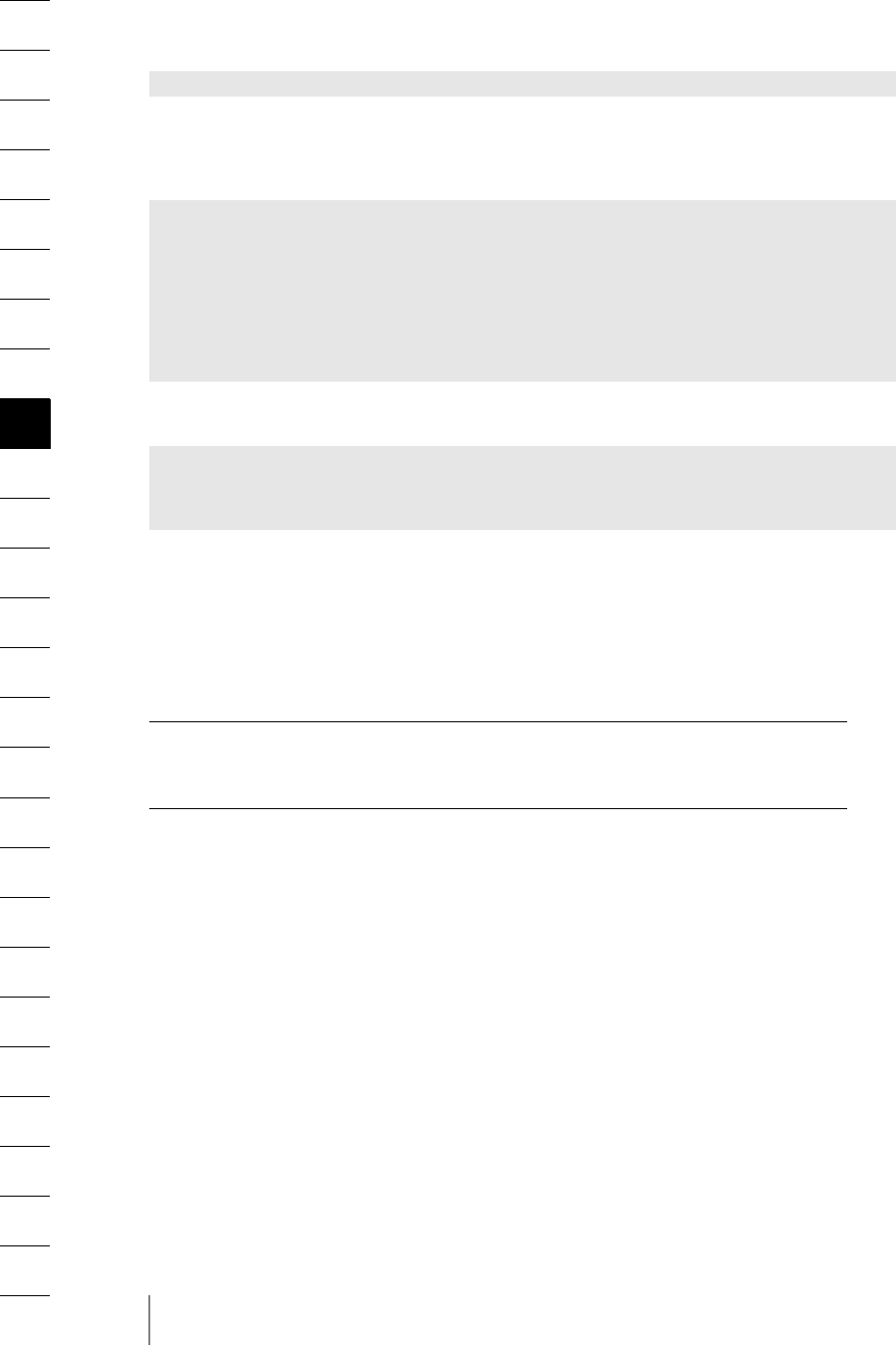
264 Chapter 8: API Reference for PDFlib, PDI, and PPS
8.6.2 Templates
Note The template functions described in this section are unrelated to variable data processing with
PDFlib blocks. Use PDF_fill_textblock( ), PDF_fill_imageblock( ), and PDF_fill_pdfblock( ) to fill
blocks prepared with the PDFlib block plugin (see Section 8.8, »Block Filling Functions (PPS)«,
page 274).
C++ Java int begin_template(double width, double height)
Perl PHP int PDF_begin_template(resource p, float width, float height)
Cint PDF_begin_template(PDF *p, double width, double height)
Start a template definition.
width, height The dimensions of the template’s bounding box in points.
Returns A template handle which can be used in subsequent image-related calls, especially PDF_
fit_image( ). There is no error return.
Details This function will reset all text, graphics, and color state parameters to their defaults.
Hypertext functions and functions for opening images must not be used during a
template definition, but all text, graphics, and color functions can be used.
Scope document, page; this function starts template scope, and must always be paired with a
matching PDF_end_template( ) call.
orientate keyword Specifies the desired orientation of the object when it is placed. Default: north
north upright
east pointing to the right
south upside down
west pointing to the left
position list of floats One or two values specifying the position of the reference point (x, y) within the
object with {0 0} being the lower left corner of the object, and {100 100} the upper
right corner. If the boxsize option has been specified, the position option also
specifies the positioning of the box. The values are expressed as percentages of the
object’s width and height. If both percentages are equal it is sufficient to specify a
single float value.Default: 0. Some examples:
0 or {0 0} lower left corner
{50 100} middle of the top edge
50 or {50 50} center of the object
rotate float Rotate the coordinate system, using the reference point as center and the speci-
fied value as rotation angle in degrees. This results in the box and the object being
rotated. The rotation will be reset when the object has been placed. Default: 0.
scale list of floats Scale the object in horizontal and vertical direction by the specified scaling factors
(not percentages). If both factors are equal it is sufficient to specify a single float
value. This option will be ignored if the fitmethod option has been supplied with
one of the keywords auto, meet, slice, or entire. Default: 1
Table 8.39 Options for PDF_fit_image( ) and PDF_fit_pdi_page( )
key type explanation

8.6 Image and Template Functions 265
C++ Java void end_template( )
Perl PHP PDF_end_template(resource p)
Cvoid PDF_end_template(PDF *p)
Finish a template definition.
Scope template; this function terminates template scope, and must always be paired with a
matching PDF_begin_template( ) call.
8.6.3 Thumbnails
C++ Java void add_thumbnail(int image)
Perl PHP PDF_add_thumbnail(resource p, int image)
Cvoid PDF_add_thumbnail(PDF *p, int image)
Add an existing image as thumbnail for the current page.
image A valid image handle retrieved with PDF_load_image( ).
Details This function adds the supplied image as thumbnail image for the current page. A
thumbnail image must adhere to the following restrictions:
>The image must be no larger than 106 x 106 pixels.
>The image must use the grayscale, RGB, or indexed RGB color space.
>Multi-strip TIFF images can not be used as thumbnails because thumbnails must be
constructed from a single PDF image object (see Section 5.1.2, »Supported Image File
Formats«, page 134).
This function doesn’t generate thumbnail images for pages, but only offers a hook for
adding existing images as thumbnails. The actual thumbnail images must be generated
by the client. The client must ensure that color, height/width ratio, and actual contents
of a thumbnail match the corresponding page contents.
Since Acrobat 5 and above generates thumbnails on the fly (though not Acrobat 5 or
Adobe Reader 6 in the Browser), and thumbnails increase the overall file size of the gen-
erated PDF, it is recommended not to add thumbnails, but rely on client-side thumbnail
generation instead.
Scope page; must only be called once per page. Not all pages need to have thumbnails attached
to them.

266 Chapter 8: API Reference for PDFlib, PDI, and PPS
8.7 PDF Import Functions (PDI)
Note All functions described in this section require the additional PDF import library (PDI) which re-
quires PDFlib+PDI or PDFlib Personalization Server (PPS), but is not part of PDFlib Lite and
PDFlib. Please visit our Web site for more information on obtaining PDI.
8.7.1 Document and Page
C++ Java int open_pdi(String filename, String optlist)
Perl PHP int PDF_open_pdi(resource p, string filename, string optlist)
Cint PDF_open_pdi(PDF *p, const char *filename, const char *optlist, int len)
Open a disk-based or virtual PDF document and prepare it for later use.
filename (Name string) The name of the PDF file.
optlist An option list specifying PDF open options according to Table 8.40.
len (Only for the C binding; must be 0 in other languages) Length of filename (in bytes)
for UTF-16 strings. If len = 0 a null-terminated string must be provided.
Returns A document handle which can be used for processing individual pages of the document
or for querying document properties. A return value of -1 (in PHP: 0) indicates that the
PDF document couldn’t be opened. An arbitrary number of PDF documents can be
opened simultaneously. The return value can be used until the end of the enclosing
document scope.
Details By default, the document will be rejected if at least one of the following conditions is
true (see Section 5.2.3, »Acceptable PDF Documents«, page 142, for details):
>The document is damaged.
>The document uses a higher PDF version than the current PDF document.
>The document is encrypted, but the corresponding password has not been supplied
in the password option.
>The document does not conform to the current PDF/X output conformance level.
>The document is Tagged PDF, and the tagged option in PDF_begin_document( ) is true.
Except for the first reason, the infomode option can be used to open the document nev-
ertheless. This may be useful to query information about the PDF, such as encryption or
PDF/X status, document info fields, etc.
In order to get more detailed information about the nature of a PDF import-related
problem (wrong PDF file name, unsupported format, bad PDF data, etc.), use PDF_get_
errmsg( ) to receive a more detailed error message.
Scope object, document, page; in object scope a PDI document handle can only be used to query
information from a PDF document.
PDF/X The imported document must be compatible to the current PDF/X output conformance
level unless the infomode option is true.
Params See Table 8.43 and Table 8.44.

8.7 PDF Import Functions (PDI) 267
Cint PDF_open_pdi_callback(PDF *p, void *opaque, size_t filesize,
size_t (*readproc)(void *opaque, void *buffer, size_t size),
int (*seekproc)(void *opaque, long offset),
const char *optlist)
Open an existing PDF document from a custom data source and prepare it for later use.
opaque A pointer to some user data that might be associated with the input PDF docu-
ment. This pointer will be passed as the first parameter of the callback functions, and
can be used in any way. PDI will not use the opaque pointer in any other way.
filesize The size of the complete PDF document in bytes.
readproc A callback function which copies size bytes to the memory pointed to by
buffer. If the end of the document is reached it may copy less data than requested. The
function must return the number of bytes copied.
seekproc A callback function which sets the current read position in the document.
offset denotes the position from the beginning of the document (0 meaning the first
byte). If successful, this function must return 0, otherwise -1.
optlist An option list specifying PDF open options according to Table 8.40.
Returns A document handle which can be used for processing individual pages of the document
or for querying document properties. A return value of -1 indicates that the PDF docu-
ment couldn’t be opened. An arbitrary number of PDF documents can be opened simul-
taneously. The return value can be used until the end of the enclosing document scope.
Table 8.40 Options for PDF_open_pdi( )
key type explanation
infomode boolean If true, the document will be opened such that general information can be
queried, but the pages can not be imported into the current output document. In
particular, the following kinds of documents can be opened when infomode=true
(default: false):
PDFs which are not compatible to the current PDF/X mode.
PDFs with a higher PDF version than the current document.
Encrypted PDFs where the password is not known (exception: PDF 1.6 documents
created with the Distiller setting »Object Level Compression: Maximum«)
Tagged PDF when the tagged option in PDF_begin_document( ) is true.
inmemory boolean If true, PDI will load the complete file into memory and process it from there. This
can result in a tremendous performance gain on some systems (especially MVS) at
the expense of memory usage. If false, individual parts of the document will be
read from disk as needed. Default: false
password string (Maximum string length: 32 characters) The master password required to open a
protected PDF document for import. If infomode=true the user password (which
may even be empty) is sufficient to query document information. If no password
has been supplied at all for an encrypted document the document handle can
only be used to query its encryption status.
pdiwarning boolean Specifies whether or not this function will throw an exception in case of an error.
Default is the value of the pdiwarning parameter (see Table 8.44).

268 Chapter 8: API Reference for PDFlib, PDI, and PPS
Details This is a specialized interface for applications which retrieve arbitrary chunks of PDF
data from some data source instead of providing the PDF document in a disk file or in
memory.
Scope object, document, page; in object scope a PDI document handle can only be used to query
information from a PDF document.
Params See Table 8.43 and Table 8.44.
Bindings Only available in the C binding.
C++ Java void close_pdi(int doc)
Perl PHP PDF_close_pdi(resource p, int doc)
Cvoid PDF_close_pdi(PDF *p, int doc)
Close all open PDI page handles, and close the input PDF document.
doc A valid PDF document handle retrieved with PDF_open_pdi*( ).
Details This function closes a PDF import document, and releases all resources related to the
document. All document pages which may be open are implicitly closed. The document
handle must not be used after this call. A PDF document should not be closed if more
pages are to be imported. Although you can open and close a PDF import document an
arbitrary number of times, doing so may result in unnecessary large PDF output files.
Scope object, document, page
Params See Table 8.43 and Table 8.44.
C++ Java int open_pdi_page(int doc, int pagenumber, String optlist)
Perl PHP int PDF_open_pdi_page(resource p, int doc, int pagenumber, string optlist)
Cint PDF_open_pdi_page(PDF *p, int doc, int pagenumber, const char* optlist)
Prepare a page for later use with PDF_fit_pdi_page( ).
doc A valid PDF document handle retrieved with PDF_open_pdi*( ).
pagenumber The number of the page to be opened. The first page has page number 1.
optlist An option list specifying page options according to Table 8.41.
Returns A page handle which can be used for placing pages with PDF_fit_pdi_page( ). A return val-
ue of -1 (in PHP: 0) indicates that the page couldn’t be opened. The return value can be
used until the end of the enclosing document scope. If the infomode option is true, or
was set to true when the document has been opened with PDF_open_pdi( ) the handle
can only be used to retrieve information about the page with PDF_get_pdi_value( ) and
PDF_get_pdi_parameter( ), but the handle can not be used with PDF_fit_pdi_page( ).
Details This function will copy all data comprising the imported page to the output document,
but will not have any visible effect on the output. In order to actually place the import-
ed page somewhere in the generated output document, PDF_fit_pdi_page( ) must be
used. In order to get more detailed information about a problem related to PDF import
(unsupported format, bad PDF data, etc.), set the pdiwarning parameter or option to true.
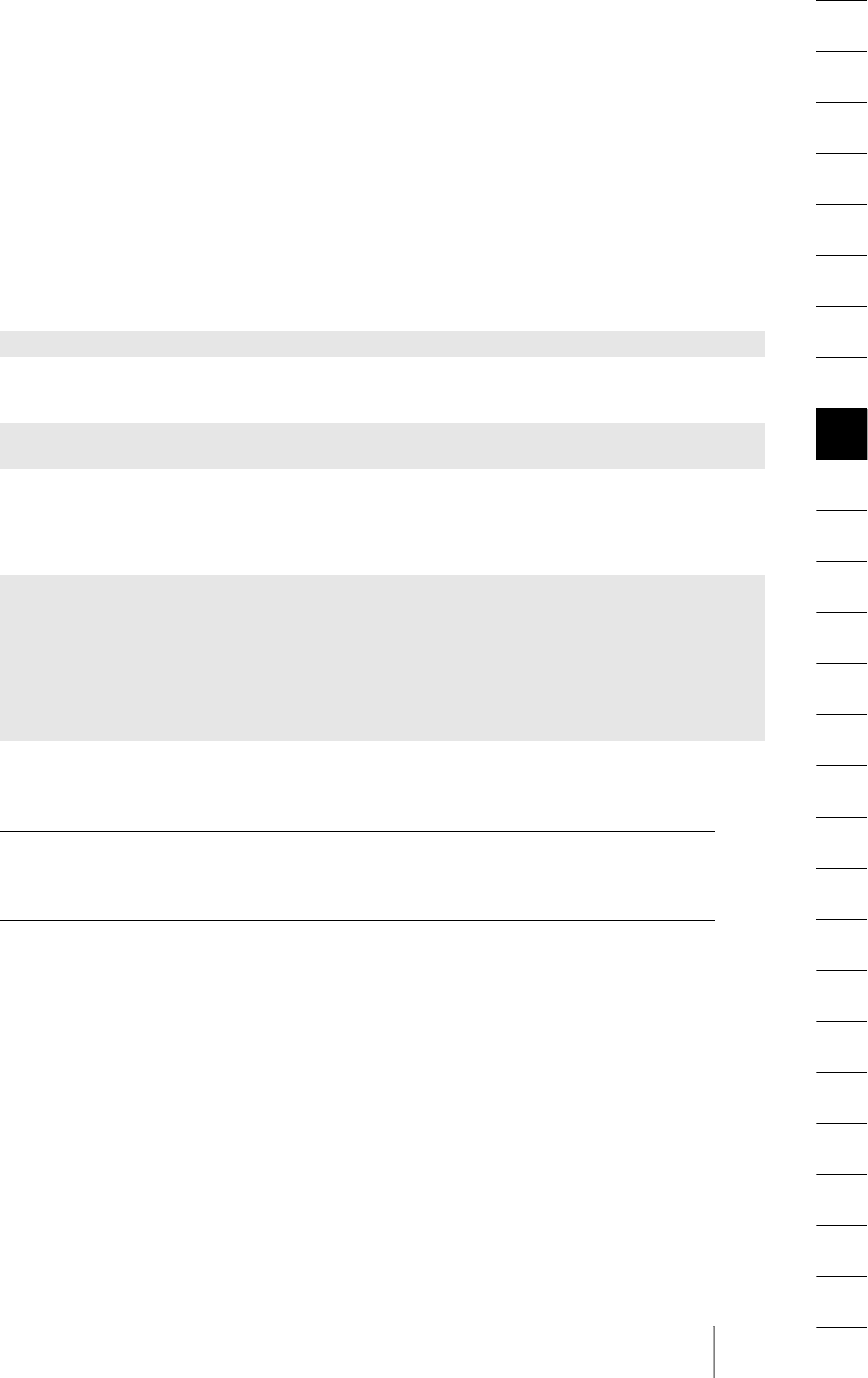
8.7 PDF Import Functions (PDI) 269
If the page has been opened with the infomode option set to true no data will be copied
to the output file.
This function will fail if the PDF version number of the imported document is higher
than the PDF version number of the generated PDF output document.
An arbitrary number of pages can be opened simultaneously. If the same page is
opened multiply, different handles will be returned, and each handle must be closed ex-
actly once.
Scope document, page
Params See Table 8.43 and Table 8.44.
C++ Java void close_pdi_page(int page)
Perl PHP PDF_close_pdi_page(resource p, int page)
Cvoid PDF_close_pdi_page(PDF *p, int page)
Close the page handle and free all page-related resources.
page A valid PDF page handle (not a page number!) retrieved with PDF_open_pdi_
page( ).
Details This function closes the page associated with the page handle identified by page, and re-
leases all related resources. page must not be used after this call.
Scope document, page
Params See Table 8.43 and Table 8.44.
Table 8.41 Options for PDF_open_pdi_page( )
key type explanation
hypertext-
encoding
keyword Specifies the encoding for the iconname option (see Section 4.5.4, »String Hand-
ling in non-Unicode-capable Languages«, page 98). An empty string is equivalent
to unicode. Default: value of the global hypertextencoding parameter.
iconname hypertext
string
Attach a name to the imported page so that it can be referenced via JavaScript,
e.g. to use the page as an icon for form fields.
infomode boolean If true, the page will be opened such that general information can be queried, but
the pages can not be imported into the current output document. Default: the
value of the infomode option supplied to the corresponding call to PDF_open_
pdi( ) (which defaults to false). For documents opened with infomode=true this
option will be ignored.
pdiusebox keyword Specifies which box dimensions will be used for determining an imported page’s
size. See Section 5.2.2, »Using PDI Functions with PDFlib«, page 140 for details
(default: crop):
media Use the MediaBox (which is always present)
crop Use the CropBox if present, else the MediaBox
bleed Use the BleedBox if present, else the CropBox
trim Use the TrimBox if present, else the CropBox
art Use the ArtBox if present, else the CropBox
pdiwarning boolean Specifies whether or not this function will throw an exception in case of an error.
Default is the value of the pdiwarning parameter (see Table 8.44).

270 Chapter 8: API Reference for PDFlib, PDI, and PPS
C++ Java void fit_pdi_page(int page, double x, double y, String optlist)
Perl PHP PDF_fit_pdi_page(resource p, int page, float x, float y, string optlist)
Cvoid PDF_fit_pdi_page(PDF *p, int page, double x, double y, const char *optlist)
Place an imported PDF page on the page subject to various options.
page A valid PDF page handle (not a page number!) retrieved with PDF_open_pdi_
page( ). The infomode option must have been false when opening the document and the
page. The page handle must not have been closed.
x, y The coordinates of the reference point in the user coordinate system where the
page will be located, subject to various options.
optlist An option list specifying placement details according to Table 8.39.
Details This function is similar to PDF_fit_image( ), but operates on imported PDF pages instead.
Most scaling and placement options discussed in Table 8.39 are supported for PDF pag-
es, too.
Scope page, pattern, template, glyph
Params See Table 8.43 and Table 8.44.
PDF/X The document from which the page is imported must conform to a PDF/X level which is
compatible to the PDF/X level of the generated output (see Table 7.7), and must use the
same output intent as the generated document.
8.7.2 Other PDI Processing
C++ Java int process_pdi(int doc, int page, String optlist)
Perl PHP int PDF_process_pdi(resource p, int doc, int page, string optlist)
Cint PDF_process_pdi(PDF *p, int doc, int page, const char* optlist)
Process certain elements of an imported PDF document.
doc A valid PDF document handle retrieved with PDF_open_pdi*( ).
page If optlist requires a page handle (see Table 8.42), page must be a valid PDF page
handle (not a page number!) retrieved with PDF_open_pdi_page( ). The page handle must
not have been closed. If optlist does not require any page handle, page must be -1.
optlist An option list specifying processing options according to Table 8.42.
Returns The value 1 if the function succeeded, or an error code of -1 (in PHP: 0) if the function call
failed.
Scope document
Params See Table 8.44.
PDF/X The output intent for the generated document must be set either using this function
with the copyoutputintent option, or by calling PDF_load_profile( ).

8.7 PDF Import Functions (PDI) 271
8.7.3 PDI Parameter Handling
C++ Java double get_pdi_value(String key, int doc, int page, int reserved)
Perl PHP double PDF_get_pdi_value(resource p, string key, int doc, int page, int reserved)
Cdouble PDF_get_pdi_value(PDF *p, const char *key, int doc, int page, int reserved)
Get some PDI document parameter with numerical type.
key Specifies the name of the parameter to be retrieved, see Table 8.43 and Table 8.44.
doc A valid PDF document handle retrieved with PDF_open_pdi( ).
page A valid PDF page handle (not a page number!) retrieved with PDF_open_pdi_
page( ). For keys which are not page-related page must be -1 (in PHP: 0).
reserved Currently unused, must be 0.
Returns The numerical value retrieved from the document.
Scope any
Table 8.42 Options for PDF_process_pdi( )
key type explanation
action1keyword (Required, although currently only a single action is defined) Specifies the kind of
PDF processing:
copyoutputintent
Copy the PDF/X output intent of the imported document to the output
document. The second and subsequent attempts to copy an output
intent will be ignored.
pdiwarning1boolean Specifies whether or not this function will throw an exception in case of an error.
Default is the value of the pdiwarning parameter (see Table 8.44).
1. Does not require a page handle
Table 8.43 Page-related parameters and values for PDF import
function key explanation
get_pdi_value width
height
Get the width or height, respectively, of an imported page in default units.
Cropping and rotation will be taken into account.
get_pdi_value /Rotate page rotation in degrees (0, 90, 180, or 270)
get_pdi_value /CropBox,
/BleedBox,
/ArtBox,
/TrimBox,
/MediaBox
Query one of the box parameters of the page. The parameter name must
be followed by a slash ’/’ character and one of llx, lly, urx, ury, for example:
/CropBox/llx (see Section 3.2.2, »Page Sizes and Coordinate Limits«, page
59 for details). Note that these will not have the /Rotate key applied,
unlike the width and height values which already reflect any rotation
which may be applied to the page.
get_pdi_parameter isempty Returns the string true if the page is empty, false if the page is not empty,
and unknown if the page contains an unsupported filter.

272 Chapter 8: API Reference for PDFlib, PDI, and PPS
C++ Java String get_pdi_parameter(String key, int doc, int page, int reserved)
Perl PHP string PDF_get_pdi_parameter(resource p, string key, int doc, int page, int reserved)
Cconst char * PDF_get_pdi_parameter(PDF *p,
const char *key, int doc, int page, int reserved, int *len)
Get some PDI document parameter with string type.
key (Name string) Specifies the name of the parameter to be retrieved, see Table 8.43
and Table 8.44.
doc A valid PDF document handle retrieved with PDF_open_pdi( ).
page A valid PDF page handle (not a page number!) retrieved with PDF_open_pdi_
page( ). For keys which are not page-related page must be -1 (in PHP: 0).
reserved Currently unused, must be 0.
len A C-style pointer to an integer which will receive the length of the returned string
in bytes. If the pointer is NULL it will be ignored. This parameter is only required for the
C binding, and not allowed in other language bindings.
Returns The string parameter retrieved from the document as a hypertext string. If no informa-
tion is available an empty string will be returned.
The contents of the string will be valid until the next call of this function, or the end
of the surrounding object scope (whatever happens first).
Details This function gets some string parameter related to an imported PDF document, in
some cases further specified by page and index. Table 8.44 lists relevant parameter com-
binations.
Bindings C and C++: The len parameter must be supplied.
Other bindings: The len parameter must be omitted; instead, a string object of appropri-
ate length will be returned.
Scope any
Table 8.44 Document-related parameters and values for PDF import
function key explanation
get_parameter pdi1Returns the string true if the PDI library is attached (which is not
true for PDFlib Lite), and false otherwise. Scope: any, null2.
get_pdi_value /Root/Pages/Count1total number of pages in the imported document
get_pdi_parameter filename1name of the imported PDF file; if the file has been opened with
PDF_open_pdi_callback( ) a dummy name will be returned.
get_pdi_parameter /Info/<key>1Retrieves the string value of a key in the document info dictionary
(e.g. /Info/Title) as a hypertext string. Custom keys can also be
queried. If the key cannot be found in the document an empty
string will be returned. However, if pdiwarning is set to true, an
exception will be thrown for a key that couldn’t be found.
get_pdi_parameter tagged Returns true if the document is Tagged PDF (and therefore cannot
be imported in Tagged PDF output mode).

8.7 PDF Import Functions (PDI) 273
get_pdi_parameter pdfx1Retrieves the PDF/X conformance level of the imported document.
The result is one of »PDF/X-1:2001« , »PDF/X-1a:2001«, »PDF/X-
3:2002«, »none«, or a string designating a later PDF/X confor-
mance level (see Section 7.4, »PDF/X«, page 180).
get_pdi_value version1PDF version number multiplied by 10, e.g. 15 for PDF 1.5
set_parameter pdiwarning1This parameter can be used to obtain more detailed information
about why a PDF or page couldn’t be opened. Default: false
true Raise a nonfatal exception when the PDI function fails.
The information string supplied with the exception
may be useful in debugging import-related problems.
false Do not raise an exception when the PDI function fails.
Instead, the function returns -1 (in PHP: 0) on error.
set_parameter pdiusebox1Deprecated, use the pdiusebox option in PDF_open_pdi_page( ).
get_pdi_parameter
get_pdi_value
vdp/Blocks/<block>/
<property> or
vdp/Blocks/<block>/
Custom/<property>
Query standard and custom block properties (see Section 6.5,
»Querying Block Names and Properties«, page 169). Only available
in the PDFlib Personalization Server (PPS).
get_pdi_value vdp/blockcount Query the total number of blocks on the page.
1. The page parameter must be -1 (in PHP: 0).
2. May be called with a PDF * argument of NULL or 0.
Table 8.44 Document-related parameters and values for PDF import
function key explanation

274 Chapter 8: API Reference for PDFlib, PDI, and PPS
8.8 Block Filling Functions (PPS)
The PDFlib Personalization Server (PPS) offers dedicated functions for processing vari-
able data blocks of type Text, Image, and PDF. These blocks must be contained in the im-
ported PDF page, but will not be retained in the generated output. The imported page
must have been placed on the output page before using any of the block filling func-
tions. When calculating the block position on the page, the block functions will take
into account the scaling options provided to the most recent call to PDF_fit_pdi_page( )
with the respective PDF page handle.
If only block processing is desired without actually placing the contents of the page
on the output (i.e., the imported page is only used as a container of blocks) the blind op-
tion of PDF_fit_pdi_page( ) can be used. This is useful if you want to place blocks below
the contents of the original page. To achieve this, use PDF_fit_pdi_page( ) with the blind
option, fill the blocks as desired, and call PDF_fit_pdi_page( ) again, this time without the
blind option.
Note The block processing functions discussed in this section require the PDFlib Personalization
Server (PPS). The PDFlib Block plugin for Adobe Acrobat is required for creating blocks in PDF
templates. See Chapter 6 for more information about the PDFlib Block plugin.
C++ Java int fill_textblock(int page, String blockname, String text, String optlist)
Perl PHP int PDF_fill_textblock(resource p, int page, string blockname, string text, string optlist)
Cint PDF_fill_textblock(PDF *p,
int page, const char *blockname, const char *text, int len, const char *optlist)
Fill a text block with variable data according to its properties.
page A valid PDF page handle for a page containing blocks.
blockname (Name string) The name of the block.
text (Content string) The text to be filled into the block, or an empty string if the de-
fault text (as defined by block properties) is to be used.
len (C binding only) Length of text (in bytes) for UCS-2 strings. If len = 0 a null-termi-
nated string must be provided.
optlist An option list specifying filling details according to Table 8.45.
Returns -1 (in PHP: 0) if the named block doesn’t exist on the page, the block cannot be filled (e.g.,
due to font problems), or the block requires a newer PDFlib version for processing; 1 if
the block could be processed successfully. Use the pdiwarning option to get more infor-
mation about the nature of the problem.
Details The supplied text will be formatted into the block, subject to the block’s properties. If
text is empty the function will use the block’s default text if available, and silently re-
turn otherwise. This may be useful to take advantage of other block properties, such as
fill or stroke color.
If the PDF document is found to be corrupt, this function will either throw an excep-
tion or return -1 subject to the pdiwarning parameter or option.
Scope page, template

8.8 Block Filling Functions (PPS) 275
Note This function is only available in the PDFlib Personalization Server (PPS).
C++ Java int fill_imageblock(int page, String blockname, int image, String optlist)
Perl PHP int PDF_fill_imageblock(resource p, int page, string blockname, int image, string optlist)
Cint PDF_fill_imageblock(PDF *p,
int page, const char *blockname, int image, const char *optlist)
Fill an image block with variable data according to its properties.
page A valid PDF page handle for a page containing blocks.
blockname (Name string) The name of the block.
image A valid image handle for the image to be filled into the block, or -1 if the default
image (as defined by block properties) is to be used.
optlist An option list specifying filling details according to Table 8.45.
Returns -1 (in PHP: 0) if the named block doesn’t exist on the page, the block cannot be filled, or
the block requires a newer PDFlib version for processing; 1 if the block could be pro-
cessed successfully. Use the pdiwarning option to get more information about the na-
ture of the problem.
Details The image referred to by the supplied image handle will be placed in the block, subject
to the block’s properties. If image is -1 (in PHP: 0) the function will use the block’s default
image if available, and silently return otherwise.
If the PDF document is found to be corrupt, this function will either throw an excep-
tion or return -1 subject to the pdiwarning parameter or option.
Scope page, template
Note This function is only available in the PDFlib Personalization Server (PPS).
C++ Java int fill_pdfblock(int page, String blockname, int contents, String optlist)
Perl PHP int PDF_fill_pdfblock(resource p,
int page, string blockname, int contents, string optlist)
Cint PDF_fill_pdfblock(PDF *p,
int page, const char *blockname, int contents, const char *optlist)
Fill a PDF block with variable data according to its properties.
page A valid PDF page handle for a page containing blocks.
blockname (Name string) The name of the block.
contents A valid PDF page handle for the PDF page to be filled into the block, or -1 if the
default PDF page (as defined by block properties) is to be used.
optlist An option list specifying filling details according to Table 8.45.
Returns -1 (in PHP: 0) if the named block doesn’t exist on the page, the block cannot be filled, or
the block requires a newer PDFlib version for processing; 1 if the block could be pro-
cessed successfully. Use the pdiwarning option to get more information about the na-
ture of the problem.

276 Chapter 8: API Reference for PDFlib, PDI, and PPS
Details The PDF page referred to by the supplied page handle contents will be placed in the
block, subject to the block’s properties. If contents is -1 (in PHP: 0) the function will use
the block’s default PDF page if available, and silently return otherwise.
If the PDF document is found to be corrupt, this function will either throw an excep-
tion or return -1 subject to the pdiwarning parameter or option.
Scope page, template
Note This function is only available in the PDFlib Personalization Server (PPS).
Table 8.45 Options for the PDF_fill_*block( ) functions
key type explanation
boxsize list of floats Change the block’s width and height to the specified values (expressed as
coordinates in the current user coordinate system). Default: as specified in the
block’s Rect property.
charref boolean (Only for PDF_fill_textblock( )) See Table 8.19
encoding string Encoding for the font as required by PDF_load_font( ). This option is required for
PDF_fill_textblock( ) unless one of the following is true:
The string in the text parameter is empty and the defaulttext property is used.
The font option has been supplied.
glyphwarning
boolean (Only for PDF_fill_textblock( )) See Table 8.18
font font handle (Only for PDF_fill_textblock( )) A font handle returned by PDF_load_font( ). No
default; either font or fontname must be supplied.
fontwarning boolean (Only for PDF_fill_textblock( )) Specifies whether or not this function will throw an
exception in case of font-related problems. Default is the value of the pdiwarning
option.
ignore-
orientation
boolean (Only for PDF_fill_imageblock( )) If true, the orientation tag in TIFF images will be
ignored. Default: false
imagewarning
boolean (Only for PDF_fill_imageblock( )) Specifies whether or not this function will throw
an exception in case of image-related problems. Default is the value of the
pdiwarning option.
pdiwarning boolean Specifies whether or not this function will throw an exception in case of an error
in the PDF page containing the block or the page to be used as block contents.
Default is the value of the pdiwarning parameter (see Table 8.44).
refpoint list of floats Move the lower left corner of the block to the specified point in user coordinates.
Default: as specified in the block’s Rect property.
shrinklimit float or
percentage
(Only for PDF_fill_textblock( )) See Table 8.18
textformat string (Only for PDF_fill_textblock( ) unless the defaulttext property is used) The format
used to interpret the supplied text (see Section 4.5.2, »Content Strings, Hypertext
Strings, and Name Strings«, page 96 and Table 8.18). Default: auto
all options of
PDF_load_font( )
(Only for PDF_fill_textblock( ), but only if the font option is not supplied) See Table
8.15

8.8 Block Filling Functions (PPS) 277
almost any property name Block property names and values (see Section 6.4, »Standard Properties for
Automated Processing«, page 161) which will be used to override those in the block
definition. See Section 6.2.2, »Block Properties«, page 151, for details. The following
block properties can not be overridden:
Name, Description, Locked, Subtype, Type
defaulttext, defaultimage, defaultpdf, defaultpdfpage
As an alternative to supplying the fontname property the font option can be used
to supply a font handle (fontname will be ignored in this case).
Color properties support the following color space keywords: none, gray, rgb,
cmyk, spot, spotname.
Table 8.45 Options for the PDF_fill_*block( ) functions
key type explanation

278 Chapter 8: API Reference for PDFlib, PDI, and PPS
8.9 Hypertext Functions
Table 8.46 lists relevant parameters and values for this section.
8.9.1 Actions
C++ Java int create_action(String type, String optlist)
Perl PHP int PDF_create_action(resource p, string type, string optlist)
Cint PDF_create_action(PDF *p, const char *type, const char *optlist)
Create an action which can be applied to various objects and events.
type The type of the action, specified by one of the following keywords:
>GoTo: go to a destination in the current document.
>GoToR: go to a destination in another (remote) document.
>Launch: launch an application or document.
>URI: resolve a uniform resource identifier, i.e. jump to an Internet address.
>Hide: hide or show an annotation or form field.
>Named: execute an Acrobat menu item identified by its name.
>SubmitForm: send data to a uniform resource locator, i.e., an Internet address (note
that submits which require basic authentication don’t work in Acrobat).
>ResetForm: set some or all fields in the document to their default values.
>ImportData: import form field values from a file.
>JavaScript: execute a script with JavaScript code.
>SetOCGState: (PDF 1.5) hide or show layers.
optlist An option list specifying properties of the action according to Table 8.47.
Returns An action handle which can be used to attach actions to objects within the document.
The action handle can be used until the end of the enclosing document scope.
Details This function creates a single action. Various objects (e.g., pages, form field events,
bookmarks) can be provided with one or more action, but each action must be generat-
ed with a separate call to PDF_create_action( ). Using an action multiply for different ob-
jects is allowed.
Table 8.46 Parameters for hypertext functions (see Section 8.2.3, »Parameter Handling«, page 207)
function key explanation
set_parameter
get_parameter
hypertextencoding
1
1. This parameter must not be used in the Unicode-capable languages Java and Tcl.
Specifies the encoding in which hypertext functions will expect the client-
supplied strings (see Section 4.5.4, »String Handling in non-Unicode-
capable Languages«, page 98). An empty string is equivalent to unicode.
Default: auto. Scope: any
set_parameter
get_parameter
hypertextformat
1Set the format in which the hypertext functions will expect the client-
supplied strings. Possible values are bytes, utf8, utf16, utf16le, utf16be, and
auto . Default: auto. Scope: any
set_parameter
usercoordinates If false, coordinates for hypertext rectangles will be expected in the de-
fault coordinate system (see Section 3.2.1, »Coordinate Systems«, page 57);
otherwise the current user coordinate system will be used. Default: false.
Scope: any

8.9 Hypertext Functions 279
Scope page, document. The returned handle can be used until the next call to PDF_end_
document( )
PDF/X Actions are prohibited in all PDF/X modes.
Table 8.47 Options for action properties with PDF_create_action( )
option type explanation
action-
warning
boolean If true, non-fatal exceptions will be thrown for action options without any effect.
If false, they will be silently ignored. Default: true
canonical-
date
boolean (SubmitForm) If true, any submitted field values representing dates are converted
to a standard format. The interpretation of a field as a date is not specified
explicitly in the field itself, but only in the JavaScript code that processes it.
Default: false
defaultdir string (Launch) Set the default directory for the launched application. This is only
supported by Acrobat on Windows. Default: none
destination option list (GoTo, GoToR; required unless destname is supplied) An option list according to
Table 8.48 defining the destination to jump to.
destname hypertext
string
(GoTo, GoToR; required unless destination is supplied) The name of a destination
which has been defined with PDF_add_nameddest( ) (for GoTo), or the name of a
destination in the remote document (for GoToR).
exclude boolean (SubmitForm) If true, the namelist option specifies which fields to exclude; all
fields in the document are submitted except those listed in the namelist array and
those whose exportable option is false. If false, the namelist option specifies
which fields to include in the submission. All members of specified field groups
will be submitted as well. Default: false
(ResetForm) If true, the namelist option specifies which fields to exclude; all fields
in the document are reset except those listed in the namelist array. If false, the
namelist option specifies which fields to include in resetting. All members of
specified field groups will be reset as well. Default: false
export-
method
keyword list (SubmitForm) The format in which the field names and values are submitted, plus
corresponding options (default: fdf):
html in HTML format
fdf in FDF format
xfdf in XFDF format
pdf in PDF format using the MIME content type application/pdf
getrequest (only for html and pdf) Submit using HTTP GET; otherwise HTTP POST
updates (only for fdf) Include the contents of all incremental updates in the
underlying PDF document
exclurl (only for fdf) The submitted FDF will exclude the url string.
annotfields (only for fdf) Include all annotations and fields.
onlyuser (only for fdf and annotfields) The submit will include only those
annotations whose name matches the name of the current user, as
determined by the remote server to which the field is being submitted.
coordinate (only for html) The coordinates of the mouse click that caused the
submitform action will be transmitted as part of the form data. The
coordinate values are relative to the upper-left corner of the field’s
rectangle.
Example for combined options: exportmethod {fdf updates onlyuser}
filename string (GoToR, Launch; required) The name of an external (PDF or other) file or
application which will be opened when the action is triggered.
(ImportData; required): The name of the external file containing forms data.
hide boolean (Hide) Indicates whether to hide (true) or show (false) annotations. Default: true

280 Chapter 8: API Reference for PDFlib, PDI, and PPS
hypertext-
encoding
keyword Specifies the encoding for the supplied text (see Section 4.5.4, »String Handling in
non-Unicode-capable Languages«, page 98). An empty string is equivalent to
unicode. Default: the value of the global hypertextencoding parameter
ismap boolean (URI) If true, the coordinates of the mouse position will be added to the target URI
when the url is resolved. Default: false
layerstate option list (SetOCGState; required) A list of pairs where each pair consists of a keyword and a
layer handle. The following keywords are supported:
on Activate the layer
off Deactivate the layer
toggle Reverse the state of the layer. If this is used the preserveradio option
should be set to false.
menuname string (Named; required) The name of the menu item to be performed. Well-known
names are nextpage, prevpage, firstpage, lastpage, but others will be accepted. To
find the names of other menu items you can execute the following code in
Acrobat’s JavaScript console or debugger:
function MenuList(m, level) {
console.println(m.cName);
if (m.oChildren != null)
for (var i = 0; i < m.oChildren.length; i++)
MenuList(m.oChildren[i], level + 1);
}
var m = app.listMenuItems();
for (var i=0; i < m.length; i++)
MenuList(m[i], 0);
namelist list of strings (Hide; required) The names (including group names) of the annotations or fields
to be hidden or shown.
(SubmitForm) The names (including group names) of form fields to include in the
submission or which to exclude, depending on the setting of the exclude option.
Default: all fields are submitted except those whose exportable option is false.
(ResetForm) The names (including group names) of form fields to include in the
resetting or which to exclude, depending on the setting of the exclude option.
Default: all fields are reset.
newwindow boolean (GoToR, Launch) A flag specifying whether to open the destination document in a
new window. If this flag is false, the destination document will replace the current
document in the same window. Launch: This entry is ignored if the file is not a
PDF document. Default: Acrobat behaves according to the current user preference.
operation keyword (Launch) A keyword specifying the operation to be applied to the document
specified in the filename option. This is only supported by Acrobat on Windows. If
the filename option designates an application instead of a document, this option
will be ignored and the application is launched (default: open):
open open a document
print print a document
parameters string (Launch) A parameter string to be passed to the application specified with the
filename option. This is only supported by Acrobat on Windows. Multiple
parameters can be separated with a space character, but individual parameters
must not contain any space characters. This option should be omitted if filename
designates a document. Default: none
preserve-
radio
boolean (SetOCGState) If true, preserve the radio-button state relationship between layers.
Default: true
script hypertext
string
(JavaScript; required) A string containing the JavaScript code to be executed.
Table 8.47 Options for action properties with PDF_create_action( )
option type explanation

8.9 Hypertext Functions 281
8.9.2 Named Destinations
C++ Java void add_nameddest(String name, String optlist)
Perl PHP PDF_add_nameddest(resource p, string name, string optlist)
Cvoid PDF_add_nameddest(PDF *p, const char *name, int len, const char *optlist)
Create a named destination on an arbitrary page in the current document.
name (Hypertext string) The name of the destination, which can be used as a target
for links, bookmarks, or other triggers. Destination names must be unique within a doc-
ument. If the same name is supplied more than once for a document only the last defi-
nition will be used, the others will be silently ignored.
len (C binding only) Length of name (in bytes) for UCS-2 strings. If len = 0 a null-termi-
nated string must be provided.
optlist An option list specifying the destination according to Table 8.48. An empty list
is identical to {type fitwindow page 0}.
Details The destination details must be specified in optlist, and the destination may be located
on any page in the current document. The provided name can be used as a target for all
functions and parameters which accept destination options according to Table 8.48.
Scope document, page
scriptname hypertext
string
(JavaScript) If present, the JavaScript supplied in the script option will be inserted
as a document-level JavaScript with the supplied name. If the same scriptname is
supplied more than once in a document only the last script will be used, the others
will be ignored. Document-level JavaScript will be executed after loading the
document in Acrobat. This may be useful for scripts which are used in form fields.
submit-
emptyfields
boolean (SubmitForm; PDF 1.4) If true, all fields characterized by the namelist and exclude
options are submitted, regardless of whether they have a value. For fields without
a value, only the field name is transmitted. If false, fields without a value are not
submitted. Default: false
url string (URI; required) A Uniform Resource Locator encoded in 7-bit ASCII or EBCDIC (but
only containing ASCII characters) specifying the link target. It can point to an
arbitrary (Web or local) resource, and must start with a protocol identifier (such as
http://) The textx/texty, currentx/currenty, and imagewidth/imageheight
parameters may be useful for retrieving positioning information for calculating
the dimension of link rectangles.
(SubmitForm; required) A URL specification giving the uniform resource locator
(address) of the script at the Web server that will process the submission.
Table 8.47 Options for action properties with PDF_create_action( )
option type explanation

282 Chapter 8: API Reference for PDFlib, PDI, and PPS
Table 8.48 Destination options for PDF_add_nameddest( ), as well as for the destination option in PDF_create_
action( ), PDF_create_annotation( ), PDF_create_bookmark( ), and PDF_begin/end_document( ).
option type explanation
group string (Required if the page option has been specified and the document uses page
groups; not allowed otherwise.) Name of the page group that the destination
page belongs to.
hypertext-
encoding
keyword Specifies the encoding for the name parameter (see Section 4.5.4, »String Hand-
ling in non-Unicode-capable Languages«, page 98). An empty string is equivalent
to unicode. Default: the value of the global hypertextencoding parameter
hypertext-
format
keyword Set the format for the name parameter. Possible values are bytes, utf8, utf16,
utf16le, utf16be, and auto. Default: the value of the hypertextformat parameter
type keyword Specifies the location of the window on the target page (default: fitwindow):
fixed Use a fixed destination view specified by the left, top, and zoom op-
tions
.
If any of these is missing its current value will be retained.
fitwindow
Fit the complete page to the window.
fitwidth Fit the page width to the window, with the y coordinate top at the top
edge of the window.
fitheight Fit the page height to the window, with the x coordinate left at the left
edge of the window.
fitrect Fit the rectangle specified by left, bottom, right, and top to the win-
dow.
fitvisible Fit the visible contents of the page (the ArtBox) to the window.
fitvisiblewidth
Fit the visible contents of the page to the window with the y coordi-
nate top at the top edge of the window
fitvisibleheight
Fit the visible contents of the page to the window with the x coordi-
nate left at the left edge of the window.
nameddest
(Not for PDF_add_nameddest( )) A named destination specified with
the name option.
name hypertext
string
(Not for PDF_add_nameddest( ); required if type = nameddest, and ignored other-
wise). String designating a named destination which must be defined in the tar-
get file. If this option is provided no other option except type must be used.
Destination names must be unique within a document.
page integer The page number of the destination page (first page is 1). The page must exist in
the destination PDF. Page 0 means the current page if in scope page, and page 1 if
in scope document. Note that due to a bug Acrobat 6.0 will ignore the page
number, and will always jump to page 1. This bug has been fixed in Acrobat 6.0.1,
and is not present in older versions. Default: 0
zoom float or
percentage
(Only for type = fixed) The zoom factor (1 means 100%) to be used to display the
page contents. If this option is missing or 0 the zoom factor which was in effect
when the link was activated will be retained.
left float (Only for type = fixed, fitheight, fitrect, or fitvisibleheight) The x coordinate of the
page which will positioned at the left edge of the window. Default: 0
right float (Only for type = fitrect) The x coordinate of the page which will positioned at the
right edge of the window. Default: 1000
bottom float (Only for type = fitrect) The y coordinate of the page which will positioned at the
bottom edge of the window. Default: 0
top float (Only for type = fixed, fitwidth, fitrect, or fitvisiblewidth) The y coordinate of the
page which will positioned at the top edge of the window. Default: 1000

8.9 Hypertext Functions 283
8.9.3 Annotations
C++ Java void create_annotation(double llx, double lly, double urx, double ury,
String type, String optlist)
Perl PHP PDF_create_annotation(resource p,
float llx, float lly, float urx, float ury, string type, string optlist)
Cvoid PDF_create_annotation(PDF *p,
double llx, double lly, double urx, double ury, const char *type, const char *optlist)
Create a rectangular annotation on the current page.
llx, lly, urx, ury x and y coordinates of the lower left and upper right corners of the an-
notation rectangle in default coordinates (if the usercoordinates parameter or option is
false) or user coordinates (if it is true). Acrobat will align the upper left corner of the an-
notation at the upper left corner of the specified rectangle.
Note that annotation coordinates are different from the parameters of the PDF_rect( )
function. While PDF_create_annotation( ) expects parameters for two corners directly,
PDF_rect( ) expects the coordinates of one corner, plus width and height values.
type The type of the annotation, specified by one of the following keywords:
>Circle: circle annotation
>FileAttachment: file attachment annotation. Acrobat Reader 5 is unable to deal with
file attachments and will display a question mark instead. File attachments only
work in the full Acrobat software.
>FreeText: free text annotation
>Highlight: highlight annotation
>Ink: ink annotation
>Line: line annotation
>Link: link annotation
>Polygon: (PDF 1.5) Polygon annotation (vertices connected by straight lines)
>PolyLine: (PDF 1.5) Polyline annotation; similar to polygons, except that the first and
last vertices are not connected.
>Popup: Pop-up annotation
>Square: square annotation
>Squiggly: (PDF 1.4) squiggly-underline annotation
>Stamp: rubber stamp annotation
>StrikeOut: strikeout annotation
>Text: text annotation. In Acrobat this type is called note annotation.
>Underline: underline annotation
optlist An option list specifying annotation properties according to Table 8.49.
Scope page
PDF/X In all PDF/X modes annotations are only allowed if they are positioned completely out-
side of the BleedBox (or TrimBox/ArtBox if no BleedBox is present).

284 Chapter 8: API Reference for PDFlib, PDI, and PPS
Table 8.49 Options for annotations with PDF_create_annotation( )
option type explanation
action action list List of annotation actions for the following event (default: empty list):
activate Actions to be performed when the annotation is activated. All types of
actions are permitted.
alignment keyword (Only for type=FreeText) Alignment of text in the annotation: left, center, right.
This option does not work in Acrobat 6, which always uses left. Default: left
annotcolor color The color of the background of the annotation’s icon when closed, the title bar of
the annotation’s pop-up window, and the border of a link annotation. Supported
color spaces: none, gray, rgb. Default: none
annot-
warning
boolean If true, non-fatal exceptions will be thrown for annotation options without any
effect. If false, they will be silently ignored. Default: true
borderstyle keyword Style of the annotation border or the line of the annotation types Polygon, Poly-
Line, Line, Square, Circle, Ink: solid, beveled, dashed, inset, underline. Note that the
beveled, inset, and underline styles do not work reliably in Acrobat. Default: solid
cloudy float (Only for type=Polygon) Specifies the intensity of the »cloud« effect used to render
the polygon. Possible values are 0 (no effect), 1, and 2. If this option is used the
borderstyle option will be ignored. Default: 0
contents hypertext
string
(Required for type=Text, FreeText, Line, Square, Circle, Highlight, Underline,
PolyLine, Polygon, Squiggly, Strikeout, Stamp, Ink, FileAttachment; optional for
type=Link, PopUp; if type=FreeText it must be of type string) Text to be displayed
for the annotation or (if the annotation does not display text) an alternate
description of its contents in human-readable form. The maximum length of
contents is 65535 bytes. Carriage return or line feed characters can be used to force
a new paragraph.
custom list of option
lists
(Only for advanced users) This option can be used to insert an arbitrary number of
private entries in the annotation dictionary, which may be useful for specialized
applications such as inserting processing instructions for digital printing
machines. Using this option requires knowledge of the PDF file format and the
target application. Corrupt PDF output may be generated if unsuitable values are
supplied. Each list must contain three options:
key (string) The name of the dictionary key (excluding the / character).
Any non-standard PDF key can be specified, as well as the following
standard keys: Contents, Name (option iconname), NM (option name),
and Open. The corresponding options will be ignored in this case.
type (keyword) The type of the corresponding value, which must be one of
boolean, name, or string
value (Hypertext string if type=string, otherwise string) The value as it will
appear in the PDF output; PDFlib will automatically apply any
decoration required for strings and names.
dasharray list of floats (Only for borderstyle=dashed). The lengths of dashes and gaps for a dashed
border in default units (see PDF_setdash( )). Default: 3 3
destination option list (Only for type=Link) Defines the destination to jump to. Destination or destname
actions will be dominant over this option.
destname hypertext
string
(Only for type=Link) The name of a destination which has been defined with PDF_
add_nameddest( ). Destination or destname actions will be dominant over this
option.
display keyword Visibility on screen and paper: visible, hidden, noview, noprint. Default: visible
endingstyles keyword list (Only for type=Line, PolyLine) A list with two keywords specifying the line ending
styles: none, square, circle, diamond, openarrow, closedarrow. Default: none none
filename string (Only for type=FileAttachment; required) The file associated with the annotation.
It is recommended to use only ASCII characters in the filename.
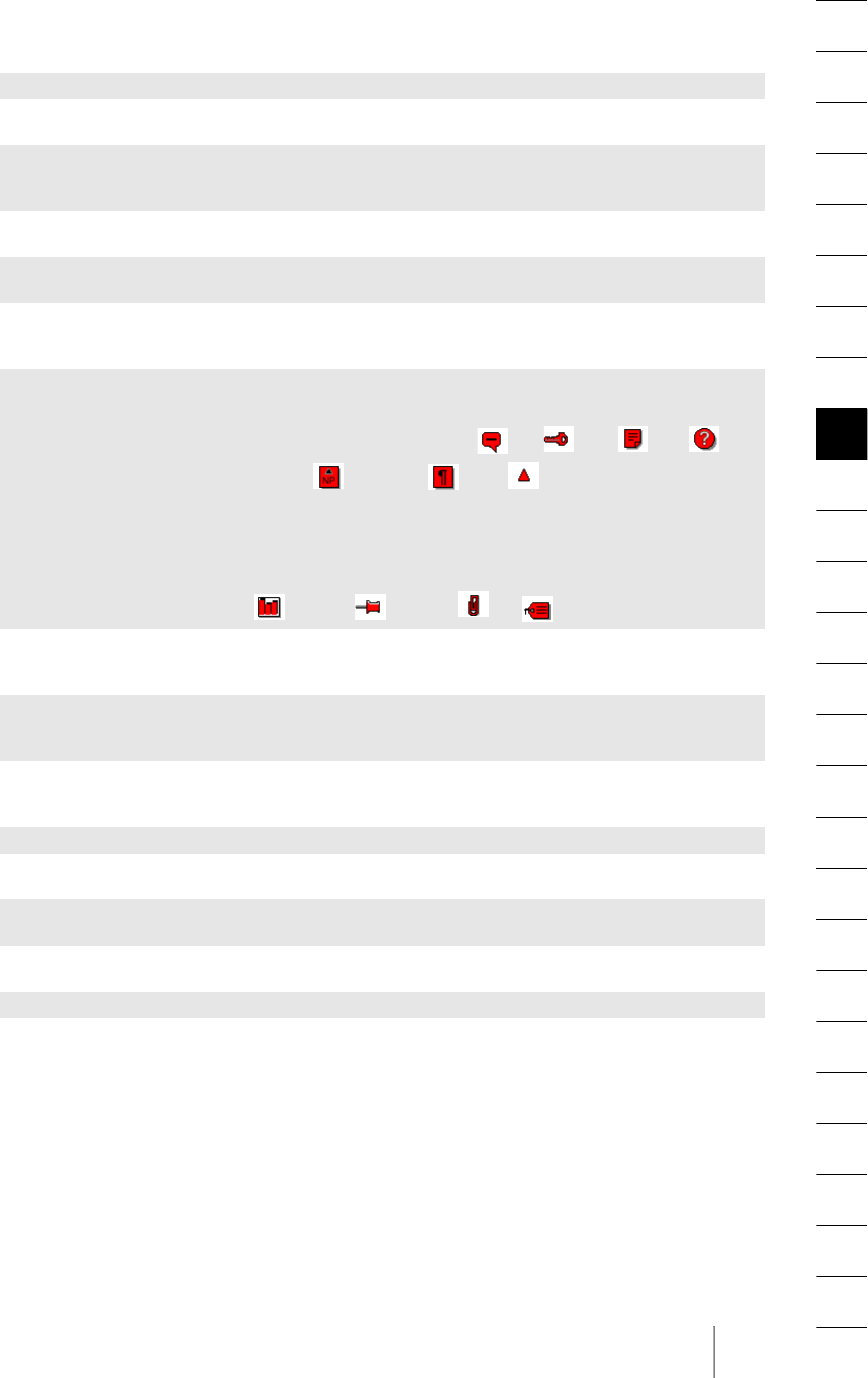
8.9 Hypertext Functions 285
fillcolor color (Only for type=FreeText) Fill color of the text. Supported color spaces: gray, rgb,
cmyk. Default: gray 0 (=black)
font font handle (Only for type=FreeText; required) Specifies the font to be used for the annotation.
Only PDF core fonts and the following encodings are allowed: any 8-bit encoding,
UCS-2 CMaps, builtin.
fontsize float (Only for type=FreeText; required) The font size in default or user coordinates
depending on the usercoordinates option or parameter).
highlight keyword (Only for type=Link) Highlight mode of the annotation when the user clicks on it:
none, invert, outline, push. Default: invert
hypertext-
encoding
keyword Specifies the encoding for the supplied text (see Section 4.5.4, »String Handling in
non-Unicode-capable Languages«, page 98). An empty string is equivalent to
unicode. Default: the value of the global hypertextencoding parameter
iconname string (Only for type=Text, Stamp, FileAttachment) The name of an icon to be used in
displaying the annotation:
For type=Text (default: note): comment , key , note , help ,
newparagraph , paragraph , insert
For type=Stamp (default: draft): approved, experimental, notapproved, asis,
expired, notforpublicrelease, confidential, final sold, departmental, forcomment,
topsecret, draft, forpublicrelease.
For type=FileAttachment (default: pushpin):
graph , pushpin , paperclip , tag
interiorcolor color (Only for type=Line, PolyLine, Square, Circle) The color for the annotation’s line
endings, rectangle, or ellipse, respectively. Supported color spaces: none, gray, rgb.
Default: none
line list of 4
floats
(Only for type=Line; required) A list of four numbers x1, y1, x2, y2 specifying the
start and end coordinates of the line in default coordinates (if the usercoordinates
parameter is false) or user coordinates (if it is true).
linewidth integer Width of the annotation border or the line of the annotation types Line, PolyLine,
Polygon, Square, Circle, Ink in default units (=points). If linewidth = 0 the border
will be invisible. Default: 1
locked boolean If true, the annotation properties cannot be edited in Acrobat. Default: false
mimetype string (Only for type=FileAttachment) The MIME type of the file. Acrobat will use it for
launching the appropriate application when the annotation is activated.
name string A name uniquely identifying the annotation. The name is necessary for some
actions, and must be unique on the page. Default: none
open boolean (Only for type=Text, Popup) If true, the annotation will initially be displayed open.
Default: false
parentname string (Only for type=PopUp) The name of the parent annotation for the annotation.
Table 8.49 Options for annotations with PDF_create_annotation( )
option type explanation

286 Chapter 8: API Reference for PDFlib, PDI, and PPS
8.9.4 Form Fields
C++ Java void create_field(double llx, double lly, double urx, double ury,
String name, String type, String optlist)
Perl PHP PDF_create_field(resource p, float llx, float lly, float urx, float ury,
string name, string type, string optlist)
Cvoid PDF_create_field(PDF *p, double llx, double lly, double urx, double ury,
const char *name, int len, const char *type, const char *optlist)
Create a form field on the current page subject to various options.
llx, lly, urx, ury x and y coordinates of the lower left and upper right corners of the
field rectangle in default coordinates (if the usercoordinates parameter or option is false)
or user coordinates (if it is true).
Note that form field coordinates are different from the parameters of the PDF_rect( )
function. While PDF_create_field( ) expects parameters for two corners directly, PDF_
rect( ) expects the coordinates of one corner, plus width and height values.
polylinelist list of four or
more floats
(Only for type=Polygon, PolyLine, Ink, Highlight, Underline, Squiggly, Strikeout;
required). A polyline is a list of float values specifying coordinate pairs. The
coordinates will be interpreted in default coordinates (if the usercoordinates
option is false) or user coordinates (if it is true).
type=Polygon, PolyLine, Ink
The list contains 2 x n float values specifying the coordinates of n
points (minimum: 2). The points will be connected by straight lines.
others The list contains 8 x n float values specifying n quadrilaterals (mini-
mum: 1). Each quadrilateral encompasses a word or group of conti-
guous words in the text underlying the annotation. The coordinates
for each quadrilateral are given as x1 y1 x2 y2 x3 y3 x4 y4 specifying the
quadrilateral’s vertices in counterclockwise order. The text is oriented
with respect to the edge connecting (x1, y1) and (x2, y2).
popup string Name of a PopUp annotation for entering or editing the text associated with this
annotation. Default: none
readonly boolean If true, do not allow the annotation to interact with the user. The annotation may
be displayed or printed, but should not respond to mouse clicks or change its
appearance in response to mouse motions. Default: false
rotate boolean If true, rotate the annotation to match the rotation of the page. Otherwise the
annotation’s rotation will remain fixed. This option will be ignored for the icons of
text annotations. Default: true
title hypertext
string
The text label to be displayed in the title bar of the annotation’s pop-up window
when open and active. The maximum length of title is 255 single-byte characters
or 126 Unicode characters. However, a practical limit of 32 characters for title is
advised. Default: none
user-
coordinates
boolean If false, annotation coordinates and font size will be expected in the default
coordinate system (see Section 3.2.1, »Coordinate Systems«, page 57); otherwise
the current user coordinate system will be used. Default: the value of the global
usercoordinates parameter
zoom boolean If true, scale the annotation to match the magnification of the page. Otherwise
the annotation’s size will remain fixed. This option will be ignored for the icons of
text annotations. Default: true
Table 8.49 Options for annotations with PDF_create_annotation( )
option type explanation
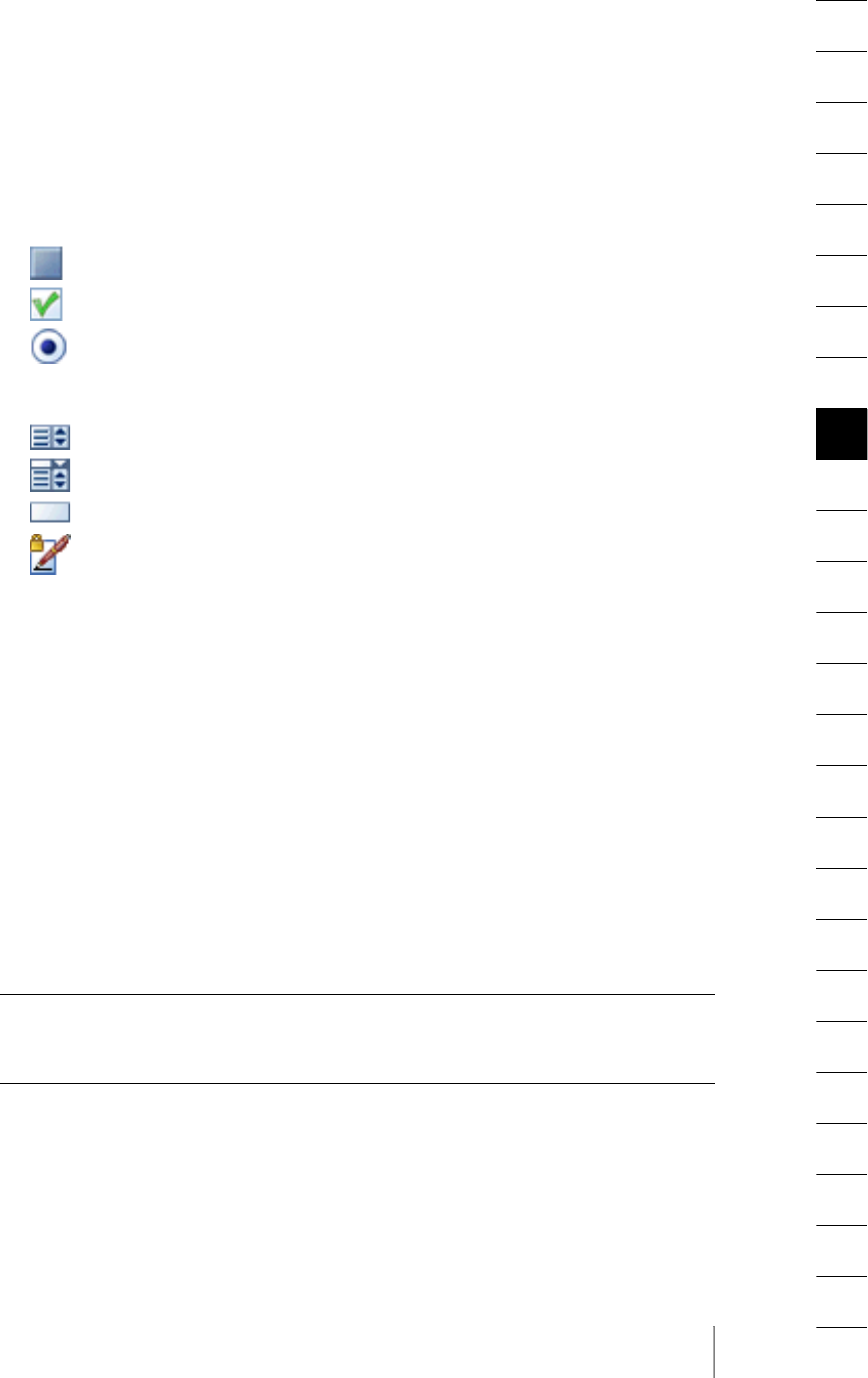
8.9 Hypertext Functions 287
name (Hypertext string) The form field name, possibly prefixed with the name(s) of
one or more groups which have been created with PDF_create_fieldgroup( ). Group names
must be separated from each other and from the field name by a period ».« character.
Field names must be unique on a page, and must not end in a period ».« character.
len (C binding only) Length of text (in bytes) for UCS-2 strings. If len = 0 a null-termi-
nated string must be provided.
type The field type, which must be one of the following:
>pushbutton
>checkbox
>radiobutton. The name must be prefixed with a group name since radio but-
tons must always belong to a group. For all other field types group membership is
optional.
>listbox
>combobox
>textfield
>signature
optlist An option list specifying the field’s properties according to Table 8.50. String
options will be interpreted as hypertext strings or text strings as noted in the table.
Details The tab order of the fields on the page (the order in which they receive the focus when
the tab key is pressed) is determined by the order of calls to PDF_create_field( ). It can not
be modified afterwards.
In Acrobat it is possible to assign a format (number, percentage, etc.) to text fields.
However, this is not specified in the PDF reference, but implemented with custom Java-
Script. You can achieve the same effect by attaching JavaScript actions to the field which
refers to the predefined (but not standardized) JavaScript functions in Acrobat. See Sec-
tion 3.4.2, »Formatting Options for Text Fields«, page 74, for an example and more infor-
mation.
Scope page
PDF/X In all PDF/X modes form fields are only allowed if they are positioned completely out-
side of the BleedBox (or TrimBox/ArtBox if no BleedBox is present).
C++ Java void create_fieldgroup(String name, String optlist)
Perl PHP PDF_create_fieldgroup(resource p, string name, string optlist)
Cvoid PDF_create_fieldgroup(PDF *p, const char *name, int len, const char *optlist)
Create a form field group subject to various options.
name (Hypertext string) The name of the form field group, which may in turn be pre-
fixed with the name of another group. Field groups can be nested to an arbitrary level.
Group names must be separated with a period ».« character. Group names must be
unique within the document, and must not end in a period ».« character.

288 Chapter 8: API Reference for PDFlib, PDI, and PPS
Table 8.50 Options for field properties with PDF_create_field( ) and PDF_create_fieldgroup( )
option type explanation
action action list List of field actions for one or more of the following events. The activate event is
allowed for all field types, the other events are not allowed for type=pushbutton,
checkbox, and radiobutton (default: empty list):
activate Actions to be performed when the field is activated.
keystroke JavaScript actions to be performed when the user types into a text
field or combo box, or modifies the selection in a scrollable list box.
format JavaScript actions to be performed before the field is formatted to
display its current value. This allows the field’s value to be modified
before formatting.
validate JavaScript actions to be performed when the field’s value is changed.
This allows the new value to be checked for validity.
calculate JavaScript actions to be performed in order to recalculate the value of
this field when the value of another field changes.
enter Actions to be performed when the mouse enters the field’s area.
exit Actions to be performed when the mouse exits the field’s area.
down Actions to be performed when the mouse button is pressed inside the
field’s area.
up Actions to be performed when the mouse button is released inside the
field’s area (this is typically used to activate a field).
focus Actions to be performed when the field receives the input focus.
blur Actions to be performed when the field loses the input focus.
alignment keyword Alignment of text in the field: left, center, right. Default: left
background-
color
bordercolor
color Color of the field background or border. Supported color spaces: none, gray, rgb,
cmyk. Default: none
borderstyle keyword Style of the field border, which is one of solid, beveled, dashed, inset, underline.
Default: solid
button-
layout
keyword (Only for type=pushbutton) The position of the button caption relative to the
button icon, provided both have been specified: below, above, right, left, overlaid.
Default: right
buttonstyle keyword (Only for type=radiobutton and checkbox) Specifies the symbol to be used for the
field: check, cross, diamond, circle, star, square. Default: check
calcorder integer (Only used if the field has a JavaScript action for the calculate event) Specifies the
calculation order of the field relative to other fields. Fields with smaller numbers
will be calculated before fields with higher numbers. Default: 10 plus the
maximum calcorder used on the current page (and 10 initially)
caption content
string
(Only for type=pushbutton; one of the caption or icon options must be supplied
for push buttons) The caption text which will be visible when the button doesn’t
have input focus. Default: none
captiondown content
string
(Only for type=pushbutton) The caption text which will be visible when the
button is activated. Default: none
caption-
rollover
content
string
(Only for type=pushbutton) The caption text which will be visible when the
button has input focus. Default: none
charspacing float (Not for type=radiobutton and checkbox) The character spacing for text in the
field in units of the current user coordinate system. Default: 0
comb boolean (Only for type=textfield; PDF 1.5) If true and the multiline, fileselect, and password
options are false, and the maxchar option has been supplied with an integer
value, the field will be divided into a number of equidistant subfields (according to
the maxchar value) for individual characters. Default: false
commit-
onselect
boolean (Only for type=listbox and combobox; PDF 1.5) If true, an item selected in the list
will be committed immediately upon selection. If false, the item will only be
committed upon exiting the field. Default: false

8.9 Hypertext Functions 289
currentvalue (various) (Not for type=pushbutton and signature) The field’s initial value. Type and default
depend on the field type:
checkbox, radiobutton
(string) Arbitrary string other than Off means that the button is
activated; Acrobat 6 shows erratic behavior if itemname is specified
and/or unisonselect is true. The string Off means that the button is
deactivated. This option should be set for the first button. Default: Off
textfield, combobox
(content string) Contents of the field. Default: empty
listbox (list of integers) Indices of the selected items within itemtextlist.
Default: none
dasharray list of floats (Only for borderstyle=dashed). The lengths of dashes and gaps for a dashed
border in default units (see PDF_setdash( )). Default: 3 3
defaultvalue (various) (For type=textfield or combobox this option has type content string) The field’s
value after a reset action. Types and defaults are the same as for the currentvalue
option. Exception: for listboxes only a single integer value is allowed.
display keyword Visibility on screen and paper: visible, hidden, noview, noprint. Default: visible
editable boolean (Only for type=combobox) If true, the currently selected text in the box can be
edited. Default: false
exportable boolean The field will be exported when a SubmitForm action happens. Default: true
fieldwarning boolean If true, non-fatal exceptions will be thrown for field options without any effect. If
false, they will be silently ignored. Default: true
fileselect boolean (Only for type=textfield) If true, the text in the field will be treated as a file name.
Default: false
fillcolor color Fill color for text. Supported color spaces: gray, rgb, cmyk. Default: gray 0 (=black)
fitmethod keyword (Only for type=pushbutton) The method of placing a template provided with the
icon, icondown, and iconrollover options within the button (default: meet):
auto same as meet if the template fits into the button, otherwise clip
nofit same as clip
clip template will not be scaled, but clipped at the field border
meet template will be scaled proportionally so that it fits into the button
slice same as meet
entire template will be scaled so that it fully fits into the button
font font handle (Required except for type=radiobutton and checkbox which always use ZapfDing-
bats). Specifies the font to be used for the field. The following options must have
been set in the corresponding call to PDF_load_font( ): embedding (with the ex-
ception of core fonts which need not be embedded), nosubsetting, noautocidfont.
Only the following encodings are allowed: 8-bit encodings, Unicode CMaps,
builtin
fontsize float or
keyword
The font size in user coordinates. If the keyword auto is supplied instead of a float
value Acrobat will determine the font size automatically. Default: auto
highlight keyword Highlight mode of the field when the user clicks on it: none, invert, outline, push.
Default: invert
hypertext-
encoding
keyword Specifies the encoding for the name parameter (see Section 4.5.4, »String Hand-
ling in non-Unicode-capable Languages«, page 98). An empty string is equivalent
to unicode. Default: the value of the global hypertextencoding parameter
hypertext-
format
keyword Set the format for the name parameter. Possible values are bytes, utf8, utf16,
utf16le, utf16be, and auto. Default: the value of the hypertextformat parameter
icon template
handle1(Only for type=pushbutton; one of the caption or icon options must be supplied
for push buttons) The handle for a template which will be visible when the button
doesn’t have input focus. Default: none
Table 8.50 Options for field properties with PDF_create_field( ) and PDF_create_fieldgroup( )
option type explanation

290 Chapter 8: API Reference for PDFlib, PDI, and PPS
icondown template
handle1(Only for type=pushbutton) The handle for a template which will be visible when
the button is activated. Default: none
iconrollover template
handle1(Only for type=pushbutton) The handle for a template which will be visible when
the button has input focus. Default: none
itemname hypertext
string
(Only for type=radiobutton and checkbox; must be used if the export value is not
a Latin 1 string) Export value of the field. Item names for multiple radio buttons in
a group may be identical. Acrobat 6: Checkboxes within a group which have the
same item name will be switched on or off simultaneously, even if they are
located on separate pages. Default: field name
item-
namelist
hypertext
string
(Only for type=listbox and combobox) Export values of the list items. Multiple
items may have the same export value. Default: none
itemtextlist list of
content
strings
(only for type=listbox and combobox, and required in these cases) Text contents
for all items in the list. If both itemnamelist and itemtextlist are specified both
must contain the same number of strings.
linewidth integer Line width of the field border in default units (=points). Default: 1
locked boolean If true, the field properties cannot be edited in Acrobat. Default: false
maxchar integer or
keyword
(Only for type=textfield) The upper limit for the number of text characters in the
field, or the keyword unlimited if there is no limit. Default: unlimited
multiline boolean (Only for type=textfield) If true, text will be wrapped to multiple lines if required.
Default: false
multiselect boolean (Only for type=listbox) If true, multiple items in the list can be selected. Default:
false
orientate keyword Orientation of the contents within the field rectangle: north, west, south, east.
Default: north
password boolean (Only for type=textfield) If true, the text will be simulated with bullets or asterisks
upon input. Default: false
position list of floats (Only for type=pushbutton) Relative position of a template provided with the
icon... options within the button, specified as a percentage. Default: 50 50
readonly boolean If true, the field does not allow any input. Default: false
required boolean If true, the field must contain a value when the form is submitted. Default: false
richtext boolean (Only for type=textfield; PDF 1.5) Allow rich text formatting. If true, the fontsize
must not be 0, and fillcolor must not use color space cmyk. Default: false
scrollable boolean (Only for type=textfield) If true, text will be moved to the invisible area outside
the field if the text doesn’t fit into the field. If false, no more input will be accepted
when the text fills the full field. Default: true
sorted boolean (Only for type=listbox and combobox) If true, the contents of the list will be
sorted. Default: false
spellcheck boolean (Only for type=textfield and combobox) If true, the spell checker will be active in
the field. Default: true
strokecolor color Stroke color for text. Supported color spaces: gray, rgb, cmyk. Default: gray 0
(=black).
submitname hypertext
string
(Recommended only for type=pushbutton) URL-encoded string of the Internet
address to which the form will be submitted. Default: None
taborder integer Specifies the tab order of the field relative to other fields. Fields with smaller
numbers will be reached before fields with higher numbers. Default: 10 plus the
maximum tabcorder used on the current page (and 10 initially); the result of this
default is that the creation order will specify the tab order.
Table 8.50 Options for field properties with PDF_create_field( ) and PDF_create_fieldgroup( )
option type explanation

8.9 Hypertext Functions 291
len (C binding only) Length of text (in bytes) for UCS-2 strings. If len = 0 a null-termi-
nated string must be provided.
optlist An option list specifying field properties according to Table 8.50 and Table 8.51.
Details Field groups are useful for mirroring the contents of a field in one or more other fields.
If the name of a field group is provided as prefix for a field name created with PDF_
create_field( ), the new field will be part of this group. All field property options provided
in the optlist for a group will be inherited by all fields belonging to this group.
Scope page, document
toggle boolean (Only for type=radiobutton) If true, a radio button within a group can be activa-
ted and deactivated by clicking. If false, it can only be activated by clicking, and
deactivating by clicking another button. Default: false
tooltip hypertext
string
The text visible in the field’s tooltip. For radio buttons and groups Acrobat will al-
ways use the tooltip of the first button in the group, others will be ignored. De-
fault: none
topindex integer (Only for type=listbox) Index of the first visible entry. The first item has index 0.
Default: 0
unisonselect boolean (Only for type=radiobutton; PDF 1.5) If true, radio buttons with the same field
name or item name will be selected simultaneously. Default: false
user-
coordinates
boolean If false, field coordinates will be expected in the default coordinate system (see
Section 3.2.1, »Coordinate Systems«, page 57); otherwise the current user
coordinate system will be used. Default: the value of the global usercoordinates
parameter
1. Templates for icons can be created with the PDF_begin_template( ) function; if the icon consists of an image only you can
create the template by supplying the option to PDF_load_image( ).
Table 8.51 Additional options for field properties with PDF_create_fieldgroup( )
option type explanation
fieldtype keyword Type of the fields contained in the group: mixed, pushbutton, checkbox, radio-
button, listbox, combobox, textfield, or signature. Unless fieldtype=mixed the
group may only contain fields of the specified type. If a particular fieldtype has
been specified for the group, the current value is displayed in all contained fields
simultaneously, even if the fields are located on separate pages. If fieldtype=radio-
button the option unisonselect must be supplied. The options itemtextlist, item-
namelist, currentvalue and defaultvalue must be specified in the field group
options, and not in the individual fields’ options. Default: mixed
Table 8.50 Options for field properties with PDF_create_field( ) and PDF_create_fieldgroup( )
option type explanation

292 Chapter 8: API Reference for PDFlib, PDI, and PPS
8.9.5 Bookmarks
C++ Java int create_bookmark(String text, String optlist)
Perl PHP int PDF_create_bookmark(resource p, string text, string optlist)
Cint PDF_create_bookmark(PDF *p, const char *text, int len, const char *optlist)
Create a bookmark subject to various options.
text (Hypertext string) Contains the text of the bookmark. The maximum length of
text is 255 single-byte characters (8-bit encodings), or 126 Unicode characters. However, a
practical limit of 32 characters for text is recommended.
len (Only for the C binding.) Length of text (in bytes) for UCS-2 strings. If len = 0 a null-
terminated string must be provided.
optlist An option list specifying the bookmark’s properties according to Table 8.52.
Returns A handle for the generated bookmark, which may be used with the parent option in sub-
sequent calls.
Details This function adds a PDF bookmark with the supplied text. Unless the destination option
has been specified the bookmark will point to the current page (or the last page if used
in document scope, or the first page if used before the first page).
Creating bookmarks sets the openmode option of PDF_begin/end_document( ) to
bookmarks unless another mode has explicitly been set.
Scope document, page
Table 8.52 Options for PDF_create_bookmark( )
option type explanation
action action list List of bookmark actions for the following event (default: GoTo action with the
target specified in the destination option):
activate Actions to be performed when the bookmark is activated. All types of
actions are permitted.
destination option list An option list specifying the bookmark destination according to Table 8.48.
Actions will be dominant over this option. Default: {type fitwindow page 0} if
destination, destname, and action are absent.
destname hypertext
string
The name of a destination which has been defined with PDF_add_nameddest( ).
Destination or destname actions will be dominant over this option.
fontstyle keyword Specifies the font style of the bookmark text: normal, bold, italic, bolditalic.
Default: normal
hypertext-
encoding
keyword Specifies the encoding for the supplied text (see Section 4.5.4, »String Handling in
non-Unicode-capable Languages«, page 98). An empty string is equivalent to
unicode. Default: the value of the global hypertextencoding parameter
hypertext-
format
keyword Set the format for the supplied text. Possible values are bytes, utf8, utf16, utf16le,
utf16be, and auto. Default: the value of the global hypertextformat parameter
index integer The index where to insert the bookmark within the parent. Values between 0 and
the number of bookmarks of the same level will be used to insert the bookmark at
that specific location within the parent. The value -1 can be used to insert the
bookmark as the last one on the current level. Default: -1. However, for inserted or
resumed pages bookmarks will be placed as if all pages had been generated in
their physical order (the bookmarks will reflect the page order).

8.9 Hypertext Functions 293
8.9.6 Document Information Fields
C++ Java void set_info(String key, String value)
Perl PHP PDF_set_info(resource p, string key, string value)
Cvoid PDF_set_info(PDF *p, const char *key, const char *value)
Cvoid PDF_set_info2(PDF *p, const char *key, const char *value, int len)
Fill document information field key with value.
key (Name string) The name of the document info field, which may be any of the stan-
dard names, or an arbitrary custom name (see Table 8.53). There is no limit for the num-
ber of custom fields. Regarding the use and semantics of custom document information
fields, PDFlib users are encouraged to take a look at the Dublin Core Metadata element
set.1
value (Hypertext string) The string to which the key parameter will be set. Acrobat im-
poses a maximum length of value of 255 bytes. Note that due to a bug in Adobe Reader 6
for Windows the & character does not display properly in some info strings.
len (Only for PDF_set_info2( ), and only for the C binding.) Length of value (in bytes) for
UCS-2 strings. If len = 0 a null-terminated string must be provided.
Details The supplied info value will only be used for the current document, but not for all docu-
ments generated within the same object scope.
Scope object, document, page. If used in object scope the supplied values will only be used for
the next document.
open boolean If false, subordinate bookmarks will not be visible. If true, all children will be
folded out. Default: false
parent bookmark
handle
The new bookmark will be specified as a subordinate of the bookmark specified in
the handle. If parent=0 a new top-level bookmark will be created. Default: 0
textcolor color Specifies the color of the bookmark text. Supported color spaces: none, gray, rgb.
Default: rgb {0 0 0 } (=black)
1. See dublincore.org
Table 8.53 Values for the document information field key
key explanation
Subject Subject of the document
Title Title of the document
Creator Software used to create the document (as opposed to the Producer of the PDF
output, which is always PDFlib). Acrobat 6 will display this entry as »Application«.
Author Author of the document
Keywords Keywords describing the contents of the document
Table 8.52 Options for PDF_create_bookmark( )
option type explanation

294 Chapter 8: API Reference for PDFlib, PDI, and PPS
8.9.7 Deprecated Hypertext Parameters and Functions
Table 8.54 lists deprecated parameters and values for hypertext features.
int PDF_add_bookmark(PDF *p, const char *text, int parent, int open)
int PDF_add_bookmark2(PDF *p, const char *text, int len, int parent, int open)
Deprecated, use PDF_create_bookmark( ).
void PDF_add_note(PDF *p, double llx, double lly, double urx, double ury,
const char *contents, const char *title, const char *icon, int open)
void PDF_add_note2(PDF *p, double llx, double lly, double urx, double ury,
const char *contents, int contents_len, const char *title, int title_len,
const char *icon, int open)
Deprecated, use PDF_create_annotation( ) with type=Text.
Trapped Indicates whether trapping has been applied to the document. Allowed values are
True, False, and Unknown.
any name other than
CreationDate, Producer, and
ModDate
User-defined field. PDFlib supports an arbitrary number of fields. A custom field
name should only be supplied once. WIth multiple occurrences of the same field
name the last one will be used.
Table 8.54 Deprecated document and hypertext parameters
function key explanation
set_parameter
openaction Use the action option with type=open in PDF_begin/end_document( )
set_parameter
openmode Use the openmode option in PDF_begin/end_document( )
set_parameter
hidetoolbar
hidemenubar
hidewindowui
fitwindow
centerwindow
displaydoctitle
nonfullscreen-
pagemode
direction
viewarea, viewclip
printarea, printclip
Use the viewerpreferences option in PDF_begin/end_document( )
set_parameter
bookmarkdest Use the action, destination, fontstyle, and textcolor options in PDF_
create_bookmark( ) instead.
set_parameter
transition Use the transition option in PDF_begin/end_page_ext( )
set_value duration Use the duration option in PDF_begin/end_page_ext( )
set_parameter
base Use the uri option in PDF_begin/end_document( )
set_parameter
launchlink:parameters
launchlink:operation
launchlink:defaultdir
Use the parameters, operation, and defaultdir options in PDF_create_
action( ).
Table 8.53 Values for the document information field key
key explanation
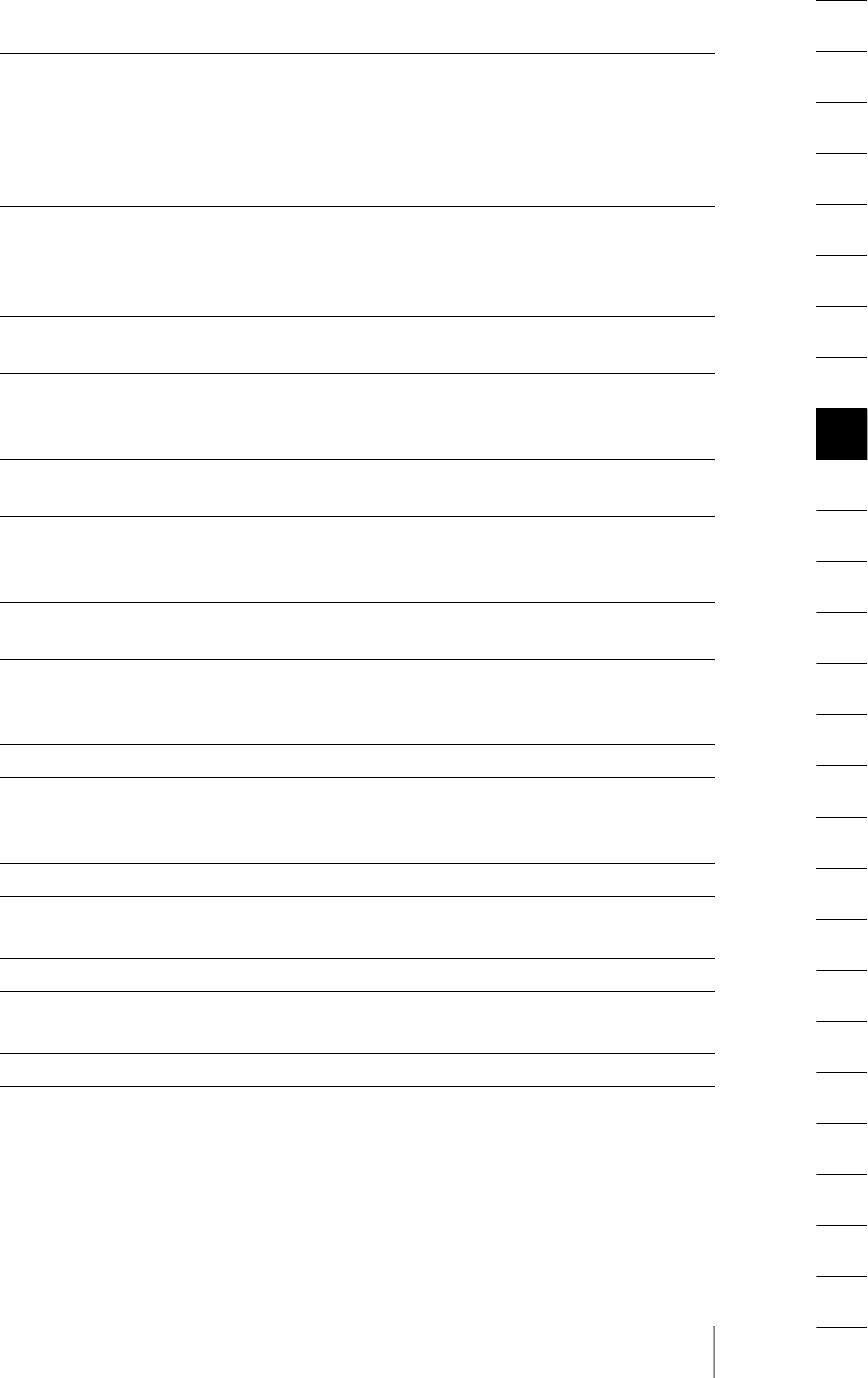
8.9 Hypertext Functions 295
void PDF_attach_file(PDF *p, double llx, double lly, double urx, double ury, const char
*filename, const char *description, const char *author, const char *mimetype,
const char *icon)
void PDF_attach_file2(PDF *p, double llx, double lly, double urx, double ury, const char
*filename, int len, const char *description, int desc_len, const char *author,
int author_len, const char *mimetype, const char *icon)
Deprecated, use PDF_create_annotation( ) with type=FileAttachment. The description pa-
rameter corresponds to the contents option, the author parameter to the title option, and
the icon parameter to the iconname option.
void PDF_add_pdflink(PDF *p, double llx, double lly, double urx, double ury,
const char *filename, int page, const char *optlist)
Deprecated, use PDF_create_action( ) with type=GoToR and PDF_create_annotation( ) with
type=Link.
void PDF_add_locallink(PDF *p,
double llx, double lly, double urx, double ury, int page, const char *optlist)
Deprecated, use PDF_create_action( ) with type=GoTo and PDF_create_annotation( ) with
type=Link.
void PDF_add_launchlink(PDF *p, double llx, double lly, double urx, double ury,
const char *filename)
Deprecated, use PDF_create_action( ) with type=Launch and PDF_create_annotation( ) with
type=Link.
void PDF_add_weblink(PDF *p, double llx, double lly, double urx, double ury, const char *url)
Deprecated, use PDF_create_action( ) with type=URI and PDF_create_annotation( ) with
type=Link.
void PDF_set_border_style(PDF *p, const char *style, double width)
Deprecated, use the borderstyle and linewidth options in PDF_create_annotation( ).
void PDF_set_border_color(PDF *p, double red, double green, double blue)
Deprecated, use the annotcolor option in PDF_create_annotation( ).
void PDF_set_border_dash(PDF *p, double b, double w)
Deprecated, use the dasharray option in PDF_create_annotation( ).

296 Chapter 8: API Reference for PDFlib, PDI, and PPS
8.10 Structure Functions for Tagged PDF
The tagged option in PDF_begin_document( ) must have been set to true in order to gener-
ate Tagged PDF; the lang option must be provided as well.
C++ Java int begin_item(String tag, String optlist)
Perl PHP int PDF_begin_item(resource p, string tag, string optlist)
Cint PDF_begin_item(PDF *p, const char *tag, const char *optlist)
Open a structure element or other content item with attributes supplied as options.
tag The item’s element type according to Table 8.55. It must be one of the standard
structure types allowed for the current PDF compatibility level, or a pseudo tag.
optlist An option list specifying details of the item according to Table 8.56. All inherit-
able settings will be inherited to child elements, and therefore need not be repeated. All
properties of an item must be set here since they cannot be modified later.
Returns An item handle which can be used in subsequent item-related calls.
Details This function generates the document’s structure tree, which is essential for Tagged
PDF. The position of the new element in the structure tree can be controlled with the
parent and index options. Structure elements can be nested to an arbitrary level. Regular
items are not bound to the page where they have been opened, but can be continued on
an arbitrary number of pages.
Scope page for inline items, and for regular items also document; must always be paired with a
matching PDF_end_item( ) call. This function is only allowed in Tagged PDF mode.
Table 8.55 Standard item tags
category tags
grouping Document, Part, Art, Sect, Div, BlockQuote, Caption, TOC, TOCI, Index, NonStruct, Private
paragraph-like P, H, H1-H6 (BLSEs)
list L, LI, Lbl, LBody (BLSEs)
table Table (BLSE), TR, TH, TD, THead1, TBody1, TFoot1
1. Requires PDF 1.5
inline-level Span, Quote, Note, Reference, BibEntry, Code, (ILSEs)
illustration Figure, Formula, Form
Japanese Ruby1 (grouping), RB1, RT1, RP1, Warichu1 (grouping), WT1, WP1
pseudo tags The following tags create items which are not structure elements:
Artifact Specifies an artifact, to be distinguished from real page content.
ASpan (accessibility span; will be written to PDF as Span, but must be distinguished
from the inline-level item Span) Can be used to attach accessibility properties
to content which does not belong to a structure element, or which resembles
only a fraction of a structure element.
ReversedChars
Specifies text in a right-to-left language with reversed character sequence.
This is useful for making Hebrew or Arabic text searchable in Acrobat.
Clip Specifies a marked clipping sequence. This is a sequence containing only
clipping paths or text in rendering mode 7, but no visible graphics or PDF_
save( ) / PDF_restore( ).

8.10 Structure Functions for Tagged PDF 297
Table 8.56 Options for the properties of structure and pseudo tags with PDF_begin_item( )
option type explanation
Alt hypertext
string
(Not for pseudo tags except in PDF 1.5 with ASpan) Alternate description for the
content item. It should be provided for figures, images, etc., which cannot be
recognized as text. Alternate text for images is required for accessibility. If this
option is used in PDF 1.4 mode the inline option must be set to false.
ActualText hypertext
string
(Not for pseudo tags except in PDF 1.5 with ASpan; required for text in fonts which
are not Unicode-compatible) Equivalent replacement text for the content item. It
should be provided for text content which is represented in some non-standard
way, such as ligatures, swash characters in illustrations, drop caps, etc. If this
option is used in PDF 1.4 mode the inline option must be set to false.
artifacttype keyword (Only for tag=Artifact) Identifies the artifact type of the content item: Pagination,
Layout, or Page
Attached keyword list (Only for tag=Artifact and artifacttype=Pagination) A list containing one to four
of the keywords Top, Bottom, Left, and Right
BBox rectangle (Only for tag=Artifact as well as all table and illustration tags; optional, but re-
commended for reflow) The artifact’s bounding box in the default coordinate
system (if usercoordinates is false) or the user coordinate system (if usercoordi-
nates is true). If this option has not been supplied PDFlib will automatically create
a BBox entry for imported images and PDF pages.
ColSpan integer The number of table columns spanned by a cell.
Ehypertext
string
(Not for pseudo tags except ASpan; requires PDF 1.5 for structure tags) Abbrevia-
tion expansion for the content item. It should be provided for explaining abbrevia-
tions and acronyms. Acrobat’s Read Alound feature will consider the expansion
text as a separate word even in the absence of explicit word breaks.
hypertext-
encoding
keyword Specifies the encoding for the supplied text (see Section 4.5.4, »String Handling in
non-Unicode-capable Languages«, page 98). An empty string is equivalent to
unicode. Default: empty string for Unicode-capable language bindings, otherwise
auto.
index integer (Not for pseudo tags) The index at which to insert the element within the parent.
Values between 0 and the current number of children will be used to insert the
item at that specific location within the parent. The value -1 can be used to insert
the element as the last item. Default: -1
inline boolean (Only for tag=ASpan and all inline-level tags) If true, the content item will be
written inline, and no structure element will be created. Default: true
Lang string (Not for pseudo tags except ASpan) Language identifier for the content item in the
format described in Table 8.4 for the lang option. This can be used to override the
document’s dominating language for individual content items.
parent item handle (Not for pseudo tags) The item handle of the element’s parent, as returned by
another call to PDF_begin_item( ). The value 0 refers to the structure tree root. -1
refers to the parent of the least recently opened element on the current page. In
other words, parent=-1 opens a sibling of the current element. Default: -1
RowSpan integer The number of table rows spanned by a cell.
Title hypertext
string
(Not for inline and pseudo tags) Name of the structure element

298 Chapter 8: API Reference for PDFlib, PDI, and PPS
C++ Java void end_item(int id)
Perl PHP PDF_end_item(resource p, int id)
Cvoid PDF_end_item(PDF *p, int id)
Close a structure element or other content item.
id The item’s handle, which must have been retrieved with PDF_begin_item( ).
Details All inline items must be closed before the end of the page. All regular items must be
closed before the end of the document. However, it is strongly recommended to close all
regular items as soon as they are completed to reduce memory consumption. An item
can only be closed if all of its children have been closed before. After closing an item its
parent will become the active item.
Scope page for inline items, and for regular items also document; must always be paired with a
matching PDF_begin_item( ) call. This function is only allowed in Tagged PDF mode.
C++ Java void activate_item(int id)
Perl PHP PDF_activate_item(resource p, int id)
Cvoid PDF_activate_item(PDF *p, int id)
Activate a previously created structure element or other content item.
id The item’s handle, which must have been retrieved with PDF_begin_item( ), and
must not yet have been closed. Pseudo and inline-level items can not be activated.
Details Putting aside a structure element and activating it later gives additional flexibility for
efficiently creating Tagged PDF pages even when there are multiple parallel structure
branches on a page, e.g. with multi-column layouts or text inserts which interrupt the
main text. See Section 7.5.3, »Activating Items for complex Layouts«, page 188, for more
details.
Scope document, page; This function is only allowed in Tagged PDF mode.
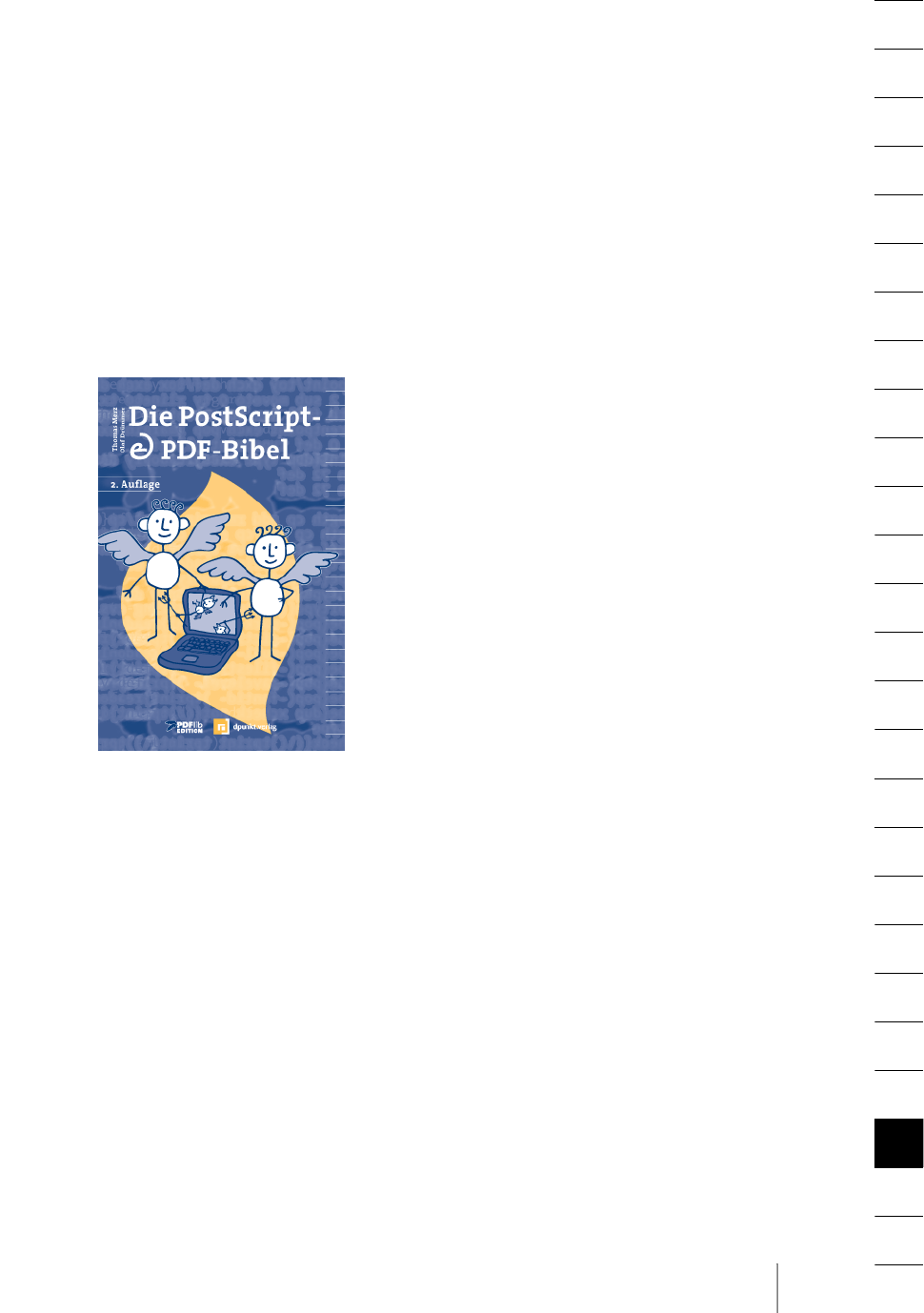
A Literature 299
ALiterature
[1] Adobe Systems Incorporated: PDF Reference, Fourth Edition: Version 1.5. Available as
PDF from partners.adobe.com/asn/tech/pdf/specifications.jsp
[2] The following book by the principal author of PDFlib is only available in German. It
discusses a variety of PostScript, PDF and font-related topics:
Thomas Merz, Olaf Drümmer: Die PostScript- & PDF-Bibel.
Zweite Auflage. ISBN 3-935320-01-9, PDFlib Edition 2002
PDFlib GmbH, 80331 München, Tal 40, fax +49 • 89 • 29 16 46 86
Freely available as PDF from www.pdflib.com
Order printed edition by e-mail via books@pdflib.com

B PDFlib Quick Reference 301
B PDFlib Quick Reference
General Functions
Font Functions
Function prototype page
void PDF_boot(void) 195
void PDF_shutdown(void) 195
PDF *PDF_new(void) 196
PDF *PDF_new2(void (*errorhandler)(PDF *p, int errortype, const char *msg), void* (*allocproc)(PDF *p, size_t size,
const char *caller), void* (*reallocproc)(PDF *p, void *mem, size_t size, const char *caller), void (*freeproc)(PDF *p,
void *mem), void *opaque) 196
void PDF_delete(PDF *p) 197
int PDF_begin_document(PDF *p, const char *filename, int len, const char *optlist) 198
void PDF_begin_document_callback(PDF *p, size_t (*writeproc) (PDF *p, void *data, size_t size), const char
*optlist) 198
void PDF_end_document(PDF *p, const char *optlist) 200
const char * PDF_get_buffer(PDF *p, long *size) 200
void PDF_begin_page_ext(PDF *p, double width, double height, const char *optlist) 203
void PDF_end_page_ext(PDF *p, const char *optlist) 204
void PDF_suspend_page(PDF *p, const char *optlist) 205
void PDF_resume_page(PDF *p, const char *optlist) 206
double PDF_get_value(PDF *p, const char *key, double modifier) 207
void PDF_set_value(PDF *p, const char *key, double value) 207
const char * PDF_get_parameter(PDF *p, const char *key, double modifier) 207
void PDF_set_parameter(PDF *p, const char *key, const char *value) 208
void PDF_create_pvf(PDF *p, const char *filename, int len, const void *data, size_t size, const char *optlist) 208
int PDF_delete_pvf(PDF *p, const char *filename, int len) 209
int PDF_get_errnum(PDF *p) 210
const char *PDF_get_errmsg(PDF *p) 210
const char *PDF_get_apiname(PDF *p) 210
void *PDF_get_opaque(PDF *p) 211
const char *PDF_utf16_to_utf8(PDF *p, const char *utf16string, int len, int *size) 211
const char *PDF_utf8_to_utf16(PDF *p, const char *utf8string, const char *ordering, int *size) 211
Function prototype page
int PDF_load_font(PDF *p, const char *fontname, int len, const char *encoding, const char *optlist) 214
void PDF_setfont(PDF *p, int font, double fontsize) 216
void PDF_begin_font(PDF *p, char *fontname, int reserved, double a, double b, double c, double d, double e,
double f, const char *optlist) 217
void PDF_end_font(PDF *p) 217
void PDF_begin_glyph(PDF *p, char *glyphname, double wx, double llx, double lly, double urx, double ury) 218
void PDF_end_glyph(PDF *p) 218
void PDF_encoding_set_char(PDF *p, const char *encoding, int slot, const char *glyphname, int uv) 219

302 Chapter B: PDFlib Quick Reference
Text Output Functions
Graphics Functions
Function prototype page
void PDF_set_text_pos(PDF *p, double x, double y) 221
void PDF_show(PDF *p, const char *text) 221
void PDF_xshow(PDF *p, const char *text, int len, const double *xadvancelist) 222
void PDF_show_xy(PDF *p, const char *text, double x, double y) 222
void PDF_continue_text(PDF *p, const char *text) 223
void PDF_fit_textline(PDF*p, const char *text, int len, double x, double y, const char *optlist) 223
double PDF_stringwidth(PDF *p, const char *text, int font, double fontsize) 226
int PDF_create_textflow(PDF *p, const char *text, int len, const char *optlist) 227
const char *PDF_fit_textflow(PDF *p, int textflow, double llx, double lly, double urx, double ury, const char
*optlist) 228
double PDF_info_textflow(PDF *p, int textflow, const char *keyword) 230
void PDF_delete_textflow(PDF *p, int textflow) 231
Function prototype page
void PDF_setdash(PDF *p, double b, double w) 236
void PDF_setdashpattern(PDF *p, const char *optlist) 236
void PDF_setflat(PDF *p, double flatness) 237
void PDF_setlinejoin(PDF *p, int linejoin) 237
void PDF_setlinecap(PDF *p, int linecap) 237
void PDF_setmiterlimit(PDF *p, double miter) 238
void PDF_setlinewidth(PDF *p, double width) 238
void PDF_initgraphics(PDF *p) 238
void PDF_save(PDF *p) 239
void PDF_restore(PDF *p) 239
void PDF_translate(PDF *p, double tx, double ty) 240
void PDF_scale(PDF *p, double sx, double sy) 240
void PDF_rotate(PDF *p, double phi) 240
void PDF_skew(PDF *p, double alpha, double beta) 241
void PDF_concat(PDF *p, double a, double b, double c, double d, double e, double f) 241
void PDF_setmatrix(PDF *p, double a, double b, double c, double d, double e, double f) 241
int PDF_create_gstate(PDF *p, const char *optlist) 242
void PDF_set_gstate(PDF *p, int gstate) 243
void PDF_moveto(PDF *p, double x, double y) 243
void PDF_lineto(PDF *p, double x, double y) 243
void PDF_curveto(PDF *p, double x1, double y1, double x2, double y2, double x3, double y3) 244
void PDF_circle(PDF *p, double x, double y, double r) 244
void PDF_arc(PDF *p, double x, double y, double r, double alpha, double beta) 245
void PDF_arcn(PDF *p, double x, double y, double r, double alpha, double beta) 245
void PDF_rect(PDF *p, double x, double y, double width, double height) 245
void PDF_closepath(PDF *p) 246
void PDF_stroke(PDF *p) 246

B PDFlib Quick Reference 303
Color Functions
Image Functions
PDF Import Functions (PDI)
void PDF_closepath_stroke(PDF *p) 246
void PDF_fill(PDF *p) 247
void PDF_fill_stroke(PDF *p) 247
void PDF_closepath_fill_stroke(PDF *p) 247
void PDF_clip(PDF *p) 247
void PDF_endpath(PDF *p) 248
int PDF_define_layer(PDF *p, const char *name, int len, const char *optlist) 248
void PDF_set_layer_dependency(PDF *p, const char *type, const char *optlist) 249
void PDF_begin_layer(PDF *p, int layer) 250
void PDF_end_layer(PDF *p) 250
Function prototype page
void PDF_setcolor(PDF *p, const char *fstype, const char *colorspace, double c1, double c2, double c3, double c4)
251
int PDF_makespotcolor(PDF *p, const char *spotname, int reserved) 252
int PDF_load_iccprofile(PDF *p, const char *profilename, int len, const char *optlist) 253
int PDF_begin_pattern(PDF *p, double width, double height, double xstep, double ystep, int painttype) 255
void PDF_end_pattern(PDF *p) 255
int PDF_shading_pattern(PDF *p, int shading, const char *optlist) 255
void PDF_shfill(PDF *p, int shading) 256
int PDF_shading(PDF *p, const char *shtype, double x0, double y0, double x1, double y1, double c1, double c2,
double c3, double c4, const char *optlist) 256
Function prototype page
int PDF_load_image(PDF *p, const char *imagetype, const char *filename, int len, const char *optlist) 258
void PDF_close_image(PDF *p, int image) 262
void PDF_fit_image(PDF *p, int image, double x, double y, const char *optlist) 262
int PDF_begin_template(PDF *p, double width, double height) 264
void PDF_end_template(PDF *p) 265
void PDF_add_thumbnail(PDF *p, int image) 265
Function prototype page
int PDF_open_pdi(PDF *p, const char *filename, const char *optlist, int len) 266
int PDF_open_pdi_callback(PDF *p, void *opaque, size_t filesize, size_t (*readproc)(void *opaque, void *buffer,
size_t size), int (*seekproc)(void *opaque, long offset), const char *optlist) 267
void PDF_close_pdi(PDF *p, int doc) 268
int PDF_open_pdi_page(PDF *p, int doc, int pagenumber, const char* optlist) 268
void PDF_close_pdi_page(PDF *p, int page) 269
Function prototype page

304 Chapter B: PDFlib Quick Reference
Block Filling Functions (PPS)
Hypertext Functions
Tagged PDF and Structure Functions
void PDF_fit_pdi_page(PDF *p, int page, double x, double y, const char *optlist) 270
int PDF_process_pdi(PDF *p, int doc, int page, const char* optlist) 270
double PDF_get_pdi_value(PDF *p, const char *key, int doc, int page, int reserved) 271
const char * PDF_get_pdi_parameter(PDF *p, const char *key, int doc, int page, int reserved, int *len) 272
Function prototype page
int PDF_fill_textblock(PDF *p, int page, const char *blockname, const char *text, int len, const char *optlist) 274
int PDF_fill_imageblock(PDF *p, int page, const char *blockname, int image, const char *optlist) 275
int PDF_fill_pdfblock(PDF *p, int page, const char *blockname, int contents, const char *optlist) 275
Function prototype page
int PDF_create_action(PDF *p, const char *type, const char *optlist) 278
void PDF_add_nameddest(PDF *p, const char *name, int len, const char *optlist) 281
void PDF_create_annotation(PDF *p, double llx, double lly, double urx, double ury, const char *type, const char
*optlist) 283
void PDF_create_field(PDF *p, double llx, double lly, double urx, double ury, const char *name, int len, const char
*type, const char *optlist) 286
void PDF_create_fieldgroup(PDF *p, const char *name, int len, const char *optlist) 287
int PDF_create_bookmark(PDF *p, const char *text, int len, const char *optlist) 292
void PDF_set_info(PDF *p, const char *key, const char *value) 293
Function prototype page
int PDF_begin_item(PDF *p, const char *tag, const char *optlist) 296
void PDF_end_item(PDF *p, int id) 298
void PDF_activate_item(PDF *p, int id) 298
Function prototype page

B PDFlib Quick Reference 305
Parameters and Values
category function keys
setup
set_parameter
resourcefile, SearchPath, license, licensefile, warning, asciifile, trace, tracefile,
tracemsg
set_value compress
versioning get_value major, minor, revision
get_parameter
version
page get_value pagewidth, pageheight
font
set_parameter
FontAFM, FontPFM, FontOutline, Encoding, fontwarning, kerning, autosubsetting,
autocidfont, textformat, unicodemap
get_parameter
fontname, fontencoding, fontstyle, textformat
set_value subsetlimit, subsetminsize
get_value ascender, capheight, descender, font, fontsize, fontmaxcode, monospace
text set_value leading, textrise, horizscaling, textrendering, charspacing, wordspacing,
italicangle
get_value leading, textrise, horizscaling, textrendering, charspacing, wordspacing, textx,
texty, italicangle
set_parameter
autospace, underline, overline, strikeout, kerning, glyphwarning
get_parameter
underline, overline, strikeout, fontstyle
graphics
set_parameter
fillrule, topdown
get_parameter
scope
get_value currentx, currenty
color
set_parameter
iccwarning, honoriccprofile, ICCProfile, StandardOutputIntent, renderingintent,
preserveoldpantonenames, spotcolorlookup
set_value defaultgray, defaultrgb, defaultcmyk, setcolor:iccprofilegray,
setcolor:iccprofilergb, setcolor:iccprofilecmyk
get_value image:iccprofile, icccomponents
image get_value imagewidth, imageheight, orientation, resx, resy
set_parameter
imagewarning
PDI
get_parameter
pdi
set_parameter
pdiwarning
get_pdi_value
/Root/Pages/Count, /Rotate, version, width, height
CropBox, BleedBox, ArtBox, TrimBox: these must be followed by a slash ’/’
character and one of llx, lly, urx, ury, for example: CropBox/llx
get_pdi_
parameter
filename, /Info/<key>, vdp/Blocks/<blockname>/<propertyname>,
vdp/Blocks/<blockname>/Custom/<propertyname>
hypertext
set_parameter
hypertextformat, hypertextencoding, usercoordinates
get_parameter
hypertextformat

306 Chapter C: Revision History
C Revision History
Date Changes
November 17, 2004 >Minor updates and corrections for PDFlib 6.0.1
>introduced new format for language-specific function prototypes in chapter 8
>added hypertext examples in chapter 3
June 18, 2004 >Major changes for PDFlib 6
January 21, 2004 >Minor additions and corrections for PDFlib 5.0.3
September 15, 2003 >Minor additions and corrections for PDFlib 5.0.2; added block specification
May 26, 2003 >Minor updates and corrections for PDFlib 5.0.1
March 26, 2003 >Major changes and rewrite for PDFlib 5.0.0
June 14, 2002 >Minor changes for PDFlib 4.0.3 and extensions for the .NET binding
January 26, 2002 >Minor changes for PDFlib 4.0.2 and extensions for the IBM eServer edition
May 17, 2001 >Minor changes for PDFlib 4.0.1
April 1, 2001 >Documents PDI and other features of PDFlib 4.0.0
February 5, 2001 >Documents the template and CMYK features in PDFlib 3.5.0
December 22, 2000 >ColdFusion documentation and additions for PDFlib 3.03; separate COM edition
of the manual
August 8, 2000 >Delphi documentation and minor additions for PDFlib 3.02
July 1, 2000 >Additions and clarifications for PDFlib 3.01
Feb. 20, 2000 >Changes for PDFlib 3.0
Aug. 2, 1999 >Minor changes and additions for PDFlib 2.01
June 29, 1999 >Separate sections for the individual language bindings
>Extensions for PDFlib 2.0
Feb. 1, 1999 >Minor changes for PDFlib 1.0 (not publicly released)
Aug. 10, 1998 >Extensions for PDFlib 0.7 (only for a single customer)
July 8, 1998 >First attempt at describing PDFlib scripting support in PDFlib 0.6
Feb. 25, 1998 >Slightly expanded the manual to cover PDFlib 0.5
Sept. 22, 1997 >First public release of PDFlib 0.4 and this manual

Index 307
Index
0-9
16-bit encodings 95
8-bit encodings 89
A
Acrobat plugin for creating blocks 149
action lists 49
Adobe Font Metrics (AFM) 80
AFM (Adobe Font Metrics) 80
alignment (position option) 224
All spot color name 253
alpha channel 136
alphaisshape gstate option 242
annotations 96
antialias option 257
API (Application Programming Interface)
reference 193
ArtBox 60, 271, 273
artificial font styles 106
AS/400 55
ascender 104
ascender parameter 213
asciifile parameter 56, 195
Asian FontPack 108
attachments 96
Author field 293
auto text format 100
autocidfont parameter 86, 87, 213
autospace parameter 219
autosubsetting parameter 87, 213
availability of PDFlib 19
B
baseline compression 135
Bézier curve 244
Big Five 113
bindings 19
BleedBox 60, 271, 273
blendmode gstate option 242
blocks 149
plugin 149
properties 151
BMP 135
builtin encoding 92
byte order mark (BOM) 99
byte text format 100
bytes: see hypertextformat
byteserving 179
C
C binding 24
memory management 27
C++ binding 28
memory management 29
capheight 104
capheight parameter 213
categories of resources 52
CCITT 136
CCSID 89, 91
CFF (Compact Font Format) 77
character metrics 104
character names 81
character references 100
character sets 89
characters per inch 104
charref parameter 219
charspacing parameter 220
Chinese 108, 111, 113
CIE L*a*b* color space 67
CJK (Chinese, Japanese, Korean)
custom fonts 112
standard fonts 108
Windows code pages 113
clip 60
CMaps 108, 111
CMYK color 63
Cobol binding 20
code page
Microsoft Windows 1250-1258 90
Unicode-based 95
color 63
color functions 251
color values in option lists 50
COM (Component Object Model) binding 24
commercial license 10
compress parameter 195
coordinate range 60
coordinate system 57
metric 57
top-down 58
copyoutputintent option 184
core fonts 85
CPI (characters per inch) 104
Creator field 293
CropBox 60, 271, 273
current point 61
currentx and currenty parameter 104, 243
custom encoding 91

308 Index
D
dash pattern for lines 236
default coordinate system 57
defaultgray/rgb/cmyk parameters 69
demo stamp 9
descender 104
descender parameter 213
descriptor 86
document and page functions 197
document information fields 96, 293
downsampling 134
dpi calculations 134
Dublin Core 293
E
EBCDIC 55
ebcdic encoding 90
ebcdicutf8: see hypertextformat
EJB (Enterprise Java Beans) 31
embedded systems 19
embedding fonts 85
encoding 89
CJK 110
custom 91
fetching from the system 89
for hypertext 100
Encoding parameter 213
encryption 176
environment variable PDFLIBRESOURCE 54
error handling 46
API 197
eServer zSeries and iSeries 55
EUDC (end-user defined characters) 113
EUDC fonts 81
Euro character 93
evaluation stamp 9
exceptions 46
explicit graphics state 242
explicit transparency 137
extend0 and extend1 options 257
F
fast Web view 199
features of PDFlib 15
file attachments 96
filename parameter for PDI 272
fill 60
fillrule parameter 246
flatness gstate option 242
font metrics 104
font parameter 213
font style names for Windows 82
font styles 106
font subsetting 87
FontAFM parameter 213
fontencoding parameter 213
fontmaxcode parameter 93, 213
fontname parameter 213
FontOutline parameter 213
FontPFM parameter 213
fonts
AFM files 80
Asian fontpack 108
descriptor 86
embedding 85
glyph names 81
legal aspects of embedding 86
monospaced 104
OpenType 77
PDF core set 85
PFA files 80
PFB files 80
PFM files 80
PostScript 77, 80
resource configuration 51
TrueType 77
Type 1 80
Type 3 (user-defined) fonts 83
Type 3 83
Unicode support 95
user-defined (Type 3) 83
fontsize parameter 213
FontSpecific encoding 92
fontstyle parameter 213
fontwarning parameter 47, 213
form fields: converting to blocks 159
form XObjects 61
function scopes 45
G
gaiji characters 78
GBK 113
GIF 135
glyph id addressing 93
glyphwarning parameter 220
gradients 64
graphics functions 236
graphics state
explicit 242
graphics state functions 236
grid.pdf 57
gstate 256
H
HKS colors 66
honoriccprofile parameter 258
horizontal writing mode 109, 110
horizscaling parameter 220
host encoding 89
host fonts 84
HostFont parameter 213
HTML character references 100
hypertextencoding parameter 100, 278

Index 309
hypertextformat parameter 99, 278
I
IBM eServer 55
ICC-based color 63
icccomponents parameter 254
ICCProfile parameter 254
iccwarning parameter 254
ignoremask 138
image data, re-using 133
image file formats 134
image functions 258
image mask 136, 137
image scaling 134
image:iccprofile parameter 69, 258
imagewarning parameter 134, 258
imagewidth and imageheight parameters 258
implicit transparency 136
import functions for PDF 266
inch 57
in-core PDF generation 55
indexed color 63
info fields 293
Info keys in imported PDF documents 272
inline images 133
invisible text 220
iSeries 55
ISO 10646 95
ISO 15930
180
ISO 8859-2 to -15 90
italicangle parameter 220
J
Japanese 108, 111, 113
Java application servers 31
Java binding 30
EJB 31
javadoc 30
package 30
servlet 31
JFIF 135
Johab 113
JPEG 135
K
kerning 105
kerning parameter 105, 220
Keywords field 293
Korean 108, 111, 113
L
landscape mode 205
language bindings: see bindings
layers and PDI 142
leading 104
leading parameter 220
license parameter 195
licensefile parameter 195
licensing PDFlib and PDI 9
line spacing 104
linearized PDF 179, 199
linecap gstate option 242
linejoin gstate option 242
lines
†ashed and patterned 236
linewidth gstate option 242
list values in option lists 49
LWFN (LaserWriter Font) 80
M
Mac OS
UPR configuration 52
macroman encoding 89, 90
macroman_euro encoding 94
major parameter 195
makepsres utility 51
mask 137
masked 137
masking images 136
masterpassword 177
MediaBox 60
memory management
API 197
in C 27
in C++ 29
memory, generating PDF documents in 55
metadata 201
metric coordinates 57
metrics 104
millimeters 57
minor parameter 195
mirroring 240
miterlimit gstate option 242
monospace parameter 213
monospaced fonts 104
multi-page image files 139
N
N option 257
nagger 9
.NET binding 33
None spot color name 253
note annotations 96
O
opacityfill gstate option 242
opacitystroke gstate option 242
OpenType fonts 77
optimized PDF 179
option lists 48
orientation parameter 258

310 Index
outline text 220
output accuracy 60
output condition for PDF/X 181
output intent for PDF/X 181
overline parameter 107, 221
overprintfill gstate option 242
overprintmode gstate option 242
overprintstroke gstate option 242
P
page 139
page descriptions 57
page formats 59
page size formats 59
limitations in Acrobat 59
page-at-a-time download 179
PANTONE colors 65
parameter handling functions 207
passwords 176
path 60
painting and clipping 246
patterns 63
PDF import functions 266
PDF import library (PDI) 140, 266
PDF/X 180
importing PDF documents 183
output intent 271
PDF_activate_item() 298
PDF_add_nameddest() 281
PDF_add_thumbnail() 265
PDF_arc() 245
PDF_arcn() 245
PDF_begin_document() 198
PDF_begin_font() 217
PDF_begin_glyph() 218
PDF_begin_item() 296
PDF_begin_layer() 250
PDF_begin_page_ext() 203, 204
PDF_begin_pattern 255
PDF_begin_template() 264
PDF_boot() 195
PDF_circle() 244
PDF_clip() 247
PDF_close_image() 262
PDF_close_pdi() 268
PDF_close_pdi_page() 269
PDF_closepath() 246
PDF_closepath_fill_stroke() 247
PDF_closepath_stroke() 246
PDF_concat() 241
PDF_continue_text() 223
PDF_continue_text2() 223
PDF_create_action() 278
PDF_create_annotation() 283
PDF_create_bookmark() 292
PDF_create_field() 286
PDF_create_fieldgroup() 287
PDF_create_gstate() 242
PDF_create_pvf() 208
PDF_create_textflow() 227
PDF_curveto() 244
PDF_define_layer() 248
PDF_delete() 197
PDF_delete_dl( ) 197
PDF_delete_pvf() 209
PDF_delete_textflow() 231
PDF_encoding_set_char() 219
PDF_end_document() 200
PDF_end_font() 217
PDF_end_glyph() 218
PDF_end_item() 298
PDF_end_layer() 250
PDF_end_pattern() 255
PDF_end_template() 265
PDF_endpath() 248
PDF_fill() 247
PDF_fill_imageblock() 275
PDF_fill_pdfblock() 275
PDF_fill_stroke() 247
PDF_fill_textblock() 274
PDF_fit_image() 262
PDF_fit_pdi_page() 270
PDF_fit_textflow() 228
PDF_fit_textline() 223
PDF_get_apiname() 210
PDF_get_buffer() 55, 200
PDF_get_errmsg() 210
PDF_get_errnum() 210
PDF_get_opaque() 211
PDF_get_parameter() 207
PDF_get_pdi_parameter() 272
PDF_get_pdi_value() 271
PDF_get_value() 207
PDF_info_textflow() 230
PDF_initgraphics() 238
PDF_lineto() 243
PDF_load_font() 214
PDF_load_iccprofile() 253
PDF_load_image() 258
PDF_makespotcolor() 252
PDF_moveto() 243
PDF_new() 196
PDF_new_dl( ) 196
PDF_new2() 196
PDF_open_pdi() 266
PDF_open_pdi_callback() 267
PDF_open_pdi_page() 268
PDF_process_pdi() 270
PDF_rect() 245
PDF_restore() 239
PDF_resume_page() 206
PDF_rotate() 240
PDF_save() 239
PDF_scale() 240
PDF_set_gstate() 243
PDF_set_info() 293

Index 311
PDF_set_info2() 293
PDF_set_layer_dependency() 249
PDF_set_parameter() 54, 208
PDF_set_text_pos() 221
PDF_set_value() 207
PDF_setcolor() 251
PDF_setdash() 236
PDF_setdashpattern() 236
PDF_setflat() 237
PDF_setfont() 216
PDF_setlinecap() 237
PDF_setlinejoin() 237
PDF_setlinewidth() 238
PDF_setmatrix() 241
PDF_setmiterlimit() 238
PDF_shading() 256
PDF_shading_pattern() 255
PDF_shfill() 256
PDF_show() 221
PDF_show_xy() 222
PDF_show_xy2() 222
PDF_show2() 221
PDF_shutdown() 195
PDF_skew() 241
PDF_stringwidth() 226
PDF_stringwidth2() 226
PDF_stroke() 246
PDF_suspend_page() 205
PDF_translate() 240
PDF_utf16_to_utf8() 211
PDF_utf8_to_utf16() 211
PDF_xshow() 222
PDFlib
features 15
program structure 45
PDFlib Personalization Server 149, 274
pdflib.upr 54
PDFLIBRESOURCE environment variable 54
pdfx parameter for PDI 184, 273
PDI 140, 266
pdi parameter 272
pdiusebox 141
pdiusebox parameter 273
pdiwarning parameter 142, 273
Perl binding 33
permissions 176, 177
PFA (Printer Font ASCII) 80
PFB (Printer Font Binary) 80
PFM (Printer Font Metrics) 80
PHP binding 34
platforms 19
plugin for creating blocks 149
PNG 134, 137
Portable Document Format Reference Manual
299
PostScript fonts 77, 80
PPS (PDFlib Personalization Server) 149, 274
preserveoldpantonenames parameter 251
print_glyphs.ps 81
Printer Font ASCII (PFA) 80
Printer Font Binary (PFB) 80
Printer Font Metrics (PFM) 80
program structure 45
Python binding 38
R
r0 and r1 options 257
raster images
functions 258
raw image data 136
REALbasic binding 39
rectangles in option lists 49
reflection 240
rendering intents 67
renderingintent gstate option 242
renderingintent option 67
renderingintent parameter 258
resource category 52
resourcefile parameter 54, 195
resx and resy parameter 258
RGB color 63
Rotate entry in imported PDF pages 271
rotating objects 58
RPG binding 39
S
S/390 55
scaling images 134
scope parameter 195
scopes 45
SearchPath parameter 53, 195, 213
security 176
separation color space 63
servlet 31
setcolor
iccprofilegray/rgb/cmyk parameters 69
setcolor:iccprofilegray/rgb/cmyk parameters 254
setup functions 195
shadings 64
Shift-JIS 113
skewing 241
smooth blends 64
smoothness gstate option 242
soft mask 136
SPIFF 135
spot color (separation color space) 63, 64
spotcolorlookup parameter 251
sRGB color space 68
standard output 198
standard output conditions for PDF/X 182
standard page sizes 59
StandardOutputIntent parameter 254
stdout channel 198
strikeout parameter 107, 221
stroke 60

312 Index
strokeadjust gstate option 242
structure of PDFlib programs 45
style names for Windows 82
Subject field 293
subpath 60
subscript 104, 220
subsetlimit parameter 88, 213
subsetminsize parameter 87, 213
superscript 104, 220
Symbol font 92
system encoding support 89
T
Tcl binding 43
templates 61
temporary disk space requirements 179
text functions 213
text metrics 104
text position 104
text variations 104
textformat parameter 99, 220
textknockout gstate option 242
textrendering parameter 107, 220
textrise parameter 220
textx and texty parameter 104, 110, 220
thumbnails 265
TIFF 135
multi-page 139
Title field 293
top-down coordinates 58
topdown parameter 58, 198
ToUnicode CMap 79, 95
trace, tracefile, tracemsg parameters 195
transparency 136
problems with 138
Trapped field 294
TrimBox 60, 271, 273
TrueType fonts 77
TTC (TrueType Collection) 81, 112
TTF (TrueType font) 77
Type 1 fonts 80
Type 3 (user-defined) fonts 83
U
U+XXXX encoding 95
UHC 113
underline parameter 107, 221
Unicode 95
unicodemap parameter 96, 213
units 57
UPR (Unix PostScript Resource) 51
file format 52
file searching 54
user space 57
usercoordinates parameter 57, 278
user-defined (Type 3) fonts 83
userpassword 177
utf16: see hypertextformat
utf16be: see hypertextformat
utf16le: see hypertextformat
utf8: see hypertextformat
V
value: see parameter
Variable Data Processing with blocks 149, 274
vdp/Block parameters for PDI 273
vdp/blockcount parameter for PDI 273
version parameter 195
version parameter for PDI 273
vertical writing mode 109, 110
W
warning parameter 47, 209
web-optimized PDF 179, 199
width and height parameters for PDI 271
winansi encoding 90
wordspacing parameter 221
writing modes 109, 110
X
XMP metadata 201
XObjects 61
Z
ZapfDingbats font 92
zSeries 55
